America’s Monthly Newspaper For Civil War Enthusiasts

Gettysburg 156th Anniversary Reenactment Held July 5, 6 & 7 at Gettysburg Movie Site


GETTYSBURG, Penn.—The weather can be hot, humid, and rainy in Gettysburg during July and this year’s Gettysburg Reenactment experienced all those weather elements. The good news is that the event was able to proceed all three days, but the bad news was the days were hot and humid and on Friday, Saturday, and Sunday nights the skies opened up with 7 total inches of rain making turf conditions dicey and demanding additional logistical efforts by the organizers. A windstorm accompanied Saturday evening`s rain further frustrating participants and organizers.
As usual, event organizer
The Gettysburg Anniversary Committee (GAC) provided very good responses and resources, bringing in stone and additional equipment to assist reenactors on deteriorating turf. Registration was easy, ice, water, and firewood were in abundance, port-ajohns were cleaned regularly, and there were numerous camp visits by event Security and EMS. By the end of the weekend, event organizers reported very few heat related incidents despite the high
temperatures. GAC reported that approximately 1,000 pre-registered reenactors, 22 artillery pieces, and approximately 70 cavalry, plus walk-ons attended the event.
The Gettysburg Movie Site, just south of Gettysburg, is next to the Gettysburg National Military Park and the Eisenhower National Historic site. It is a favorite of reenactors and visitors. The views are excellent for looking at the historic Sachs Mill Covered Bridge, The Round Tops, the South Mountain range, and the Longstreet Tower. This year, each army camped on different sides of the battlefield but were still in fairly close proximity to the battlefield and sutlers.
There was a nice array of sutlers and the Living History Camp organized by Kirk Davis and his living history crew at Gettysburg is always a crowd pleaser. A large living history tent was filled to capacity with programs like Ladies
Cavalry Clash
At Hunterstown. (All Gettysburg 156th
by Paul S. Witt) - Buford’s Delay was immediately followed by Portrait of Hell–Barlow’s Knoll. On Saturday the action turned to Stemming The Tide—East Cemetery Hill.
On Sunday, Carnage IncarnateArmistead At The Wall, portrayed a segment of Pickett’s Charge.
Period Dress, actor Patrick Falci talking about his role in the movie Gettysburg, Civil War music, the Generals, Civil War religion, and even an actual Civil War wedding. A highlight of the Living History Camp was Rev. Alan Farley’s original, restored U.S. Christian Commission coffee wagon. Despite not being hot coffee weather, hundreds of cups were still handed out.
Each morning there was a cavalry battle followed by a review
where the spectators got to see the mounted troops and their horses up close and personal. In a unique occurrence, Friday’s afternoon battle involved two first day scenarios back to back. Inch By Inch
The Federal Volunteer Brigade under General Jay Henson and Longstreet’s Corps under General Terry Shelton commanded the event. All involved seemed to work well together and with the event organizers. There was a bit of an unexpected twist when Henson was called home Thursday due a family emergency leaving command to his senior staff. From every report, including Longstreet’s, FVB senior staff performed an exemplary job of rising to the occasion the rest of the weekend.
This event was the Gettysburg Anniversary Committee’s 25
Year Anniversary and 26th event. GAC Operations Manager Randy Phiel complimented the Schroeder and Shields families for being gracious hosts and allowing the reenactment on their property. He said that plans for next year’s event have not been finalized.
Before the final battle on Sunday GAC presented donations to the SGT MAC Wreath Project, Gettysburg Battlefield Preservation Association Daniel Lady Farm, the Land Conservancy Adams County, and to Rev. Farley’s Reenactors Mission For Jesus Christ for restoring one of three remaining boilers on the coffee wagon that needs put back into full working order. Last year GAC made a donation for restoring the wagon
N Vol. 45, No. 9 48 Pages, September 2019 $3.50 Civil
News
CW
War
Inside this issue: 47 – Advertiser Index 28 – Ask the Appraiser 8 – Black Powder, White Smoke 36 – Book Reviews 40 – Critic’s Corner 34 – Emerging Civil War 45 – Events Section 20 – The Graphic War 22 – Inspection, ARMS! 41 – Small Talk-Trivia 16 – The Source 10 – The Unfinished Fight 26 – This And That 14 – Through The Lens H Gettysburg . . . . . . . . . . . . see page 4
during Hampton
photos
A review after each cavalry battle is always a crowd pleaser with lots of photos and enjoyed by the mounted troops as well.
Civil War News
Published by Historical Publications LLC

520 Folly Road, Suite 25 PMB 379, Charleston, SC 29412
800-777-1862 • Facebook.com/CivilWarNews
mail@civilwarnews.com • www.civilwarnews.com
Advertising: 800-777-1862 • ads@civilwarnews.com
Jack W. Melton Jr. C. Peter & Kathryn Jorgensen
Publisher Founding Publishers
Editor: Lawrence E. Babits, Ph.D.
Advertising, Marketing & Assistant Editor: Peggy Melton
Columnists: John Banks, Craig Barry, Joseph Bilby, Matthew Borowick, Stephen Davis, Stephanie Hagiwara, Gould Hagler, Tim Prince, Salvatore Cilella, John Sexton, Michael K. Shaffer

Editorial & Photography Staff: Greg Biggs, Joseph Bordonaro, Sandy Goss, Gordon L. Jones, Michael Kent, Bob Ruegsegger, Gregory L. Wade, Joan Wenner, J.D.
Book Review Editor: Stephen Davis, Ph.D., Cumming, Ga.
Civil War News (ISSN: 1053-1181) Copyright © 2019 by Historical
Publications LLC is published 12 times per year by Historical Publications LLC, 520 Folly Road, Suite 25 PMB 379, Charleston, SC 29412. Monthly. Business and Editorial Offices: 520 Folly Road, Suite 25 PMB 379, Charleston, SC 29412, Accounting and Circulation
Offices: Historical Publications LLC, 520 Folly Road, Suite 25 PMB 379, Charleston, SC 29412. Call 800-777-1862 to subscribe.
Periodicals postage paid at U.S.P.S. 131 W. High St., Jefferson City, MO 65101.
POSTMASTER: Send address changes to: Historical Publications LLC 520 Folly Road Suite 25 PMB 379 Charleston, SC 29412
Display advertising rates and media kit on request. The Civil War News is for your reading enjoyment. The views and opinions expressed herein are those of its authors, readers and advertisers and they do not necessarily reflect the official policy or position of Historical Publications, LLC, its owners and/or employees.
P UBLISHERS :
Please send your book(s) for review to:
CWN Book Review Editor, Stephen Davis
3670 Falling Leaf Lane, Cumming, GA 30041-2087
Email cover image to bookreviews@civilwarnews.com

Civil War News cannot assure that unsolicited books will be assigned for review. We donate unsolicited, unreviewed books to libraries, historical societies and other suitable repositories. Email Dr. Davis for eligibility before mailing.
ADVERTISING INFO:
Email us at ads@civilwarnews.com Call 800-777-1862
MOVING?
Contact us to change your address so you don’t miss a single issue. mail@civilwarnews.com • 800-777-1862
SUBSCRIPTION RATES
U.S. Subscription rates are $38.50/year, $66/2 years, digital only $29.95, add digital to paper subscription for only $10/year more. Subscribe at www.CivilWarNews.com
Civil War News
Military Recognition
For the November issue, we will recognize subscribers who are currently in the military and those who have served their country. Please send in your name, branch of service, rank, position, and if you were in a war, conflict, years served, etc.

For example: Carson Jenkins U.S. Army, E-6, Fire Control Supervisor, Vietnam War era, (1969-1974)
Email is the best way to submit your entries, but if you don’t have access to email, please mail it to us so that your information reaches us by the September 20th deadline. Email the information to ads@civilwarnews.com.
A Thank You
Dear Mrs. Melton, You may very well be quite busy, but I wanted to take the liberty of catching a moment of your time to express my gratitude for your help on the phone yesterday, assisting me with accessing the digital content of your amazing Civil War News website. Your kindness and patience with me was a fine and pleasant example of true “Southern Hospitality”. Again, a BIG THANK YOU.
Dave Dyer
Dear Ms. Joan Wenner, I wanted to thank you for taking the time to review my book The Fight for the Old North State, in the August issue of Civil War News. I’m thrilled that you enjoyed it. I particularly like the George Howard quote about the potato patch! The book has not received a lot of attention (my Amazon buyers appear to be allergic to reviews) so I was happy to see your write-up.
Hampton Newsome
Digital Issues of CWN are available by subscription alone or with print plus archives from 2012 to present at www.CivilWarNews.com
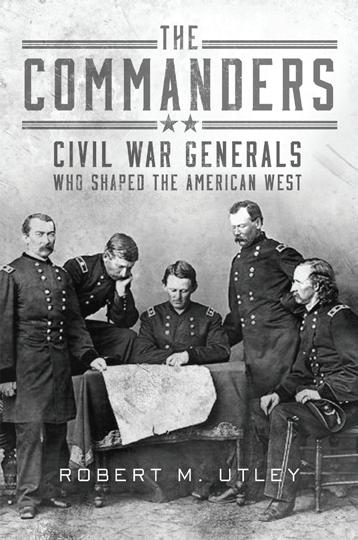
e Hardest Lot of Men
e ird Minnesota Infantry in the Civil War
By Joseph C. Fitzharris
In this fi rst full account of the ird Minnesota Volunteer Infantry, Joseph C. Fitzharris brings to light the true story long obscured by the official histories and illustrates myriad aspects of a nineteenth-century soldier’s life—enlisted and commissioned alike—from recruitment and training to the rigors of active duty.

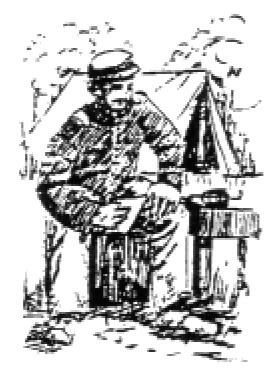
$34.95 HARDCOVER 336 PAGES · 20 B&W ILLUS. e Commanders
Civil War Generals Who Shaped the American West
By Robert M. Utley
Taking a novel approach to the military history of the post–Civil War West, distinguished historian Robert M. Utley examines the careers of seven military leaders who served as major generals for the Union in the Civil War, then as brigadier generals in command of the U.S. Army’s western departments.
$29.95 HARDCOVER · 256 PAGES · 13 B&W ILLUS. AND 10 MAPS
UNIVERSITY OF OKLAHOMA PRESS 1 800 848 6224 EXT.1 · OUPRESS.COM CONNECT WITH US
THE UNIVERSITY OF OKLAHOMA IS AN EQUAL OPPORTUNITY INSTITUTION. WWW.OU.EDU/EOO
Letters to the Editor: Please email: mail@civilwarnews.com
Civil War News
520 Folly Road, Suite 25 PMB 379 Charleston, SC 29412
2 Civil War News September 2019
CIVIL WAR AUTOGRAPHS LETTERS • DIARIES • STAMPS • CURRENCY Price List Request • Top Price Paid for Quality Material BRIAN & MARIA GREEN P.O. Box 1861N Kernersville, NC 27285-1816 (336)993-5100 • (336)993-1801 www.shop.bmgcivilwar.net bmgcivilwar@triad.rr.com Deadlines for Advertising or Editorial Submissions is the 20th of each month. Email: ads@civilwarnews.com Subscribe online at CivilWarNews.com




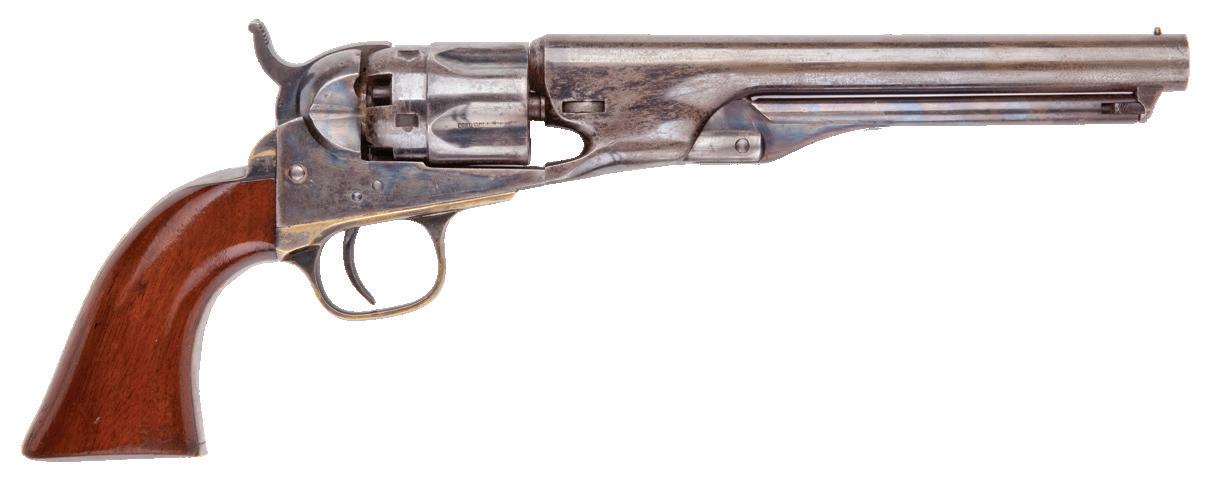

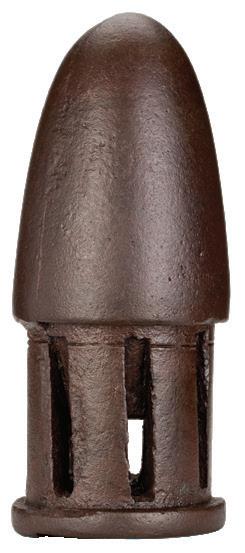


Mike Kent & Associates, LLC • PO Box 685 • Monroe, GA 30655 770-630-7296 • Mike@MKShows.com • www.MKShows.com Military Collectible & Gun & Knife Shows Presents The Finest Williamson County Ag Expo Park 4215 Long Lane Franklin, TN 37064 Dec. 7 & 8, 2019 Middle TN (Franklin) Civil War Show Richmond International Raceway 600 East Laburnum Avenue Richmond, VA 23222 Nov. 16 & 17, 2019 Capital of the Confederacy (Richmond) Civil War Show Promoters of Quality Shows for Shooters, Collectors, Civil War and Militaria Enthusiasts Exchange Park Fairgrounds 9850 Highway 78 Ladson, SC 29456 Sept. 7 & 8, 2019 Charleston Gun & Knife Show Bring this page with you and receive $1 off admission Myrtle Beach Convention Center 2101 North Oak Street
Beach, SC 29579 Nov. 2 & 3, 2019 Myrtle Beach Gun & Knife Show WNC Ag Center 1301 Fanning Bridge Road
NC Oct. 5 & 6, 2019 Asheville Gun & Knife Show
Myrtle
Fletcher,
H Gettysburg
. . . . . . . . . . . from page 1 wheels by an Amish craftsman in Ohio. Phiel said that in GAC’s 25 year history, they have hosted over 100,000 reenactors, made history come alive for over 500,000 visitors from around the globe, employed hundreds of community members, and greatly benefited the Gettysburg economy. He said he could not be prouder of this community organization and the staff, as well as the many reenactors over the years who have worked with GAC to make this event happen for reenactors, visitors, and the community.
The N-SSA is America’s oldest and largest Civil War shooting sports organization. Competitors shoot original or approved reproduction muskets, carbines and revolvers at breakable targets in a timed match. Some units even compete with cannons and mortars. Each team represents a specific Civil War regiment or unit and wears the uniform they wore over 150 years ago. Dedicated to preserving our history, period firearms competition and the camaraderie of team sports with friends and family, the N -SSA may be just right for you.


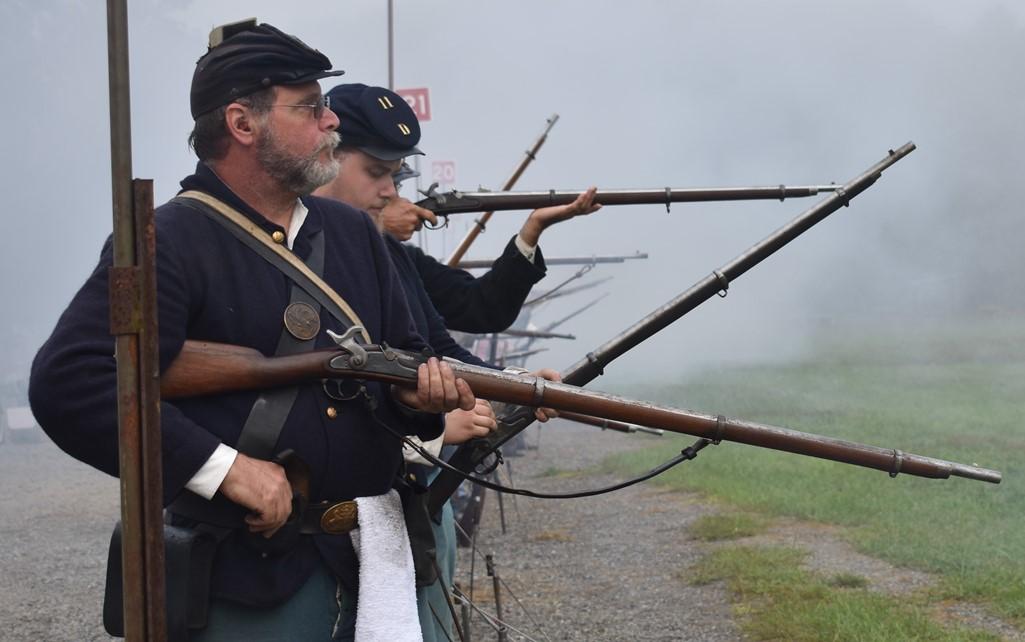
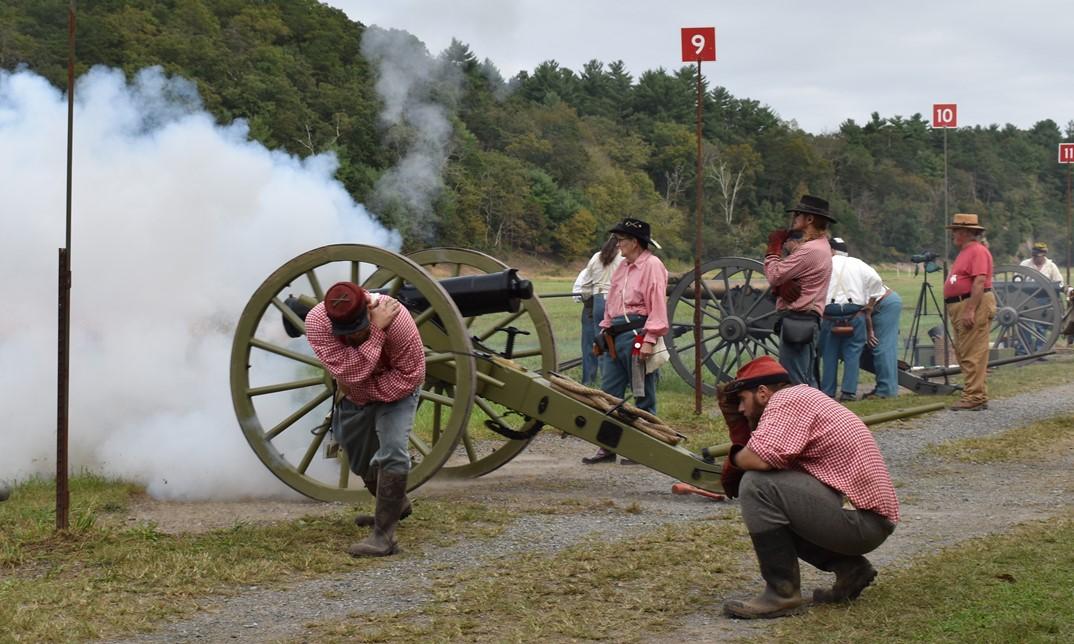
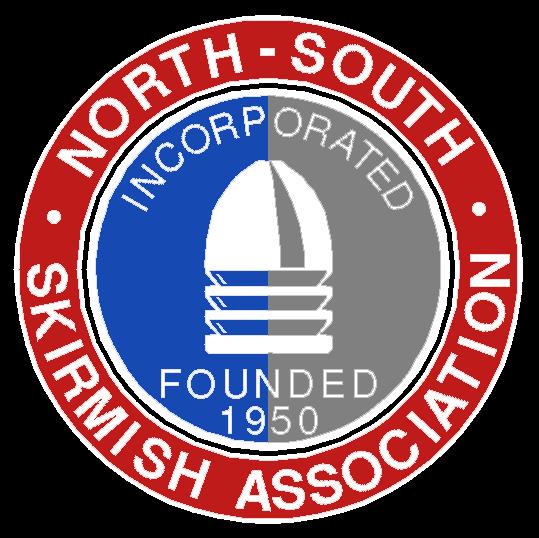
For more information visit us online at www.n-ssa.org.

restored U.S.
wagon attracted lots of attention in the living history camp where free hot coffee was provided. The wagon could produce up to 180 gallons of coffee per hour.

REINFORCEMENTS
MAKE ALL THE DIFFERENCE!!!

Nobody even comes close to building a Civil War tent with as much attention to reinforcing the stress areas as Panther. Our extra heavy duty reinforcing is just one of the added features that makes Panther tentage the best you can buy! PANTHER Catalog - $2 Web: www.pantherprimitives.com

160 pages of the best selection of historical reenactment items from Medieval era to Civil War era. Includes over 60 pages on our famous tents and a 4-color section. Your $2 cost is refundable with your first order.


4 Civil War News September 2019
The final shot of the Mortar Competition each day results in a fiery conclusion that get everyone’s attention.
Cavalry clash during Hampton At Hunterstown.
A portion of the Federal camp silhouetted by the historic Sachs Mill Covered Bridge and The Round Tops.
SEND for copy TODAY The Best Tents in History P.O. Box 32N Normantown WV 25267 (304) 462-7718
Rev. Alan Farley’s
Christian Commission coffee

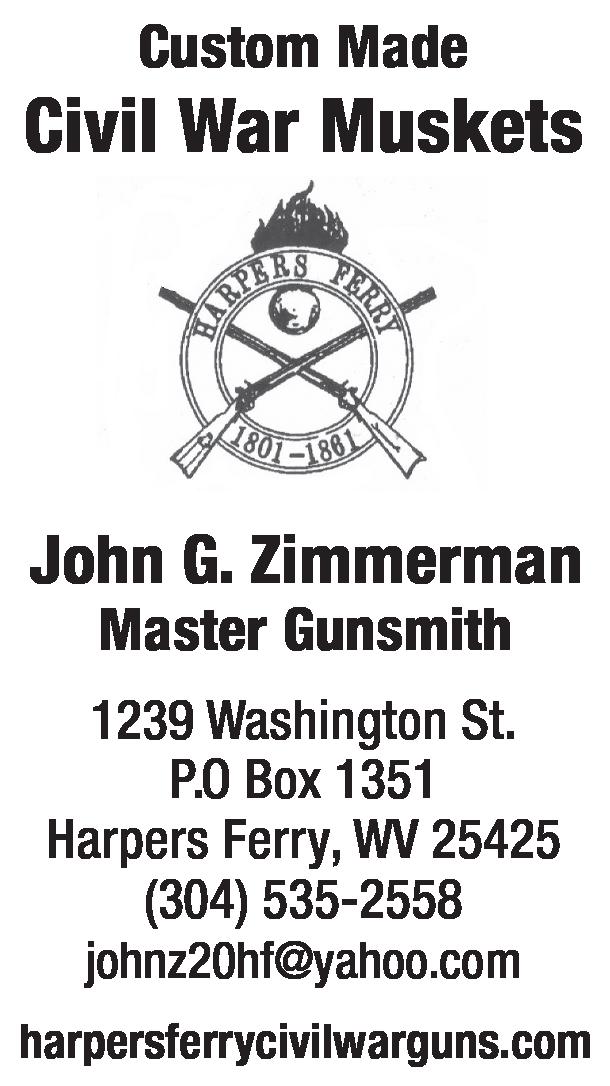




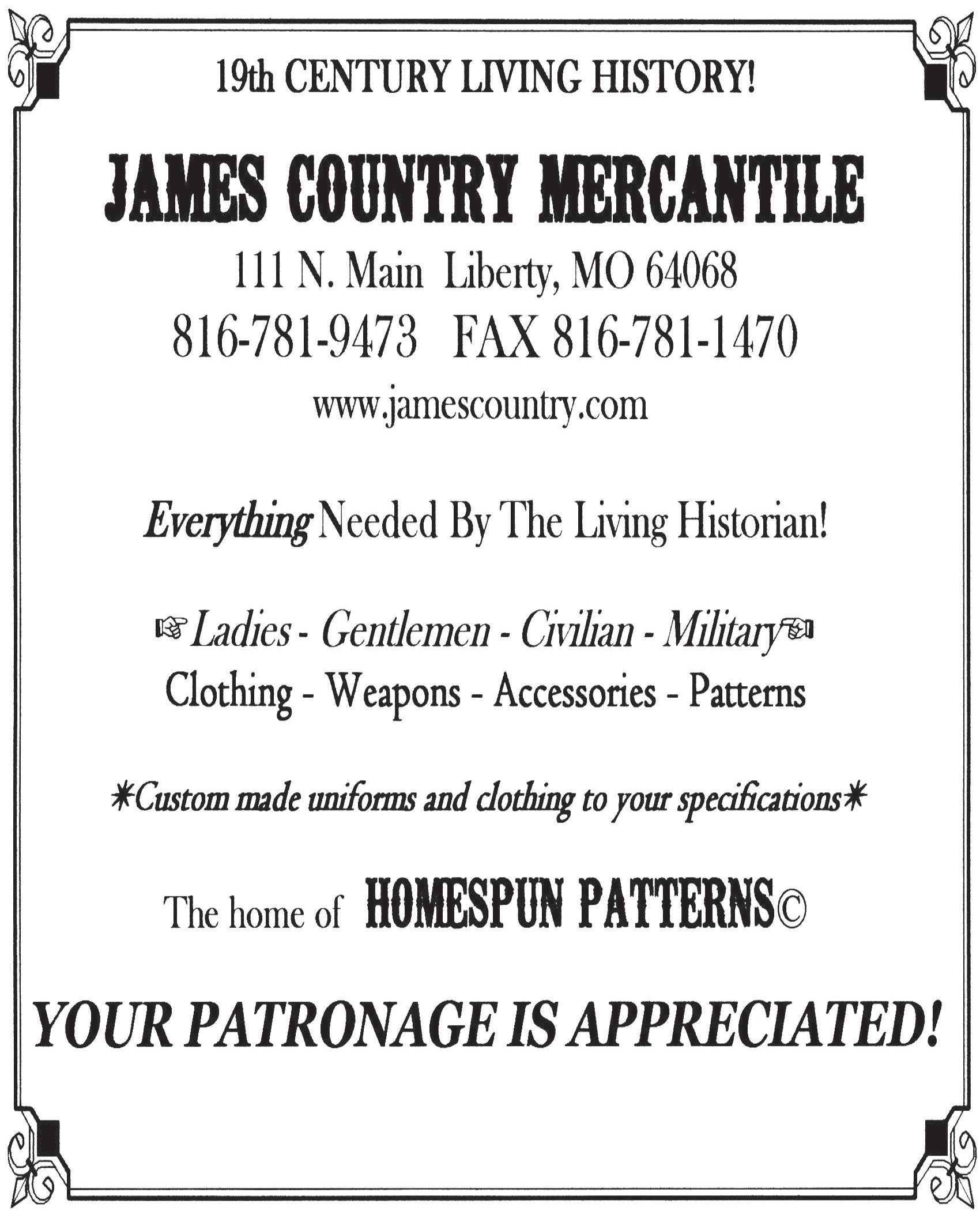
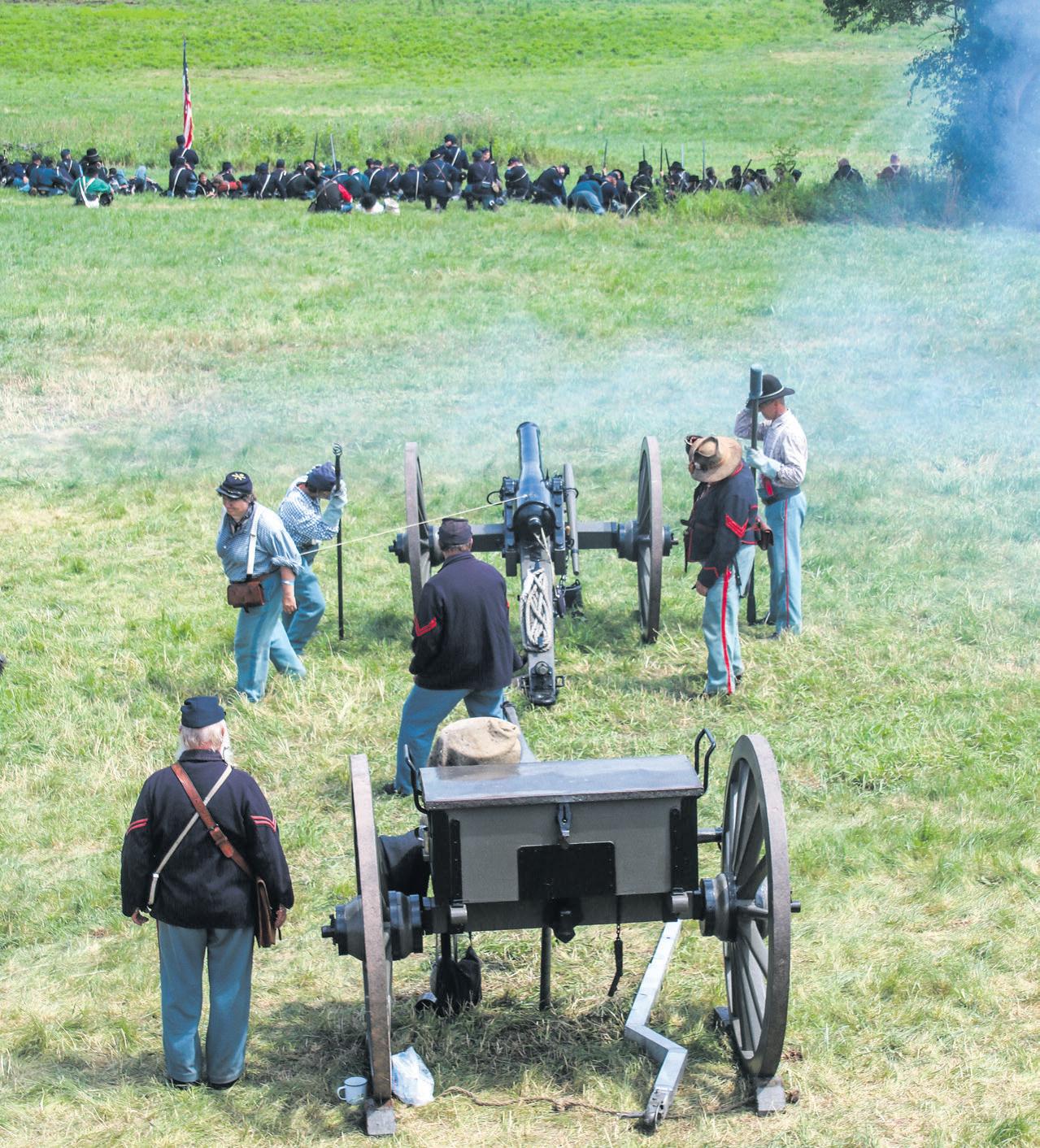
5 September 2019 Civil War News
A portion of the Confederate advance on the Federal line at the wall.
Armistead leads his troops to the wall during Carnage Incarnate.
Military veterans being recognized before the battle begins.
Mounted cavalry review.
Left: Actor Patrick Falci fills the living history tent as he relates his role both on and off camera in making the movie Gettysburg.
Federals awaiting the Confederate charge after the 22 cannon artillery barrage on Sunday.



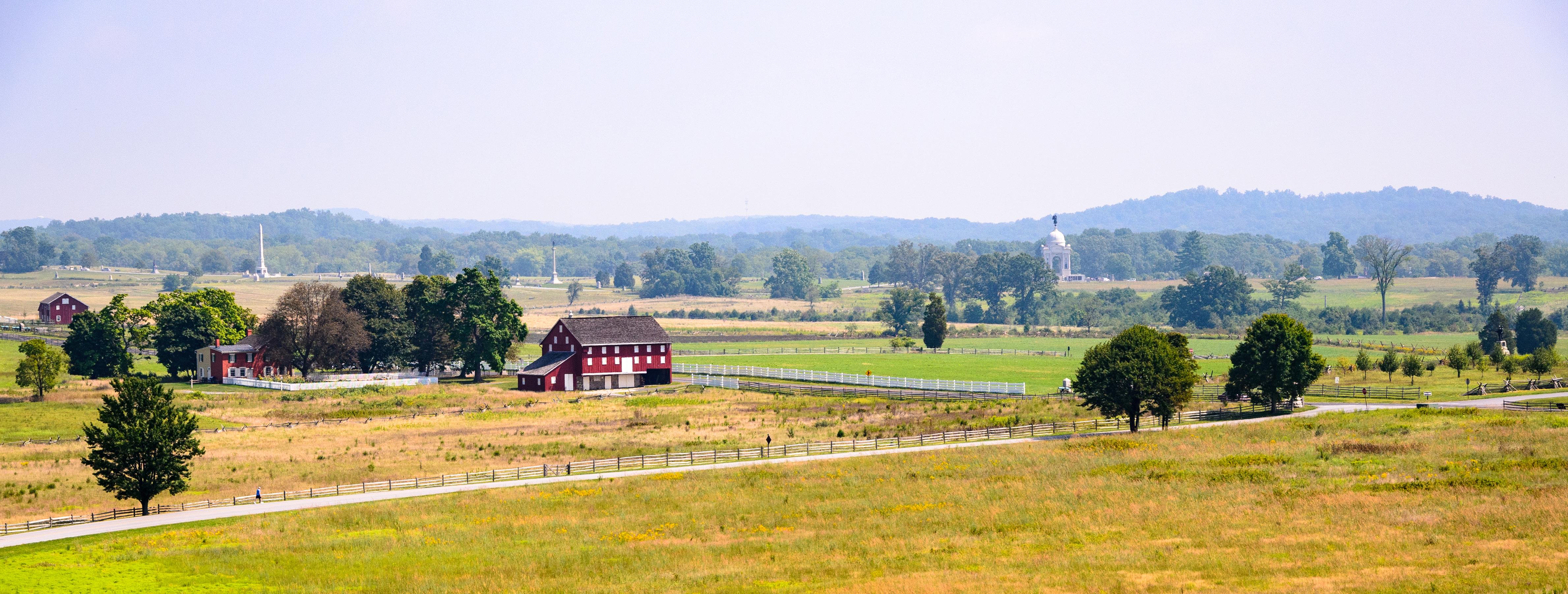
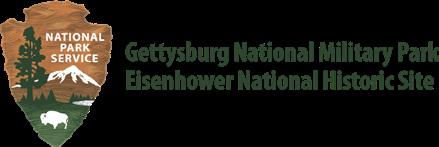

6 Civil War News September 2019 CivilWarShop.com Established 1981 Buy – Sell – Trade Certified Appraisal Services Life Member, Company of Military Historians International Society of Appraisers Life Member, NC Division, SCV Federal Firearms Licensed Dealer 3910 US Hwy. 70 East • New Bern, NC 28560 (252) 636-3039 • civilwarshop@gmail.com devotion We take increased to the cause they gave the last -President Abraham Lincoln for which full measure of devotion Preservation. Stewardship. Education. · Preservation of land, monuments and artifacts · Operation of the world-class, LEED-Gold Certified Museum & Visitor Center · Education about the relevance of Gettysburg today Maintaining our cultural resources for future generations. GettysburgFoundation.org | (866) 889-1243

Carbine Folklore at Gettysburg
During the Civil War Centennial, when historians were less aware of historical firearms, it was commonly believed that Brigadier General John Buford’s horse soldiers were armed with Spencer repeating carbines when they conducted their holding action on July 1 at Gettysburg. This was, however, not the case. As dawn broke on July 1, 1863, Buford’s Division was deployed on ridgelines north and west of the little Pennsylvania town. Buford’s job was to seek out the Army of Northern Virginia while shielding his own Army of the Potomac from prying enemy eyes. That morning both armies, primed for a climactic, perhaps war-ending, fight, were converging via roads that radiated out like spokes from a Gettysburg hub.

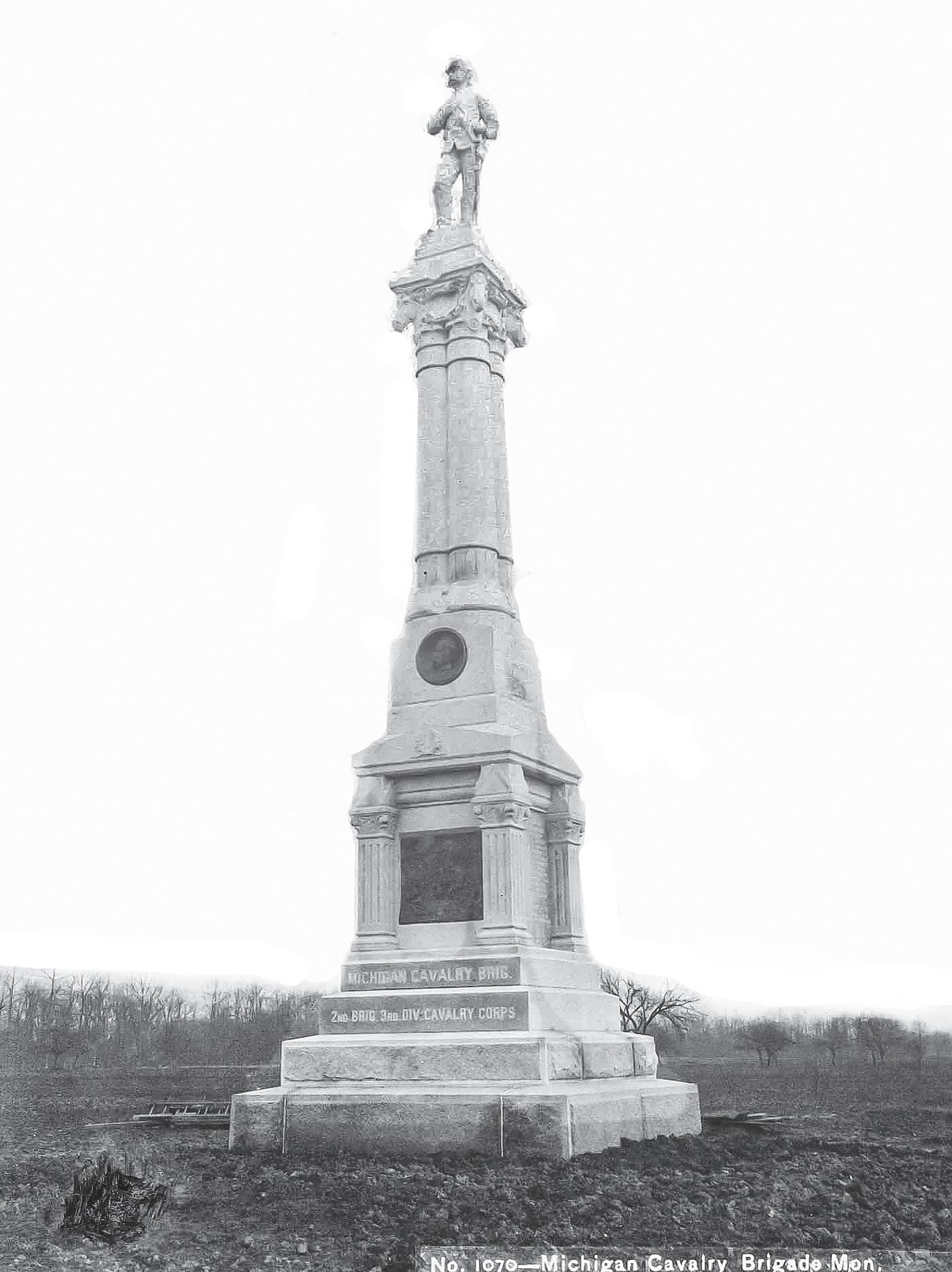
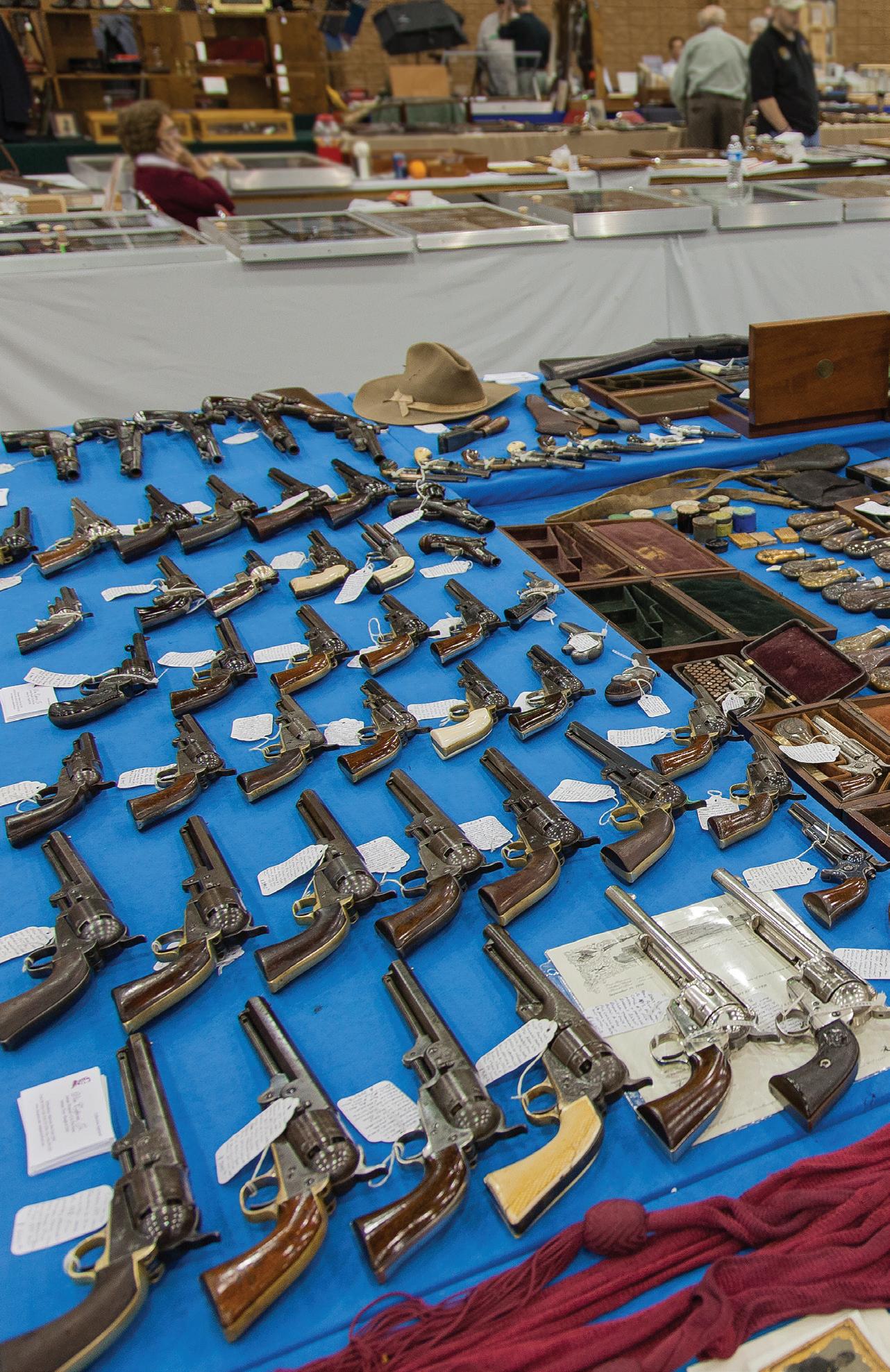

As Confederate infantry warily approached his position, 2nd Lieutenant Marcellus E. Jones grabbed his sergeant’s Sharps carbine, dropped the lever, slipped a linen cartridge into the open chamber, closed the action, cocked the hammer, and capped the nipple. Using a fence rail for a rest, he jacked up the sights to what he thought was an appropriate height for the range and squeezed off a shot at the advancing enemy some 600 yards away. The bullet hit the ground in a puff of dust halfway to the Rebs. Jones had miscalculated the range but accomplished what he set out to do. Forever after the lieutenant, of Milton, Ill., and the 8th Illinois Cavalry, could claim the honor of firing the first shot of perhaps the greatest of American battles, Gettysburg.
By mid-1863, the Union
Vin Caponi Historic Antiques
popular carbine, used a combustible .54 caliber linen cartridge; it replaced a paper cartridge that allowed loose powder to migrate into places where it could explode. The Gallager chambered a .52 caliber brass cartridge that had to be manually extracted after firing, often with great difficulty, and was variously described as
by Joe Bilby
cavalry was indeed a heavily armed force, with each trooper carrying a breech loading carbine, saber, and cap and ball revolver. At first glance, dismounted horse soldiers, with their faster-firing shoulder arms backed up by six shot handguns, might seem to have an advantage over infantrymen armed with single shot muzzle loading rifle muskets. However, Civil War cavalry did not engage in standup fights with infantry, as the mounted arm’s tactical role was quite different than that of foot soldiers. In addition to not being schooled in infantry tactics, a dismounted cavalry force immediately lost a quarter of its potential firepower, as every fourth man was required to hold horses behind the skirmish line.
Breech loading carbines had long been preferred for cavalry, as they could be fired and reloaded on horseback. Such use in the Civil War was rare, however, as carbines were primarily used for dismounted skirmishing. In addition to the Sharps, men in Buford’s cavalry screen were equipped with a variety of carbines, including the Burnside, Gallager, Smith, Merrill, and Sharps and Hankins. These guns fired .50 to .54 caliber cartridges with 40 to 45 grain powder charges. All, save the Smith and Merrill, were operated by lowering a trigger guard lever to expose the chamber for loading.
All but the Sharps and Hankins used semi-fixed ammunition, a cartridge containing powder and bullet with priming supplied by a percussion cap placed on an external nipple. Civil War carbines used a variety of non-interchangeable specialty cartridges of different shapes and materials, some of which acted as breech seals, although the Sharps and Merrill depended on mechanical breech sealing. This ammunition diversity proved an ordnance officer’s nightmare, especially when, as was often the case, a unit was armed with several varieties of weapons.
The sturdy and accurate Sharps, the most common and
“inefficient,” and “not equal to a bar of iron,” in field evaluation reports by the men it was issued to.



The .54 caliber Burnside, as durable and accurate as the Sharps, fired a tapered brass cartridge loaded in a breechblock chamber that tilted upward and featured a primitive bump extractor

8 Civil War News September 2019
Vin Caponi, Jr. 18 Broadway Malverne, NY 11565
516-593-3516
516-353-3250
http://www.vincaponi.com We carry a very large inventory of Colt and Civil War firearms including muskets, carbines, rifles and accoutrements. Our inventory of historic antiques and firearms begin at the early collectors level and range all the way up to the advanced collector and investors level.
Store:
Cell:
rampantcolt@aol.com
Michigan Cavalry Brigade monument located east of Gettysburg on East Cavalry Battlefield. This monument was dedicated by the State of Michigan on June 12, 1889. (Sue Boardman Collection)
Unidentified soldier in Union uniform with Burnside carbine, revolver, and sword. (Liljenquist Family Collection of Civil War Photographs, Library of Congress)
that jarred the fired case loose on opening the action. The .50 caliber Smith employed a rubber cartridge that expanded to seal the chamber on firing, and then shrank for easy manual removal. A well-regarded gun during the war, it has remained so in original and reproduction form among carbine shooters in the NorthSouth Skirmish Association. The .54 caliber Merrill used a paper cartridge that, like the Sharps
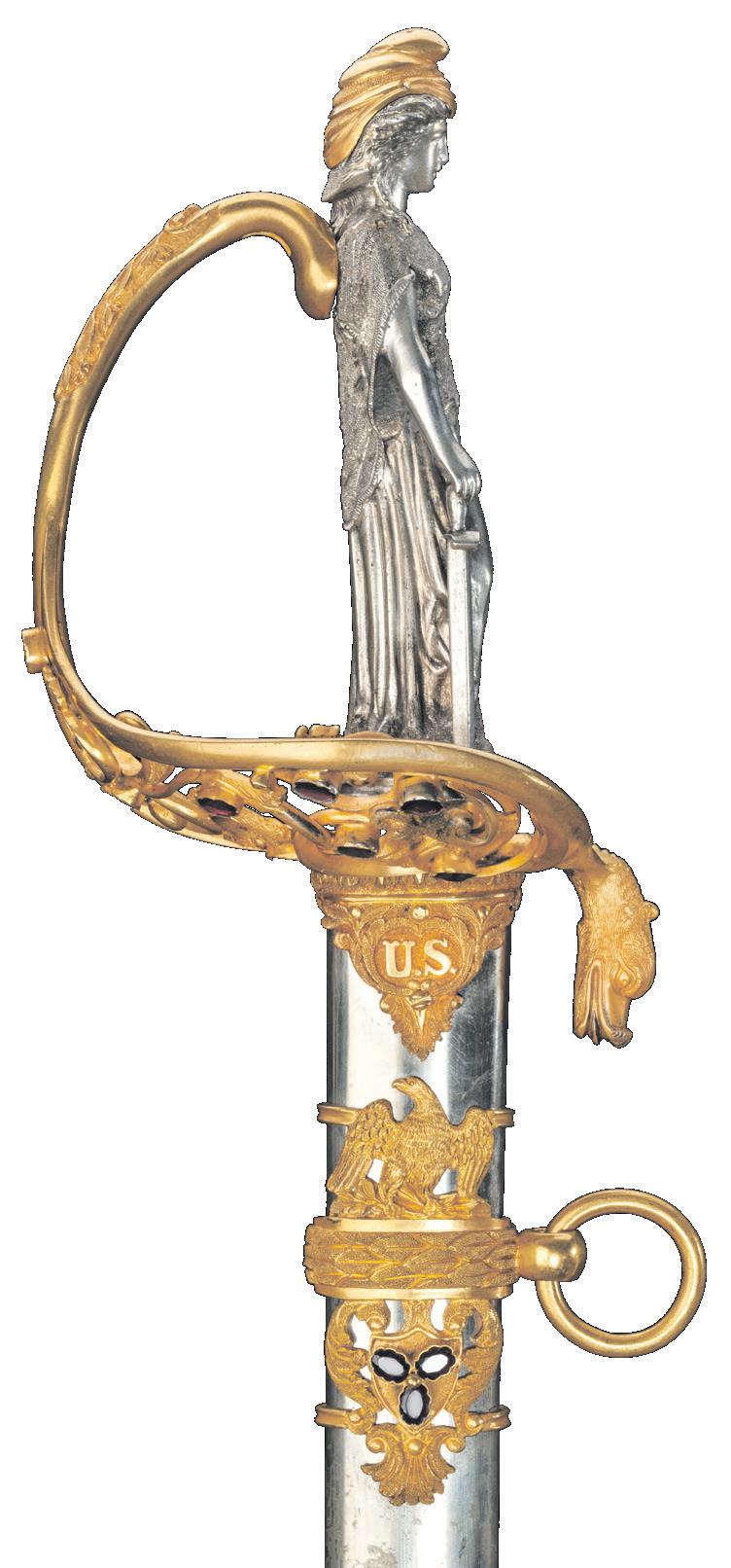
paper rounds, was fragile and often broke up in cartridge boxes due to the “jouncing” effect conveyed by trotting horses. Most respondents to a late war survey of carbine effectiveness considered the Merrill “worthless.”

The most modern gun on the field that day was the Sharps and Hankins, designed by Christian Sharps after he left the company that produced carbines bearing his name. It fired a .52 caliber
rimfire cartridge with powder, bullet, and priming compound in one convenient water and jounce proof copper package. Most Sharps and Hankins carbines were purchased by the navy, but New York bought some as well, apparently including those carried by three companies of the 9th New York Cavalry at Gettysburg.
Historical myth long held that Buford’s troopers were armed with seven-shot repeating Spencer carbines on July 1 and credits the Spencer’s firepower with delaying the Confederate advance. The cavalry presence forced the Confederates, who did not know where the Union infantry was, to deploy into line of battle, which took up the time needed for Union infantry to arrive. Casualties were light on both sides. One cavalryman only fired a dozen rounds from his carbine all morning.

Were there Spencers at Gettysburg? Yes, rifles in the hands of the 5th and 6th Michigan Cavalry, which made their mark in the cavalry action on July 3. In fact, Spencer carbines were not even manufactured until October 1863.
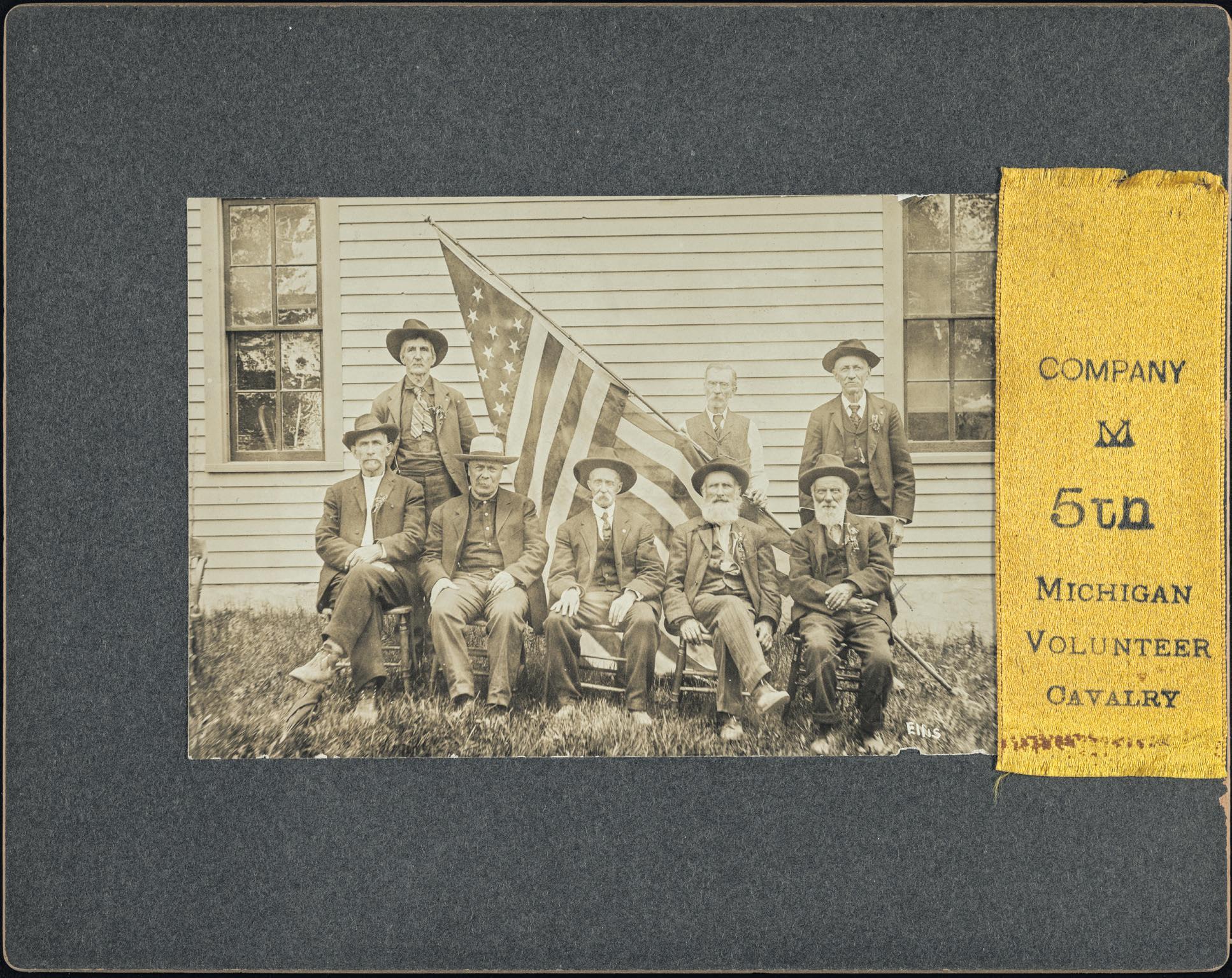
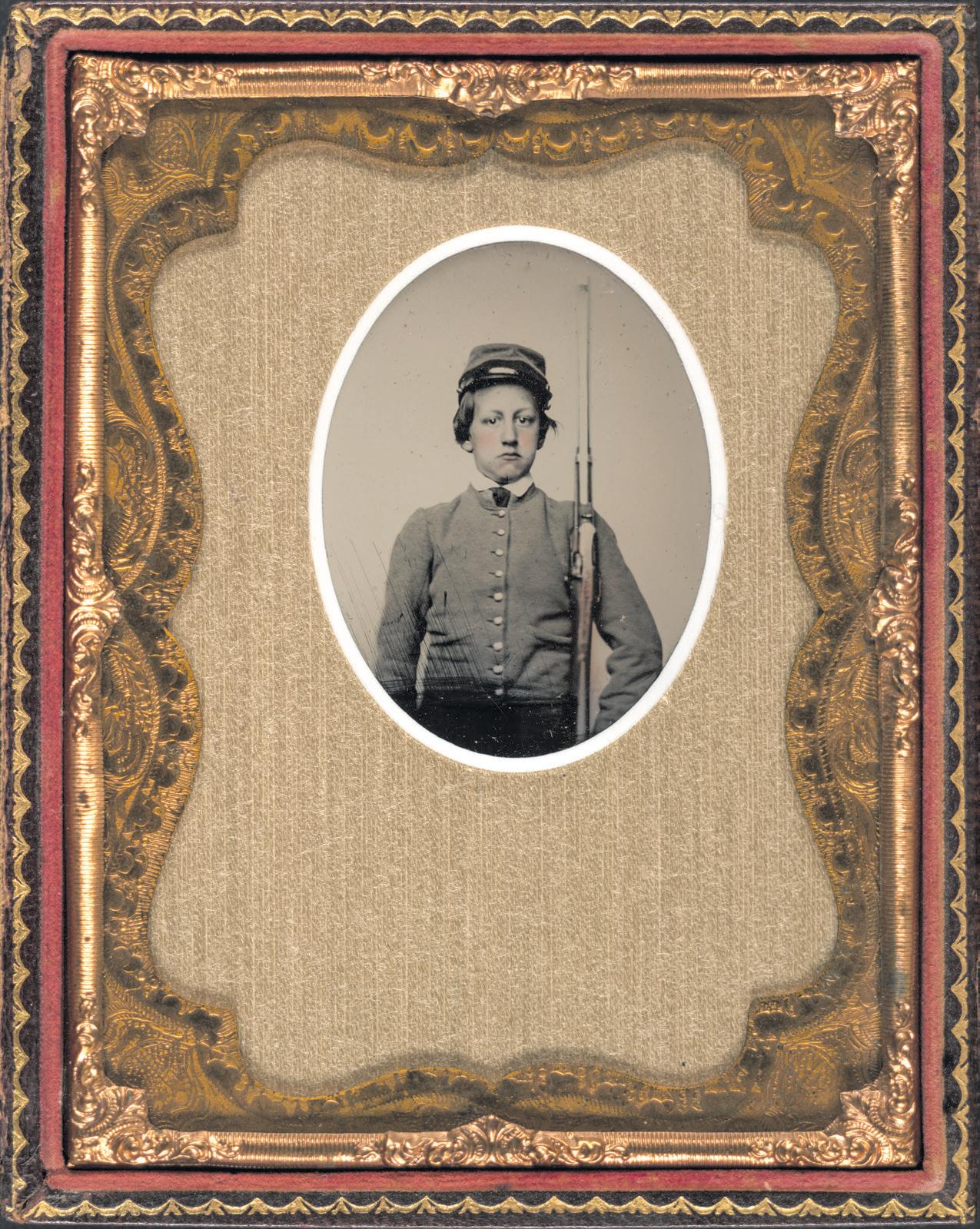

Joseph G. Bilby received his BA and MA degrees in history from Seton Hall University and served as a lieutenant in the 1st Infantry Division in 1966–1967. He is Assistant Curator of the New Jersey National Guard and Militia Museum, a freelance writer and historical consultant and author or editor of 21 books and over 400 articles on N.J. and military
history and firearms. He is also publications editor for the N.J. Civil War 150 Committee and edited the award winning New Jersey Goes to War. His latest book, New Jersey: A Military History, was published by Westholme Publishing in 2017. He has received an award for contributions to Monmouth County

(N.J.) history and an Award of Merit from the N.J. Historical Commission for contributions to the state’s military history. He can be contacted by email at jgbilby44@aol.com.
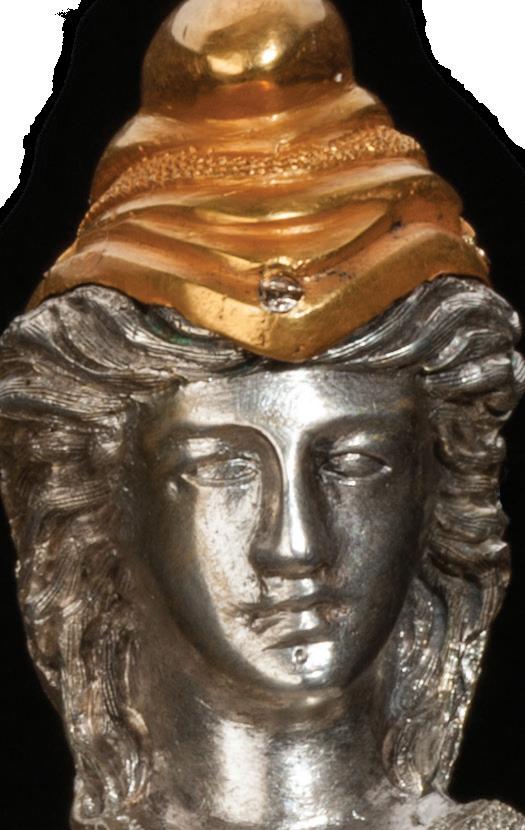
9 September 2019 Civil War News
Two unidentified soldiers with Spencer carbines, 1860 sabers, and Colt Army revolvers, probably Union uniforms. (Liljenquist Family Collection of Civil War Photographs, Library of Congress)
Unidentified soldier in Confederate uniform with Merrill carbine. (Liljenquist Family Collection of Civil War Photographs, Library of Congress)
Reunion of unidentified Co. M, 5th Michigan Cavalry Regiment veterans, in GAR uniforms with American flag. (Liljenquist Family Collection of Civil War Photographs, Library of Congress)
Buying and Selling The Finest in Americana 11311 S. Indian River Dr. • Fort Pierce, Florida 34982 770-329-4985 • gwjuno@aol.com George Weller Juno Subscribe at CivilWarNews.com
Breakfast
In his Notes on the State of Virginia, Thomas Jefferson wrote of the ideal democratic republic as a society of self-sufficient agrarians. His plantation estate Monticello that reflected his fascination with Roman architecture was a famous example of what such a place could be like.
Jefferson believed so strongly in the model that to this day his home county in Central Virginia does not impose a property tax on any acreage used for grazing animals. The only real property taxed is the main living structure. In his view, everything required should be produced within a thirty-mile radius of home.
Jefferson was a naturalist, what we would call a tree-hugger, and went “green” a few hundred years before it was fashionable.
Largely vegetarian, his favorite food was green peas. Breakfast at Monticello was a large meal, because only two meals were served each day. A visitor from Washington noted in 1809 that after the dining room bell rings twice, “Our breakfast table was as large as our dinner table; . . . we had tea, coffee, excellent muffins, hot wheat and corn bread, cold ham, preserves and butter.” Fifteen years later, Daniel Webster enjoyed an almost identical breakfast at Monticello, partaking of “tea and coffee, with bread always fresh from the oven . . ., with an accompaniment of cold meat.” It was noteworthy to these visitors because they had grown accustomed to a smaller, simpler morning meal as city dwellers in Washington, D.C. Southerners used to rural life on antebellum plantations noted the lack of meat for breakfast among
their personal sacrifices as the Civil War went on.
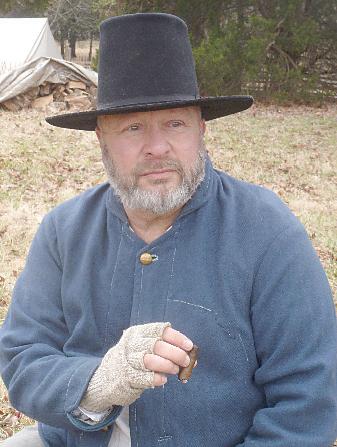
For many city dwellers by the mid-19th century, times were changing from Jefferson’s agrarian model of self-sufficiency to a more specialized economy based around larger communities where such things as shoes, clothing, and tools, as well as food and convenience items were brought in and sold commercially. Co-dependent industries located near each other for convenience and economy; for example, commercial soap and candle maker Proctor & Gamble initially located their business near the meatpacking plants in Cincinnati, Ohio; tallow was a necessary ingredient of both candles and soap. Previously in the South, processing animals for meat, growing vegetables, and making soap/candles were all domestic functions commonly performed at home or on the farm with any leftover byproducts sold locally or bartered.

One item we know today that was not served in the antebellum home or as part of a soldier’s ration was oatmeal, steel cut or otherwise. Oatmeal did not gain popularity in America until around 1870. It was a breakfast staple “across the pond” in Victorian England earlier though. A glass of orange juice would not have been common either; oranges were expensive and mostly imported. They were not widely grown domestically in Florida and California until the late 19th century. Likewise, bananas did not become popular until the Philadelphia Exposition of 1876. So what fruit was served with breakfast in the mid-19th century?

Unlike breakfast on the farm, in larger cities bacon and eggs were not a common combination before the 1920s. That combination was reintroduced as part of a 1924 public relations campaign by a meatpacker selling pre-sliced bacon. In a sense, the meatpacker was selling the idea of a hearty, rural Southern breakfast of the past to twentieth century urban dwellers long used to toast, coffee, and boxed cereal.
On the subject of commercial boxed cereal, it was not widely encountered for breakfast in the 19th century, urban or rural. The first boxed cereal was called granulla, introduced in 1863. The heavy bran nuggets had to be soaked overnight before they could be eaten and as such, failed to catch on in the cities or anywhere else for that matter. Boxed cereal served with milk was not popular as a breakfast food until the late 1870s.
For a hot cereal, porridge was often served. What exactly was porridge? Porridge was a mush made from cornmeal, which was ground from dried hominy. There are three basic types of cornmeal. Samp was the coarsest grind and was used to make porridge. Porridge was common
to the farmer’s table. It might be sweetened with molasses, maple syrup, or sugar (depending on what you had), and thinned out with a little milk or cream, again if you had it. While a breakfast of porridge would stick to your ribs, and might suffice by itself for a city dweller, there was usually more to the first meal of the day for a working man. Porridge would often be accompanied by wheat or corn bread, fresh or sour milk, coffee/tea, and pork, ham, or other meats.
In the South, dairy products were less widely found, so lard substituted for butter. “Hog and hominy” were commonly found on the breakfast table of many Southern households. A visitor to a South Carolina inn during 1861 noted that variations on the “hog and hominy” menu were served every day at almost every meal. The intent of a rural breakfast was to stave off hunger by providing fuel for a hard day’s work, and not necessarily about advancing the culinary arts.
Coffee was widely enjoyed in the South, and when Civil War shortages made it scarce, coffee drinkers resorted to parched and ground chicory, peanuts, acorns, sweet potatoes, and other roots

Available online at http://booklocker.com/books/9403.html Amazon.com
Apples were a common fruit from Mason & Dixon’s famous line down to the Southern Appalachians, as were peaches (South Carolina and Georgia), berries, watermelons, and grapes. Fresh fruits or preserves were often on the breakfast table. Fruit was also served in the form of pies baked for breakfast in rural communities. Some vegetables like sliced tomatoes were breakfast side dishes in the rural South.

10 Civil War News September 2019
and Barnes & Noble. Hardcover, 534 pages.
$39.95
— MAKER — LEATHER WORKS Museum Quality “Raising The Standard” Made In The USA Visit us at www.DellsLeatherWorks.com • (845) 339-4916 Dedicated to the Common Soldiers Who Fought in The War Between The States AUTHENTIC QUALITY REPRODUCTIONS 31st Edition Since 1999 Accepting Discover, Visa, MasterCard and American Express
Log hut company kitchen, 1864.
(111-B-252, National Archives Identifier 524671)
for a substitute. Dough-nuts or “nutcakes” were popular with civilians and soldiers at any meal. They were cut into squares and diamonds, not the “O” shape widely known today. One period recipe cautioned that temperature control of the oil/grease needed to be “exacting” because, “if too cool the dough will absorb all the grease, and if too hot the outside will burn while the inside remains uncooked.” How the temperature of the grease would be regulated exactly was not explained.

Cooking on a fire is an art largely lost to modern times. For a Civil War soldier in the South, breakfast might include beans soaked overnight and baked in a skillet with salt pork, but more commonly just salt pork, cornbread, and coffee. Sometimes eggs were foraged from a nearby farm and fried in the grease from the salt pork. In the South, corn pone and ‘jonnycakes’ often took the place of hard bread; they were fried in the renderings from the meat ration, if it existed, or otherwise baked on a rock placed on the embers. In other words, a soldier’s breakfast looked an awful lot like lunch and dinner.

For civilians, breakfast in the South evolved regionally, but also along urban/rural lines based on the kind of work that was performed during the day. The relationship was a simple one, “more work, more calories.” One account describes a farmer’s breakfast as follows “…besides the buttermilk biscuits, served as four halves (two biscuits) open faced and slathered with white sausage or red-eye gravy, breakfast might also include meat such as country ham or bacon, pork sausage or
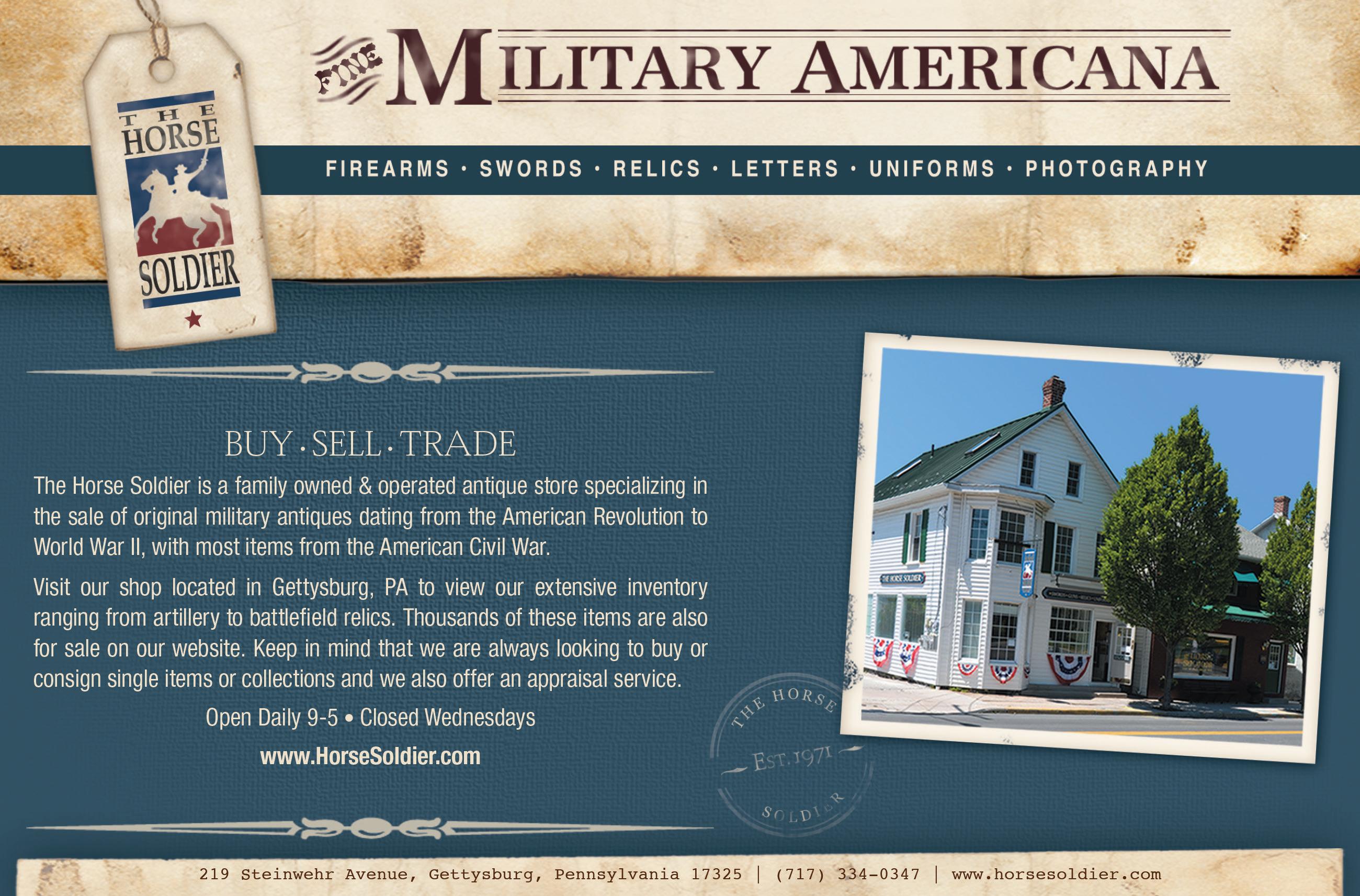
pork chops, or something called “livermush” that was served on the side but cut up on the plate and mixed with the gravy. And then fried apples or applesauce, eggs, grits, or potatoes, fruit pies made from blackberry, apple, or pumpkin (in the autumn) or fried doughnuts; all accompanied by buttermilk, hot coffee with cream and iced tea, with quartered lemons on the side.” Nineteenth century farmers needed a breakfast like that because the morning meal might need to last until late afternoon if they found themselves at work “on the lower forty.” Two meals a day were quite often the norm.
Craig L. Barry was born in Charlottesville, Va. He holds his BA and Masters degrees from the University of North Carolina (Charlotte). Craig served The Watchdog Civil War Quarterly as Associate Editor and Editor from 2003–2017. The Watchdog published books and columns on 19th-century material and donated all funds from publications to battlefield preservation. He is the author of several books including The Civil War Musket: A Handbook for Historical Accuracy (2006, 2011), The Unfinished Fight: Essays on Confederate Material Culture Vol. I and II (2012, 2013) and three books (soon to be four) in the Suppliers to the Confederacy series on English Arms & Accoutrements, Quartermaster stores and other European imports.
11 September 2019
News
Civil War
The deadline for submissions/advertising is the 20th of each month.
Deadlines for Advertising or Editorial Submissions is the 20th of each month. Email to ads@civilwarnews.com
Impacted Ordnance Found in Historic Bushong Farmhouse
By Lt. Colonel Troy D. Marshall Site Director, Virginia Museum of the Civil
War
This year as part of a comprehensive rehabilitation of the Bushong Farm, the oldest structure on the farm, the 1818 House, underwent exterior renovations that included clapboarding, window casings, and paint. All the weatherboards from an earlier 1960’s renovation were removed, offering battlefield staff a rare opportunity to examine the exterior walls for construction clues and perhaps even battle damage.

On April 11, 2019, the park’s site director, Lieutenant Colonel Troy D. Marshall, carefully examined all four sides of the structure. Something extraordinary was found in the center of the north wall surface, an impacted artillery projectile still there after 155 years. It turned out to be an iron round shot from a 3-inch Hotchkiss canister round. The impact zone is slightly elevated and points north toward the western end of the Union line on Bushong’s Hill. This probably places the round as originating in one of Captain John Carlin’s 3-inch ordnance rifles. Carlin’s Battery D, 1st West Virginia Light Artillery, was heavily engaged during the final phases of the May 15, 1864, battle and lost three guns to the Confederates.


On that rainy Sunday afternoon, literally hundreds of deadly iron missiles rent the air over
the Bushong farm. Many plowed the ground, into a tree, or hit an unsuspecting soldier.
At the time we passed the house the Federals were directing their fire upon us, and the house was made a sounding-board by the striking of the missiles upon its sides. – Captain Frank Preston, Lexington Gazette, May 25, 1864
In the spring of 1864, the newly minted general-in-chief, Ulysses S. Grant declared, My primary mission is to…bring pressure to bear on the Confederacy so no longer could it take advantage of interior lines. Control of the strategically important and troublesome Shenandoah Valley was a key element in General Grant’s plan. While he confronted General Robert E. Lee’s Army of Northern Virginia in the east, Grant ordered Major General Franz Sigel’s army of 10,000 men to secure the Valley, and in so doing, threaten Lee’s left flank.
Receiving word that a Union army had entered the Valley, Confederate General John C. Breckinridge pulled together all available forces to repel the threat. The Virginia Military Institute’s Cadet Corps marched from their Lexington classrooms to join Breckinridge and his army of 4,500 veterans. The two armies met at New Market on May 15, 1864.
By mid-morning Breckinridge
was determined to force the battle. “I shall advance on him,” avowed Breckinridge. We can attack and whip them here and I will do it.
After brushing aside Union skirmishers west of town, the rebel infantry line came under fire from Federal troops north of the Bushong farm.
Devastating fire on the center of his line forced Breckinridge to put in his reserves, including the 257 VMI cadets. General Breckinridge lamented, Put the boys in…and may God forgive me for the order. Lieutenant
Colonel Scott Shipp directed his battalion of cadets forward and for the first time they saw the full savagery of battle directed right at them. As they advanced, the silhouette of the Bushong Farm came into view and with it, more problems. Shipp quickly devised a solution, dividing the battalion in half to pass on both sides of the Bushong home. Companies A and B went right; C and D to the left. Their destination was a gap in the Confederate center, directly inside Jacob Bushong’s fruit orchard. The march was very costly. A single shell killed
Cadet’s Cabell, Crockett, and Jones; another rent the VMI colors.
The Union artillery on Bushong’s Hill poured a devastating fire into the orchard and Bushong Farm precinct. Cadet John Howard recalled the jarring scene he saw from behind a rail fence that afternoon: I look back upon that orchard as the most awful spot on the battle field…as the shot and shell tore over and around us…I saw a cedar tree a yard high or thereabout with a trunk as big as my thumb. Not a very effective defense, but, no matter, anything from a white oak to a wheat straw was better than nothing, and I threw myself down behind it.
Cadet R. H. Cousins also remembered the horrific shock of coming under fire after 2:45 p.m. We then went past the house and got into the orchard, where canister and other missiles were raining like hail. It seemed impossible for men to pass through such a storm. Cadet J.B. Baylor echoed Cousins’ sentiments, We were exposed to such a fire…that, if we had long remained in this position, we would have almost been exterminated.
Even the cadet’s commander, Lieutenant Colonel Scott
12 Civil War News September 2019
1818 House forensic investigation–April 2019 (Impact zone in chalk circle, center, 2nd story)
3-inch Hotchkiss canister shot embedded in the wood beam.
Battle of New Market map.
Excavated U.S. 3-inch Hotchkiss canister with its iron canister balls exposed. These canister shot are similar to what is embedded in the wood beam.
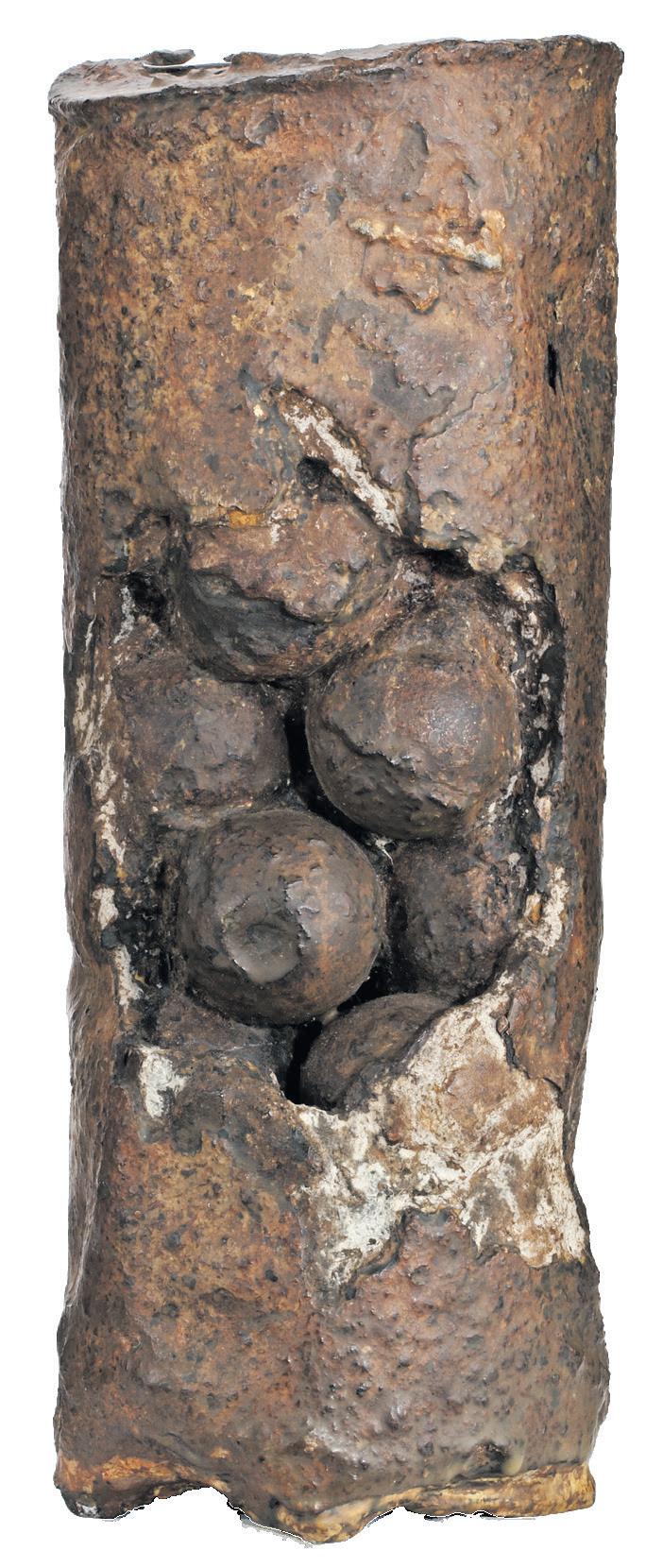
Shipp, recorded the fury in his official report, …having passed Bushong’s house, a mile or more beyond New Market, and still to the left of the main road, the enemy’s batteries, at 250 or 300 yards, opened upon us with canister and case shot…the fire was withering. It seemed impossible that any living creature could escape; and here we sustained our heaviest loss, a great many being wounded and numbers knocked down, stunned and temporarily disabled.
One of the most interesting accounts of the Union artillery bombardment comes from Cadet N. B. Noland, who was in the orchard that afternoon. He wrote, I noticed just in front of my company an orchard and a dwelling house…it was about here that the enemy’s fire was most destructive[.] We went through the yard very close to the house [and] were ordered to lie down behind the remnant of a worm-fence, about two rails high. The fire was furious at this time…I saw pieces of paper caught up and swept towards us by the currents of air set in motion by the projectiles, and the boughs of a large tree… were all stretched out and swaying towards us. I believed I was bound to get killed[.] Whilst lying
here with the air literally filled with Yankee missiles, each one… seemed to miss me by only a scant sixteenth of an inch.
Even the soldiers in Sigel’s army were awed by the destructive power of their guns. J. N. Waddell of the 12th West Virginia Infantry wrote, Carlin’s Battery… was just above us on a knoll and was sending shells over our heads with terrible effect into the ranks of these boys. Lieutenant Colonel William Lincoln, an officer with the 34th Massachusetts Infantry, was so impressed by the Union artillery, he later wrote, We poured a rapid and well directed fire into the enemy; which aided by the heavy enfilading fire of our artillery, checked his advance. For a moment he staggered, appeared to give way, and the day seemed ours.
Noting the confusion in the Confederate line, Sigel ordered a counterattack. The infantry charge lurched forward, awkwardly and ineffective. Anticipating the result of his failed charge, Sigel began to withdraw his artillery.
With his line reinforced and Federal cannon fire reduced, Breckinridge sensed his moment had come. Into the Federal fire marched the gray-clad soldiers. Only a few yards separated the armies when the blue line broke.

General Sigel staged a rapid retreat north to Strasburg, leaving the field and the Valley to General Breckinridge’s army and the exuberant VMI Cadets. The VMI cadets had done well in their first engagement, capturing several Union prisoners and a cannon from Von Kleiser’s 30th NY Battery. The cost for that victory was also very high. They lost five students killed and 47 wounded, with five more dying from their wounds in the following days. Six of the fallen cadets
Bushong Farm panoramic photograph.
are buried on the campus of the Virginia Military Institute.
Life after a storm, whether from a natural source or from battle, takes time and energy to repair. The Bushong buildings were extremely susceptible to battle damage because of their location between the lines and their height. Seven family members survived the scary day in their basement, but now their livelihood was under attack as wounded soldiers were placed in their home, outbuildings and large bank barn served as makeshift Confederate hospitals. Medical supplies not waggoned north by the retreating Federals were seized from locals, subject to the needs of the service. Foodstuffs, yards of cloth, and lint were always in very short supply at the front where the VMI surgical team was furiously at work in the house.
were regaled with stories of the battle over supper in the dining room. This ensured that the battlefield and the historic house survived for another generation, but that future was unsure.
On April 27, 1942, the Bushong Farm was sold. This historic property made famous by the battle and the VMI cadets seventy-eight years earlier would need another preservation champion, and he would come from an unlikely place. On August 4, 1944, Mr. George R. Collins, VMI Class of 1911, bought the old Bushong Farm and 120 ¼ acres. His single estate started the New Market Battlefield State Historical Park and enabled significant restoration efforts at the Bushong Farm. When the park and new Hall of Valor Civil War Museum were opened in 1970, the farm houses had new weatherboards, shutters, and a fresh coat of paint. His gift constituted the first major act of battlefield preservation in the Shenandoah Valley. In 2010, VMI changed the museum name to Virginia Museum of the Civil War, to reflect its unique identity as Virginia’s only state-owned signature Civil War museum.
The family survived unscathed but the two farmhouses were undoubtedly struck numerous times by small arms and artillery fire. The earliest images of the farm date to around 1880, some 16 years after the battle. In the panoramic image, the large 1825 farm house is seen in the center. To the right of the main structure is a smaller house built around 1818 and later modernized with clapboarding to match the new house.
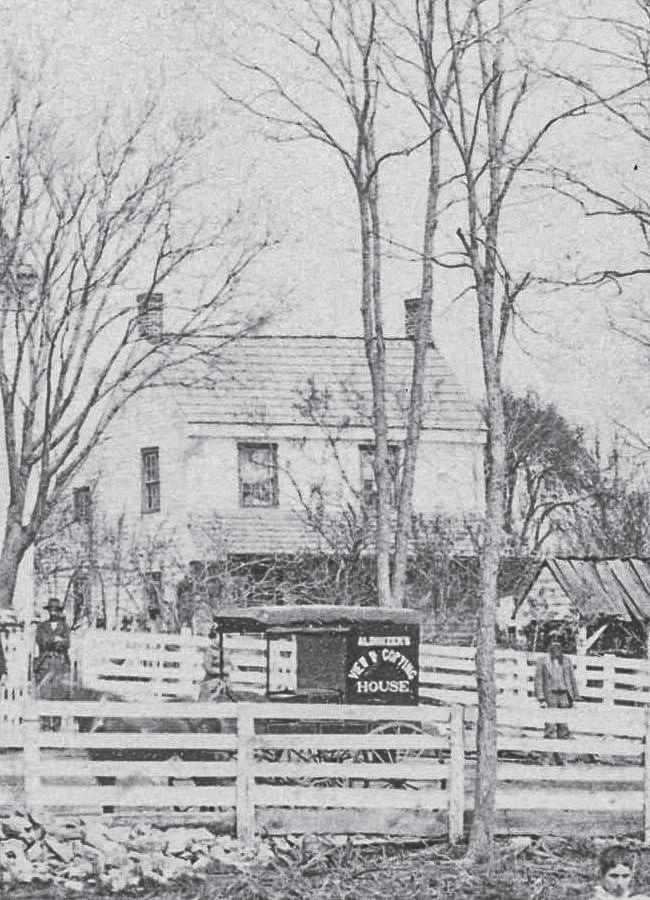


For the family whose farm had been at the storm’s center, The Bushong’s mended fences, went back to work, and eventually opened a tourist home in the 1930’s called Battlefield House to cater to the increasing flood of visitors. Guests stayed in the old house, slept on their beds, and
One hundred fifty five years later one projectile fired in anger is still suspended high above the farm. It smashed into one of the 1818 House’s log beam where it waited to be discovered. After taking careful measurements and photographs of the impact point, it was determined to leave the shot where it had been since the battle. The location will be marked on the exterior of the new siding for future interpretation.
The Virginia Museum of the Civil War and New Market Battlefield State Historical Park are open daily 9-5. The museum and park are located at Exit 264 on Interstate 81.
Troy Marshall currently serves as the Site Director of the Virginia Museum of the Civil War and New Market Battlefield State Historical Park, part of the Virginia Military Institute Museum System. He has worked in the museum field for over twenty-five years. A life-long Civil War aficionado, he grew up on the battlefields of Petersburg, Va., and gained a real appreciation for Civil War history and battlefield preservation there.
13 September 2019 Civil War News
Bushong Farm Orchard ca. 1910.
Carlin’s Battery Position, 2019. The Bushong Farm complex is beyond the right cannon´s left wheel.
1818 House.
“the rebels are coming in bunches.” – U.S. Cpt. Heber S. Thompson
By September 1863, U.S. Gen. William Rosecrans’s Army of the Cumberland had driven C.S. Gen. Braxton Bragg’s Army of Tennessee out of Middle Tennessee and had captured Chattanooga. However, Bragg was not willing to abandon the area. His plan was to destroy Rosecrans’s army by striking U.S. Gen. Thomas Crittenden’s XXI Corps at Lee & Gordon’s Mill, Bragg’s former headquarters. Crittenden’s left flank and front would be attacked simultaneously. Bragg would drive forward and pen in his foes at McLemore’s Cove before obliterating them. Reinforcements poured in by train. He had “deserters” portray the Confederates as demoralized and fleeing the area. Bragg proclaimed, “The movement will be executed with the utmost promptness, vigor and persistence.”
On September 18, the initial phases of the Battle of Chickamauga, Tenn., began. C.S. Gen. Bushrod Johnson was ordered to cross the Chickamauga Creek to reach a position on Crittenden’s left flank. Oddly enough, Johnson came from an abolitionist Ohio family and had graduated from West Point. As a descendent later put it, “a rather strange career for a Quaker.”
Johnson had spent a decade in the South and accepted a commission in the Tennessee militia at the start of the War.
Due to confusing orders,
Johnson’s men had to countermarch an extra six miles before engaging the Federals. U.S. Col. Robert H.G. Minty, 4th Michigan Cavalry, had been assigned to guard Reed’s Bridge. Minty had sent reports to Crittenden’s headquarters that he could hear “train after train” arriving and unloading at Ringgold, Ga. Minty was assured, “… the rebel army is retreating, and are trying to get away some of their abandoned stores; they have nothing but dismounted cavalry in your front.”

Minty suspected otherwise. Minty’s father had served in the British military. He had travelled the world as a military dependent, and then served five years as an officer before selling his commission. He was a railroad engineer in Michigan when the War began. In the morning Minty sent patrols to scout for the Confederates as his camp was struck and gear sent to the rear. They found Johnson’s men approaching Peavine Creek. From Peavine Ridge Minty could see what he was up against, Johnson’s 5,000 infantry and 20 cannon vs. Minty’s 973 troopers and two guns. Minty knew Rosecrans army was scattered. Reinforcements would not be coming soon. He decided to use the terrain to delay the Confederate advance with a fighting retreat.
Moving against an enemy of undetermined size, Johnson spread his men into lines of battle. They fought their way across the creek and up the ridge. There they caught a glimpse of the enemy concealed in an orchard. C.S. Gen. Nathan Bedford Forrest
Civil War Catalog
Featuring a large assortment of Civil War and Indian War autographs, accoutrements, memorabilia, medals, insignia, buttons, GAR, documents, photos, & books. Please visit our fully illustrated online catalog at www.mikebrackin.com
Free copy mail catalog
Mike Brackin PO Box 652, Winterville, NC 28590 • 252-565-8810
on each side of the bridge. They built a small fort with planks from the bridge with Lilly’s four guns positioned on a knoll behind them. For almost five hours the combatants traded fire. Then the Confederates began to find places to cross the Chickamauga Creek. Minty sent word that he was being forced to withdraw and Lily’s guns were limbering up. The last defenders knew they couldn’t all leave at once. They decided to slip away, two men at a time.
was unimpressed. He requested and was granted permission to take his cavalry and flank the enemy’s perceived main camp. Another delay came as C.S. Gen. John Bell Hood was warmly welcomed. Hood was back in the field after his left arm was crippled at Gettysburg. He had traveled by train with his men from Richmond, Va., to rapidly reinforce Bragg.
Now 10,000 men in grey with 15 regimental colors were overwhelming Minty. His men slowly retreated past the Reed house. The Board of Trade Battery opened their four guns, raking the Confederates who followed, forcing them to redeploy. Minty’s men crossed Reed Bridge, removing the planks, and positioning themselves on the high ground. After two hours, the Rebels found other places to cross and were replanking the bridge with siding from Reed’s barn. The Board of Trade Battery “were entertained by a hand-to hand contest while the guns were limbered to the rear and run across the ford.”
Earlier, along with sending reports to headquarters, Minty had sent a request to the other brigade in the area to reinforce the unprotected crossing at Dryer’s Bridge.
U.S. Col. John T. Wilder sent seven companies of the 72nd Ind., 123rd Ill., and two sections of Eli Lilly’s artillery, to the crossings. Wilder was determined that his brigade would be the best it could be. Needing cavalry to protect his infantry, he had ordered men to ride the wagon mules. When the mules disagreed, horses were obtained. His mounted infantry was armed with two cannon cast from his own foundry and the best guns he could find, Spencer repeating rifles.
Wilder’s “Lightning Brigade” was protecting Alexander’s Bridge, three miles north of Lee & Gordon’s Mill. It was 1,000 men vs. 8,000 infantry, Forrest’s cavalry, and artillery. The steep creek banks forced the Confederates to use the bridge or try elsewhere. Dense woods protected the Federals positioned
Wilder’s brigade withdrew 1½ miles from Lee and Gordon’s Mill. Minty’s men, “making a circuit round the Confederates who had crossed near Alexander’s Bridge,” joined them. Together they threw up breastworks of “fence rails, rocks, and trees.
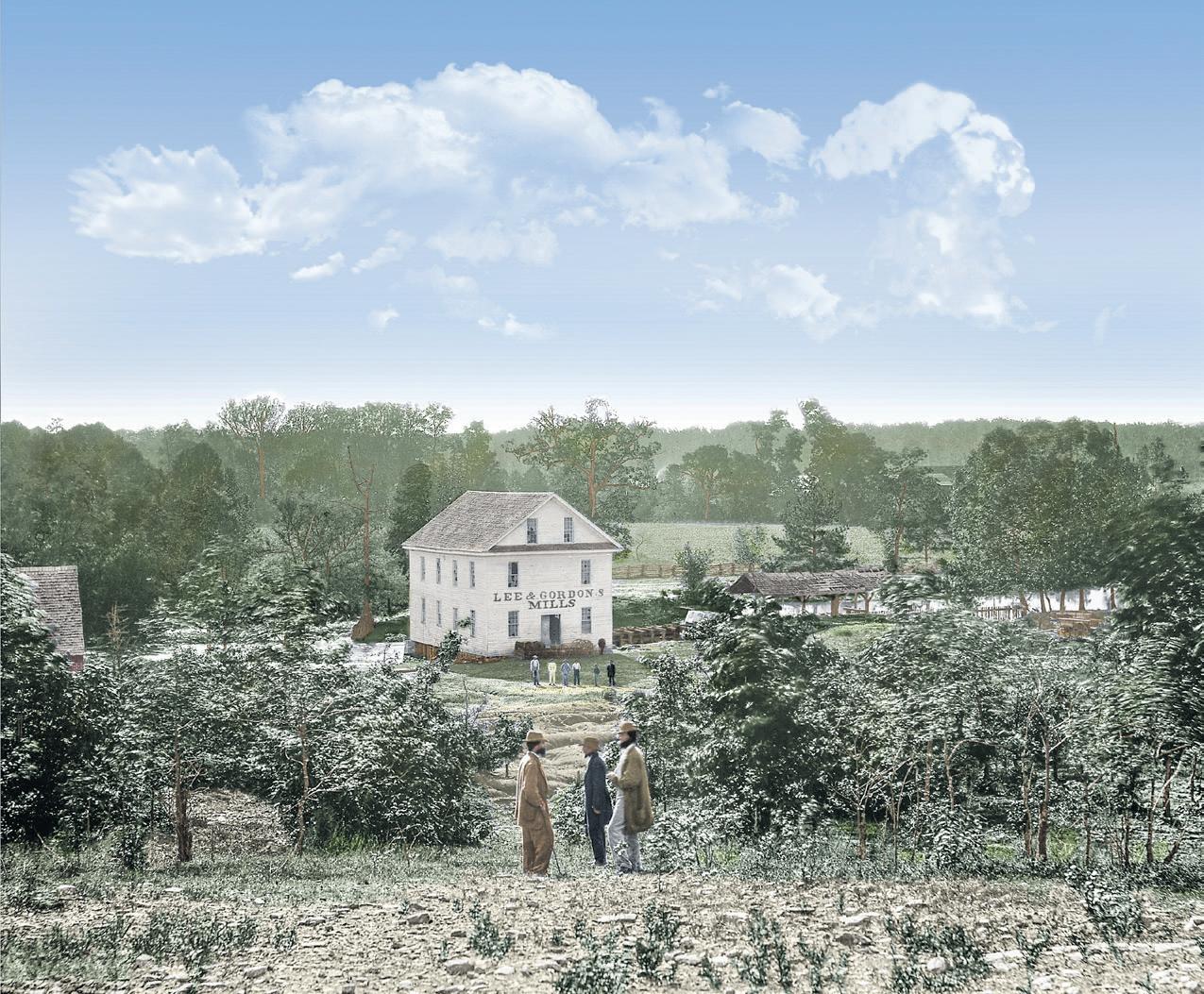
Minty had galloped over to the Mill to report to U.S. Gen. Thomas Wood. Wood asked, “Well, Minty, what have you been doing all day?” “Fighting the enemy,” came the retort. “What have you been fighting?” “Everything – infantry, artillery and cavalry.” “Where are they?” “Close to your present position, which is now covered by Wilder’s brigade and mine.” “Do you mean on our side of the creek?” “On our side of the creek, General.” “Well, come along, and we’ll drive them back across to their own side.”
Minty, Wood, and some orderlies rode out to the Lightning Brigade. Wood asked, “Where are they, Wilder?” “Ride forward about a dozen paces, General, and you will see them.” Just then a roar of musketry blazed in front of Minty’s position, followed by the quavering sound of the Rebel yell. Wood turned to see Hood’s infantrymen charging. With a stunned look on his face, Wood declared, “By God, they are here,” realizing for the first time just how endangered the Army of the Cumberland was. Wood
wheeled his horse and galloped back to his command to get it ready to give battle.
The Confederates continued their attack until 10 p.m., repelled by the Lightening Brigade’s Spencer Rifles.
Sources:


• Wittenberg, Eric J. Holding the Line on the River of Death
• Powell, David. The Chickamauga Campaign: A Mad Irregular Battle: From the Crossing of Tennessee River Through the First Day, August 22 - September 19, 1863
• Time Life Books. The Fight for Chattanooga
Stephanie Hagiwara is the editor for Civil War in Color.com and Civil War in 3D.com. She also writes a column for History in Full Color. com that covers stories of photographs of historical interest from the 1850’s to the present. Her articles can be found on Facebook, Tumblr and Pinterest.

14 Civil War News September 2019
A Delaying Action
Lee and Gordon’s Mills, Chickamauga Battlefield, Tenn. Colorization © 2019 civilwarincolor.com courtesy civilwarincolor. com/cwn. (National Archives)
Bushrod Rust Johnson, 18171880. Colorization © 2019 civilwarincolor.com courtesy civilwarincolor.com/cwn. (Library of Congress)
Chattanooga Civil War & Artifact Show & Sale News


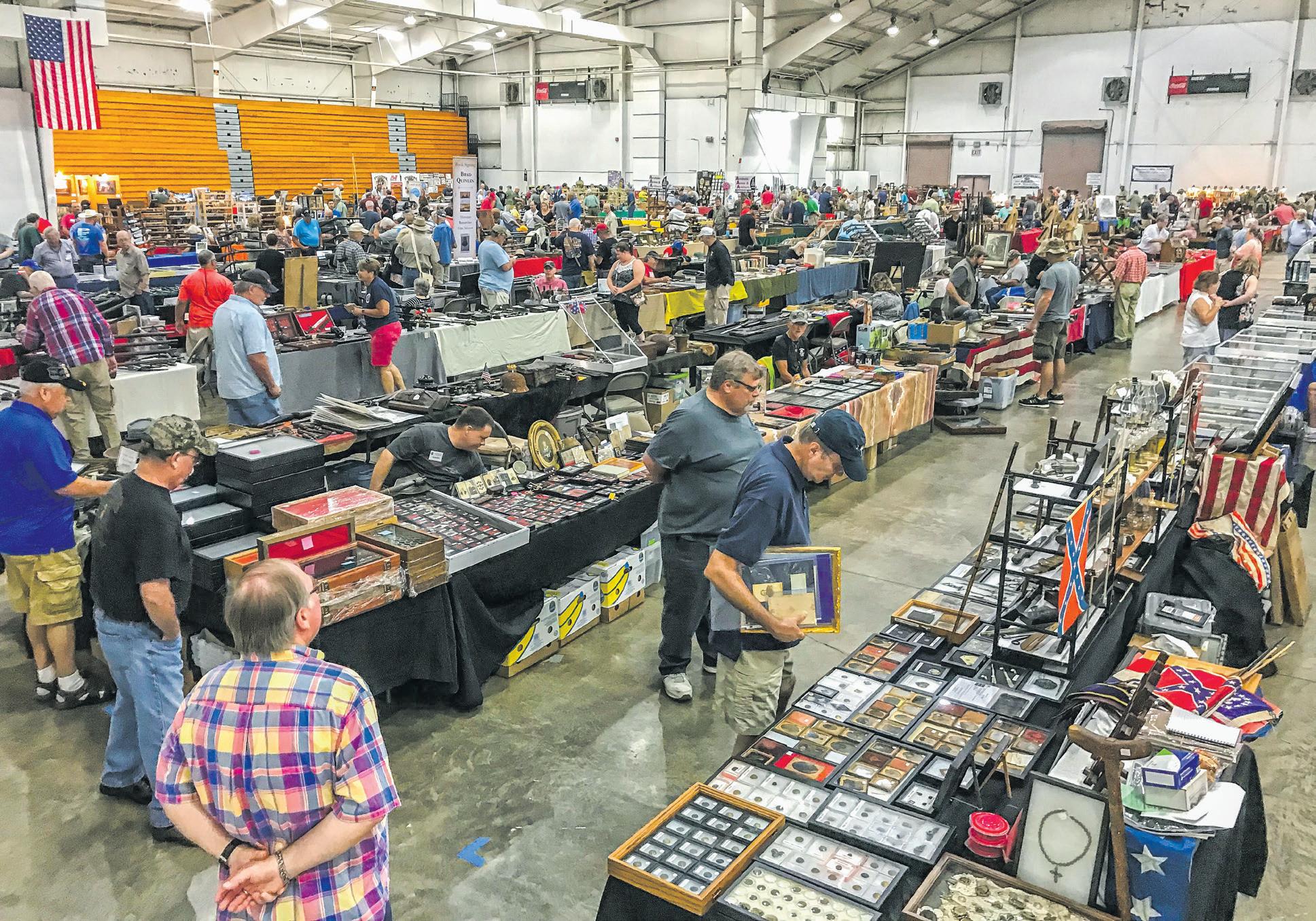

CHATTANOOGA, Tenn.—It is rare that an event in only its second year makes a significant impact in the world of Civil War shows, but this annual event has the makings of a future mega event on the Civil War and artifact show circuit. Dealers and displayers from across the country occupied 250 eight-foot tables that were viewed by over a thousand attendees. The gate crowd was up substantially from the previous year, with lines actually formed around the building at opening time on Saturday morning. Far from being a Civil War only show, the event featured both non-dug and dug artifacts from ancient times up to World War II. The huge selection included weapons, artillery projectiles, insignia, buckles, buttons, bottles, books, prints, jewelry, and much more. As always, to increase
exposure and assure a large walkin crowd, American Digger promoted the show through various multimedia outlets, including radio, TV, numerous live feeds, and podcasts. The event was held at the spacious Camp Jordan Arena in East Ridge (a suburb of Chattanooga); the community was very supportive of the show, even hanging a thirty-foot-long banner across Main Street.
For those new to the world of Civil War sales events, not only are they a great place to view and buy artifacts or equipment (including metal detectors and accessories), but are one of the best place to have finds identified and questions answered by notable collectors and dealers Several qualified appraisers had tables set up, including Antique’s Roadshow’s Rafael Eledge (ShilohRelics.Com). Several
detector manufacturer reps and retail dealers were also on hand to answer questions about their products.
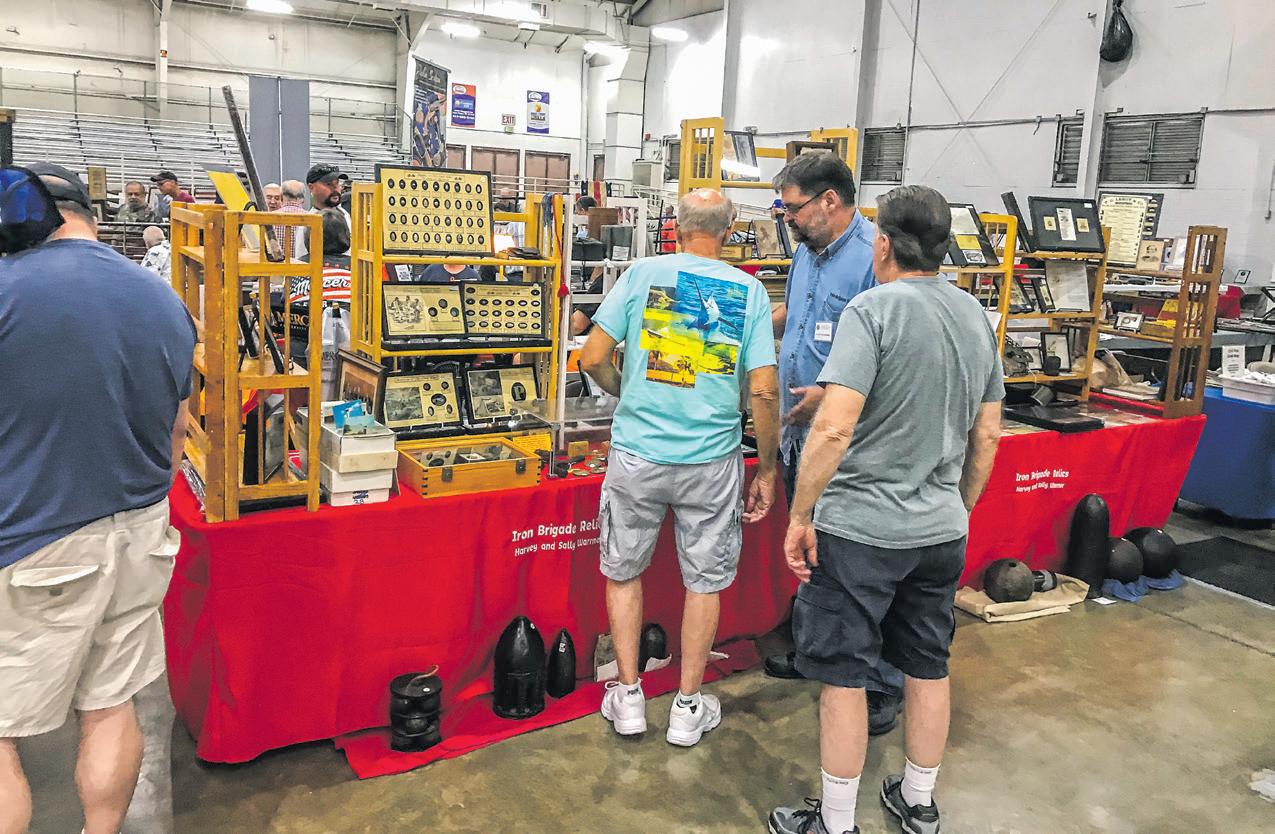
To encourage and reward those who publicly show their
collections, awards were given for Best of Show (Mike Fisher), Best Non-Dug Artifact (Bill Blackman), Best Dug Artifact (Joe Mooney), Most Educational (Mark Miller), and People’s
Choice (Sid Witherington). Next year’s show has been confirmed for July 25 & 26, 2020, at the same location, and is expected to be even bigger than the 2019 event.
15 September 2019 Civil War News
Civil War-era swords, muskets, and revolvers are always a draw.
Harvey Warrner talks with customers about his Civil War relics.
The show had a large walk-in crowd, as seen by this photo.
Items up to WWII were allowed like this painted Japanese helmet.
Accessing the Official Records Online
Circling back to March 2016, and the focus of the first installment of this column, this month we update readers on an additional online tool for searching the Official Records. The 128-volume set contains a wealth of information, and searching via keyword at The Ohio State University’s website can expedite the research process. Please visit https://ehistory.osu.edu/books/ official-records.
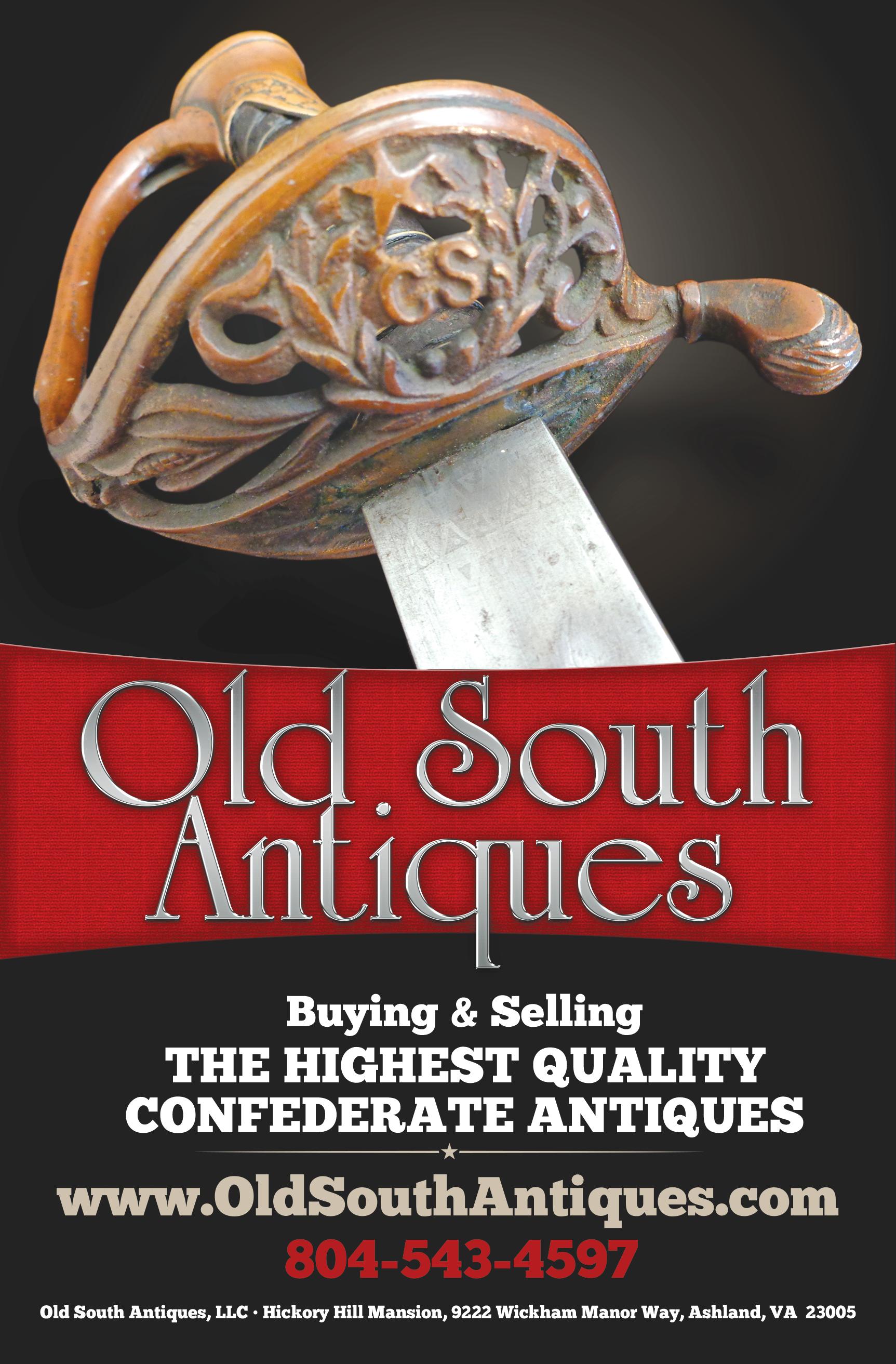

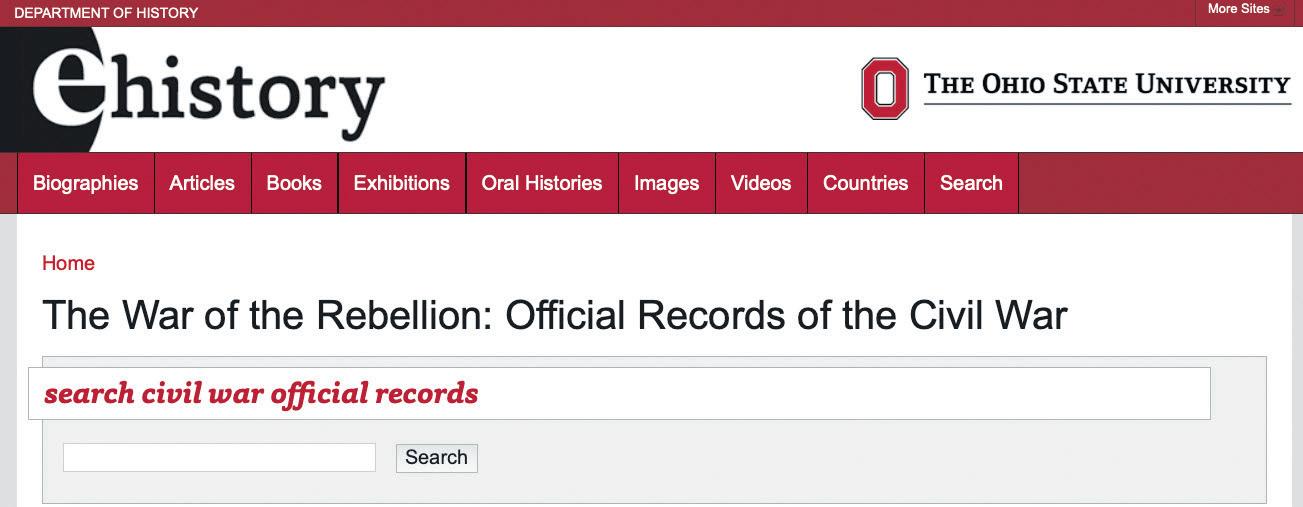

Selecting this link will take users to a page for entering search keywords, as shown in the screenshot below. Using a real example from a recent project this writer embarked upon, will hopefully assist readers in quickly getting up to speed on using the website. While preparing to discuss a Civil War site in Cobb County, Ga., this researcher used the Ohio State website to find what the Official Records might hold in-store. During the war, folks generally referred to the site as
‘The Widow Green property,’ or the ‘Green Plantation.’ Using this information as a starting point, a keyword search for “Widow Green’s” quickly produced a hit, and took this researcher to page 779 of Serial Number 075. See image above. As a reminder, the O.R. volumes each carried a serial number in addition to a volume number. This same website offers a handy cross-reference chart. Please visit https://ehistory.osu. edu/books/official-records/index, and see the above result references Series I, Volume XXXVIII, part IV, page 779. Clicking on the keyword yielded the following correspondence.
HDQRS. ROSS’ BRIGADE, JACKSON’S CAVALRY DIVISION, Widow Green’s House, Ga., June 17, 1864-9.30 a.m.
Captain SYKES, Assistant Adjutant-General:

CAPTAIN: I still occupy the position in which you left me. The enemy appear to be moving to my left, as if to get between me and Lost Mountain. Two pieces of artillery, in position on the bald hill we were looking at this morning, are shelling us, but without damage.
I am, captain, very respectfully, your obedient servant, L. S. ROSS, Brigadier-General.
While the above information appears in text format, researchers, if they wish to do so, can view the original page image, shown below, at the HathiTrust website: https://catalog.hathitrust. org/Record/000625514. Users will obtain quicker search results at The Ohio State University website.
Next month, we will explore methods to use the Atlas to Accompany the Official Records via this same website. Until then, good luck in researching the Civil War!
Michael K. Shaffer is a Civil War historian, author, lecturer, instructor, and a member of the Society of Civil War Historians, the Historians of the Civil War Western Theater, the Georgia Association of Historians, and the Georgia Writers Association. Readers may contact him at mkscdr11@ gmail.com, or to request speaking engagements, via his website www.civilwarhistorian.net. Follow Michael on Facebook www.facebook.com/michael.k.shaffer and Twitter @michaelkshaffer.

16 Civil War News September 2019
Advertising or Editorial Submissions is the 20th of each month.
Deadlines for
Email to: ads@civilwarnews.com
Screenshot of ehistory page at The Ohio State University’s website.
By Garry Adelman Chief Historian American Battlefield Trust
As hundreds of American Battlefield Trust members and staff prepared to gather in Lexington, Ky., for our Annual Conference in May, I was delighted to learn that actor Steve Zahn would be joining me to make a video for an incredible opportunity to save the proverbial "hole in the donut" at Perryville.
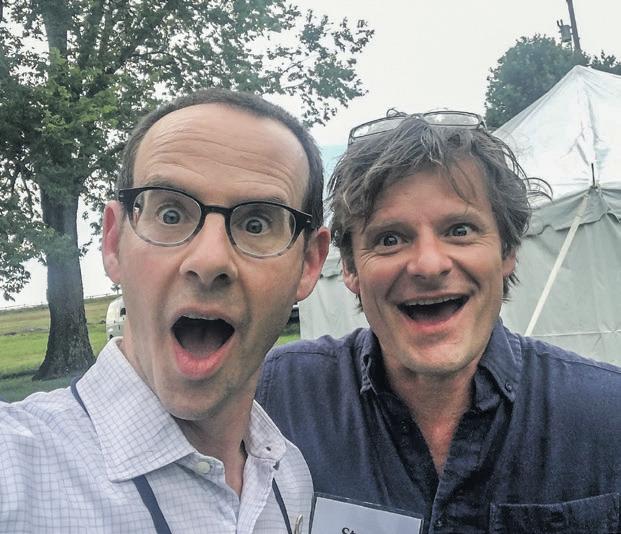


Zahn, who you might know from That Thing You Do, Sahara, Reality Bites, Rescue Dawn, Dallas Buyers Club, Saving Silverman, and other films, lives near Lexington, and is not only a history nerd but a preservationist with a penchant for Perryville. He had already helped the Perryville Battlefield Association in numerous ways.
I spent several hours with Steve over the course of three days and can tell you he knows his stuff and is super passionate about history and preservation. He needed no coaching when we walked the battlefield and he told me about which regiment or which battery fought where at what time of day! Throughout our discussions he marveled at the possibility of preserving this key tract of land.
In our time together, Steve told me many stories about his acting career and his interest in the Civil War, one of which I want to share with you. When he was performing in the production Bye Bye Birdie more than 20 years ago, he would take his free days
Richard Houston Receives American Battlefield Trust’s 2019 Teacher of the Year Award
and check out historical sites before the evening shows. On one occasion he found himself pulling over at a yard sale near Harpers Ferry and to his amazement he saw a table with a real Confederate Zouave coat apparently for sale. He inquired of the woman in charge who said it belonged to her husband, who was out getting food, but that he could have it for $50! As Steve drove away with the coat, he imagined the husband coming back with a handful of burgers and look on his face when he learned that his coat had been sold for $50. That incredible artifact now sits in the Perryville Battlefield State Historic Site Museum and Visitors Center to which Steve donated the coat years ago.
I hope you enjoy the video and consider making a gift to get us closer to completing one of the most important battlefields of the Civil War.
The video can be viewed at Battlefields.org/Zahn.
About the American Battlefield Trust

The American Battlefield Trust is dedicated to preserving America’s hallowed battlegrounds and educating the public about what happened there and why it matters today. The nonprofit, nonpartisan organization has protected more than 51,000 acres associated with the Revolutionary War, War of 1812 and Civil War. Learn more at www.battlefields.org.
RALEIGH, N.C.—On July 13, the American Battlefield Trust named Richard Houston, a history teacher at Monomoy Regional High School in Harwich, Mass., the recipient of its 2019 Teacher of the Year Award. Garry Adelman, the Trust’s chief historian, presented Houston with the award during the organization’s 19th National Teacher Institute in Raleigh, N.C.

“We look for passionate educators who creatively go above and beyond the call of duty,” Adelman said. “We received nominations for many qualified men and women this year as we do every year. In the end, our decision was made easier because Richard’s nomination, submitted by a colleague, was among the best, if
not the best, the Trust has ever received. Richard is precisely the type of teacher who will help to perpetuate American history and therefore our democracy.”
Kevin Bates, who also teaches history at Monomoy Regional High School, made a compelling case for Houston as the author of his nomination. “From my classroom next door, it has been my privilege to observe my nominee share his love of American history with hundreds of students since 2001,” Bates wrote.
Bates emphasized that Houston’s dedication to teaching does not end with the school day, noting, for instance, that Houston successfully secured the attendance of more than 90 percent of Monomoy’s Advanced
Placement U.S. History students at non-mandatory, after-school study sessions rooted in history, which he personally launched and led. “My nominee doesn’t just teach history, he lives it,” Bates stated. “In my 25 years of teaching history, my nominee is easily the most dedicated teacher with whom I have been associated and is clearly deserving of this honor.”
Houston has previously been recognized for his teaching by the National Society of High School Scholars, the Gilder Lehrman Institute of American History, and the Daughters of the American Revolution, as well as by others.
Learn more at www.battlefields.org.
17 September
2019 Civil War News
Attendees at the American Battlefield Trust’s 2019 National Teacher Institute view a video created as part of the Trust’s “Brothers In Valor” project, featuring Medal of Honor recipient Melvin Morris discussing the role of fellow Medal of Honor recipient William Carney and the 54th Massachusetts Infantry at Battery Wagner.
2019 American Battlefield Trust Teacher of the Year awardee Richard Houston (pictured at center with award plate), surrounded by fellow award-winning educators Shirley Mae Snyder, Tyler Madison, Phil Caskey, Bob Rinehart, Jim Percoco, Dave Wege, Carolyn Ivanoff and Dave Niekum.
A selfie with Steve Zahn, from two angles: Garry Adelman recording the true selfie, with photographer Mike Talplacido capturing the surrounding scene—outside the Bottom House at Perryville—in the accompanying photo below.
The United States Christian Commission and it’s Coffee Wagons!
By: Professor Earnest Veritas Special Correspondent to the Civil War News -Western Theater-
Professor Veritas had the pleasure of having coffee from the United States Christian Commission coffee wagon and interviewing Chaplain Alan Farley. The Professor enjoyed the coffee as he got the coffee wagon’s story at the 154th anniversary of the surrender at Appomattox Court House. He was fascinated by the intertwined history of the Commission and the coffee wagon; both then and now.
Here is what Chaplain Farley had to say:
History of The United States Christian Commission
Soon after the start of the Civil War, Young Men’s Christian Association (YMCA) leaders became concerned with the religious and spiritual needs of the soldiers in the nearby camps.
Vincent Colyer, a member of the New York City YMCA, began spending time visiting nearby encampments where soldiers were stationed temporarily, on their way to the battle front. Colyer mingled with the soldiers, offered words of encouragement, and handed out religious tracts and specially printed pocket hymnals.
Since few camps had chaplains, the chaplaincy then being in its infancy, Colyer’s ministrations were welcomed by both the soldiers and their officers. As a result of these activities, and the apparent need to extend them, the New York Association established an “Army Committee” with Colyer as chairman, with its mission to provide preaching services, individual religious visitation, and publications for soldiers.
In November 1861, at the
instigation of members of the board of the New York City YMCA, a special convention of fifty delegates representing fifteen northern state YMCAs met in New York. A “Christian Commission” of twelve members was appointed to devise a plan for the Associations to act as a clearinghouse for all religious work in the armed forces.
The work of the Commission was organized at the national level. Local Associations were encouraged to support the Commission while maintaining their own activities. Many Associations merged into local branches of the Christian Commission or resolved themselves into army committees to facilitate the Commission’s work. The national organization established an office in Philadelphia; the Associations of Baltimore, Boston, Buffalo, Chicago, Louisville, New York, St. Louis, and St. Paul, became regional clearinghouses for the various activities channeled through the Commission.
George H. Stuart, founder and first president of the Philadelphia Association, and then chairman of the YMCA’s Central Committee, was designated as Chairman of the Commission, a post he held throughout the war. The method of operation was the appointment of “delegates” who served on a volunteer basis for terms averaging six weeks with no monetary remuneration.
The general aim of the Commission was “to promote the spiritual and temporal welfare of the soldiers in the Army and the sailors in the Navy, in cooperation with the Chaplains.” Its early activities included publication of a collection of familiar hymns, bible readings and prayers, devotional meetings in the camps, the organization of a “working
Christian force” in every regiment, and aiding and supporting chaplains. Though originally devised to provide spiritual sustenance, the activities of the T Commission soon expanded into the physical and social realm, making the Commission a valuable agency of wartime relief.
A newspaper report of its first annual meeting described the objects of the organization as, “the promotion of the intellectual, moral and religious welfare of the Army and Navy, by suggesting needful national legislation and administration, securing well-qualified chaplains, encouraging Sabbath observance, promoting temperance, multiplying libraries, reading-rooms, and gymnasiums, and endeavoring to arouse the sentiment of the nation to a sense of its obligations to this class of citizens.”
Delegates, serving both at the front and behind the lines, established tents as social centers with stationery and periodicals provided, distributed emergency medical supplies, food, and clothing, and operated canteens and lending libraries. A special work of compassion performed by delegates of the Commission was assembling records of those buried from prisons and in certain major battle areas. Prisonerof-war work, that was to figure more prominently in YMCA war work in later conflicts, also began during the Civil War.
The establishment of the Commission was a pivotal moment in the history of the YMCA movement in North America. It was but nine years old, being started in New York in 1852; worldwide it was only seventeen years old, following its formation in England on June 6, 1844. The work of the Commission provided the medium for largescale cooperation between the
Association and the general public and was significant in creating prestige for the YMCA movement. The value of the services rendered was recognized by civil and military authorities during the war and afterward.
Two very important advancements resulting from the efforts of this growing movement were: care of soldiers with the first formation of dietary kitchens in the hospitals, and the invention of the coffee wagon.
The first major advancement was brought about by Annie Wittenmyer from Iowa, sanitary agent for that state, who realized wounded soldiers could not survive and properly heal from wounds and sickness on hardtack biscuits and salted pork. She had the idea of starting a dietary kitchen where wholesome, healthy food could be prepared. She contacted the Christian Commission, which was already trying to get fresh fruits and vegetables into the hands of the soldiers, expressing her concern and telling them she would supply the ladies to do the cooking, if they could supply the kitchen equipment. The partnership was an overwhelming success; with thousands of lives saved that might not have been saved otherwise.

The second advancement in the welfare of the soldiers was the invention by Jacob Dunton, a graduate of the Philadelphia College of Pharmacy, who became a wholesale pharmacist. His first coffee wagon was built in 1864; he had received a patent for it in March 1863.
Many years ago, the Museum I helped start, The National Civil War Chaplain’s Museum, heard about an antique “coffee wagon” in the Virginia Beach area. The people who had it were looking for some museum to adopt it. We tried and tried to make those arrangements but for various
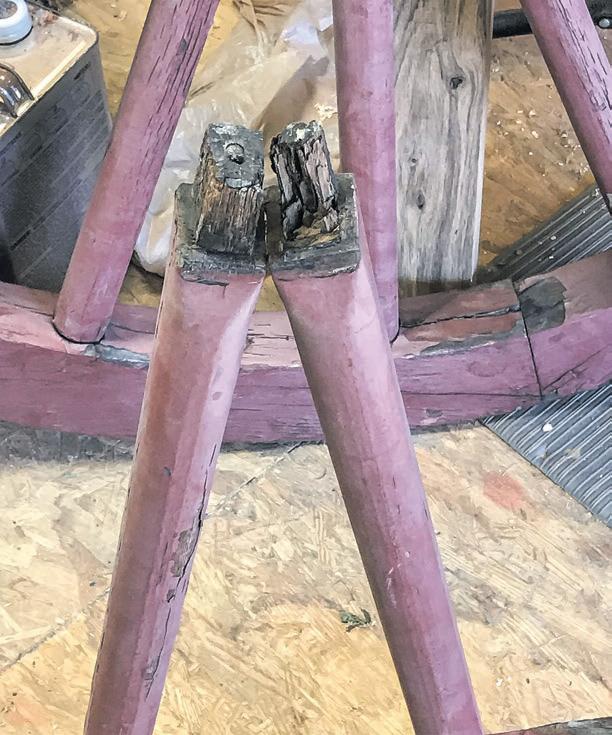
reasons we were not able to bring the effort to fruition.
During the 140th and 150th observances of the Surrender at Appomattox, the wagon was present. A gentleman by the name of Larry McGrane had found the wagon, patched up one boiler, and obtained permission to use it.
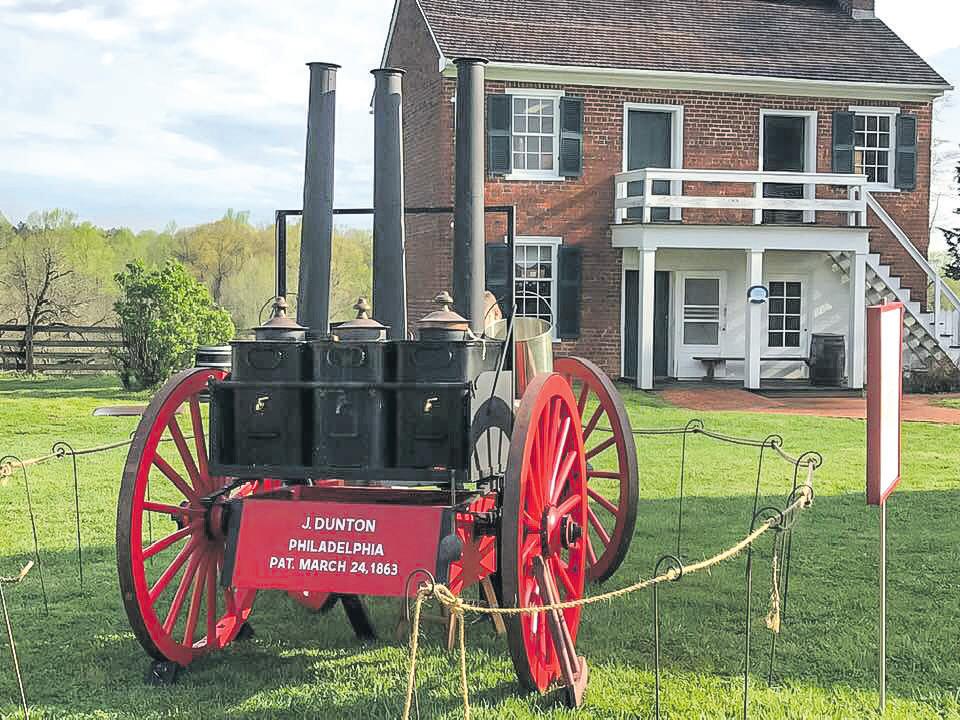
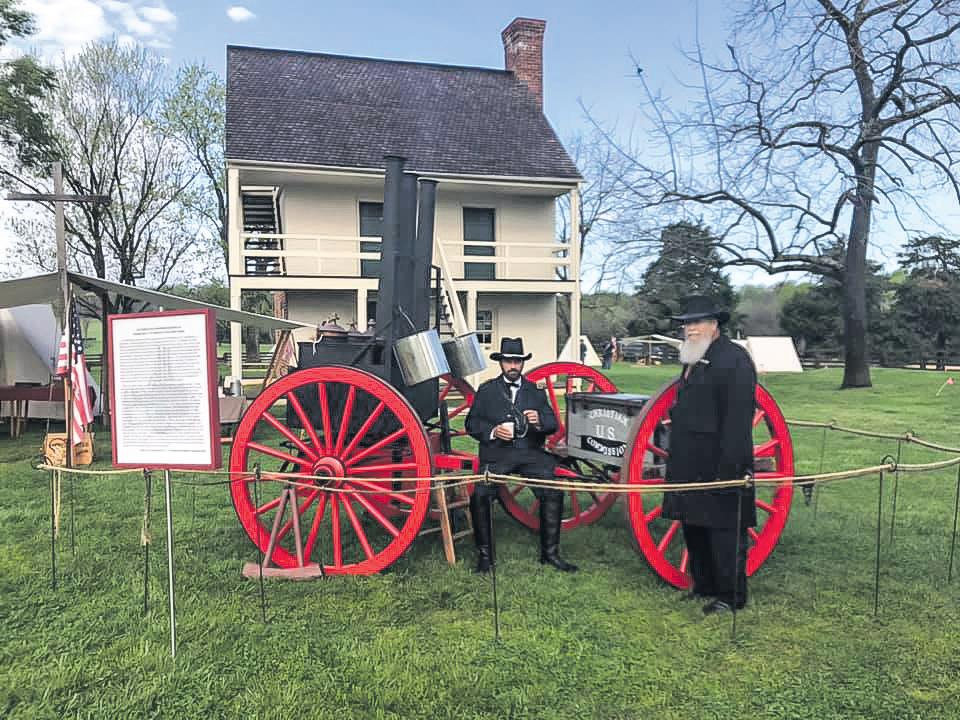
In early 2018 I (Chaplain Farley) received a photo of the wagon sitting on a trailer in a storage lot, uncovered and unprotected from the elements. It was rotting away. My attempts to reach Mr. McGrane proved futile, because of many personnel changes in the organization possessing the coffee wagon. Finally, after much prayer, the Lord, using our local congressman, provided a phone number for the director of the ASYMCA. Yes, in fact they did own a replica Civil War coffee wagon, was the answer to my inquiry. After several weeks of conversations, emails and again a change in personnel we managed to sign an exclusive 5-year use agreement to use the wagon and “maintain it.”
In mid-June 2018, we traveled to Virginia Beach to pick up the coffee wagon. Our hearts sank as we saw its true condition. There was no way to maintain it; it would have to be fully restored. The wagon was built in 1961, by the inmates at Lorton Federal Prison. It was paid for by the Chase and Sanborn Coffee Company, and was built for the Civil War centennial celebrations. It was a
18 Civil War News September 2019
Annie Wittenmyer
Coffee wagon on display at the 154th anniversary of the surrender at Appomattox Court House. Rear view of the coffee wagon.
Coffee wagon wheel with rotten spokes.
piece of our nation’s history!
As we looked it over, there were wheel spokes being held in their hubs only by the paint on the outside of the spoke. The outer skins of all three boilers were rusted with huge holes eaten where the fire would not stay under the boilers. The copper pots in the boilers had to be replaced because they were soldered with lead-based solder; they would be replaced with restaurant grade stainless steel.
The limber sub-frame needed total replacement. The deck holding the limber chest to the sub-frame was warping up on the ends and needed replacing.
The foot boards for the driver were rotten. The whole thing needed a complete repainting. We estimated the restoration cost to be between 10 and $12,000.
Many have asked why go to all this time and expense? It is very simple, really. Of the two (possibly three), coffee wagons built in 1864, nothing still exists. Guns, cannons, uniforms, and battle-fields remain, many flags still remain, and even a submarine remains, but nothing of these coffee wagons remains. They performed well and provided an invaluable service to help alleviate some of the suffering and needs of the
soldiers. This reproduction wagon is 58 years old and still has a story to tell. We want to help it do that.
Since taking it to the Gettysburg reenactment in 2018, to the present, the interest has been overwhelming. Spectators are in awe and take selfies with it. Even reenactors who have been in the hobby over 20 years have never heard or seen anything like it. For them to get a cup of fresh brewed coffee from it, that is shear ecstasy. Soldiers lined up to get coffee bring a sense of what it might have been like for them so many years ago.
The other reason we are so passionate about restoring this wagon is the ministry of the U.S. Christian Commission that we get to retell. Their love of Christ and for their fellow man is also a story that needs retelling and retelling. We believe the Lord allowed us to get this coffee wagon for a time such as this to tell the story of their devotion to Him and this nation.
More information about the coffee wagon and where it will be; about Chaplain Farley’s portrayal of a Civil War Chaplain; and his portrayal of the United States Christian Commission is available at: rmjc.org.
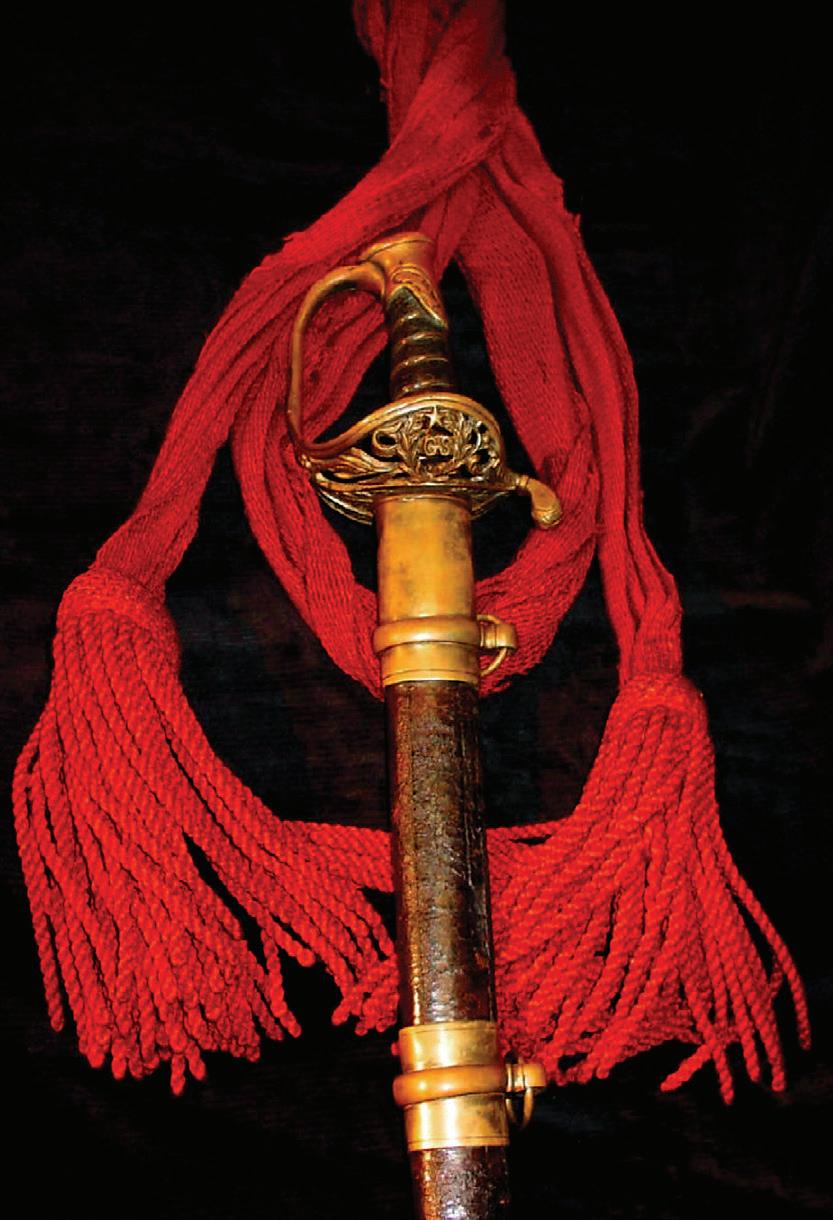
Digital Issues of CWN are available by subscription alone or with print plus archives from 2012 to present at www.CivilWarNews.com
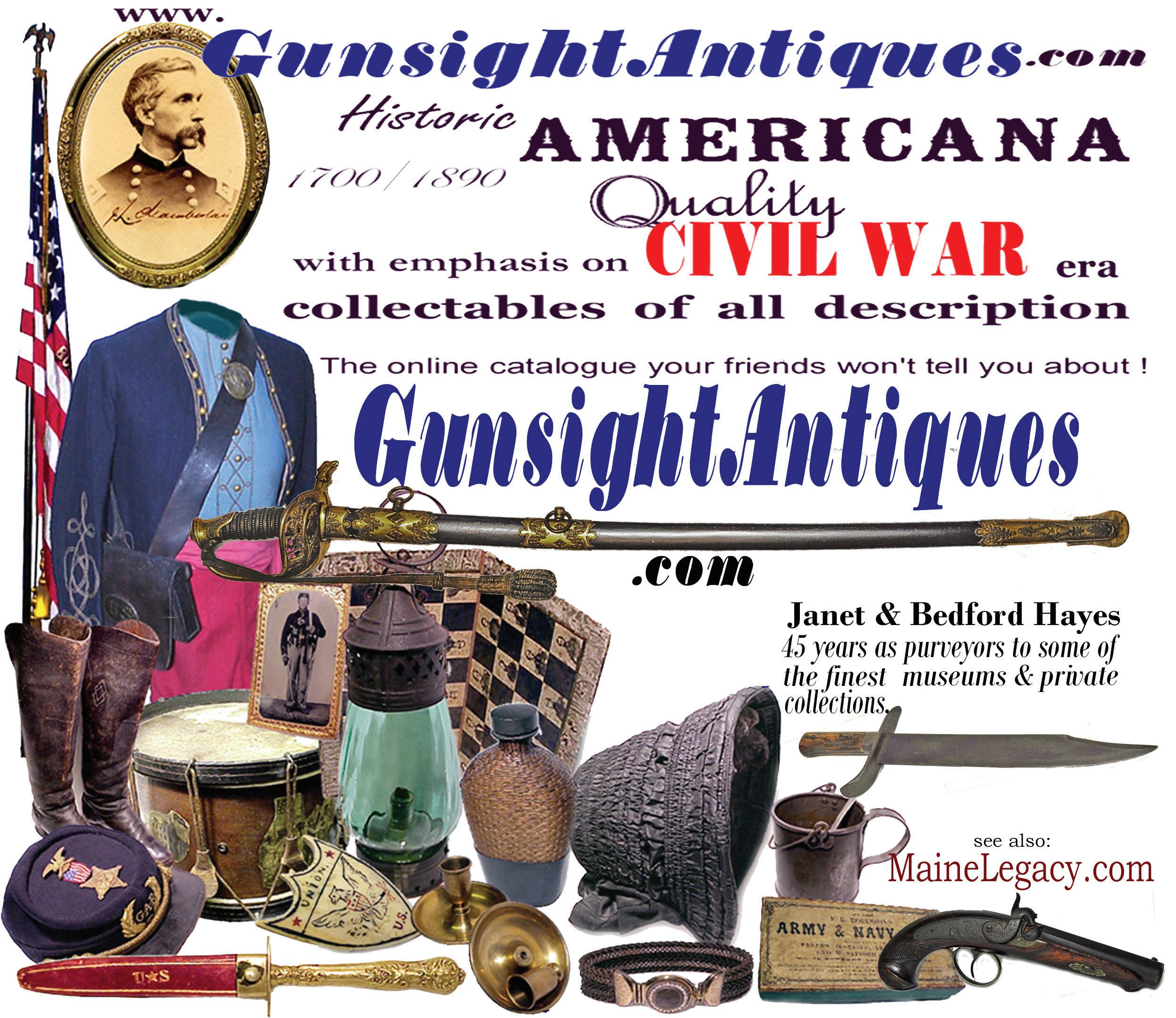
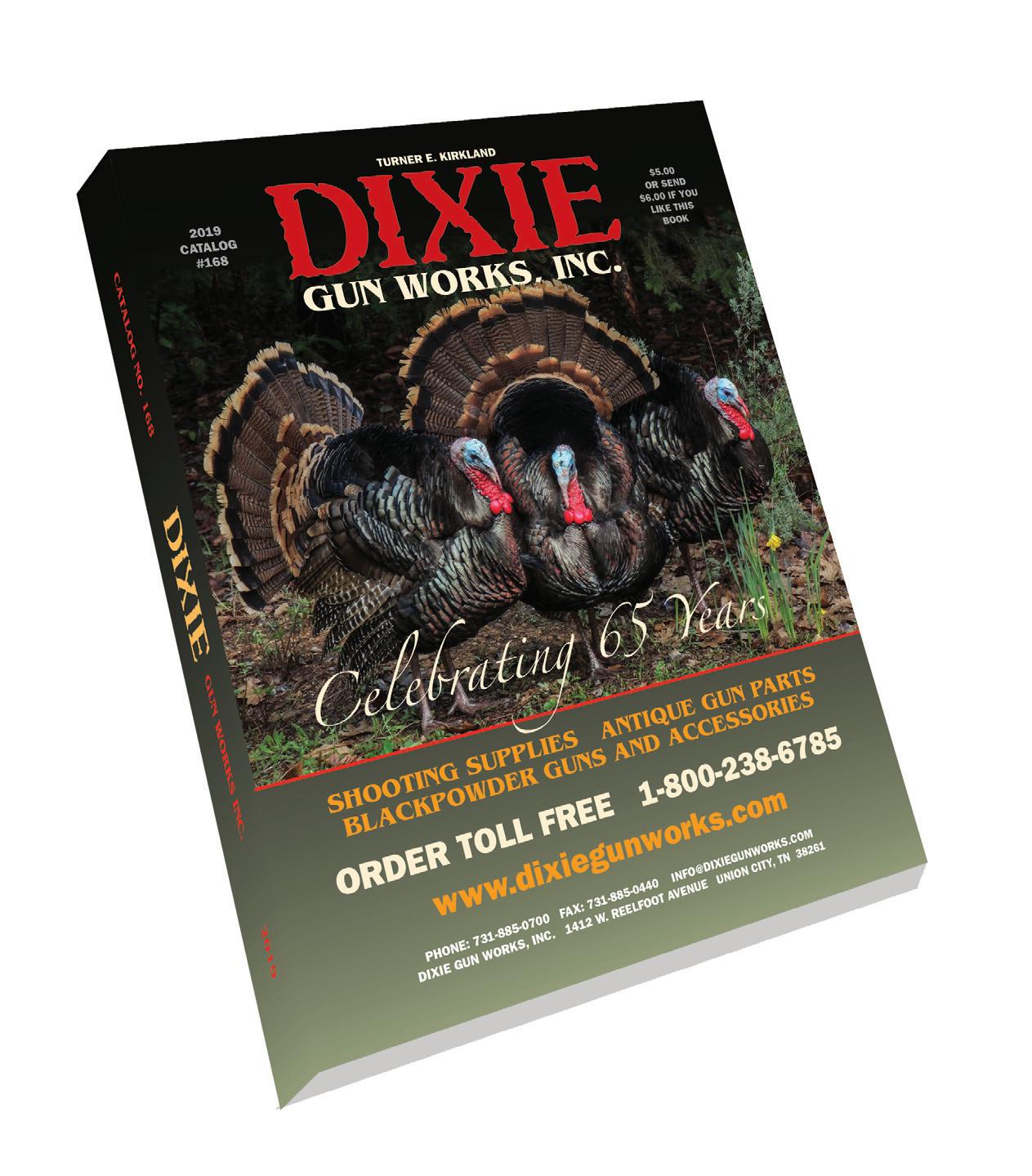



19 September 2019 Civil War News THE FINEST HISTORICAL ANTIQUE MILITARIA Wallace Markert info@csacquisitions.com 16905 Nash Road • Dewitt, Virginia 23840 804-536-6413 • 804-469-7362 www.csacquisitions.com VIEW ITEMS AND ORDER ONLINE! www.dixiegunworks.com Major credit cards accepted FOR ORDERS ONLY (800) 238-6785 65 First published in 1954 as a 12-page, pocket-sized 2019 DIxIE GuN WORkS catalog has more than 600 pages and more than 10,000 items— the world’s largest selection of blackpowder replica arms, accessories, antique parts, as well as muzhunting and sport shooting equipment. We thank our more than 75,000 loyal customers, including buckskinners, reenactors, modern blackpowder hunters and sport shooting enthusiasts, for 65 wonderful years. Gun Works, Inc. PROFESSIONAL SERVICE AND EXPERTISE GUARANTEED STILL ONLY$5.00! DIXIE GUN WORKS, INC. 1412 W. Reelfoot Avenue PO Box 130 Dept. 17 Union City, TN 38281 INFO PHONE: (731) 885-0700 FAX: (731) 885-0440 EMAIL: info@dixiegunworks.com
Kurz and Allison, Printmakers Antietam
The Graphic War highlights prints and printmakers from the Civil War discussing their meaning and most importantly, the print maker or artist’s goals.
During the war, the most prolific producer of battle prints was Currier and Ives, their competitors trailing them by a wide margin. Whereas Currier haphazardly rushed battle prints to market as “breaking news,” firms that produced battle art after the war viewed their work from historical and artistic perspectives. Print collectors uniformly agree that Currier’s battlefield scenes are sub-standard. If it were not for the legend in the title margin, the viewer cannot distinguish the Battle of Shiloh from the Battle of Gettysburg. Identical poses for different battles were used and reused. Some prints appeared to have been executed by two different hands. The same posture of wounded and dead, and grimacing faces can be easily identified from one print to another. As the war progressed, Currier pushed out their prints of recent battles sooner and sooner, often within days. They also became more stridently patriotic and their title margins reflected an unmistakable bias toward Union superiority.
In the universe of Civil War prints, especially lithographs, the majority of battle prints we are most familiar with were done well after the war, indeed, after Reconstruction. The two most prominent firms producing them were the Prangs of Boston and the Chicago firm of Kurz and Allison.1 The two “battled” for a market now eager to yield to nostalgia. Their approaches to the art work were entirely different and as a result, their work is easily recognizable and distinguishable. Both operated at the same time, during the 1880’s, and both appealed to the same market. The lost cause was well entrenched and, in the north, there was a nostalgia building for the
more romantic aspects of the war. Kurz and Allison were heavily influenced by the Gettysburg Cyclorama. Indeed, some of their foreground figures were direct “copies” of those on the giant canvas.
Before his partnership with Alexander Allison, Louis Kurz began his work in America in Milwaukee in June 1848. Milwaukee was the locus for many German artists employed on the Gettysburg and Atlanta Cycloramas. Kurz was born in 1834, in Salzburg, Austria, Ludovicus Ferdinandus Josephus Kurz von Goldenstein. It was in Chicago where he learned the art of lithography as he hired out as a house and sign painter. After a brief stint back in Milwaukee,
he returned to Chicago in 1876 where he met Allison, about whom little is known.2
The new partnership, unlike Currier and Ives, Kurz nevertheless named the company in the style of Currier and Ives3; and, much like Currier and Ives, most of Kurz’ battle scenes are interchangeable and indistinguishable save for the title margin telling the viewer what they are seeing. One such exception is the Battle of Antietam. Kurz chose the late afternoon action featuring Burnside’s Bridge, which makes the scene immediately identifiable. It is seen from the Confederate position on a much-truncated ridge, as the Southerners were fending off hordes of well uniformed,
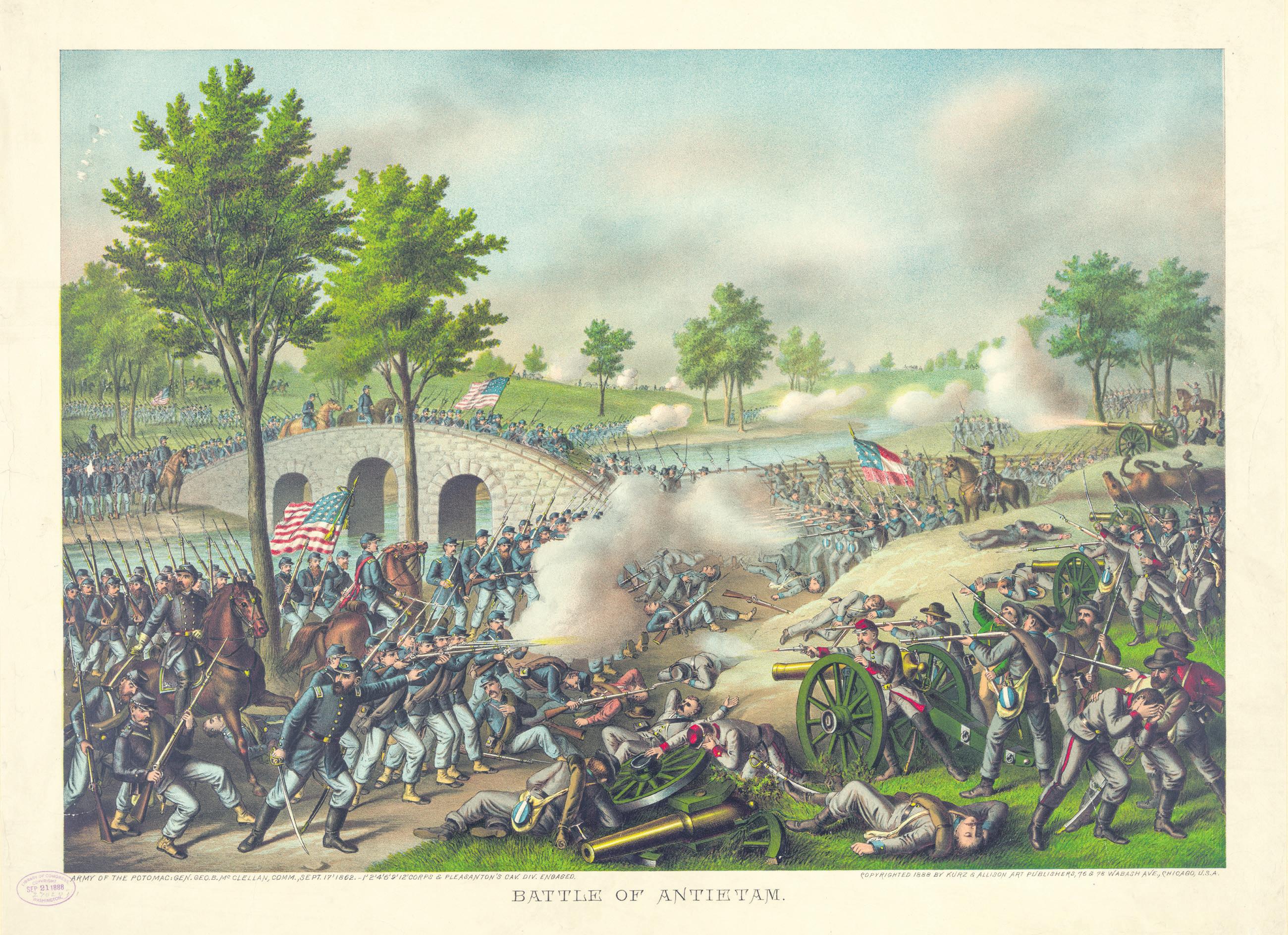
precisely marching, accurately firing, and overwhelmingly rigid Yankee attackers. As Harold Holzer, et. al. assert, “Louis Kurz, employing his eye for panoramic inclusion to good effect, focused on the picturesque bridge but surveyed the ranks of both armies and the verdant, late-summer Maryland countryside as well.”4
Between 1884 and 1894, the firm produced thirty-six battle scenes, some of them rare today. In the last century, they were reproduced and marketed during the Centennial. Peter Marzio, who wrote the definitive book on chromolithography, characterized the Kurz and Allison scenes as having a “mural like rigidity, a simplicity in drawing style, and poorly delineated details.” Marzio attributes these qualities to Kurz’s “experience to painting murals, an artform that aims at grand impressions easily perceived.”5 Another scholar, Jay Last, characterized the firm’s output as “hundreds of garish color lithographs” depicting scenes from the Revolutionary War, the War of 1812 (The Battle of New Orleans), the Civil War, the Spanish American War, and even the Johnstown Flood (“The Great Conemaugh Valley Disaster”). “Understatement was not a word in the Kurz and Allison vocabulary.”6
Endnotes:
1. See Harold Holzer, Prang’s Civil
War Pictures: The Complete Battle Chromos of Louis Prang. New York: Fordham University Press, 2001.
2. Thomas Beckman, “Louis Kurz: Early Years.” Imprint. Volume 7, No.1, Spring 1982, 14-25.
3. Harold Holzer, Mark E. Neely, Jr. The Union Image: Popular Prints of the Civil War North, Chapel Hill: The University of North Carolina Press, 2000, 210.
4. Ibid., 219.
5. Peter Marzio, Chromolithography,1840–1900: The Democratic Art, Pictures for a 19th Century America. Boston: David R. Godine, Publisher. 1979, 180-181.
6. Jay T. Last. The Color Explosion: Nineteenth-Century American Lithography. Santa Ana: Hillcrest Press, 2005, 111.
Salvatore Cilella is retired after 43 years in the museum field. His last position was President and CEO of the Atlanta History Center. He is the author of several articles and books. His most recent books are Upton’s Regulars: A History of the 121st New York Volunteers in the Civil War (U. Press Kansas, 2009) and The Correspondence of General Emory Upton, 1856–1881 (U. Tennessee Press, 2017) edited. He is editing a manuscript of Upton’s letters to his wife 1868-70 for the Oklahoma University Press due to be published late 2019, or early 2020.

20 Civil War News September 2019
Title: Battle of Antietam–Army of the Potomac: Gen. Geo. B. McClellan, comm., Sept. 17’ 1862, Kurz & Allison. (Library of Congress)
By Jack W. Melton Jr.
Hidden Evidence
A Look Inside Civil War Artillery Projectiles
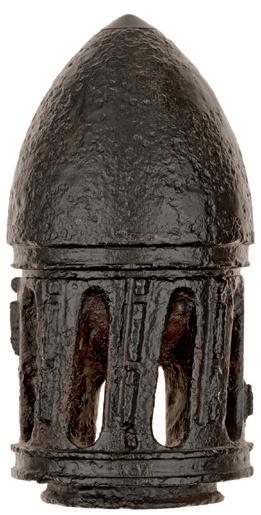

"Through Jack’s superb photography; the collector and professional can now view an extensive exposure to sectioned projectiles. This is new for the average person in that for the first time since radiography; one can examine the internal makeup of a shell."
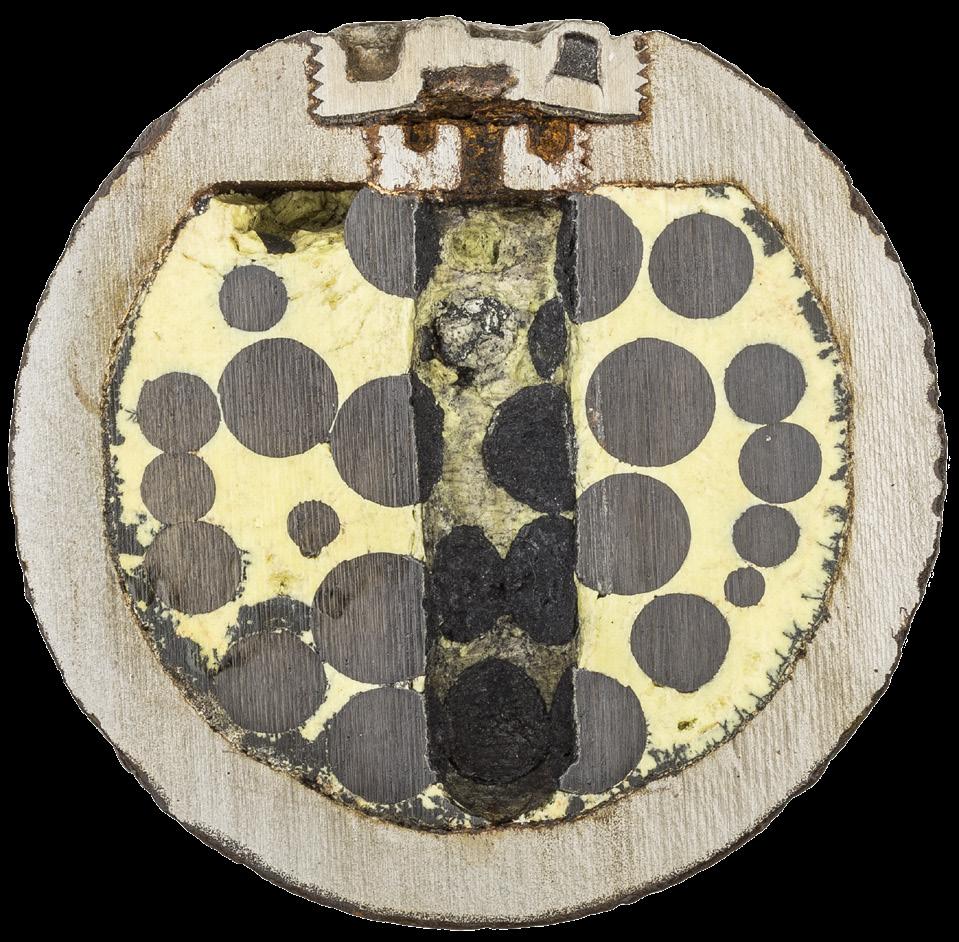

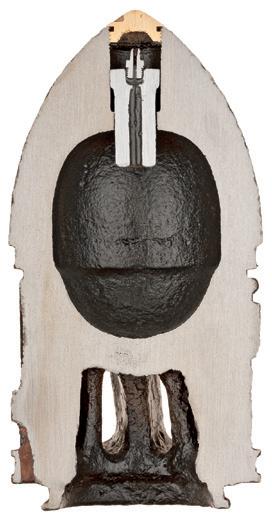
CWO4 John D. Bartleson Jr., U.S. Navy EOD
Author of Civil War Explosive Ordnance 1861–1865

What do they say?
Jack Melton’s latest endeavor, Civil War Artillery Projectiles – The Half Shell Book, is a remarkable addition to Civil War artillery ammunition literature. For archaeologists and collectors the clearly written text and the excellent photographs provide a wealth of information to properly identify recovered shells and burst fragments. For bomb squad and EOD specialists this book should be on every units’ shelf. The material found in these pages will help EOD personnel identify what has been found, whether or not it is dangerous, and how to inert the round without the necessity of destroying an important historic object. This book takes Civil War artillery ammunition studies to a new level.
Douglas Scott Adjunct Research Faculty, Colorado Mesa University. Author of Uncovering History: Archaeological Investigations of the Little Bighorn.
Wow. I have been reading a lot of different books on ordnance from this era, but this one takes the cake. Most of the other books drift off in directions that are not helpful with the ordnance specific information I am usually looking for. But this book stays on task and topic from start to finish.
flame’scommunicationchannel.Theblackpowderburstingchargewaspouredinloosearoundthebullets.Thismethoddid notworkverywellandoftenonlysucceededinblowingthefusesout.Projectilesfilledwithbulletsusedascaseshotarerare. Thisspecimenwasrecovered,alongwithotherConfederateandUnionprojectiles,fromthepost-CivilWardumpsitelocated neartheConfederatePowderWorksinAugusta,Georgia.
Inthisexample,riflebulletswereutilizedasthecaseshotmaterialincluding3-ring.58caliberbullets,3-ring.69caliberbul lets,andU.S.ring-tailSharpsbullets.IthasabrassBormannsupportplug(underplug)thatiscountersunkonbothsidesof
• 392 pages of full color photographs with descriptions
• Covers projectiles, fuses, canister, grapeshot and more


• 850 photos, drawings, radiographs, patents and maps
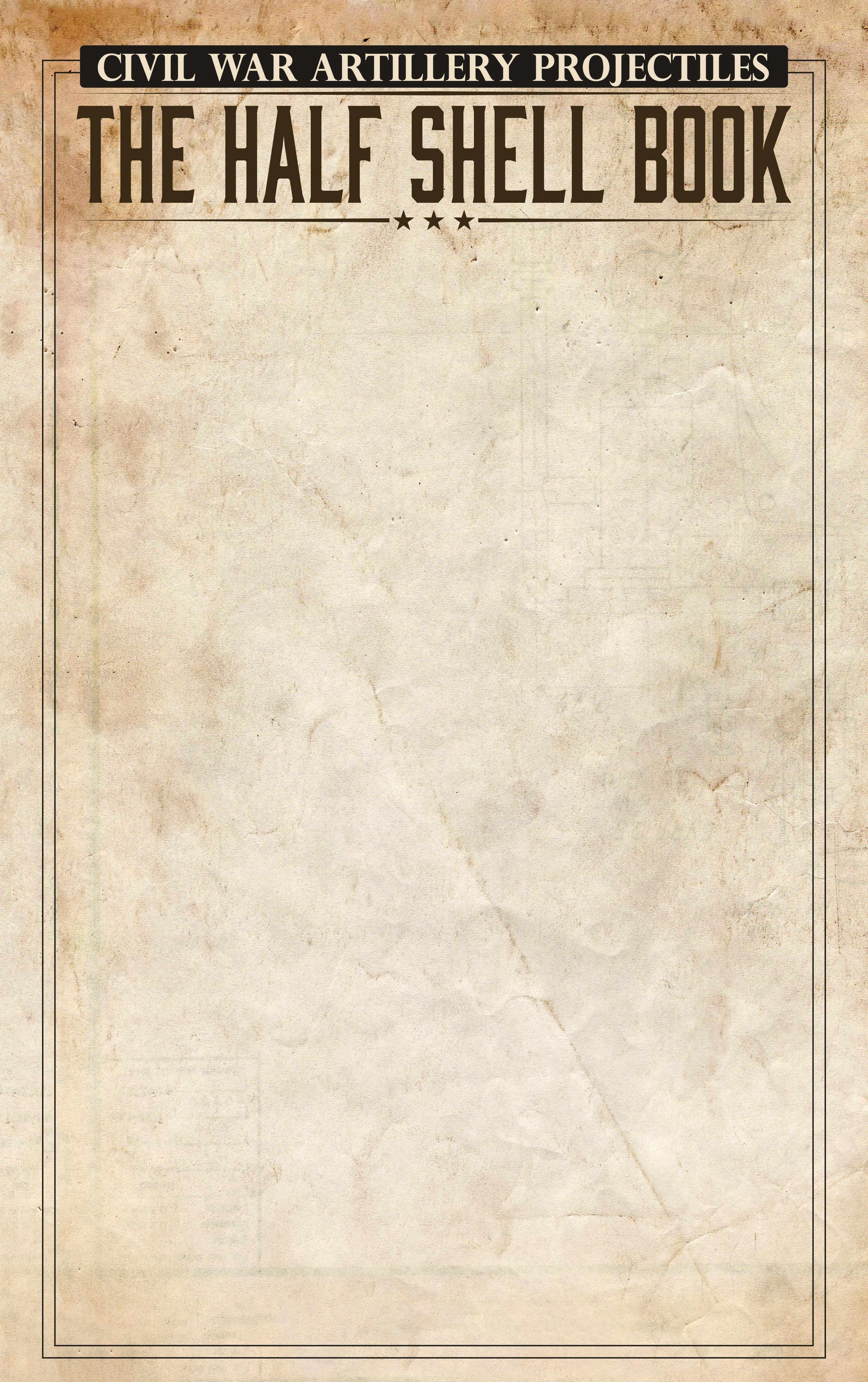
• A must for every serious artillery enthusiast
Online at www.ArtillerymanMagazine.com or fill out this form and mail to the address below. Copies will be mailed
Tom Gersbeck
MFS, Graduate Faculty, Arson-Explosives Investigation (AEI), School of Forensic Sciences, Oklahoma State University
Jack Melton’s new book Civil War Artillery Projectiles – The Half Shell Book, promises to be one of the most important volumes on Civil War artillery in recent times. Anyone who has studied the wide variety of Civil War projectiles knows that what is inside is just as important, and maybe more so, than what is outside the shell. In this book, cutaway shells are graphically explained with superb color photographs and detailed notes. They reveal important details and differences in a variety of similar projectiles that tell us U.S. from C.S. and between type variations, in a way that no other approach has ever done. It is supremely helpful in explaining to others just how a shell works, whether it is still dangerous or not, and why.
Les Jensen
Former Curator of the Museum of the Confederacy
21 September 2019 Civil War News
ChapterThree –SphericalHalfShells 74
the
Diameter: 3.58 inches Bore Diameter: 3.67 inches Gun: 6-pounderSmoothbore Weight:5.2poundsConstruction: Case shot FusingSystem:Time,Bormann FusingMaterial: Leadandtinalloy Fuse Thread Diameter: 1.65 inches Fuse Hole Length:.75 inch Sabot: Cup Sabot Material: Wood Wall Thickness: .31 inch Matrix Material: None Case Shot Material: Lead Case Shot Diameter: Varied calibers Bormann time fuse Brass supportplug Sharpsring tail bullet Horseshoe powdertrain Confederate
SphericalCaseShot
ourprojectiles,(andoccasionallyusedbyourownmen,)of mixingmusketbulletswiththeburstingchargeof smallshells, wasentirelyfutilefromwantof weightinthebullets. –GeneralHenryL.Abbot 259 Civil War Artillery Projectiles – The Half Shell Book Federal 3.8-Inch James Type I Shell Diameter: 3.72 inches Bore Diameter: 3.80 inches Gun: 14-pounder James Rifle Length 6.75 inches Weight: 10.0 pounds Construction: Shell Fusing System: Percussion, James Fusing Material: Brass Fuse Thread Diameter: .90 inch Fuse Hole Length: 1.56 inches Sabot: Ring or band, lead (missing) Sabot Height-Width: 2.62 inches Wall Thickness: .62 inch Matrix Material: N/A Case Shot Material: N/A chargeBursting cavity Anvil cap Zinc plunger Iron nipple Fuse powder train Ring base The James percussion fuse consists of a bronze anvil cap with a zinc plunger fitted with a nipple. Both are smaller in diameter than the James percussion fuse on the previous page. This sub-pattern is commonly called tie-ring James due to the visible ring extending below the base of the projectile body. The visible small notches, located in the raised portion of the projectile’s ribbed body, were developed in an attempt to improve the chances of the lead sabot remaining attached to the projectile body during firing. This pattern James projectile is less common than the flat based James projectile. James percussion fuse
6-Pounder
Theexpedienttriedbytheconfederatesinimitationof
Purchase
starting Nov. 1st, 2018 Name: Mailing Address: City: State: Zip Code: Phone: Email: ☐ Standard Edition $89.95 + $8 shipping* = $97.95 ☐ Deluxe Edition $125.00 + $8 shipping* = $133.00 (100 limited edition copies) *Shipping via USPS Media Mail. USA Only. International orders email for shipping quote. If you wish to have the author inscribe the book beyond signing and dating it (on the title page) please indicate your preferred text below: Custom Text: U.S. Dollars Only Check or Certified Funds Check# Make checks payable to: Historical Publications LLC ☐ Discover ☐ Mastercard ☐ Visa Card#: Exp. Date: Security Code: Name on Card: Billing Address: City: State: Zip Code: Signature: Historical Publications LLC 520 Folly Road, Suite 25 PMB 379, Charleston, SC 29412 800-777-1862 • mail@artillerymanmagazine.com Now Available!
The Oldenburg “Cyclops” –The “One Eyed” Musket of the Civil War

The American Civil War provided an opportunity for European arsenals to divest themselves of a wide array of obsolete and unwanted small arms in a very short period. While some arms were relatively high quality, some equal to the American U.S. M1855 and M1861 rifle muskets, others were practically useless; either due to their age and obsolescence or due to their poor condition. Confederate purchasing agents concentrated their efforts in obtaining first quality arms like the Pattern 1853 Enfield from Great Britain, with secondary arms being sourced from Austria in the form of the M1854 Lorenz. U.S. agents pursued the same sources as well, but also bought

practically anything for sale on the continent. The reasons for the U.S. acquisitions were two-fold; first to arm their rapidly growing army of Union volunteers, but secondly to keep these arms from potentially falling into the hands of Confederate purchasing agents.

Some of the most varied, and in many cases most obsolete, arms acquired by United States purchasing agents came from various German states. During this period there was no unified German nation, but rather a loose confederacy of Germanic states, including kingdoms, duchies, and smaller principalities, with militaristic Prussia as the largest and most powerful. In 1841, the Prussians had adopted what was the most advanced infantry rifle in the world the, Leichte PerscussionsGewehr M-1841 or the “Light Percussion Rifle M-1841.”
Johann Nikolaus von Dreyse’s
invention would be known as the Zündnadelgewehr in the German speaking countries, and as the “Needle Gun” around the world. This bolt action breechloading rifle was so technologically advanced that it made all percussion ignition muzzleloading long arms obsolete.
The Prussians initially treated the invention as a state secret. Thus, it was the early 1850s before the technology was widely known outside Prussian military circles. Due to the major technological advance of the needle rifle, Prussia and its allies found themselves with huge quantities of obsolete arms they were only too glad to offer to U.S. purchasing agents. The models ranged from the ubiquitous Prussian Model 1809 “Potsdam” musket, a percussion converted smoothbore flint musket imported in quantities that exceeded 100,000 units, to guns purchased in relatively small quantities including the Prussian M1849 Naval Rifle, the Saxon (Dresden) M1851 and M1857 Rifles, the Bavarian M1842/51 Rifles and Suhl made copies of the British Pattern 1853 Enfield and the U.S. Model 1861 Springfield. Some of the rarest and least often encountered of these scarce Germanic arms were those used by the Grand Duchy of Oldenburg prior to their acquiring the very modern Prussian Model 1841 needle rifle.
The Grand Duchy of Oldenburg was one of the smaller Germanic states. Of the thirty-nine member German Confederation, most sources rank Oldenburg tenth in size. While larger than many other members, some of which were little more than glorified city-states, the small territory of Oldenburg appears to be little more than a tiny subsection of the much larger Kingdom of Hanover that surrounds it on period maps. The Duchy was located in the northwest corner of the German Confederacy on the North Sea, and had been a major part of the old Hanseatic League. With the rise of the German Confederation (1815–1866), Oldenburg, in association with the Hanseatic cities of Bremen, Lübeck, and Hamburg, formed the Hanseatic
Brigade, whose troops served in the 10th Corps of the German Confederation’s army.
Oldenburg had adopted a revolutionary oval bore percussion musket in 1839, with early models rifled with two grooves and later models rifled with four. These guns were conventional side lock percussion rifle muskets with 17.2 mm bores (about .68 caliber) that fired either a patched .66 caliber ball, for accurate fire or a quicker loading .65 caliber ball for more rapid, sustained volley fire.
In 1843, Oldenburg adopted a new pattern of percussion muzzleloading long arms, known as the Mittelschlossgewehr (Center Lock Rifle), that has been given the nickname Cyclops by American collectors. The guns used an unconventional, internal lock mechanism with no external lock plate and a centrally mounted hammer. For collectors of Civil War arms, the design somewhat resembles the Reed & Watson muzzleloading alterations done by the Confederacy to Hall Rifles.
As the hammer was centrally mounted and obscured the front sight, a sighting “window” was cut into the hammer between the spur and the nose that allowed the shooter to align this notch with the front sight, when the hammer was cocked. This unique sighting feature provided the source for the gun’s nickname as the Cyclops, a reference to the oneeyed giants of Greek mythology. The design was the brain child of Lt. von Weltzien of Oldenburg, who championed the theory that a straight, central line of ignition directly from the breech was the most efficient method of getting reliable detonation of the powder charge.


Oldenburg adopted two models of Weltzien’s design in 1845, a non-commissioned officer’s rifle and a longer infantry rifle musket. References in English are somewhat limited, and these guns are given several different model year designations based upon the interpretations of various authors. Firearms from Europe by Whisker, Hartzler, Yantz, and Noe uses the designation Model 1849 for both variants. This is the most commonly used name for these guns in America but is likely the least accurate. In European Bayonets of the American Civil War by Noe & Serbaroli, the authors use the designations of Model 1844 and Model 1845 for the infantry rifle musket and NCO rifle, respectively. In the most recent work on the subject, European Arms in the Civil War by Schwalm & Hofmann, the authors use the designation
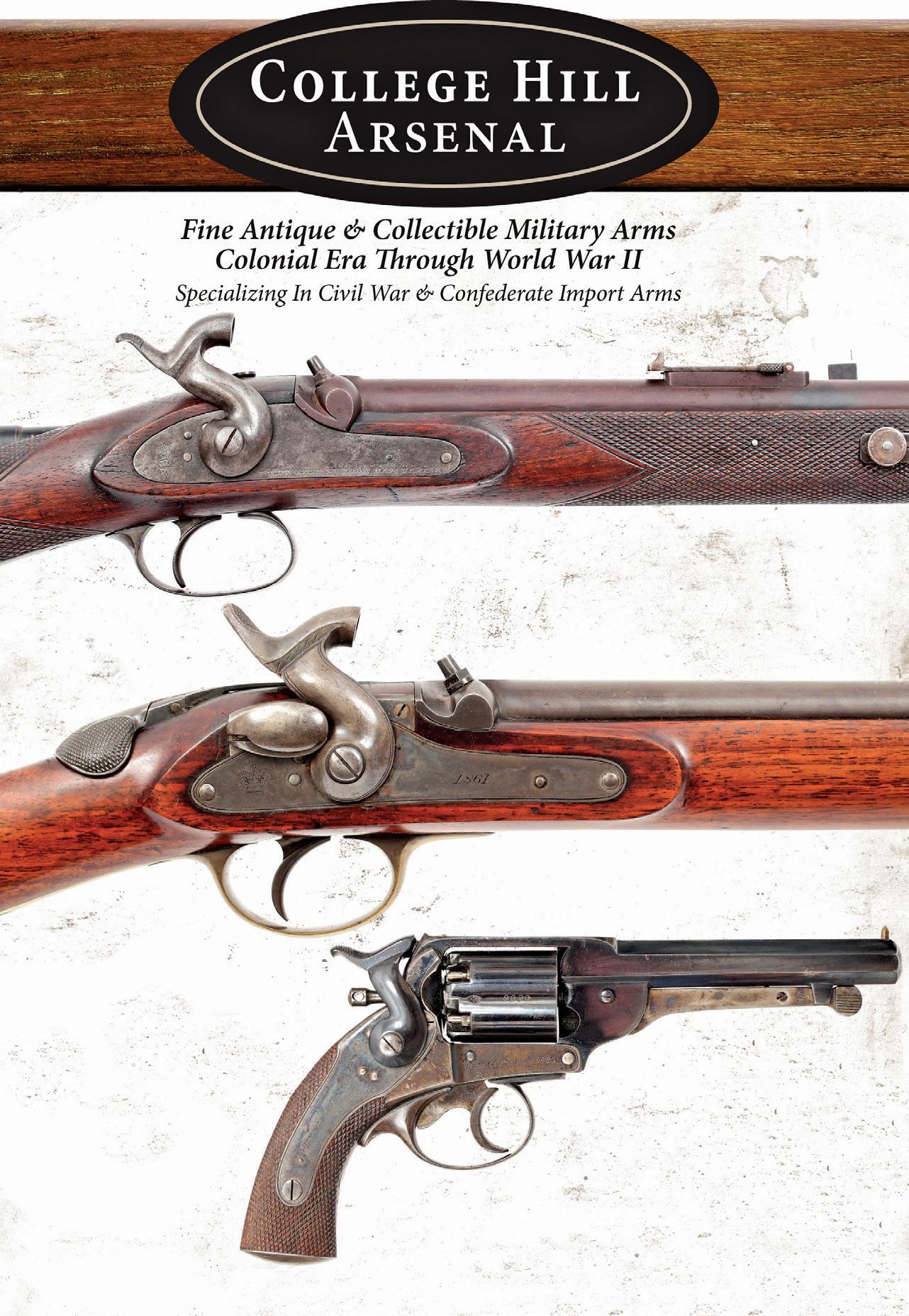
of Model 1843 for the NCO rifle and do not apply a model designation for the infantry rifle musket, leaving one to assume that they also consider that gun to be a M1843. As the authors are German, have access to information on German arms that is not typically available to English language researchers, and have been studying the subject in their own country for many years, I will defer to their designation for the NCO rifle and will use the Noe & Serbaroli designation for the infantry musket.
It should be noted that Schwalm & Hoffman also identify the Model 1843/48 as being those arms that were modified by adding a Tige pillar breech circa 1848. Like much of Europe during the late 1840s, the Duchy of Oldenburg modified many muzzleloading guns in their inventory by adopting the French Thouvenin tige (pillar breech) system to adapt the guns from round ball to elongated, expanding base ammunition.

Regardless of pattern designation, both models of “Cyclops” used the central lock and hammer mechanism and had 17.2 mm caliber bores (about .677 inch) rifled with four narrow grooves. The central patent breech and chamber area was octagonal, becoming round about 3 inches from the breech end. The NCO rifle had a nominally 33 inch barrel, while the infantry rifle musket had a nominal 39 inch barrel. The guns used wedges to retain the barrels, two wedges for the rifle and three for the rifle musket, giving the appearance of older pattern flintlock arms. The guns were mounted with a combination of both iron and brass furniture with iron for the buttplate and finger-grooved trigger plate and brass for the triggerguard, nose cap, and ramrod pipes. Sling swivels were attached to the forward bow of the triggerguard and the upper ramrod pipe. The heavy iron ramrod was secured by the brass pipes.
As previously mentioned, a sighting “window” in the arc of the hammer nose provided a rear sight; the front sight was a brass blade dovetailed into an iron base. A stud to accept a socket bayonet was located under the barrel, about .875 inch from the muzzle. Schwalm & Hofmann indicate that the French/Belgian M1822 pattern bayonet was the correct one for these muskets, while Noe & Serbaroli say that the correct pattern of bayonet has yet to be identified. Stocks were walnut, with a typical Europeanstyle raised cheek rest on the reverse. Like most Germanic arms of the period, the guns were serial
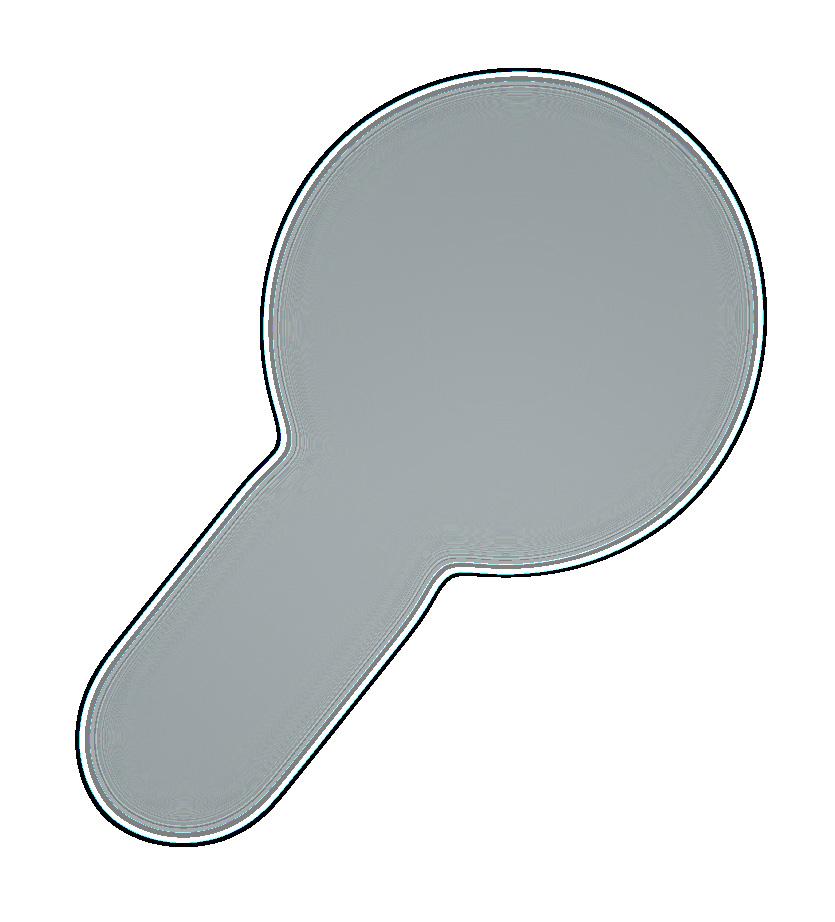
22 Civil War News September 2019 www.CollegeHillArsenal.com Tim Prince College Hill Arsenal PO Box 178204 Nashville, TN 37217 615-972-2418
(assembly) numbered throughout, with the full serial number on larger components and the last two digits on smaller components like screw heads. The guns were marked by their maker, “Craufe in Herzberg,” in script on the upper tang, with the “s” in Crause written in the archaic fashion as an “f.” Additional markings include Oldenburg inspection or proof marks on the breech, sub-inspection marks on many small parts, and an Oldenburg cartouche on the obverse buttstock.


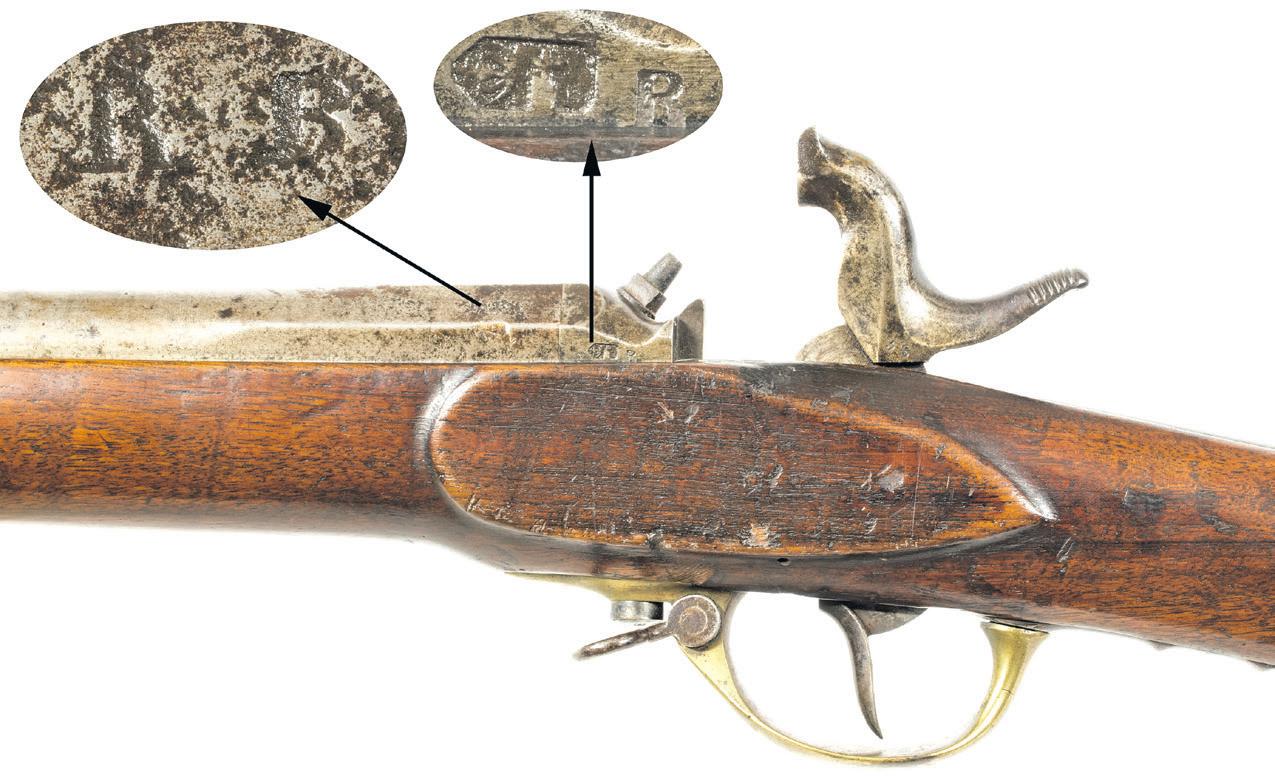


The guns were produced on contract by the Hanoverian firm of Carl Phillip Crause located in Herzberg. The old Hanoverian state armory had been located in Herzberg and when the Kingdom of Hanover fell to Napoleon in 1807, it had been put back into service to make arms for the French military and Napoleon’s allies. After Napoleon’s defeat in 1814, the armory again fell into a period of disuse. Crause took over the Herzberg armory circa 1820 and began to produce small arms for Hanover and other small Germanic states, including the Hanseatic League. Crause produced Oldenburg’s earlier oval bore long arms and also received the contract for the new Oldenburg Mittelschlossgewehr long arms. He produced a total of three hundred of the shorter NCO rifles and nine hundred of the infantry rifle muskets, although it had been intended to produce fifteen hundred of the longer guns. In 1848, as the transformation to Tige breech arms took place, the older pattern sidelock, oval bore arms were found to be more adaptable to the new elongated ammunition, as new rear sights could be added to take advantage of the new ballistic capabilities of the ammunition. The center lock “Cyclops” rifles could not be so modified because the hammer location prevented mounting a new long-range rear sight on the barrel; so there was little advantage to be gained from the modification. As a result, the guns were soon withdrawn from front line service, and by 1854 were being issued for garrison duty only. By 1860, the guns were simply in storage; Oldenburg was looking for buyers for their obsolete guns to help finance an order for Prussian M1841 needle rifles. According to research by Schwalm & Hofmann, the Cyclops guns, along with some 4,100 other “Herzberg” muskets and some 2,500 guns from Wurttemberg were sold to the firm of Friedrich Wipperfuerth, located at Beneisstrasse 61 in Cologne, one of the larger Prussian cities. Wipperfuerth subsequently offered these guns
for sale to any willing buyers. The association of the Cyclops rifle with the American Civil War was first mentioned in William B. Edwards’ ground breaking book Civil War Guns. This was one of the first serious books to look not only at domestically produced small arms used during the conflict, but to also look at imported arms used during the war. Edwards was little more than speculating about their acquisition, but he did note that extant
Civil War News
examples were known, most prominently one in the collection of the U.S. military museum at West Point. It was not until much more complete research during the last few years was published that the actual source for the guns was determined along with their concrete association with the American Civil War.
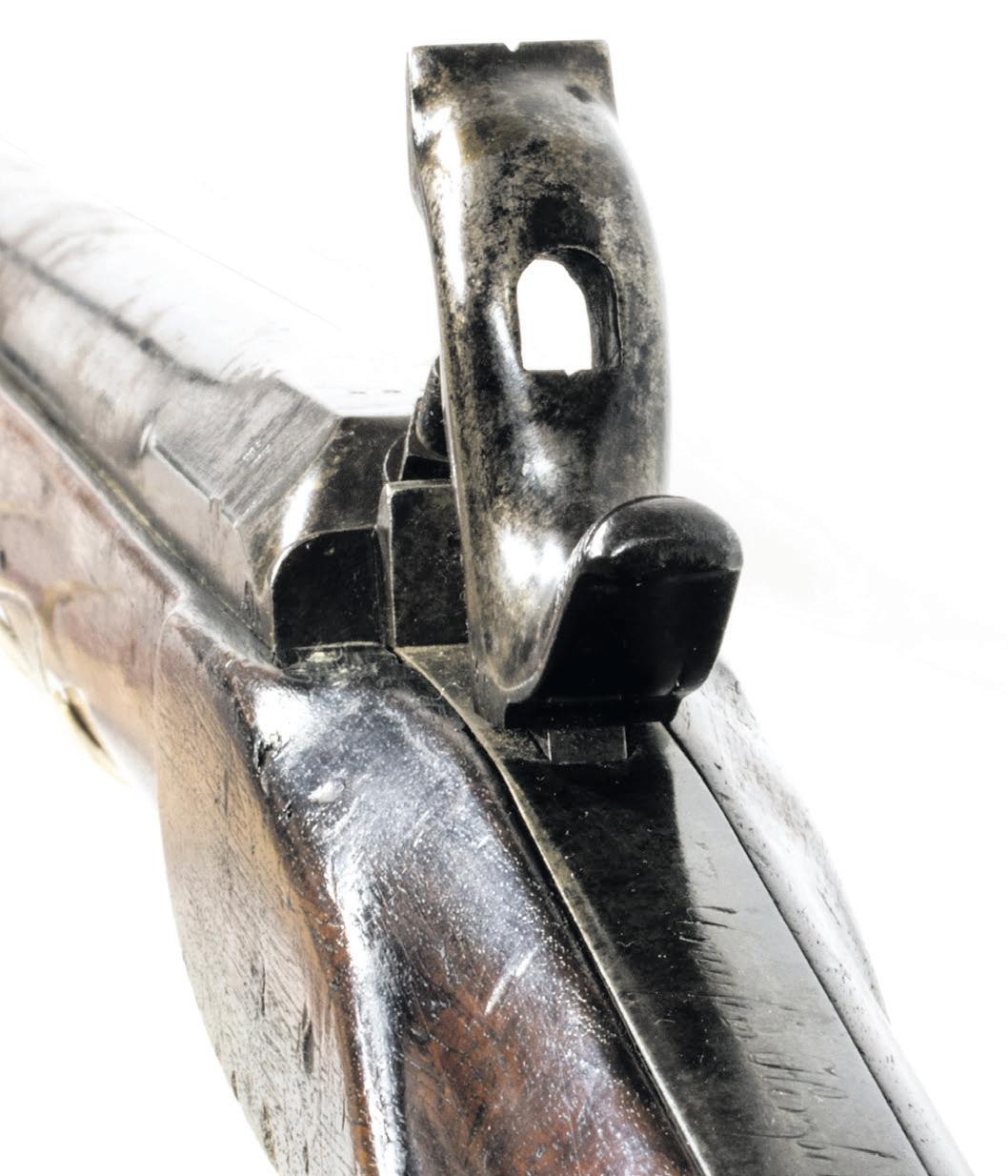

Author and researcher Joe Serbaroli Jr. discovered this link while going through the correspondence of Henry Sanford, the
U.S. Minister to Belgium during the Civil War. Sanford had been given access to one million dollars in U.S. funds, held in a London bank, for acquiring small arms in Europe. Sanford was one of the purchasers who was very clear that his intent was aimed more at depriving the Confederacy of arms, rather than obtaining them for Union use. As such, he seems to have concentrated on acquiring guns that today we would consider marginally useful at best. Mr.
Serbaroli reprints part of a May 18, 1861 letter from Sanford in his book, which is quoted in part below:
There are yet here 4,000 exceedingly fine Herzberger Infantry Rifles partly used partly quite new, 1,400 of them are twice rifled and remainder 4 times all of the same caliber and same shooting qualities (900 of them are extra tirailleur rifles with the cock in the center line of the gun)….
the serial
23
September 2019
Overall obverse view of Oldenburg “Cyclops” infantry rifle musket #658.
Overall reverse view of “Cyclops” #658.
Close up of the “Cyclops” “lock” area.
Reverse of the “Cyclops” “lock area” with proof and inspection marks in detail.
Central hole in the hammer of the “Cyclops” rifle musket, the source for the nickname.
Breech and tang area of “Cyclops” #658 showing
number, Crause in Herzberg tang mark, and inspection and partial serial number on tang in detail.
Oldenburg cartouche on the obverse butt.
The lowest price would be $6 –(six American dollars) a piece net cash without discount by the average to a buyer of the whole lot.
Obviously, Sanford is referring to some surplus guns from Oldenburg and the other Hanseatic League members that were being offered for sale in Cologne by Wipperfuerth. The “twice rifled” guns are clearly the oldest of the two-groove, oval bore guns, but it is the underlined parenthetic comment: 900 of them are extra tirailleur rifles with the cock in the center line of the gun, that pertains here. Clearly, this indicates that nine hundred “Cyclops” guns were being offered for sale. Interestingly Sanford uses the French term tirailleur which means “sharpshooter” to describe the guns. This may be a result of his assuming the center mounted hammer somehow made the guns special and more accurate. More likely, it simply shows his lack of knowledge about small arms, as he also goes on to describe these obsolete arms by saying The fine quality of these arms which can compete with every other gun is guaranteed. While no specific document lists these arms as being purchased by Sanford, he did purchase a total of 27,648 rifled muskets of various patterns. As this group was clearly made up of several different patterns, it is likely that the guns were simply lumped into a category like the “Rifled Muskets, Prussian, .70 caliber” in later reports or correspondence, as the guns originated from an arms dealer in Prussia and did not come directly from Oldenburg. As the guns are practically non-existent in modern Germany and the handful of known examples typically survive in American collections, as well at West Point, it seems almost certain that the majority of the twelve hundred “Cyclops” guns produced (900 infantry rifle muskets and 300 NCO rifles) were acquired by the US government during the early days of the American Civil War. Authors Schwalm & Hofmann refer to additional research noting that
some 2,680 Oldenburg / Lübeck / Bremen muskets were provided to the state of Ohio by the U.S. Government and that some saw service with the 56th Ohio Volunteer Infantry.
The photos accompanying this article are of an Oldenburg Mittelschlossgewehr infantry rifle musket Model 1844/48. The gun is serial number 658, with the full number found on the top of the barrel and the rear of the trigger plate, while the last two digits, “58,” appear on most small parts. When viewed from the muzzle with bright light, the pillar of the Tige is clearly visible at the bottom of the breech. The gun is complete, with the exception of an old replacement ramrod that appears to have come from a period shotgun and the small stud under the barrel that the socket bayonet locks against. While exact numbers are not known, it is generally believed that only about ten to twelve extant examples of these scarce Civil War import arms have survived to be part of collections, both public and private, in the United States today.
Tim Prince is a full-time dealer in fine & collectible military arms from the Colonial Period through WWII. He operates College Hill Arsenal, a web-based antique arms retail site. A long time collector & researcher, Tim has been a contributing author to two major book projects about Civil War era arms including The English Connection and a new book on southern retailer marked and Confederate used shotguns. Tim is also a featured Arms & Militaria appraiser on the PBS Series Antiques Roadshow.
Our First Sale
By Stephen Davis
Every author wishes to remember his first book sale.
Ours came in Savannah, Ga., on July 17.
Jack, Peggy, and I met at Wiley’s Championship Barbecue, slightly south of the city, for a fine lunch. Wiley’s Owner Janet McCrary told us that Southern Living has nominated Wiley’s as best ‘cue restaurant in Georgia.

I ordered the pulled pork plate; the Melton’s had the ribs. Anyway, Jack had just received from his printer copies of our new book 100 Significant Civil War Photographs: Atlanta Campaign. After my BBQ, I was signing copies of our paperback (see ad page 29), when a gentleman at the table behind us came up.
“Are you Stephen Davis?” Yes.
“Well, I want to buy your book.”
He was Dwan Russell, and
Peggy entered his purchase on her PayPal.
I signed our book as he asked:
“To Dwan, Renee, Harrison & Wynston—I hope that you enjoy

this as much as you have enjoyed your 2019 trip to Savannah.”

Afterward, Jack even took our picture. Thanks, Mr. Russell! You were our first sale!
Battle of Bristoe Station

156th Anniversary Events

Saturday, October 12, 2019
11:00 am - 4:00 pm: Military Living History and Special Guided Tours
7:00 - 9:00 pm: Evening Luminary featuring over 800 luminaries
Sunday, October 13, 2019
11:00 am - 4:00 pm: Military Living History and Special Guided Tours


Thursday, October 17, 2019
7:00 pm: Historian and author Jeffrey Hunt presents Meade and Lee at Bristoe Station” at Old Manassas Courthouse (donations accepted)
October 19, 2019
Fall 1863 Campaign Bus Tour: Bristoe Station to Mine Run
8:30 am - 5:00 pm: Tour the battlefields of the Fall 1863 military campaigns in Northern Virginia with historians and authors Chris Mackowski, Michael Block, and Rob Orrison. Sites to be visited on the tour include the battlefields of Bristoe Station, Buckland Mills, Rappahannock Station, and Mine Run. Tickets are $70 per person and includes transportation and lunch. Call (703) 366 -3049 to reserve your seat today!


To request reasonable ADA accommodations, please call (703) 792-8066.
October 12 - 19, 2019 www

24 Civil War News September 2019 Subscribe online at CivilWarNews.com
pwcgov org/history historicpreservation@pwcgov
(703)
org
792-4754
Station Battlefield Heritage Park Corner of Iron Brigade Unit Ave. and Tenth Alabama Way, Bristow, VA (703) 366-3049
Bristoe
Left to right: Renee, Harrison, infant-in-arms, Wynston, Dwan and author Stephen Davis.
“Best Little Book on Barnard”
of Charleston, S.C., is proud to announce publication of its new paperback, Civil War Photographs: Atlanta Campaign Davis.
Brady, Alexander Gardner and Timothy O’Sullivan are famous for having made iconic photo graphs in the Civil War’s eastern theater. George N. Barnard de serves to be ranked in this top tier for his photographic work in the war’s western theater.
Barnard was a civilian photographer hired by Gen. William T. Sherman’s chief engineer, Capt. Orlando Poe, to take pictures of fortifications around Atlanta. Barnard took several hundred of them in and around the city in the fall of 1864. His most famous is the site of Union Maj. Gen. James B. McPherson’s death in the Battle of Atlanta, July 22, 1864.
Thus far, no comprehensive, definitive listing has been made of the photographer’s work. The Library of Congress has 130 images; the U.S. Military Academy at West Point has at least 98 photographs, donated by Captain Poe’s widow in early 1896. Along with the pictures she donated a typed list of them, each with Barnard’s meticulous caption.
The challenge in Barnardiana is that the photographer took multiple shots of the same scene, usually from slightly different perspectives, while the “Poe list” at West Point may include only one numbered image. That means that there are lots of uncataloged Barnard photographs still popping up.
On the right is an example: a view of the ruins of the Atlanta Rolling Mill that (so far as we know) has not been published— till now. It shows the wreckage of the Confederate ordnance train blown up the night of the evacuation, Sept. 1-2, 1864. It has reposed at the USMA since Eleanor Poe donated it!

Betcha haven’t seen this one!
By Stephen Davis Special to Civil War News
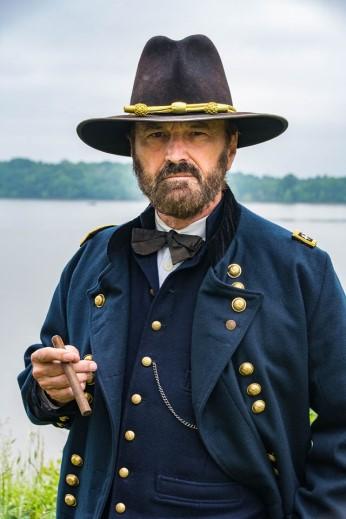

Quick! What’s this view—a photograph taken by one of the Civil War’s most prominent cameramen?
Chances are that you’ve seen a slightly different view of this same scene in
• Francis Trevelyan Miller’s Photographic Views of the Civil War (1911), vol. 3, p. 135;
• Lamont Buchanan, A Pictorial History of the Confederacy (1951), p. 243;
• William C. Davis, ed., The Image of War: 1861–1865 (1983), vol. 5, p. 292; or
• Jeff L. Rosenheim, Photography and the American Civil War (2013), p. 210.
Hint: it’s also in countless histories of the Atlanta Campaign. In the Brig. Gen. Clement Anselm Evans Memorial Research Collection—AKA my personal library at home—I found fifteen books in which the companion photograph has been published.
But this one? Nada. We’re fortunate to have found it in the
Orlando M. Poe Collection at the U.S. Military Academy, its collection of George N. Barnard photographs. To our knowledge, it’s never been published… …until now, on page 112 of our new book, 100 Significant Photographs of the Civil War: Atlanta Campaign. The page is reproduced below.
Editor’s note: we are delighted to announce that America’s Civil War is working with Steve Davis and Jack Melton to publish a dozen of the Barnard photographs shown in our book. The pictorial portfolio is scheduled for the magazine’s January 2020 issue.
100 Significant Civil War Photographs: Atlanta Campaign
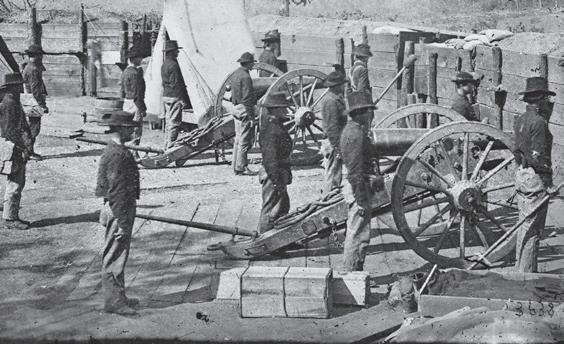
Our book, Steve writes, has several different sections: a survey of Barnard’s life and work, an overview of the Atlanta Campaign with eight contemporary maps, thumbnails of twenty Union and Confederate generals, plus a short bibliography. The more than one hundred photographs themselves are grouped under such headings as “Atlanta Scenes” and “Federals in Atlanta.” The largest section shows Confederate fortifications, with multiple views of such major artillery positions as Fort Hood. Each is offered with a caption reflecting Davis’ decades of looking at Barnardiana.

A unique section, “Barnard Under the Microscope,” magnifies jaw-dropping details in eight photographs—those are black people on the boxcars!
Publisher Jack Melton has meticulously reproduced Barnard’s photography with clear and sharp images on quality gloss stock. This is just one more reason that Jack and Steve like to call our work “the best little book on Barnard.”
The price for Stephen Davis’
100 Significant Civil War
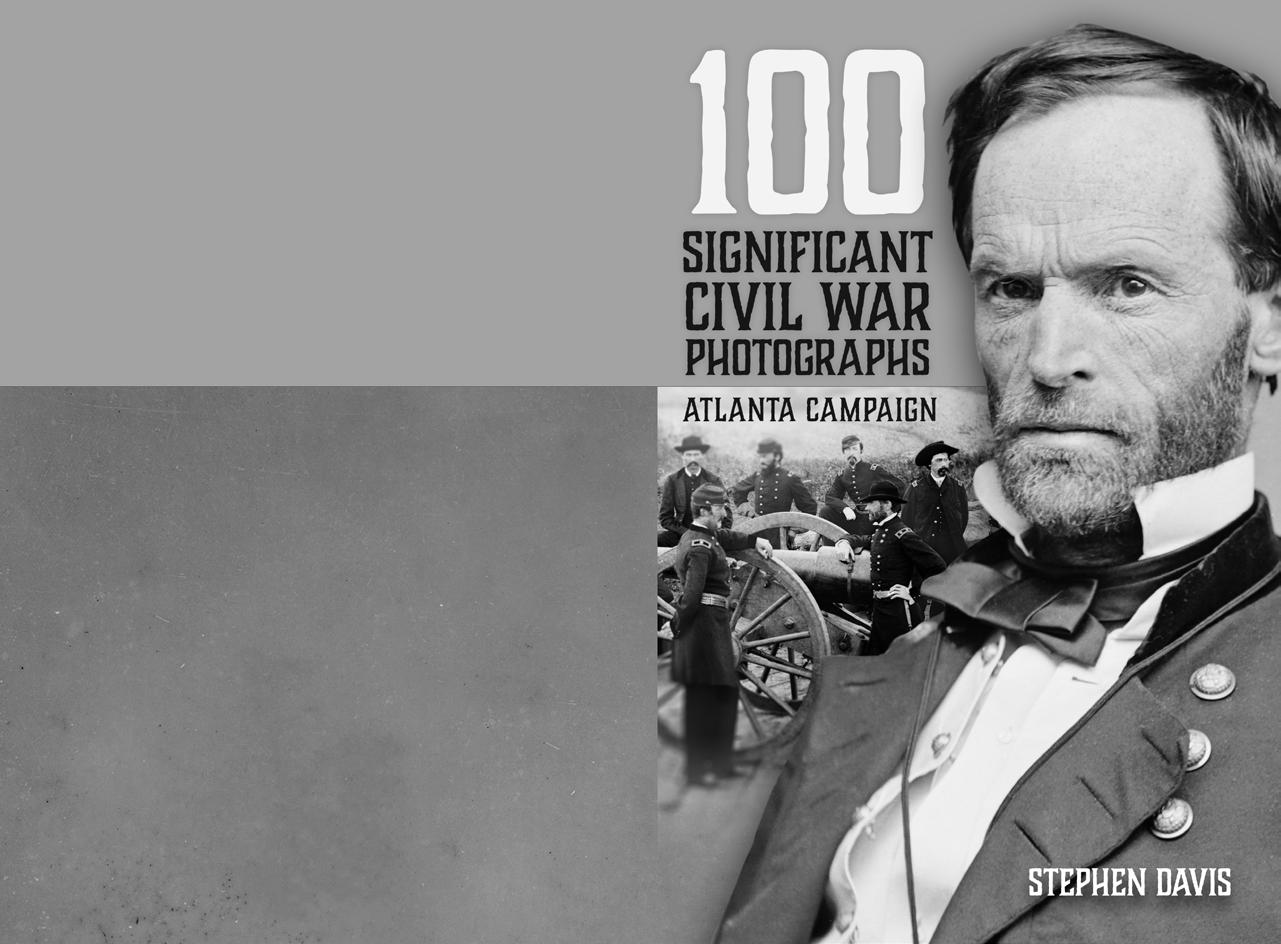
Photographs: Atlanta Campaign (128 pages, paperback) is $19.95 + $3.50 s & h. You can order your copy, signed by the author (while supplies last), online at the website www.historicalpubs.com or by phone at 800-777-1862.
A Less Familiar View
This Barnard photograph is also at West Point, but it has not been published (so far as we know). The photographer set his camera and tripod so as to emphasize the chimneys of the Atlanta Rolling Mill.
Established in 1857, the facility specialized in rolling iron rails for the South’s growing railroad lines. Located beside the Georgia railroad east of downtown, the plant had six big furnaces—five of whose chimneys Barnard captured in this picture. After the war began, the mill turned out armor plate for the South’s ironclad warships.
When Sherman’s armies were nearing Atlanta, the mill’s valuable machinery was hauled by train to Columbia, S.C. By July 10, a correspondent for the Montgomery Advertiser reported that “Atlanta has been stripped of public stores and works.”
In the night of September 1-2, as Hood’s army abandoned Atlanta, the Georgia militia and Confederate cavalry destroyed the ammunition train and set fire to the nearby mill buildings.
After Federal troops entered the city, William Wallace of the 3rd Wisconsin saw “steam boilers, fly wheels, great piles of iron in various stages of manufacture,” but of the mill itself only the chimneys stood. Illinois private Laforest Dunham also saw the wreckage, noticing “lots of plateing for gun boats that they could not get off”—Confederate railroads proved unable to transport the rolling mill’s iron plate to the coastal facilities where the ironclad gunboats were being built.
25 September 2019
News
Civil War
The American Civil War was the first war in which both sides widely used entrenchments, repeating rifles, ironclad warships, and telegraphed communications. It was also the first American War to be extensively photographed. Mathew Brady, Alexander Gardner and Timothy O’Sullivan are famous for having made iconic photographs in the Civil War’s eastern theater. George N. Barnard deserves to be ranked in this top tier for his photographic work in the war’s western theater. A civilian photographer hired by Gen. William T. Sherman’s chief engineer to take pictures of fortifications around Atlanta, Barnard took several hundred of them in and around the city in the fall of 1864. His most famous is the site of Union Maj. Gen. James B. McPherson’s death in the battle of Atlanta, July 22, 1864. Thus far, no comprehensive, definitive listing has been made of the photographer’s work. The Library of Congress has 130 images; the U. S. Military Academy at West Point, New York, has at least 98 photographs, donated by Captain Poe’s widow. Other repositories, such as the Gilder Lehrman Institute of American History in New York City, have smaller collections. For this book we have chosen a hundred images we deem “significant,” though other students may wonder at some of our selections. We hope that this work will stimulate further interest in Barnardiana, and that other scholarly volumes are yet to come. The Atlanta Campaign STEPHEN DAVIS 100 SIGNIFICANT CIVIL WAR PHOTOGRAPHS ATLANTA CAMPAIGN Front cover.
112
therefore taken as our line.” In his memoirs Johnston makes this same point, and adds that “the course of the river would have put us under the further disadvantage of a concave line.”
a force with artillery to make my position secure.”
Sherman provided the bridge, telling Schofield: “I will order a pontoon train to report to you on the road.”
Crossing the Hooch without a Hitch
After being repulsed at Kennesaw Mountain, Sherman reverted to his tried-and-true tactic of maneuvering to his right, threatening Johnston’s communications and forcing the Confederates to retreat to the Chattahoochee. On July 8, 1864, a sizable Federal force crossed the river at Sope Creek.1 With his opponent gaining a bridgehead south2 of this last natural barrier, Johnston again pulled his army back, toward Atlanta’s fortifications, while the rest of Federal army crossed the undefended river at several other points.
Now the narrative is supposed to move forward to the dramatic change of command, the major
battles north, east, and west of Atlanta, then to the semi-siege, the bombardment, cutting the final railroad, and the evacuation of the city the night of September 1-2. Let’s not go there. Let’s stop at the river. What happened at Sope Creek on July 8? How was this crossing achieved?

In his report after the fall of Atlanta, Sherman explained that the Chattahoochee was a significant obstacle. He described the river as “a rapid and deep stream, only passable at that stage by means of bridges, except at one or two very difficult fords.” Sherman explained his plan in his memoirs: “I expected every possible resistance in crossing the Chattahoochee River and had made up my mind to feign on the right, but actually cross over by the left.” Maj. Gen. John
Schofield’s
Army of
The reports of Sherman’s subordinate commanders and the communications sent back and forth give us a clear idea of the plan as it was being refined. Schofield to Sherman at 7:30 p.m. on the 7th: “Half a mile above [Sope] creek is a shallow ford where infantry can cross easily, but there is no road leading to it and it would be difficult to make one. Isham’s Ferry just below the mouth of the creek is a good place for a bridge. About 400 yards from the river on the east side is a commanding ridge very favorable for a bridgehead. The crossing would be very difficult if that ridge is held in force; but there appears at present only a squad of cavalry and one or two pieces of artillery.”
Schofield advised Sherman further: “If there be no greater force to oppose it, the crossing can be effected very easily by crossing infantry at the ford above, to clear the ridge and to cover to the construction of the bridge.”
At 9:30 p.m. Schofield sent a message to Brig. Gen. Jacob Cox, the commander of one of his divisions: “Please have your division ready to move promptly at 4 o’clock to-morrow morning.”
The orders moved down the chain of command. Resources were marshalled to put the plan into effect.
Early on the morning of the 8th Cox ordered one of his brigade commanders, Col. Daniel Cameron, “to reconnoiter for an old fish-dam…and ascertain…, without disclosing the presence of his force, whether the river was fordable at this point.” The rest of the division was “massed behind the ridge skirting the river below Soap Creek.” Cox directed his men “to preserve great silence.” He forbade fires. He studied the opposite bank and satisfied himself that the force opposing him was “of inconsiderable strength.”
GEORGIA’S CONFEDERATE MONUMENTS

In Honor of a Fallen Nation
Gould B. Hagler, Jr.

This unique work contains a complete photographic record of Georgia’s memorials to the Confederacy, a full transcription of the words engraved upon them, and carefully-researched information about the monuments and the organizations which built them. These works of art and their eloquent inscriptions express a nation’s profound grief, praise the soldiers’ bravery and patriotism, and pay homage to the cause for which they fought.
www.mupress.org
866-895-1472 toll-free
the Ohio was, in the first days of July, on the right of the Federal line on the Sandtown Road. Sherman ordered him to move to the far left, a distance of some 25 or 30 miles and, as Schofield stated in his report, “to prepare for crossing the river at some point from the mouth of Soap Creek to the Shallow Ford, near Roswell, while Generals Thomas, McPherson, and Stoneman should feign below.”
The river was wide, deep, and difficult to cross, but from Johnston’s perspective the river was certainly difficult to defend against an army double the size of his own. By Stephen Davis’s count, there were 15 crossing points from McAfee’s Bridge upstream near Roswell to Gorman’s Ferry near Campbellton, a 40-mile stretch of river. Johnston understood the magnitude of this challenge, one complicated further by the flow of Peachtree Creek, which enters the Chattahoochee some eight miles northwest of the city. Johnston explained in his report: “The character of Peach Tree Creek and the numerous fords on the Chattahoochee above its mouth prevented my attempting to defend that part of the river. The broad and muddy channel of the creek would have separated the two parts of the army. It and the river below its mouth were
But the decision had not yet been made to cross at Sope Creek. Schofield continued in his message to Sherman: “Johnston’s cavalry being gone, I take it for granted that I can cross [further upstream] at Roswell without difficulty. The higher up the river the less probability of opposition.” Sometime after Schofield sent this message, Sherman told him not to tarry and to cross at Sope. Schofield dropped his plan to reconnoiter points further upstream and examined in more detail the river at the chosen point.


“The ford above the mouth of Soap Creek is an old fish-dam,” Schofield told Sherman.3 “I do not think it can be made practicable for wagons, though it may be. I deem it important to have a bridge to throw across as soon as I have effected a lodgment, so that I can, without delay, put over
Schofield directed Cox to begin the crossing at 3:30 p.m. Cox ordered Cameron to pick 50 men as an advance guard to cross the river at the fish dam but keep the rest of his brigade hidden in the woods nearby. All the brigade save one regiment were to follow after the advance guard gained a foothold and “to push down the river by the heights on the opposite side….”
All this was coordinated with two other elements of the plan. Five hundred men detailed from Brig. Gen. Milo Hascall’s Division helped set up the canvas pontoons which were hidden in the creek. At 4 p.m. 25 pontoons emerged from the creek and rushed across the river with their cargo, the riflemen of the 12th Kentucky Infantry. Infantry and artillery then deployed at the river’s edge and fired on the Confederate force opposite. The surprised Confederates, vastly outnumbered and outgunned, fired and fled. The Kentuckians formed on the south bank and advanced to the ridge beyond. There they met the men of Cameron’s brigade who had crossed at the fish dam.
More men were ferried across. The Federals began entrenching on the ridge south of the river. The pioneers went to work. One bridge was finished by nightfall; a second one was under construction. Cox’s entire division crossed. Hascall’s followed the next day and “the two divisions occupied a secure tête-de-pont a mile in depth, giving ample room for the debouché of the
26 Civil War News September 2019
Maj. Gen. John McAllister Schofield. (Library of Congress)
Maj. Gen. Jacob D. Cox. (Library of Congress)
Mouth of Sope Creek.
(Google Earth)
Rappahannock Station, Virginia. Canvas pontoon wagon, 50th New York Engineers. (Library of Congress)
whole army.” Schofield reported that “The crossing was secured without the loss of a man.”
Sherman’s chief engineer, Capt. Orlando Poe, reported a few things about the pontoon bridges. The army began the campaign with two pontoon trains hauling two bridges, one 800 feet in length and the other 600. Two more of the same dimensions were held in reserve in Nashville. All were “of the kind known as the ‘canvas bateau bridge.’”

object of this was to preserve the canvas covers of the bateaux, even at the expense of considerable labor, since we had the latter in greater abundance than the former.”
The narrative can now resume. The Federals are across the river. Johnston is sacked. Hood takes command. Sanguinary battles are fought. The railroad is cut. Atlanta falls.
One is struck by the immensity of the resources at Sherman’s disposal. Need a bridge? I will send you one. You could use some extra hands to assemble and paddle the bateaux? Hascall can spare 500 men. Want to get the canvas out of the water? We can put some men to work cutting logs and building trestle bridges. We have plenty of labor.
Schofield devised a very effective plan to cross the Chattahoochee at Sope Creek. Infantry and artillery remained hidden behind the ridge until the boats entered the river. The advance party at the fish dam crossed undetected and was immediately followed by the remainder of the assigned force.
had been more alert? Could their commanders have gotten a sufficient force to Sope Creek in time to impede the crossing? And would they have even attempted to do so? After all, Johnston tells us that he had already determined not to defend the river above the mouth of Peachtree Creek. We are all familiar with the adage that no plan survives contact with the enemy. In this case there was no significant contact with the foe. The plan was not hindered in any way. The crossing of the Hooch came off without a hitch.
Endnotes:
1. Most Federal sources refer to Sope Creek as Soap Creek. There are also references to
Isham’s Ferry, Isham’s Ford, and Phillips’ Ferry. These names all refer to the same crossing.
2. Some accounts describe the Atlanta side of the river as the east side; some call the same bank the south side.
3. What the Federal reports call a fish-dam was, I believe, a fishing weir, a low dam built to direct the passage of fish to one part of the river channel where they could easily be trapped and caught. The “shallow ford” to which Schofield refers to is the ford here, not the “Shallow Ford” further upstream near Roswell.
Sources: Stephen Davis, Atlanta Will Fall; Gen. Joseph E. Johnston, Narrative of
Military Operations during the Civil War; William Tecumseh Sherman, Memoirs of General W.T. Sherman. O.R. Series 1, Vol. 38 contains the reports and correspondence cited.

Gould Hagler is a retired lobbyist living in Dunwoody, Ga. He is a past president of the Atlanta Civil War Round Table and the author of Georgia’s Confederate Monuments: In Honor of a Fallen Nation, published by Mercer University Press in 2014. Hagler speaks frequently on this topic and others related to different aspects of the Civil War and has been a regular contributor to CWN since 2016. He can be reached at gould.hagler@gmail.com.
Sherman’s report states that he had four bridges at his disposal, so we know that the reserve pontoons were brought forward sometime between May and early July. Poe noted further that “The canvas bridges at Phillips’ Ferry were replaced by a trestle bridge built by the Engineer Battalion of the Twenty-third Corps. Another pontoon bridge was thrown meanwhile at Powers’ Ferry upon which the Fourth Army Corps crossed.” Poe also informed us that “whenever it was deemed necessary to use a bridge for a greater length of time than forty-eight hours the pontoon bridges were invariably replaced by wooden trestle bridges constructed from materials at hand…. The
The pontoons were assembled in the creek and were ready to go at 4 p.m., according to schedule, a half hour after the men upstream began to cross at the fish dam. Before the men guarding the crossing were aware of the Federals’ presence they were struck with overwhelming force.
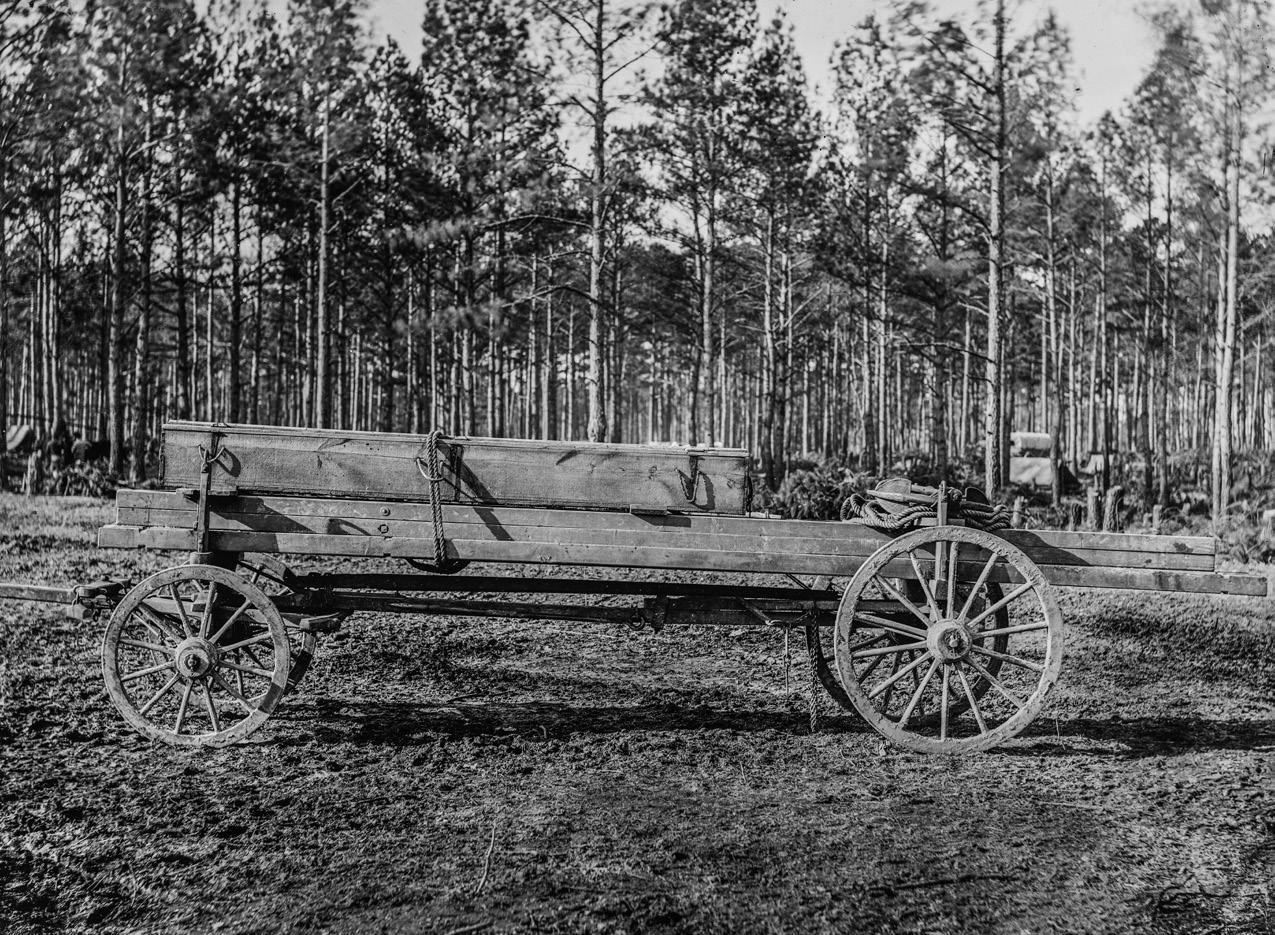
One wonders about the Confederate troops at the crossing. It seems they were not watching very carefully and not listening at all. There were thousands of Federals on the opposite bank the entire day, a few hundred feet from the Confederates, with artillery and infantry moving about, and with hundreds of men assembling 25 pontoon boats. How could the Confederates be unaware of their presence?
Is it possible the Federal troops could be so quiet? But would it have mattered if the Confederates
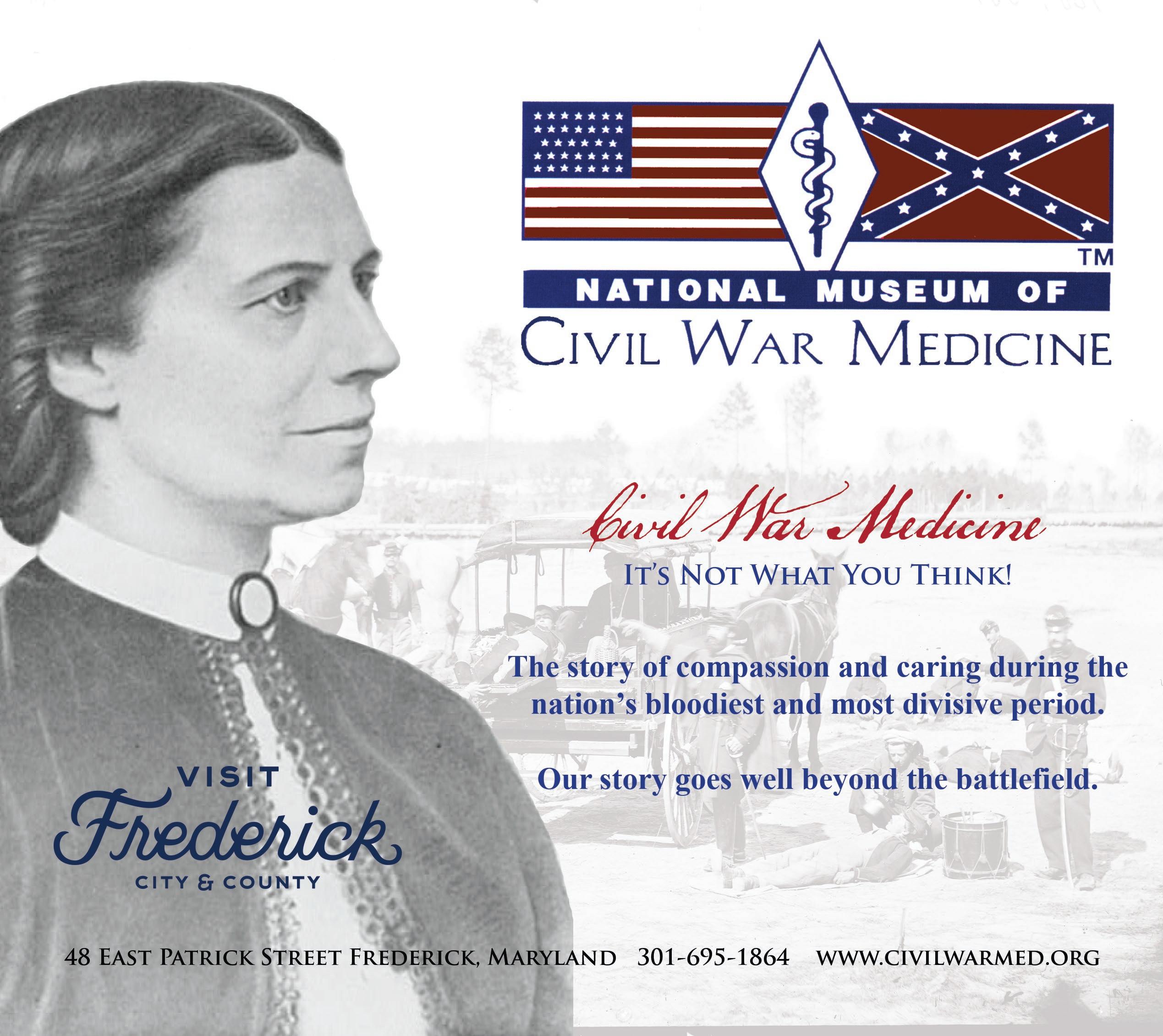
27 September 2019 Civil War News
Pontoon train. (Library of Congress)
Orlando M. Poe was breveted to the rank of brigadier general of regulars at the end of the war. (Library of Congress)
R.E. Lee Statue
The truly fantastic monumental Alexander Phimster Proctor equestrian statue of Robert E. Lee was sold June 5, 2019, by FSO Auctions in an online sale that generated a winning bid of $1,535,450 ($1,435,000 plus 7% buyer’s commission). The buyer was Holmes Law Firm, Addison, Texas, according to several news stories. Addison Attorney Ronald L. Holmes, possibly represented a client but there has been no comment to date.
Alexander Phimister Proctor (1860-1950) was a renowned sculptor, sought by many cities, art patrons, and institutions for his monumental bronzes. His Robert E. Lee sculpture is one of his best known along with ‘Pioneer Mother’ in Kansas City, ‘Pair of Tigers’ guarding the entrance to Nassau Hall at Princeton, Theodore Roosevelt’s equestrian statue as a Rough Rider in Portland, Ore., and many others.
Proctor was the first sculptor to create monumental equestrian
sculptures portraying cowboys and Indians. His works immortalized statesmen, pioneers, lawmen, women, and animals. Today, Proctor bronzes grace cities from New York, Princeton, N.J., and Washington, D.C., to Chicago, Dallas, Denver, San Francisco, and Portland, Ore. Proctor collaborated with America’s most famous sculptor Augustus SaintGaudens (1848–1907) in creating the equestrian portions of General John Logan’s statue in Chicago and General William Tecumseh Sherman’s statue in New York City.
Among the “Big Three” of Western sculpture of this era— Proctor, Frederick Remington (1861–1909), and Charles Russell (1864–1926)—Proctor was the only one with formal art training, and his output was prolific. Remington and Russell bronzes currently bring in millions of dollars and for pieces only 30-40 inches. A Saint-Gaudens postlife reduction of the “Victory”
portion of New York’s Sherman monument sold at Christies for over $2,000,000 in 2017. Proctor is not as well-known as Remington, Russell, or SaintGaudens. There are however many good sculptors who are not household names worldwide who have similar comparable sales on small pieces, whose monumental pieces have sold for much more than the price achieved in this restricted online auction with only four “approved” participants. I keep my pulse on the Civil War marketplace and was totally unaware of this auction; I just happened to be in Dallas a few days later and saw it in the news. Dallas lost a true artistic treasure. Just as I was unaware, many serious buyers outside Dallas were unaware as well. I emailed one very important Dallas art and historical collector who had no knowledge of the sale.

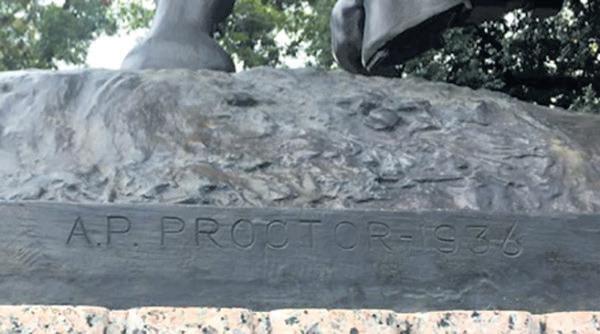

In my opinion, if Dallas had done their due diligence and consigned this into an art auction where it would have received national and international exposure, even with the stated restrictions, the price realized would have been higher. Indeed, it is almost impossible to get realistic market value from only four “approved” bidders in an auction company not associated with art world. From LSO Auction website: “Lone Star is a full-service firm providing a full range of auction services to all levels of government: city, county, state
“Equestrian statue of Confederate General Robert E. Lee, astride his horse, Traveller, in the park that surrounds the headquarters of the Dallas Park Board in Oak Lawn section of Dallas, Texas.”


This large monumental sculpture shows General Robert E. Lee riding his horse, Traveller, slightly ahead of another smaller horse with a young man, who represents all Confederate soldiers. The horses appear to be moving at a slow and steady pace. Proctor studied several photographs of Confederate soldiers to create this composite version of the young soldier’s face; he also studied many photographs of General Lee to sculpt the face and used Lee’s original uniform as a model for the clothing. General Lee holds his famous slouch hat in his hand while the soldier behind wears a kepi. (Library of Congress)

28 Civil War News September 2019
“Alexander Phimster Proctor 1936” signature on the bronze base.
President Franklin Delano Roosevelt unveiling the Lee monument on June 12, 1936.
Dallas society attended the June 12, 1936, unveiling.
The artist named his new Lincoln-Zephyr “Traveller” in honor of Lee’s famous mount. Proctor was famous for his equine sculpture; he also completed William Tecumseh Sherman’s horse in collaboration with Augustus St. Gauden’s famous gilded bronze across from Plaza Hotel in New York City.
September 2019


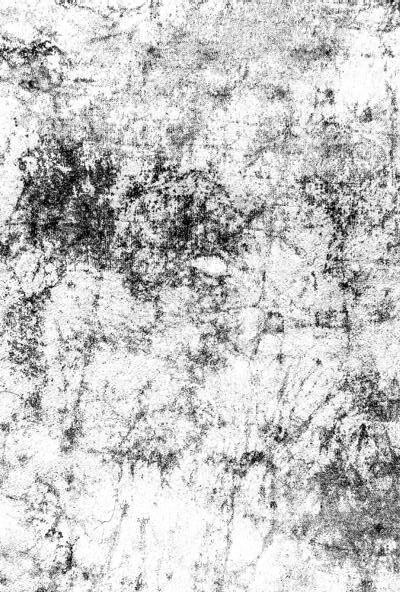


and federal. We have sold virtually every type of commodity for various government entities in cities around the U.S… Lone Star sells the jewelry, gold and silver, fine art, antiques and collectibles seized and forfeited nationally for the U.S. Marshals Service as well as forfeited vehicles locally in several USMS districts. In addition, we sell surplus vehicles, heavy equipment, and miscellaneous surplus for the State of Texas….unclaimed contents from safe deposit boxes… surplus vehicles and equipment, police pursuit vehicles, unclaimed property, impounded vehicles, seized vehicles, office equipment and furniture and much more.”
The controversy over Confederate, and other politically “out of favor,” monuments has brought an interesting new set of appraisal assignments to me. Most Confederate monuments have little intrinsic value as art as many were mass produced by just a few companies whose cast metal soldiers were sold for Union and Confederate memorials with only minor differences to insignia designating US or CS. This was not the case with the sale of this over-life, 6,500 pound, 9 x 5 x 12 foot bronze which has great artistic merit by a renowned sculptor. This Lee is among the greatest equestrian statues extant. Taliban/ISIS and other groups in the Middle East recently and currently remove “offensive” monuments by demolition or putting them into the international art market. You cannot change history, but you can take it out of public view. Regardless of political views, more Confederate monuments will be coming to market. A few have been privately sold and relocated, most are just removed


from public view and stored. I am not aware of an auction of similar property previously.



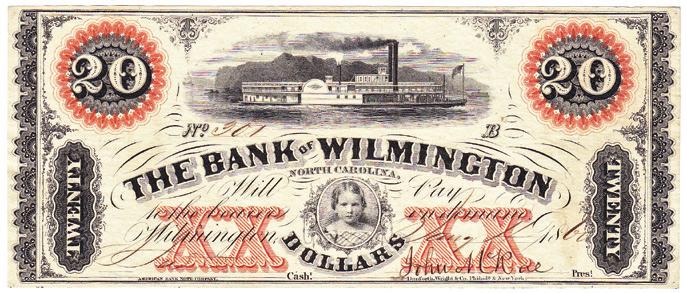

Appraisals of mass-produced monuments entail a “production cost” approach to reproduce, or cost to remove and re-install.
Appraisals of fine art sculptures such as Proctor’s bronzes are valued like other fine art by a comparable sales approach.



At least four bidders wired the $50,000 deposit required by Dallas City Council for bidding in the sale of the Lee bronze. Other terms of sale stated, the monument had to be removed within five days and the buyer “agrees to enter into a Bill of Sale with the City that will require that he/she shall not publicly display the item in the City of Dallas, and that the purchaser shall secure this restriction contractually with any subsequent purchaser if the Sculpture is later sold.” These restrictions no doubt limited participation. This first monumental Proctor bronze ever marketed may have sold for more if it were offered in a more art-savvy venue such as New York City.

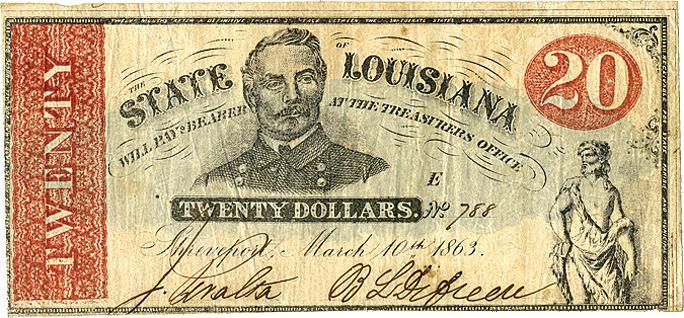
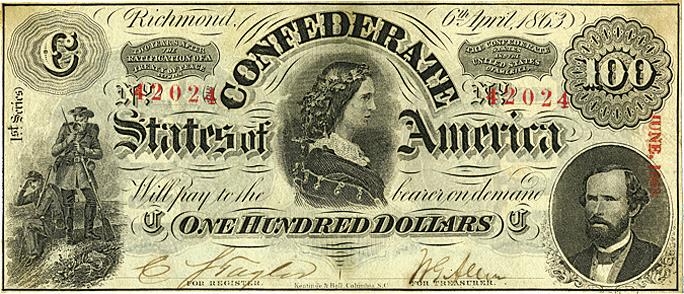
John Sexton is certified appraiser with International Society of Appraisers (ISA-CAPP) and Accredited senior appraiser with American Society of Appraisers (ASA). He authenticates and evaluates other rare and valuable historic items as well. His website is www.civilwardealer.com.
He is coauthor of the book


Confederate Bowie Knives (2012) by Jack Melton, Josh Phillips and John Sexton, that was published by Mowbray Publishing, Inc. Send “Ask The Appraiser” questions and photographs to civilwarappraiser@gmail.com.



Civil War News


“The best little book on Barnard”
The American Civil War was the rst war in which both sides widely used entrenchments, repeating ri es, ironclad warships, and telegraphed communications. It was also the rst American War to be extensively photographed. Mathew Brady, Alexander Gardner and Timothy O’Sullivan are famous for having made iconic photographs in the Civil War’s eastern theater. George N. Barnard deserves to be ranked in this top tier for his photographic work in the war’s western theater. A civilian photographer hired by Gen. William T. Sherman’s chief engineer to take pictures of forti cations around Atlanta, Barnard took several hundred of them in and around the city in the fall of 1864. His most famous is the site of Union Maj. Gen. James B. McPherson’s death in the battle of Atlanta, July 22, 1864. Thus far, no comprehensive, de nitive listing has been made of the photographer’s work. For this book we have chosen a hundred images we deem “signi cant.” RELEASED

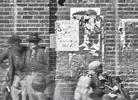
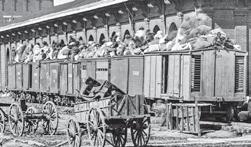



Photo taken June 8, 2019. Every remnant of masonry of the memorial has been removed, Robert E. Lee’s name was removed, but “ARLINGTON HALL” remains. Will the National Park Service be removing Robert E. Lee’s name from “Arlington House, Robert E. Lee Memorial” in Virginia? Arlington Hall in Dallas is a very popular venue; it is a 2/3 scale version of Arlington House. Arlington Hall is still on Lee Street, but the City of Dallas is planning on changing it as well as all other streets named after Confederate associated figures. (John Sexton)

29
JULY 17 th 2019
$19.95
S & H)
info: $19.95 plus $3.50 s&h South Carolina residents add 9% sales tax Mail a check to: Historical Publications LLC 520 Folly Road, Suite 25 PMB 379 Charleston, SC 29412 or Order online at www.historicalpubs.com Wrecking Atlanta N the Engineers P ying U Track w dating the practice of timing photograph studying its shad right—leading pictu y F eedpeople on the B of Cong Cong images captions pictu the pictu es and compa identifying these kinds of look for telltale clues. O of the the of taken B K the the which Confederates had left standing just be ond their parapet. obel, engineer 14, 1864, sharp skirmishing ounding y–Another Greg Ton • P.O. Box 9 • Franklin, TN 37065 901-487-5944 • GTon1@aol.com
Buying and Selling the Finest Confederate, Obsolete and Southern States Currency Since 1978 GregTonCurrency.com Now Available!
128 page Paperback:
(+$3.50
Ordering
Greg Ton
New Monument to the 1st Maine Cavalry Dedicated at Mount Defiance Historic Park in Middleburg, Virginia
By Joe Bordonaro
From June 17-21, 1863, a series of three battles were fought to screen the Confederate Army of Northern Virginia’s advance toward the Maryland and Pennsylvania. General Joseph Hooker, commander of the Army of the Potomac, was desperately trying to find out where General Robert E. Lee’s Army of Northern Virginia was, and where it was headed. General Lee’s cavalry screen was trying to prevent General Hooker’s cavalry from obtaining this vital information. A battle at Brandy Station, Va., June 9, 1863, while showcasing the new-found expertise and aggressiveness of the Union cavalry, did not remove the screen that Confederate General J.E.B.
Stuart’s cavalry was placing around their army’s movements.
When Hooker decided that something was up, on June 13th, he ordered his army to leave its positions on the Rappahannock River, near Fredericksburg, Va., and move northwest towards Maryland.
When Hooker learned of the fall of Winchester, Va., on June 15, he ordered his cavalry chief, Alfred Pleasonton, to pierce Stuart’s cavalry screen along the Blue Ridge Mountains and locate the present position of the Confederate infantry. Union General Judson Kilpatrick’s cavalry brigade led the advance and ran into Colonel Thomas Munford’s Confederate troopers near the village of Aldie, Va., on June 17, resulting in four
hours of tough fighting. Both sides made mounted assaults. When Kilpatrick was reinforced in the afternoon, Munford withdrew toward Middleburg.
The 1st Maine Cavalry lost its leader at the Battle of Aldie. Colonel Calvin Douty was shot and killed by dismounted Confederate cavalrymen posted behind a stone wall alongside the Snickersville Turnpike. His death was soon avenged, however. As Private William Howe remembered: “Then the second charge and the most irreversible ever known was made by the old First Maine Cavalry.” Howe went on to describe the savage charge that carried the day. “Inside of two minutes the life of this indomitable hero was avenged, the heights captured, and Colonel Douty’s body recovered from that point where I last saw him in life.”
(Source: http://maineatwar.bangordailynews.com/2013/06/13/ahero-charges-to-dusty-glory-ataldie/ ) There is a monument to the 1st Massachusetts Cavalry at Aldie, but none for the 1st Maine.
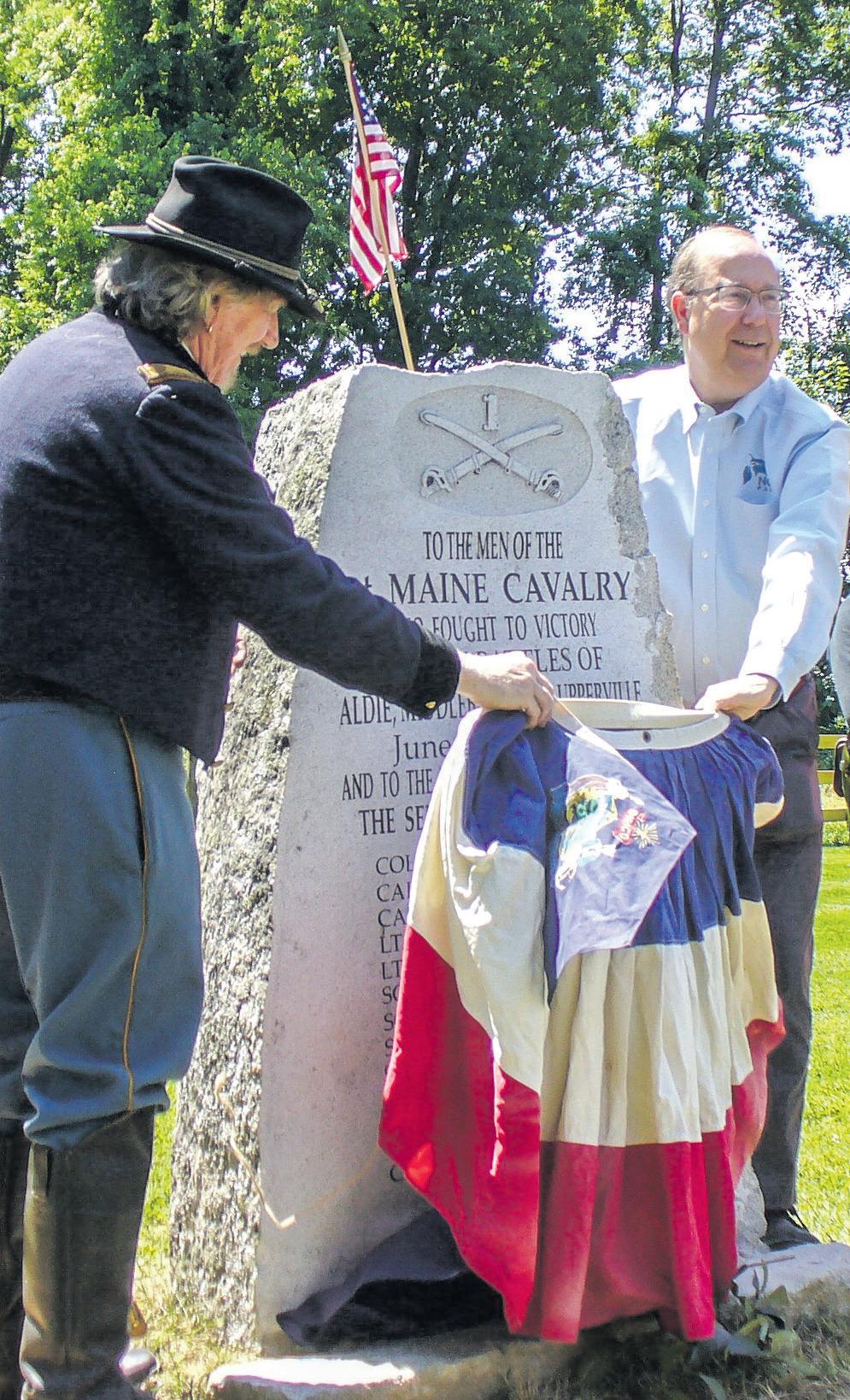

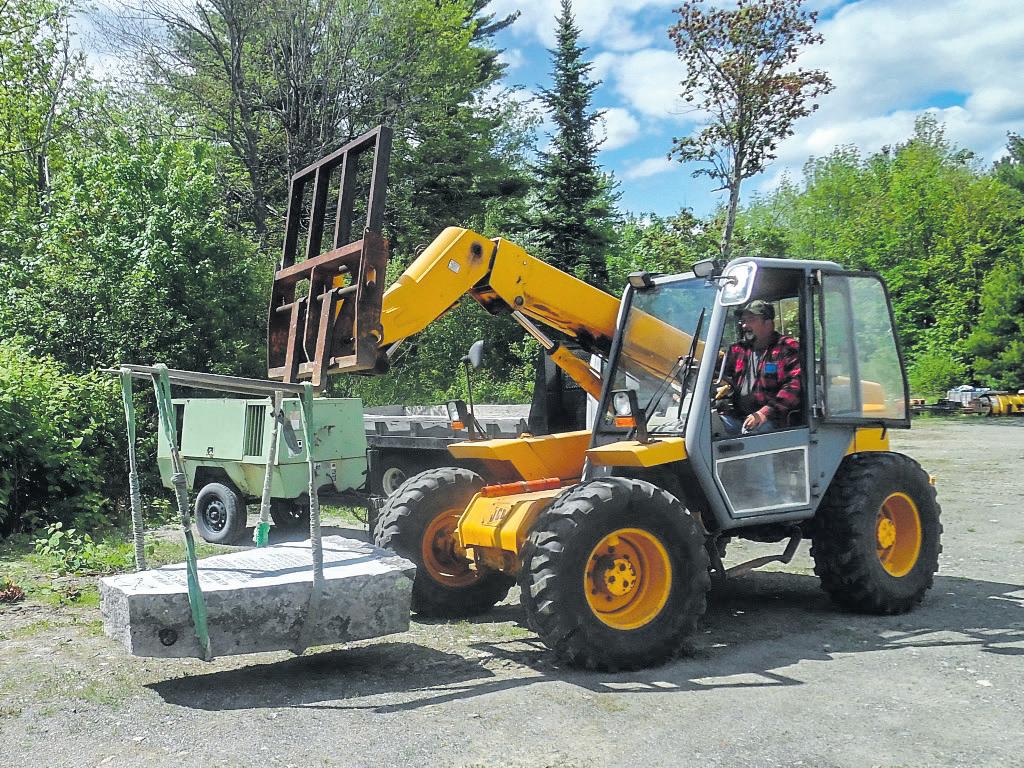
Also on the 17th, General Pleasonton ordered the 1st Rhode Island Cavalry to take the next town to the west, Middleburg. They did so, but were later overwhelmed by mounted Confederates, losing some 225 Rhode Islanders in the fight.
Two days later, Col. J. Irvin Gregg’s Brigade of Federal cavalry was ordered to retake Middleburg and press on to the west. Gregg’s men easily drove
Confederate cavalry out of the small town, but then ran into a strong defensive position Stuart had created on nearby Mount Defiance which included artillery. Another tough back-andforth cavalry fight developed, in the course of which General Stuart’s well-known Prussian aide, Heroes von Borcke, was severely wounded in the throat. Once again, the 1st Maine Cavalry played a crucial role in the fighting. Stuart, seeing additional Federal reinforcements arriving, retired further west to the town of Upperville.
On June 21, Union cavalry once again made a determined effort to pierce Stuart’s cavalry screen. The largest of the three battles, one in which Col. Strong Vincent’s V Corps Federal infantry brigade became involved, was similarly inconclusive. Once General Lee’s Army of Northern Virginia passed over the Potomac River, Stuart’s mission was complete. Despite the lack of any clear victory by either side, the
Confederate objective of screening Lee’s army from Hooker’s knowledge was achieved.
Both sides suffered heavy casualties in men and horses; these casualties, and the lack of rest after suffering them, played an important role in Stuart’s ability, or lack thereof, to perform the new missions the Gettysburg Campaign placed upon him. As for the 1st Maine Cavalry, their participation in the three battles led to 17 deaths, adding to the long roster of casualties they suffered during the war. The regiment has the sad distinction of having lost the most men of any Federal cavalry unit in the war. Until this year, none of the Maine men lost in these three battles had a monument to recognize their “last full measure of devotion.”
That is no longer the case, thanks mainly to the efforts of Stevens Bunker, of Maine, a long time reenactor, and founder of the Co. A, 1st Maine Cavalry, reenacting group. Bunker located and obtained a large, 3,000

30 Civil War News September 2019
Dave France, of Troy, Maine, drives the forklift that transferred the completed monument stone to a rental truck. (Sharon Bondroff)
Stevens Bunker, Christopher Wilson, Mike Scheibe, and Jimmy Ford-Bey (l-r, top to bottom) pose by the monument after installing it. (Tracy Gillespie)
Tom Craig, of the 1st Maine Cavalry reenacting group, relates the history of the 1st Maine during the fighting at Middleburg. Caleb Horton stands to his left. (Joe Bordonaro)
Stevens Bunker and NoVaParks Commissioner unveiling the monument. (Joe Bordonaro)
September 2019
pound piece of Maine granite. Next, he persuaded his friend Dave France to sandblast the lettering on the monument. Bunker did some handwork on the finish and on the sabers engraved on the monument. Bunker also included a ring on the monument’s side for tying visiting riders’ horses. Transporting the stone to Middleburg on a rented truck, Bunker, assisted by Mike Scheibe, Chris Wilson, and Jimmie Ford-Bey, excavated a place for the monument on Mount Defiance, poured concrete for the foundation, and mounted the monument.
On June 22, 2019, with the assistance of Tracy Gillespie and Michael Nardolilli, of NoVaParks, the new monument was dedicated. The ceremony was well attended by members of the public, and featured appropriate remarks from Diane Logan, of the American Battlefield Trust, several Sons of Union Veterans
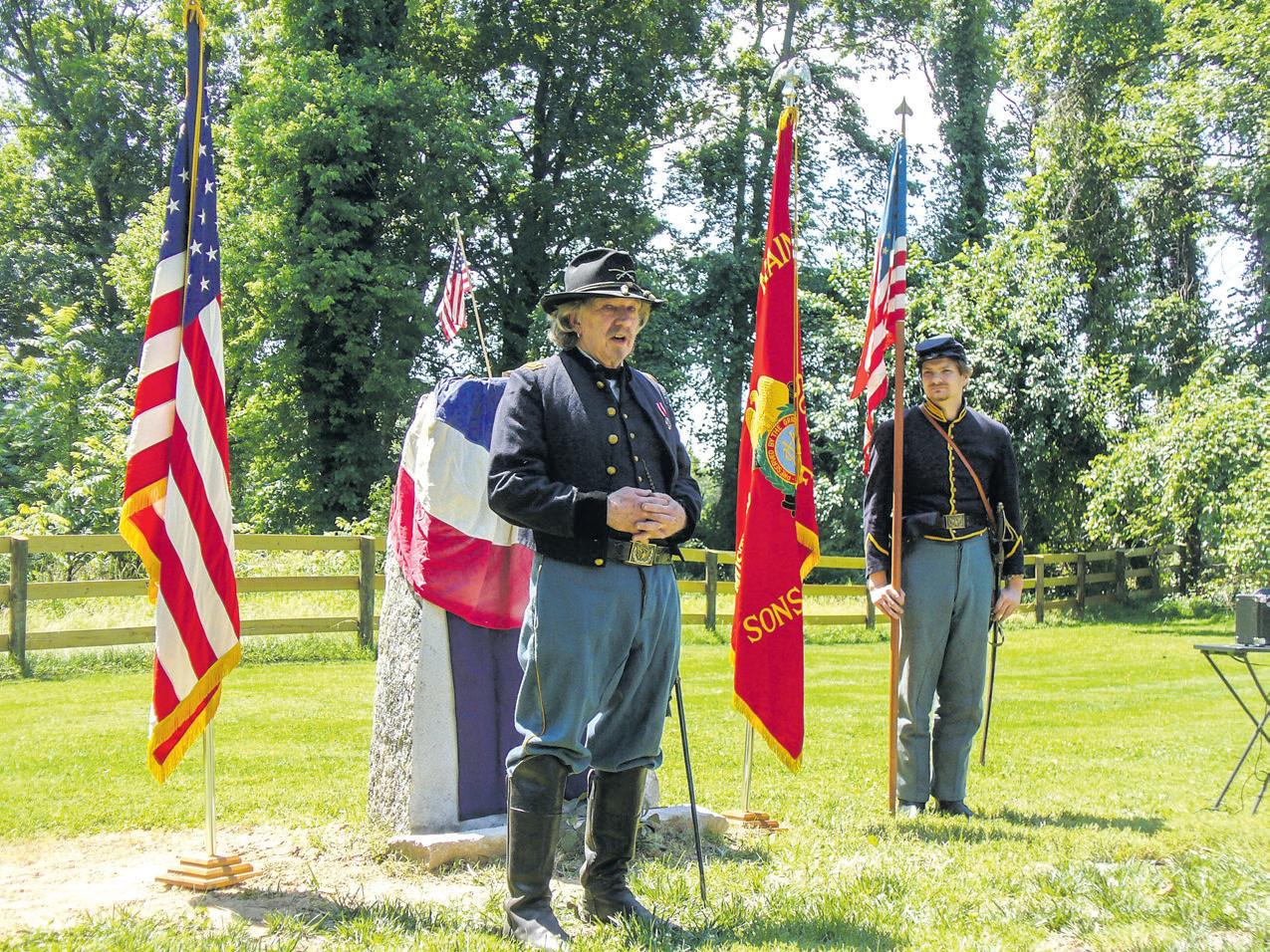

from Maine, who helped with the project, historian Bob O’Neill, and Stevens Bunker. The new park at Mount Defiance now has an excellent focal point and the monument will serve to remind Americans of fierce fighting on the site during the Gettysburg Campaign.
Joe Bordonaro is a USAF veteran (1973–1977), Glassboro State College graduate (1980), Catholic school teacher (St. Joseph’s ProCathedral, 1983–1988), and retired public school teacher (Mullica Township School, 1988–2009). He has been involved with Civil War reenacting/living history since 1999. Joe began submitting articles to the Civil War News in 2005 and has been covering events for the News on a regular basis since 2016. Joe lives in Mount Laurel, NJ, and has been married to his wife Karen for 29 years. If you wish to contact Joe, you may send an email to joe1861@gmail.com.
Civil War News
The Preservation of Land and Memory: Remembering an Oberlin alum and rising star in the Union army
WASHINGTON, D.C.—The great American editor, Maxwell Perkins, wrote to his colleague Ernest Hemingway in 1932, “Is there any chance you will be here in October? [F.] Scott [Fitzgerald] and I have got a grand tour of the Virginia battlefields planned, and although I do not see how I could take in more than two, it would be a great time if you were there.” Perkin’s had just visited Gettysburg and continued, “. . . Ernest, it was perfectly magnificent: you could understand every move in the whole battle if you had read about it. You could see the whole battlefield plain as day.”
Still, many people can appreciate what Maxwell Perkins and his cohorts experienced at America’s battlefield parks. “We are trying to save land in Virginia where on May 14, 1864, former Oberlin College student, and soon-to-be Union General, Emory Upton, led his brigade against Confederate forces at Spotsylvania Court House at Myer’s Hill,” said Tom Van Winkle, President of the land preservation and conservation group, The Central Virginia Battlefields Trust. “Although CVBT is based in Spotsylvania County, we have a national following, and we want it to grow. We are in a race with time to save historic greenspace around this county where Upton, and many other amazing figures from all over the United States, fought, and in some cases perished. Simply put, we need help to save this land,” said CVBT board member Paul Scott.
Emory Upton, born in 1839 in Batavia, N.Y., attended Oberlin College to study under evangelist Charles Finney who taught Upton, “Slavery, alcohol, and other excesses were all evil.” In 1856 Upton was admitted to
our perception of preservation of the land at Spotsylvania Court House where much more acreage should be protected and isn’t. CVBT has been doing more about that neglect,” said CVBT board member, historian, and writing professor at St. Bonaventure University, Chris Mackowski.
West Point. He graduated in 1861 at the outbreak of the Civil War. Over the next three years Upton would fight in most of the major battles in “the East” during the war, rising in the ranks to become a brigade commander by 1864.
Myer’s Hill was part of Union General Ulysses Grant’s “Overland Campaign.” Grant’s Federal troops suffered 50,000 casualties in 50 days, slugging through the woods of Virginia. 1864 was a Presidential election year, and Abraham Lincoln needed military conquests to be re-elected. Without Federal victories emancipation efforts, and preservation of the nation, would be fruitless.
The fight at Myer’s Hill was one piece of the 13-day Battle of Spotsylvania Court House, the third costliest engagement of the Civil War where 25-year old Emory Upton played a key role.
On May 10, 1864, Upton led a column of 5,000 hand-picked men in a bayonet charge that punched a hole in the formidable, but protruding, Confederate earthwork, dubbed “The Mule Shoe.” The fighting netted 1,000 Rebel prisoners. General Grant was reported to have exclaimed of Upton’s Brigade success, “a brigade today, we’ll use a corps tomorrow.”
Despite rain delays, just before dawn on May 12, Grant unleashed an attack similar to Upton’s May 10 assault. This time 20,000 Federal troops rushed The Mule Shoe from a different direction and captured 3,000 Rebels. The Mule Shoe fighting devolved into a 22-hour, hand-to-hand struggle. The most famous date of the 13-days at Spotsylvania Court House is May 12, 1864, because of the length and savagery at The Mule Shoe. “Because May 12 is so well-known, many other areas at Spotsylvania Court House are marginalized in popular history, including Waite’s Shop and Po River on May 9 and 10, and Myer’s Hill on May 14.
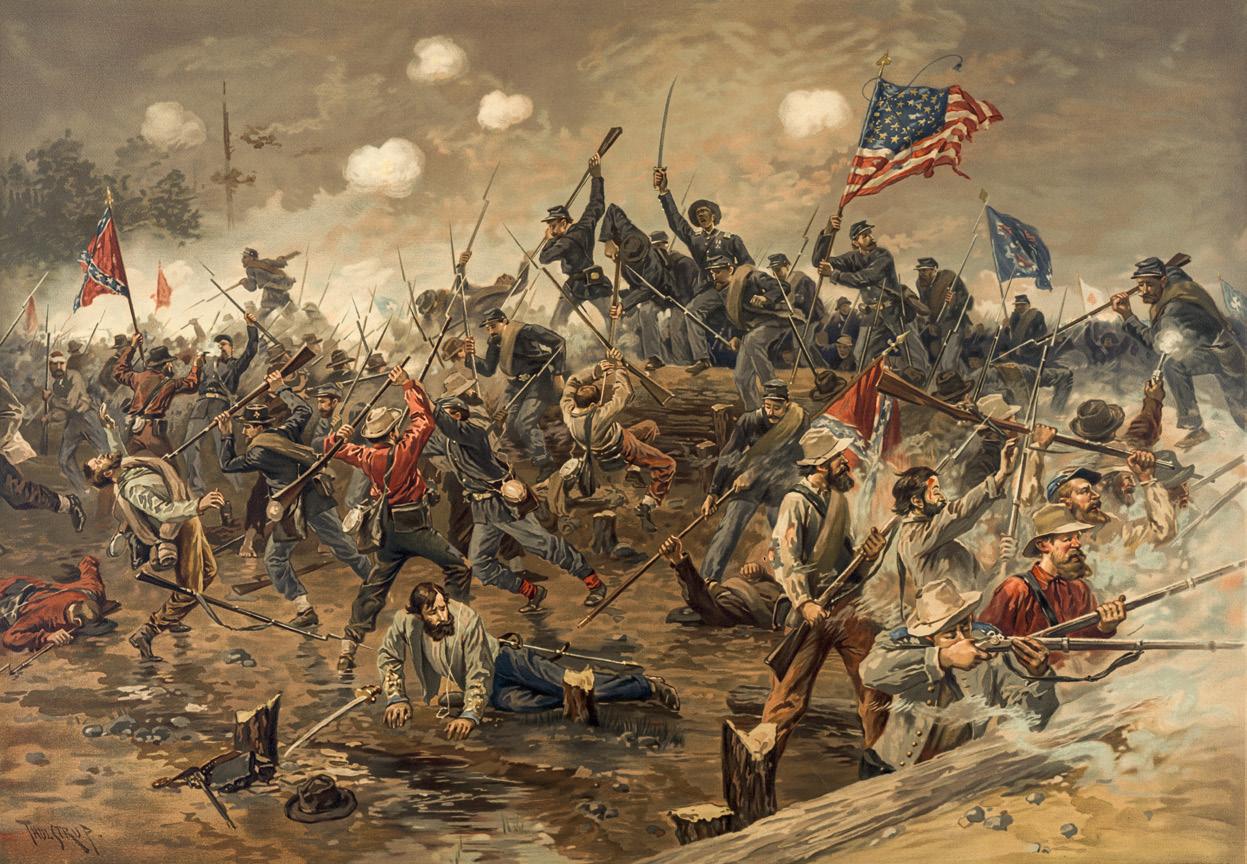
The oversight spills over into
The race with time to save this battlefield`s land has accelerated because Spotsylvania County, just 60 miles from Washington DC, has been one of the fastest growing areas in the United States. The same roads becoming choked with rising traffic congestion are often the same roads where massive armies marched and fought from 1862 to 1865, posing a dilemma for conservationists. The rapid growth of Spotsylvania County contrasts with the hard reality that the underfunded National Park Service (NPS) owns just 1,500 acres (14%) of the 21,000-acre battlefield’s study area.
CVBT has saved 40 acres in the western sector of the Spotsylvania battlefield. Last summer they saved 14 acres on the northern edge of the park, near where one of the highest-ranking Union generals of the Civil War was killed, John Sedgwick. Last September CVBT took title of 70 acres at Myer’s Hill.
“Idealistically, preservation of historic greenspace can be bi-partisan activism. We are talking about protecting land from encroaching sprawl. We are talking about ingress and egress of traffic, quality of life, habitat, water quality, and saving trees. We are also talking about a specific and complicated history, where diverse cultural groups from all over the country collided under horrible circumstances, and in many cases were brave under such adversity. Despite all I have read on the subject it, is still hard to fathom what America’s soldiers and civilians went through,” said CVBT board member, Robert Lee Hodge.
The fighting at Myer’s Hill isn’t exclusively a military story, but also how the soldiers sacrifice impacted their families at home; the loss of a son, or a father, or a brother, or a husband, or a friend. The battle’s impact on the civilian population of Spotsylvania County, and specifically the Myer family that Myer’s Hill was named after, are also parts of the massive saga at Spotsylvania Court House.
In 1863 German immigrant John Henry Myer, a Fredericksburg, Va., businessman, moved his family away from the fighting to the then quiet village H Preservation . . . . . . . . . . . see page 33
31
Historian Bob O’Neill speaks about the impact of the Battles of Aldie, Middleburg, and Upperville. (Joe Bordonaro)
Stevens Bunker speaks about the creation of the monument and its meaning. (Joe Bordonaro)
Major Giles B. Cooke: Grand Old Man of Virginia
By Bob Ruegsegger
Douglas Southall Freeman, renowned Richmond newspaper editor and revered biographer of General Robert E. Lee, described Major Giles Buckner Cooke as the “Grand Old Man of Virginia” in an editorial in The Richmond News-Leader on Friday, February 5, 1937, the day after Major Cooke’s death.

The Pulitzer Prize winning biographer’s tribute to Virginia’s Grand Old Man noted that Cooke passed away peacefully in his sleep a few months before his 99th birthday. Major Cooke was the last surviving officer who served on General Robert E. Lee’s immediate staff. Freeman observed, regretfully, that Cooke’s passing marked the close of an era; an age profoundly distinguished by its heroic ideals.
Giles Buckner Cooke, known as “Buck” to lifelong friend Walter Herron Taylor of Norfolk, was born in Portsmouth, Virginia, on May 13, 1838. Both Cooke and Taylor attended Norfolk [Military] Academy and later attended Virginia Military Institute
in Lexington. Taylor, a member of the VMI class of 1857, was forced to withdraw from the Institute in the fall of 1855. After spending a year at Fleetwood Academy in King and Queen County, Cooke entered VMI in 1855 and graduated four years later.
On July 4, 1859, graduation day at VMI, Cooke was reported to have entered into a heated disagreement with Major Thomas J. Jackson about the grade Cooke received in Jackson’s Natural Philosophy [Physics] class. Cooke, according to his son John Warren Cooke the late publisher of the Gloucester-Mathews Gazette-Journal, made sure that his diploma was officially signed before the argument with Jackson.
Cooke’s original intention was to pursue a career in law, but the War Between the States, and a strong sense of duty, compelled the young 22-year-old aspiring attorney to revise his plans.
Young Cooke’s first service in the Confederate cause was to assist in capturing gun powder from Fort Norfolk on April 19,
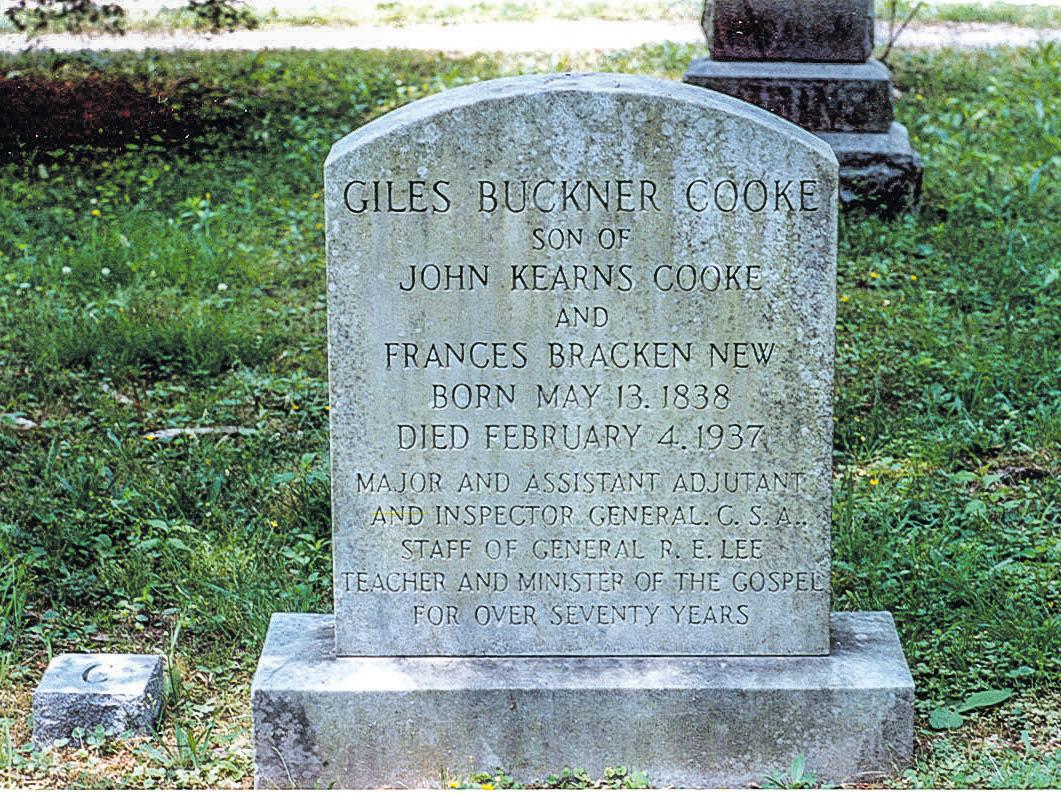
1861. According to Cooke’s diary, his detail seized 8,400 pounds of powder at Fort Norfolk, loaded the powder onto a barge, and promptly delivered it to Richmond.
Through his military training at VMI and kinship with General Philip St. George Cocke, young Cooke was granted a commission as a Confederate staff officer. Lieutenant Cooke, like numerous other VMI alumni and students, contributed to training the droves of spirited, but raw, recruits who began arriving at Manassas Junction in April 1861.

From the fall of 1861 until the autumn of 1864, Captain Cooke served at various Confederate Army headquarters as a staff officer. Cooke served on the staffs of General Braxton Bragg in the Army of Tennessee and General Samuel Jones in the Department of Western Virginia before he was reassigned to General P.G.T. Beauregard’s staff prior to the beginning of the siege of Charleston in April 1863. Cooke’s close association with General Beauregard continued until September 1864 when Beauregard was reassigned from the defense of Petersburg to overall command of the Army of Tennessee and the Department of Alabama, Mississippi, and East Louisiana in the West.
Largely through the intercession of Lt. Colonel Walter H. Taylor, General Lee’s chief of staff and Cooke’s lifelong friend, Major Cooke received the honor of being assigned to General Lee’s personal staff in November 1864. Cooke served on Lee’s staff as assistant inspector general for the remainder of the war.
When Lee surrendered the Army of Northern Virginia at Appomattox, Major Cooke, wounded in the leg by shrapnel at Saylor’s Creek, was in an
ambulance at Lee’s headquarters. As General Lee departed Appomattox for Richmond, Cooke rode with him, albeit in an ambulance, as far as Belmead [the estate of Cooke’s kinsman Philip St. George Cocke] in Powhatan County. General Lee, Lt. Colonel Marshall, and Lt. Colonel Taylor, and the wagon and ambulance drivers, continued on to the Lee’s Franklin Street residence in Richmond.
The Army of Northern Virginia was relegated to history; the war was over for Major Cooke and his comrades. Their hopes for Southern independence had vaporized.
“Farewell war—farewell General—farewell brother staff officers and companions in arms, I am now a citizen-slave and what will become of me and the people of our Southland, God only knows,” wrote Major Cooke in the concluding entry of his war time diary.
Although Cooke survived the war, he had certainly not escaped unscathed. The war had been a life-changing spiritual experience for Cooke, an epiphany, as it had been for countless other Southerners.
Cooke’s firm faith in God had only been strengthened in the crucible of war. He was convinced that his life had been spared because it had been ordained by Providence. The 27-year-old Confederate veteran decided that he would devote what remained of his life to the ministry. Cooke’s deliberate decision to enter the priesthood was, as Providence would have it, a selfless investment that paid gracious dividends to Virginians for more than 70 years.
When the Federal government required Virginia to approve a new constitution [Underwood Constitution] that guaranteed voting rights to all men, black or white, in order to be readmitted to the Union, Major Cooke was convinced that the freedmen must be provided with a “wisely-fashioned education” lest they fall victim to the odious scalawags and opportunistic carpetbaggers who sought political office and advantage in the South after the war. Laws passed by Congress denied voting rights to many former Confederates and excluded almost all from holding public office.
Major Cooke received a letter from his former commanding officer in 1866 in response to his request regarding autographed pictures for St. Paul’s Sunday School in Petersburg. After reading the response from Lee, it must have been clear to Cooke that he had chosen one of life’s
32 Civil War News September 2019
Rev. Giles B. Cooke portrait taken in 1887 by Frank Wybrant [or someone from his studio] a Louisville, Ky., photographer. (Note: photo MAY have been taken during the Orphan Brigade Reunion, August 18, 1887, in Bardstown, Ky.
(Photo courtesy of the Portsmouth Public Library)
Reverend Cooke’s monument, Ware Churchyard in Gloucester, Va., relates that Cooke served on General R. E. Lee’s staff and that he was a teacher and minister for more than 70 years.
The Cooke family has a long tradition of service to Virginia and Virginians. This plaque in the Old Gloucester Courthouse notes some of their contributions.
September 2019
most noble paths. For the teacher and aspiring cleric, Lee’s elegant response must have been the ultimate earthly encouragement.
“My interest in the citizens of Petersburg is as great now as when I was daily witness of the dangers to which they were subjected from the siege of their beloved city and my admiration of the fortitude and courage they displayed has not in the least abated,” wrote Cooke’s former leader. “The children of the city will always have my warm affection, and I rejoice that they so early possess a desire for that knowledge which leads to righteousness and eternal life, and in comparison with which all other
learning is valueless,” he added. This elegant letter of reassurance was signed, “R. E. Lee.”
In 1867, Major Cooke began teaching in one of the schools established by the City Council of Petersburg to educate AfricanAmerican children. Major Cooke, an early champion for educating the underprivileged in Virginia, has been credited with being one of the first, if not the very first, white native Virginians to become a teacher of African Americans after the War.
Reverend [Major] Cooke was ordained a deacon in 1870 and a priest in 1872. At the time that the Episcopal Church resumed its ministerial role among
Civil War News
African-Americans, he founded a church day school on Harrison Street in Petersburg at the Old Oak. He recruited students for St. Stephen’s Parish School by going door to door in Petersburg’s African-American quarter. St. Stephen’s eventually became Bishop Payne Divinity School, the Episcopal Church’s first theological training facility for African-Americans. Archdeacon
James Solomon Russell, founder of St. Paul Normal and Industrial School [later St. Paul’s College] in Lawrenceville, Va., was among Reverend Cooke’s first and perhaps most distinguished pupils. Reverend Cooke served the ministry as rector of Kingston Parish in Mathews County from 1904 to 1915 as well as other Episcopal parishes in Kentucky, Maryland, and Virginia.
While at All Saints Church in Portsmouth, his place of birth, he retired from the active ministry in 1917. During Reverend Cooke’s tenure, he and his family developed an affection for the people of Mathews County. After his retirement from the ministry, he purchased a home in Mathews Court House where he lived until his death in 1937. His former residence remains occupied by a family member.
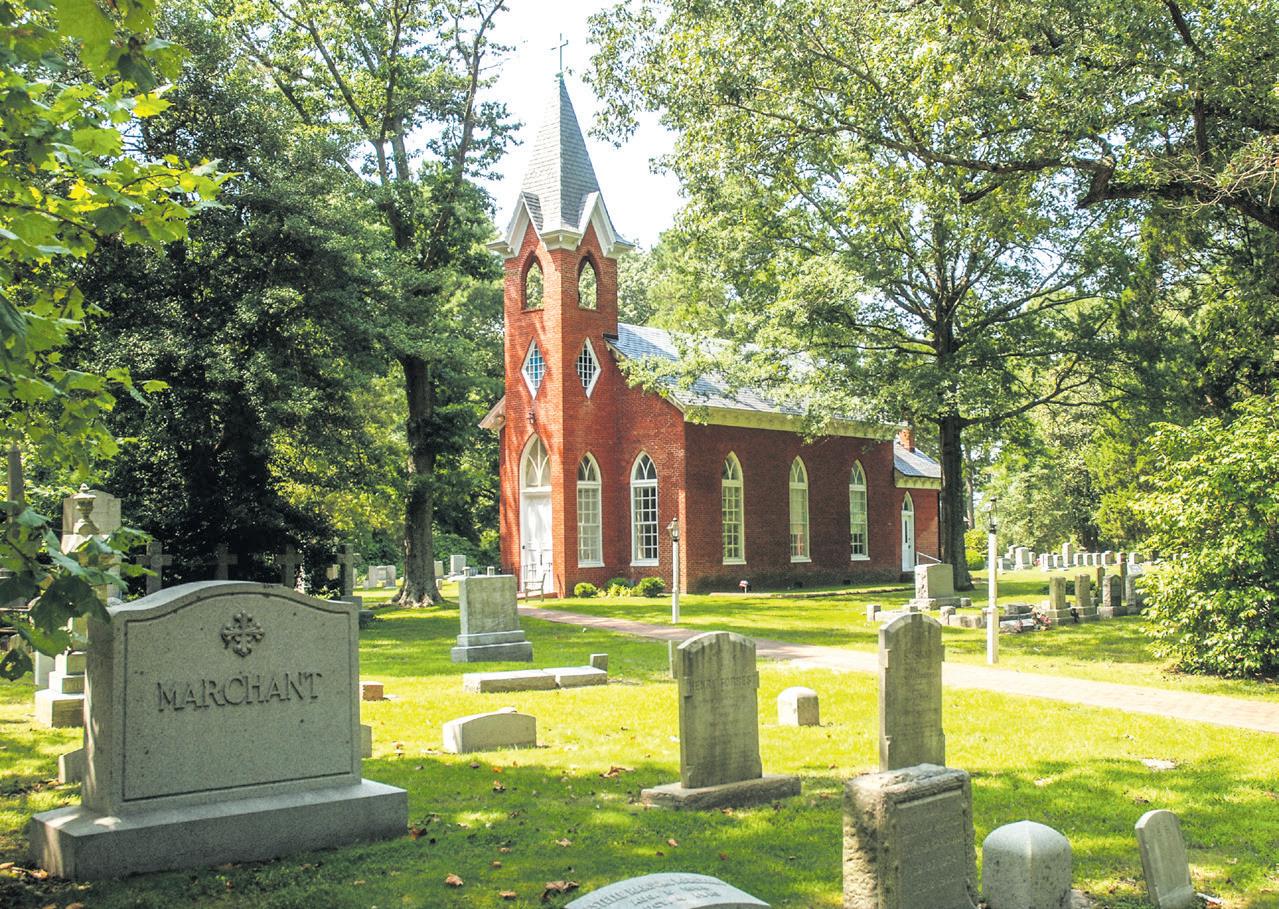
“I have always been on the side of the underdog,” noted Reverend Cooke on numerous occasions. When asked by Reverend Dr. James Saul of Philadelphia about the primary reason he had chosen to become directly involved in providing education for freedmen, Cooke responded, “Because no one else would.”
Reverend Major Giles B. Cooke was, aside from being the last surviving member of General Lee’s immediate staff, chaplain general of the Confederated Southern Memorial Association, oldest alumnus of Virginia Military Institute, and dean of Episcopal clergymen in Virginia. For many admirers, including Douglas Southall Freeman, Reverend Giles Buckner Cooke epitomized the archetype of Southern chivalry in an heroic age, truly the Grand Old Man of Virginia.
Bob Ruegsegger is an American by birth and a Virginian. His assignments frequently take him to historic sites throughout Virginia, the Mid-Atlantic, and the Southeast. His favorite haunts include sites within Virginia’s Historic Triangle—Jamestown, Yorktown, and Williamsburg. Bob served briefly in the U.S. Navy. He is a retired educator and has been an active newspaper journalist for the last twenty years.
31
of Spotsylvania Court House. Soon Myer was drafted into the Confederate Army that would ironically gather around his home in Spotsylvania.
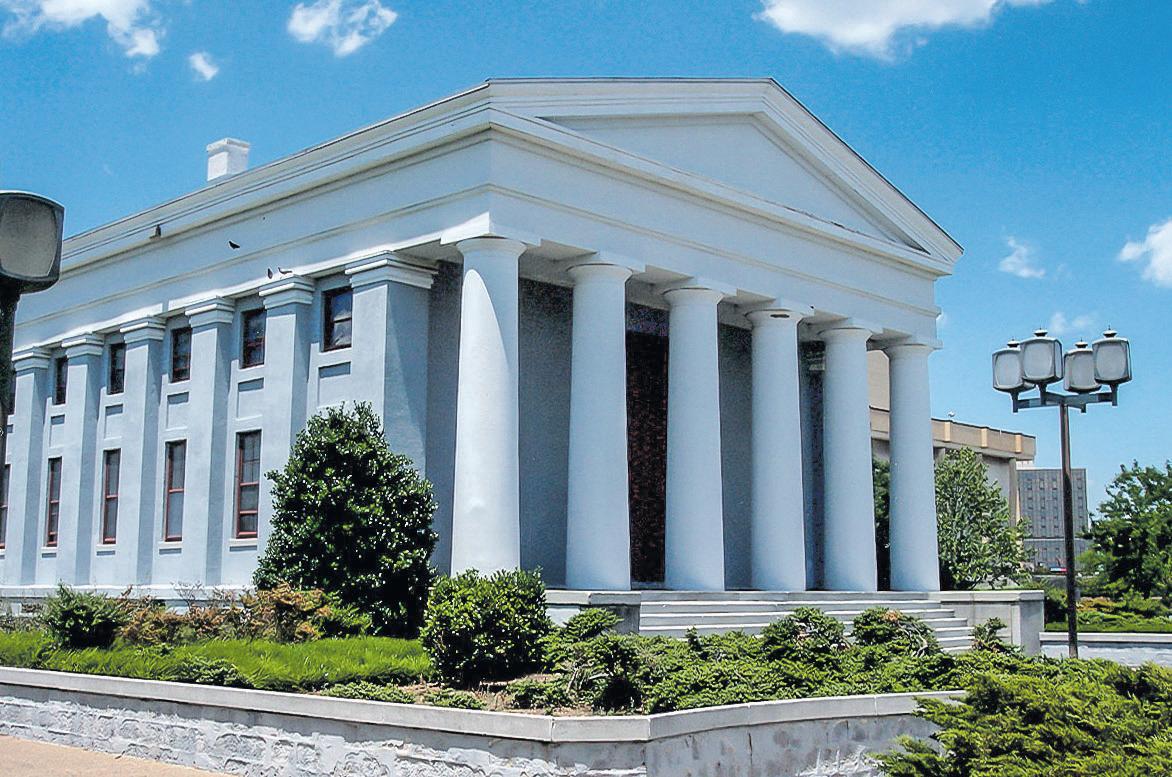
On May 14 a Union attack took Myer’s Hill from Rebel artillery and cavalry units. Upton’s infantrymen arrived and began to build protective earthworks as an uneasy calm settled in. Upton’s commander asked him if he could hold Myer’s Hill. Upton thought he could, but said he would need additional troops to reinforce his exposed position. Upton received just a few hundred men to bolster his fragile post.
Then, Union Army of the Potomac commander, George Meade, arrived for a conference at the Myer house with Upton. It began to rain in torrents. Soon after, hundreds of Rebels emerged from a wood line in a ferocious counter-attack that overwhelmed Upton’s forces, leading to Meade almost being captured in the Federal retreat. In response, a ruffled Meade ordered a massive Union attack, only to find the Confederates had left the hill.
On May 15 the Union victors burned the Myer house. Stationed two miles away, John Henry Myer, a drafted Confederate soldier, undoubtedly saw his home burning. The ruins of the house are there today, as are some remains of Upton’s earthen entrenchments. Hodge said, “When I first visited Myers Hill 15 years ago, I found melted window glass at the house site. I couldn’t help but think, ‘This glass burned on May 15, 1864. What was John Henry Myer thinking on that day, and where was his family?’ That was an interesting connection to make. It’s nice to finally protect it, but now we need to pay off the debt before we can save more land.”
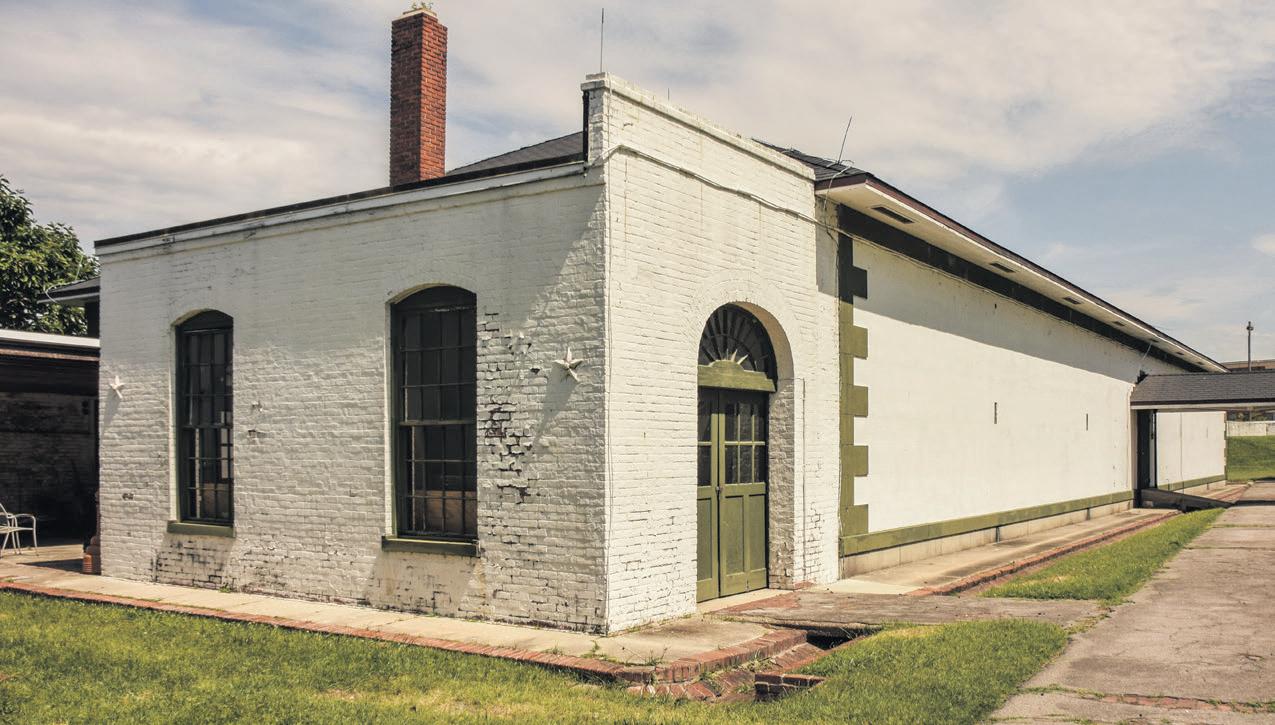
“Emory Upton and his brigade, we want to remember, and thus pay respect to all the soldiers by saving this land; it is a physical reminder that helps tell their story more clearly. Additionally, we are saving greenspace along the way. We need your help in order to accomplish this,” said board member, author, and historian, Eric Wittenberg. He added, “CVBT’s administrative costs are low, at 12%; one of our mottos over the years has been, ‘Your green buys green.’”
Other notable historians have wanted Myer’s Hill preserved for a decades. Civil War author Gordon Rhea, said CVBT’s Myer’s Hill purchase was “. . . one of the most important pristine
sites remaining to be preserved on the Spotsylvania Court House battlefield. It is imperative that this key location be saved to enable future generations to walk the ground and understand the momentous events that transpired there.” Spotsylvania resident and Myer’s Hill historian, John Cummings added, “I’ve been hoping for nearly twenty years to see this vital property preserved. The human interest stories relating to Myer’s Hill abound, and its preservation and interpretation will greatly enhance the understanding of the two week struggle at Spotsylvania Court House.”
Chief Historian Emeritus of the National Park Service, Ed Bearss, said, “Spotsylvania is one of the seismic battles of the Civil War. At Myer’s Hill Grant was checked, but he went back and retook it. The fighting for the hill resulted in a crucial two-day delay for his army.”
Because literacy and data gathering were exploding just before the Civil War began, historians and preservationists have a wealth of available resources to tell the Myer’s Hill story, as well as multitudes of other historic sites. Unpublished information is constantly being discovered and will continue well into the future to further explain our complicated history. Hodge said, “Often a battlefield is seen by many as an empty space and I get that; if one is not fortified with the specific knowledge of what transpired there, the historic fields are obviously much less meaningful. However, when one uses the written words from participants in those events, akin to what Maxwell Perkins was taking about in his letter to Hemingway, the doors of history open. When you read from the people who were there you realize more about the subject and the land it happened on and connect with America’s roots more completely.” History isn’t just about complicated names and dates, more importantly it is about the human experience, on that specific ground. The mass of letters breathes life into the space. On Myer’s Hill there are layers of stories to learn about, comprehend, and perhaps feel. It would be hard to have that same connection if that land became a Wal-Mart parking lot.
The Central Virginia Battlefields Trust pays fair market value for battlefield land. They work with landowners who want to see their property saved for future generations to be able to appreciate and learn about this watershed moment in America’s history. For more information contact www.cvbt.org.
33
Fort Norfolk Magazine. Cooke’s first assignment in Confederate service was assisting in capturing gunpowder at Fort Norfolk and shipping it to Richmond.
Kingston Parish Church, Mathews County, where Reverend Cooke served as rector from 1904 until 1917.
Norfolk Academy. Giles Cooke and Walter Taylor both attended Norfolk Academy and later VMI.
. .
H Preservation . . . . .
. . . from page
From the Editor
As I write this, we’re heading into the home stretch in advance of our Sixth Annual Emerging Civil War Symposium at Stevenson Ridge (Aug. 2-4, 2019). In a way, this time of year feels a little like December for me because “the big day,” with promises of fun and excitement, creeps closer and closer.
While we concentrate on producing a top-notch event for our attendees, the real fun for me comes when my colleagues start rolling into town ahead of the start time. As geographically diverse as ECW has become, the Symposium is still the one time of year when most of us are able to assemble in the same place at the same time. We catch up, have lots of laughs, smoke a few cigars, and share a beer or two. We talk history, swap ideas about the many projects we’re working on, and refight the war. It’s amazing how many of history’s problems would’ve been solved had we been there with our collective
wisdom to direct events!
The Symposium is also fun because it offers a chance for us to connect and re-connect with so many of our readers. We see a lot of familiar faces, and meet a lot of new folks who come from all over the country to join us. I know some people stay home and try to catch some of our talks on C-SPAN, and we’re grateful to C-SPAN for their generous coverage, but one thing TV can’t ever capture is the great sense of community and camaraderie we have when we all get together. That, more than anything, is the reason to come in person.
We already have details on our website about next year’s event: the Seventh Annual Emerging Civil War Symposium at Stevenson Ridge, including our theme and our keynote. We hope you’ll join us. We’d love the chance to hang out with you and talk history.
 — Chris Mackowski, Ph.D. Editor-in-Chief, Emerging Civil War
— Chris Mackowski, Ph.D. Editor-in-Chief, Emerging Civil War
10 Questions... with Chris Kolakowski
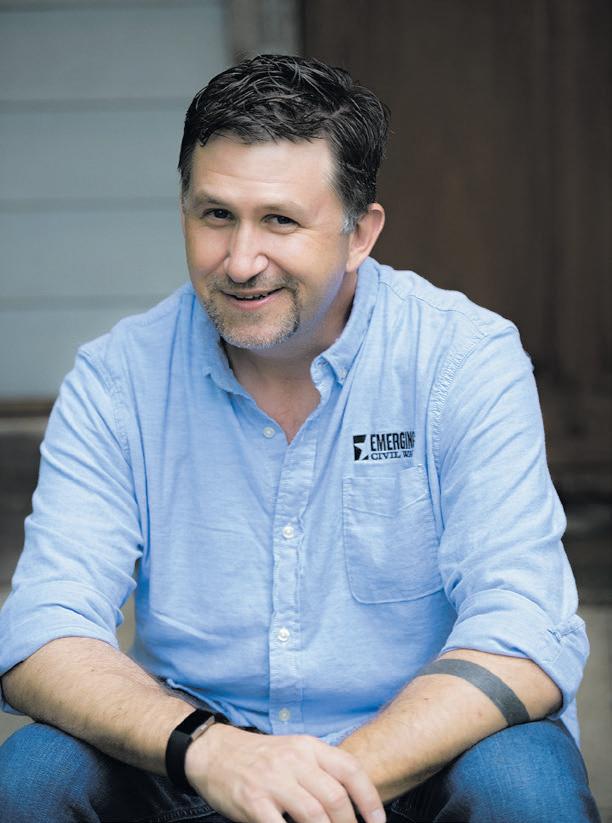
Chris Kolakowski is ECW’s chief historian. By day, he’s also director of the Douglas MacArthur Memorial in Norfolk, Va. He and ECW’s “other Polish Chris” are often confused with one another. You can read his full bio at https://emergingcivilwar. com/author-biographies/authors/ chris-kolakowski/.
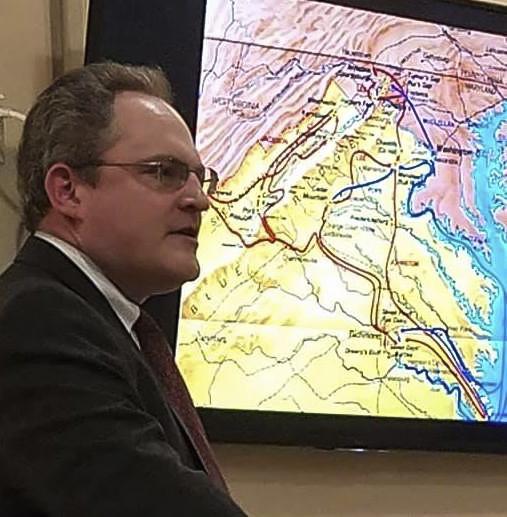
You will have the opportunity to explore the connection between your two main interests,
the Civil War and World War II, at an upcoming event at the Memorial. Can you give us a quick preview?
This will be a great event, and I’m really glad the MacArthur Memorial and ECW can partner to make it happen. On September 28, we’re bringing some great scholars together to explore the Civil War ancestry of Douglas MacArthur. Most people know about his father, Arthur, and Missionary Ridge in 1863, but many are unaware of Douglas’ connections to the Army of Northern Virginia through his mother. In one day, we’re going to highlight stories from both sides of his family.
overseas to do research for that project. What’s one thing in particular that stood out to you on your travels?
I traveled to India last September for two weeks, and it was incredible. As usual, seeing the ground and the places I’m writing about made a huge difference. The biggest thing that stuck out was that people are people, and are quite proud of who they are and what got them there; if you approach everyone with respect you’ll make connections and gain understanding you could never expect otherwise. Also, Imphal in September felt like Virginia in July.
If you had a particular Civil War topic you could write about at the moment, what would it be?
I’m not sure, as I’m pretty immersed in Burma. I’d probably want to do something with New York State or Wisconsin units, something about the Army of the Cumberland, or maybe one of the senior leaders on either side.
Lightning Round (short answers with a one-sentence explanation)
in St. Louis.
Each episode is only $1.99, which helps support the cost of producing the podcast. Subscribe today: https://www.patreon.com/ emergingcivilwar.
Behind the Scenes at ECW
You may have noticed that ECW has been executing a fullcourt press on social media lately. Different audiences with different demographics follow different platforms, so we’ve been trying to provide unique content for each.
Todd Arrington has been doing a fantastic job with our Facebook. He’s the one who brings you all the daily “This Day in Civil War History” posts, which have become incredibly popular; and, of course, we also try to share links to our blog post there.
You also explore connections between those wars through your popular “Echoes of the Civil War” blog series. Why do you find those echoes so fascinating?
They provide context to the Civil War and link it forward to more modern events. The generation born in the late 19th Century including Ike, MacArthur, Truman, et al, were children and grandchildren of Civil War veterans. The Civil War generation influenced them as they went into the 20th Century through WWI, the Depression, WWII, and the beginning of the Cold War. To cite just two examples: Douglas MacArthur and Simon Bolivar Buckner Jr. were both sons of noted Civil War commanders. To understand what drove, inspired, and influenced the two men, you have to start with their fathers and their wartime (and in Buckner Sr.’s case, prewar) experiences.
You’re currently at work on a book set in Burma during WWII. How is that coming along?
My book covers the 1944 India-Burma campaigns. I’m in the throes of writing and it is coming along quite well, thanks. It is a great story that is quite relevant today, and one I’m looking forward to bringing to readers.
You had the chance to travel
Favorite primary source? I Saw the Fall of the Philippines (aka Last Man off Bataan) by Carlos Romulo. Grant’s and Slim’s memoirs a close second.
Favorite Civil War-related monument? U.S. Army (Regulars) on Cemetery Ridge at Gettysburg
Favorite unsung hero of the Civil War era? Frank Wheaton, John Parke, or Peter Osterhaus
What’s a bucket-list Civil War site you’ve not yet visited? Bennett Place

Favorite ECWS book that’s not one of your own? Chancellorsville’s Forgotten Front: The Battles of Second Fredericksburg and Salem Church by Chris Mackowski and Kris White (not really an ECWS book, but an ECW book anyway!)
The Emerging Civil War Podcast
July saw the release of three ECW podcasts. In the first, cohost Dan Welch, a seasonal ranger at Gettysburg, talked about some of his favorite sites to visit on the battlefield. In the second, iconic re-enactor Robert Lee Hodge sat down for an intimate and insightful conversation. The third, which we offered for free, spotlighted the upcoming 2019 Civil War Roundtable Congress
Paige Gibbons Backus has undertaken a new initiative on Instagram. This platform, which is visually oriented, speaks to a younger demographic than Facebook. We have a great team of contributors sharing photography there. It’s become a really fun place because of all the cool pictures.
On YouTube, we’ve been pumping out a lot of content, with a lot more planned as more of our contributors get involved with video. We are intentionally trying to keep our YouTube page lowkey so that it’s as easy as possible to bring you content. Believe it or not, most of what you see there is actually produced on our cell phones. It’s incredible what technology allows us to do these days at our fingertips.
If you’re not following us on all these platforms, we invite you to sign up and follow along. You can really help us by liking our posts and sharing them. That makes a huge difference for us, and it’s an easy way to helps us keep spreading the gospel of the Civil War!
Emerging Civil War Bookshelf
Mathew Brady, Alexander Gardner, and Timothy O’Sullivan are famous for having made iconic photographs in the Civil War’s eastern theater. According to ECW’s Steve Davis, George N. Barnard deserves to be ranked in this top tier for his photographic work in the war’s western theater. Barnard was a civilian photographer hired by Gen. William T. Sherman’s chief engineer, Capt. Orlando Poe, to take pictures of fortifications around Atlanta. Barnard took several hundred of them in and around the city in
34 Civil War News September 2019
www.emergingcivilwar.com
Chris Mackowski
Part of the fun of the Symposium is battlefielding together.
Chris Kolakowski is one of ECW’s most popular presenters.
the fall of 1864. His most famous is the site of Union Maj. Gen. James B. McPherson’s death in the Battle of Atlanta, July 22, 1864.
No comprehensive, definitive listing has been made of the photographer’s work, until now! Steve has collaborated with Jack Melton of Historical Publications LLC of Charleston, S.C., on a new paperback highlighting Barnard’s work: 100 Significant Civil War Photographs: Atlanta Campaign.
“Jack has meticulously reproduced Barnard’s photography with clear and sharp images on quality gloss stock,” Steve says. “This is just one more reason that we like to call our work ‘the best little book on Barnard.’”
Price for Stephen Davis’ 100 Significant Civil War Photographs: Atlanta Campaign (128 pages, paperback) is $19.95 + $3.50 s & h. You can order your copy online at www.historicalpubs.com or by phone 800-777-1862.

For more on the book, read this post at ECW: https://emergingcivilwar.com/2019/07/25/ best-little-book-on-barnard/.
News and Notes
Emerging Civil War was well represented at the American Battlefield Trust’s annual Teacher Institute, held July 11-14 in Raleigh, NC. ECW co-founder Kris White, the Trust’s education manager, organized and ran the event. ECW contributors Dan Davis, Bert Dunkerly, Chris Mackowski, and Derek Maxfield all presented. Bert and ECW’s Phill Greenwalt gave tours of the Rev War battlefield at Guilford Court House.

Dan, co-author (with Phill) of Calamity in Carolina: The Battles of Bentonville and Averasboro, co-led a tour at Bentonville.
Chris co-led a tour at Bennett Place, with additional commentary on the Civil Rights history of Durham, NC.
Sarah Kay Bierle is looking forward to coming back to Virginia to speak at two conferences (including the ECW Symposium).
In addition to presenting and researching, she is excited to take her mom to some new museums and historic sites.
Sean Chick is traveling to Nashville to get pictures for an ECW volume about the battle of Nashville.
In the July 2019 Civil War News, Steve Davis’s article “Hollywood History” touched on a few movies that are based on famous raids during the war, including The Great Locomotive Chase, The Horse Soldiers, and Alvarez Kelly, with an extended look at The Raid, based on events in St. Albans, Vt. He also had an extended piece on a member of the 24th Wisconsin killed in a skirmish in Adairsville, Ga. Finally, his “Critics Corner” provided an excellent synopsis of recent scholarship into Confederate nationalism.
Bert Dunkerly has a busy line-up over the next couple of months:
• During the last week of July,
Civil War News
he will be assisting Colonial National Historical Park with the 1619 400th Anniversary event. He previously worked at the park as a seasonal ranger.
• On August 13, Bert will be speaking to the Richmond, Va., Civil War Round Table about the Brown’s Island explosion of 1863. He has done new research on the identities and burial sites of the victims, uncovering previously unknown information about them.

• On Saturday, August 24, Bert will be giving a bus tour focusing on connections between 1619 and the Civil War. The tour is part of a series being offered by Richmond National Battlefield Park. Registration information is here: Bus Tour: “1619 To The Civil War.”
• On September 4, he will be speaking to the Dr. George Mosse SAR chapter in South Carolina about the Battle of Eutaw Springs.
Meg Groeling reviewed James Broomall’s Private Confederacies: The Emotion Worlds of Southern Men as Citizens and Soldiers for the July 2019 Civil War News.
Terry Rensel, a member of the blog’s editorial board, accepted a new position as the executive director of the Central Virginia Battlefields Trust. He started on July 1.
to purchase your tickets: check this out: https://emergingrevolutionarywar.org/symposium/
As always, stay current on your American Revolutionary Era history by checking out the Emerging Revolutionary War blog: www.emergingrevolutionarywar.org. In addition, look forward on the blog to the next volume of the popular Emerging Revolutionary War Series due out this fall.

Douglas MacArthur and the Civil War: “The Reunion of Blue & Gray Personified”
The American Civil War was an immediate and formative experience for Douglas MacArthur’s parents and their families, and their experiences helped
inspire and shape MacArthur. MacArthur’s wife also had a significant Civil War pedigree. Between them, General and Mrs. MacArthur had ties to virtually every major land campaign east of the Mississippi River.
The MacArthur Memorial and Emerging Civil War are co-sponsoring a symposium with four scholars exploring the Civil War activities of Douglas and Jean MacArthur’s ancestors. Speakers include Chris Mackowski, Charlie McKnight, Dan Welch, and Brian Steel Wills. Chris Kolakowski will moderate.
Join us on September 28, 2019, from 9:15 a.m. – 3:00 p.m. at the MacArthur Memorial, 198 Bank Street, Norfolk, VA, 23510. The event is FREE, but registration is required. Call 757.441.2965 to reserve a seat or register online: https://goo.gl/ndrPLL.
Civil War Artillery Book

New 392 page, full-color book, Civil War Artillery Projectiles – The Half Shell Book.

For more information and how to order visit the website www.ArtillerymanMagazine. com or call 800-777-1862.
$89.95 + $8 media mail for the standard edition.
Deadlines for Advertising or Editorial Submissions is the 20th of each month. Email to: ads@civilwarnews.com
Emerging Revolutionary War News
August had its ups and downs for the cause of American Independence. 1776 saw the British victorious in the engagement of Long Island, but two years later saw the preliminary victories that would lead to the culminating battle of the Saratoga Campaign. However, before bullets could be fired and cannons discharged on the battlefield, the patriotic movement had to splinter the colonies from Great Britain. How did that come about?
That answer is the focal point of the first Emerging Revolutionary War Symposium! The Symposium will be held in conjunction with Gadsby’s Tavern and the Lyceum of Alexandria, Va., on September 28, 2019. A slate of speakers will talk about various aspects related to the theme “Before They Were Americans.” For information on the symposium and how
35 September
2019
Bert Dunkerly, Chris Mackowski, Phill Greenwalt, Kris White, and Dan Davis at the American Battlefield Trust’s Teacher Institute in Raleigh, N.C.
widely telegraphed famous for photographic engineer to hundred of site of July 22, photographer’s West widow. History in though STEPHEN DAVIS 100 SIGNIFICANT CIVIL WAR PHOTOGRAPHS ATLANTA CAMPAIGN
Steve Davis’s new book, published by Historical Publications, LLC.
“This is the magazine for all things Civil War Navy. From ‘Uncle Sam’s web-feet’ to the ‘grey jacket navy’ raised by Jeff Davis! It is all here thoroughly researched and illustrated by beautiful contemporary navy images.” Ron Field, military historian and author of over 45 books, including Bluejackets: Uniforms of the United States Navy in the Civil War Period, 1852-1865. New Price Effective July 1, 2019 • 1 Year—4 Issues: $37.95 Subscribe Now at civilwarnavy.com Or send a check to: CSA Media, 808 Drayton St., Savannah, GA 31401 International subscriptions subject to postage surcharge. Sailors and Marines on the deck of the U.S. gunboat Mendota, 1864. National Archives (Identifier 524548). All Hands on Deck! Support Our Mission to Bring You the Naval History
Civil War News book reviews provide our readers with timely analysis of the latest and most significant Civil War research and scholarship. Contact Stephen Davis, Civil War News Book Review Editor. Email: BookReviews@CivilWarNews.com.
The Tortured Road to Freedom
Illusions of Emancipation: The Pursuit of Freedom and Equality in the Twilight of Slavery. By Joseph P. Reidy. Illustrations, notes, bibliography, index, 506pp., 2019. University of North Carolina Press, www. uncpress.org. $39.95 cloth.
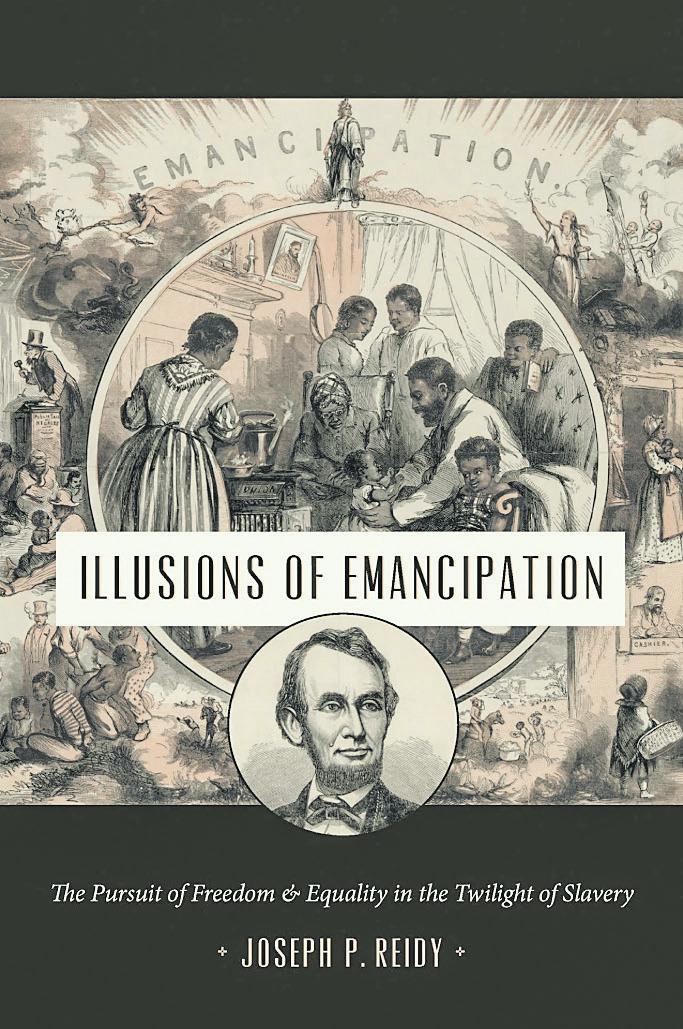
Reviewed by Wayne L.
Wolf
How Congress Changed America During the Civil War
Civil War Congress and the Creation of Modern America: A Revolution on the Home Front. Edited by Paul Finkelman and Donald R. Kennon. 58 illustrations, notes, index, 232 pp., 2019. Ohio University Press, www.ohioswallow.com. $35 hardcover.

Reviewed by Paul
Taylor
absence of Southern Democrats in Congress, which allowed Northern Republicans to pass legislation that the dominant Democratic Party had steadfastly refused to support prior to the war, believing such laws were harmful to Southern interests.
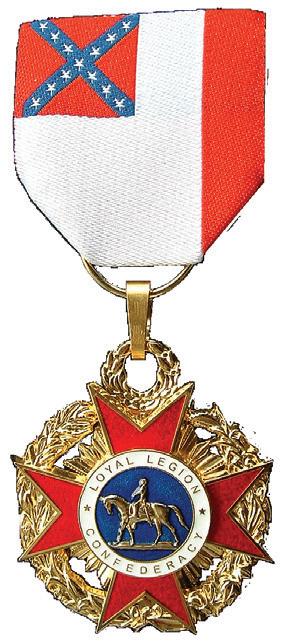
women becoming an acceptable and permanent part of the Federal government workforce.
Emancipation may have become law with the conclusion of the Civil War and the adoption of the 13th Amendment. Yet Joseph Reidy forcefully argues that the process of emancipation and the full enjoyment of citizenship and its rights and privileges did not occur simultaneously. The path to the eradication of the legacy of slavery was long, uneven, filled with successes and failures, and may still be an ongoing process in American society. This volume wraps the struggle for true social, political and economic equality around three themes—time, space and home. Time began long before Abraham Lincoln’s Emancipation Proclamation. For preceding decades slaves took a central part in their own quest for freedom, escaping or purchasing their liberty, engaging in revolts or work stoppages, and pressing for increased aspects of freedom whenever possible. These methods differed depending on the space occupied by the
slaves. In border states the Ohio River loomed as the Bible’s River Jordan. Yet the quest for freedom frequently ended in re-enslavement, punishment, or being sold farther South. This frequently involved splitting up families, destroying the sense of home, whether that was defined as relatives or geographically as the plantation, and alienating slaves from their sense of belonging.
Within this framework politicians, soldiers, abolitionists and slaves themselves chartered a somewhat tortuous path, frequently imbued with disappointment and destroyed hopes toward the full realization of freedom.
During the Civil War the movement of armies frequently dictated temporary freedom or a return to slavery. It likewise destroyed the traditional relationship between owner and slave and caused every American, North and South, to reach for new meaning for society, culture and political control.
Joseph Reidy must be complimented on a thoroughly researched analysis of the path toward emancipation in its fullest sense. His use of primary source material conveys not only the facts but the emotions of the participants in the struggle for freedom.
This volume will undoubtedly stand as one of the most exhaustive and important looks at emancipation and the road to equality. It is highly recommended for anyone interested in slavery, emancipation and the social, cultural and political changes brought about by freeing three million enslaved people.
Wayne L. Wolf is Professor Emeritus at South Suburban College in Illinois and the author or editor of twenty-four books on the Civil War, including Two Years Before the Paddlewheel and Heroes and Rogues of the Civil War. He is currently researching primary source material on the life of the common soldier.
The most common images of the Civil War are ones of grand battles, marching armies, and intense political debates within the United States Congress. Yet often overlooked or even neglected in our study of the war is understanding the long-term impact that Congress’s wartime focus had on the nation’s legal and social fabric. The seven scholarly essays in this volume serve to remind us of the myriad ways that the war’s Congressional legislation fundamentally transformed Northern society and how those laws continue to impact our daily lives to this day.
Co-editor Paul Finkelman sets up his authors’ essays by pointing out that the war enlarged our national government beyond anything imaginable in 1861. This was due in large measure to the
Jennifer Weber’s opening essay on the March 1863 conscription act describes how, for the first time in the country’s history, an average man now had a potential life-or-death interest in national politics. This Federal incursion into what had previously been a local or state matter is a common theme throughout this book: the seismic shift, in only four years, of the relationship between the Federal and state governments, as well as between the country and its citizens. These foundational changes, as this book asserts, all emanated from within the halls of the Congress in Washington.
By the end of the rebellion, the nation had been transformed from a primarily agrarian land into a growing industrial behemoth, due in large measure to the North’s need for war supplies. Paying for the war effort cost immense sums and, as Jenny Bourne explains, the war led to the creation of the Internal Revenue Service and a national income tax, paper money known as “Greenbacks,” and massive federal government borrowing with the debt sold directly to the public.
The war also changed how society viewed acceptable “women’s work.” With so many men off fighting, the war created marketplace opportunities for women that previously did not exist.
Daniel Stowell tells how the federal government employed large numbers of women for the first time ever to count and scissor-cut Treasury notes, thus freeing those men previously employed in such duty to now wield muskets instead of shears. These socalled “Government Girls” led to
In addition to its legislative efforts to help suppress the rebellion, the Republican-dominated Congress passed laws that had little or nothing to do with the war effort. The additional essays discuss how the Department of Agriculture, the Homestead Act, the Land Grant College Act, and enhanced civil rights for African Americans all came into being during 1861–65.
Illustrations and footnotes (far more user friendly than endnotes in this reviewer’s opinion) abound in this slender yet excellent volume. This work is part of the Ohio University Press’s “Perspectives on the History of Congress, 1801–1877” Series, which is currently a seven-volume series that examines the U.S. Congress during the antebellum and Civil War eras. It rightly reminds us how the Civil War remains to this day the foremost event in U.S. history. Its essays specifically illustrate how the war brought forth a revolution in the size and scope of America’s national government that, along with a consequential change in culture and society, still resonates into the 21st century.
Paul Taylor is an award-winning author of seven books pertaining to the Civil War era. His most recent book, “The Most Complete Political Machine Ever Known”: The North’s Union Leagues in the American Civil War, was published by Kent State Univ. Press in 2018. He is currently editing the letters of Union engineer officer Orlando M. Poe to his wife for future publication.
36 Civil War News September 2019
Subscribe at CivilWarNews.com
Loyal Legion of the Confederacy CSA National Defense Medals & other banned internet items Civil War Recreations WWW.CWMEDALS.COM cwmedals@yahoo.com 1 Smithbridge Rd., Unit 61, Chester Heights, PA 19017 Digital Issues of CWN are available by subscription alone or with print plus CWN archives from 2012 at CivilWarNews.com
Lincoln and Seward: An Unlikely Partnership
Lincoln, Seward and US Foreign Relations in the Civil War Era. By Joseph A. Fry. Illustrations, index, bibliography, 244 pp., 2019. University Press of Kentucky, kentuckypress.com. $60 cloth.

Reviewed by Wayne L. Wolf
An Excellent Look at French Diplomacy During the American Civil War
would concentrate all of their resources to these ends, economically bearing the cost of the war, politically keeping Europe from assisting the Confederacy, and morally taking the high ground against slavery and for freedom. Lincoln would use his political savvy and Seward his diplomatic skills to achieve these three objectives.
France and the American Civil War—A Diplomatic History. By Stève Sainlaude, Translated by Jessica Edwards. Photos, notes, chronology, index, bibliography, 285 pages, 2019. University of North Carolina Press, www.uncpress.org. $45 hardcover.
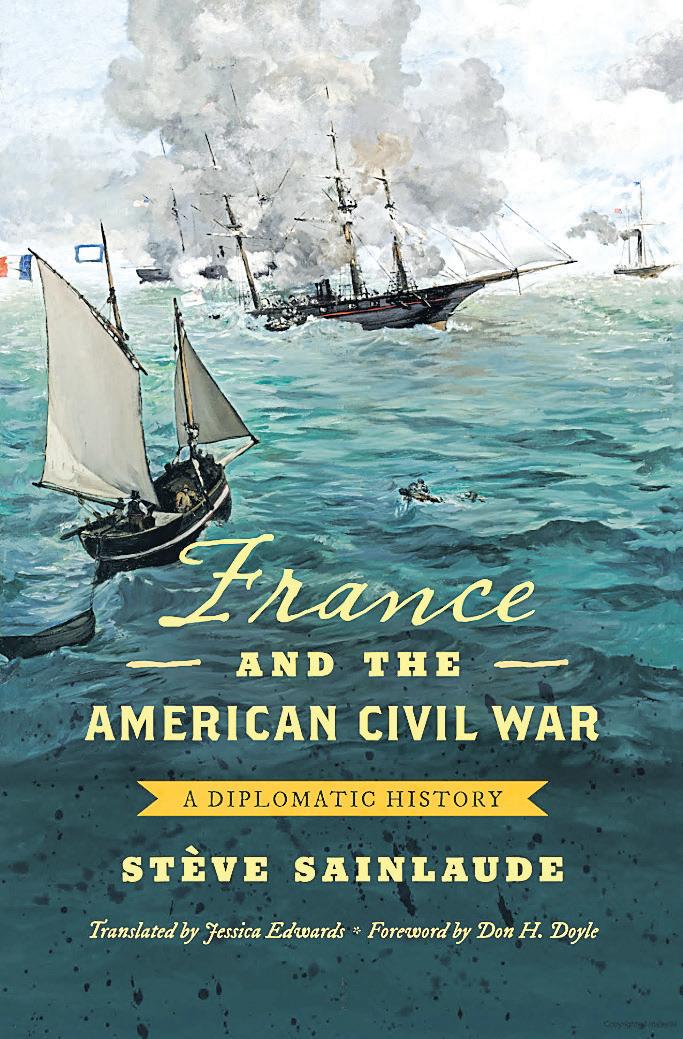 Reviewed
Reviewed
by Tom Elmore
very capable foreign ministers during the war years. From 18601862 it was Edouard Thouvenel, an experienced and energetic diplomatic who was widely respected for his legal knowledge and writing skills. From 1862 until the war’s end, it was Edouard Drouyn de Lhuys who was also an experienced diplomat known for his writing skills.
hopeless.
Joseph A. Fry has compiled a comprehensive and thoroughly researched look at the policies of Abraham Lincoln and William Seward that combined threats, caution and compromise that saved the Union. Additionally, these strategies defended republicanism, nationalism and freedom as an example for the world to emulate. Coming from two distinctly different backgrounds— the rural, hardscrabble western frontier of Lincoln and the elitist, wealthy eastern establishment of Seward—these two leaders forged a partnership of respect that aimed to win the Civil War, prevent European intervention in that conflict, and silence domestic critics. Both men suffered through massive political assaults on the home front and from the foreign press, yet never lost sight of their goal of keeping the nation united. Theirs was a vision of an America ever expanding westward, becoming a dominant world power, and enriching Americans as leaders of world production and commerce.
From its first foreign policy decision, supplying Fort Sumter and blockading Southern ports, to its last conference aboard the River Queen, the Lincoln administration was consistent in its demands for a reunited country, no retreat on the ultimate goal of emancipation, and no truce before the end of the war. The South would have to submit to these demands or continue to fight for its existence. Lincoln and Seward
Unfortunately, just as the fruits of four years of diplomacy were succeeding, John Wilkes Booth destroyed their partnership. But William Seward, barely surviving assassination himself, continued Lincoln’s vision through the Andrew Johnson administration. He never retreated from his quest for the end of slavery and full civil rights for freedmen, westward expansion for America, international dominance in commerce, and the spread of democracy around the world. While Seward’s most notable foreign policy achievement was the purchase of Alaska, his goals of building a Panama Canal, opening trade with Asia and acquiring Hawaii, the Virgin Islands and Puerto Rico became the cornerstone of late 19th- and early 20th-century American foreign policy.
As a contemporary interpretation of the unlikely partnership between Lincoln and Seward, this book does an excellent job of not only illuminating the intellectual and diplomatic skills of the President and Secretary of State, but also fully developing their vision of what a united America could become on the world stage.
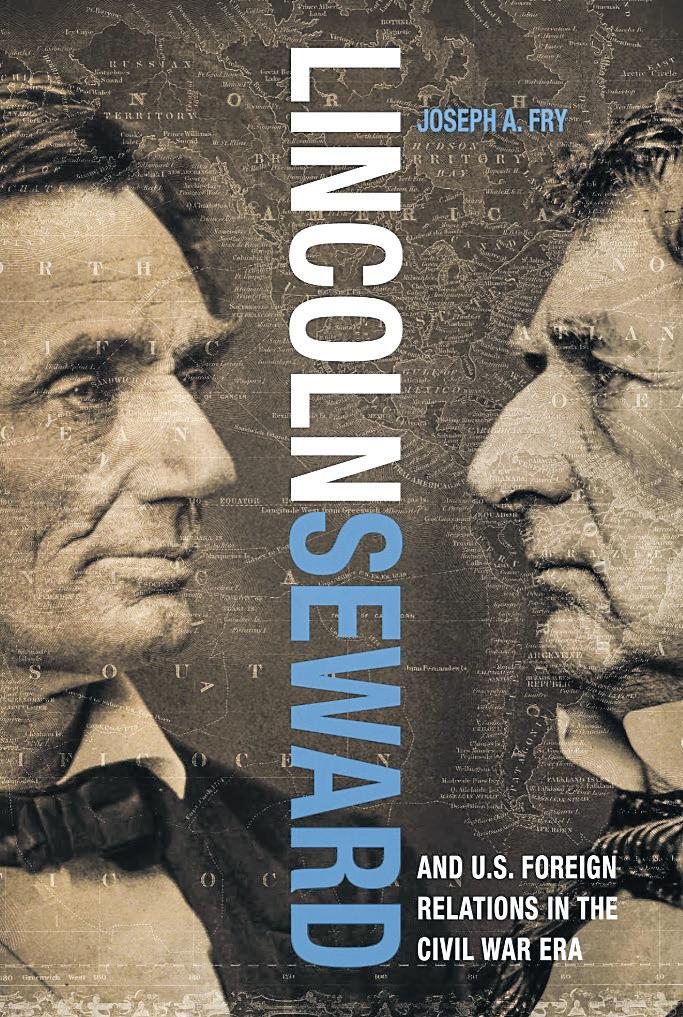
At $60, a bit pricey, Fry’s work is worth the cost for those seeking to better understand the nuances of diplomacy abroad and at home during the Civil War era. Additionally, the bibliographic essay at the conclusion supplies a wealth of avenues for further research.
Wayne Wolf is a frequent reviewer for Civil War News.
During the Civil War’s sesquicentennial historians presented long-overdue re-examinations of the diplomatic side of the war. In the process they showed that the war’s impact was not limited to just North America, but was global. Joining this welcomed new scholarship is Sainlaude’s original and unique examination of the role France played in the war.
Unlike previous historians who looked at the subject from the American perspective, Sainlaude, a history professor at the University of Paris IV Sorbonne, examines it from the French perspective. The result is a fascinating look at the court of French Emperor Louis Napoleon III. Napoleon Bonaparte’s nephew shared his uncle’s vision of greatness for France, but lacked his intelligence and fortitude. Fortunately, the emperor had two
However, the relationship between Napoleon and his ministers was awkward. Both ministers often ignored the orders of Napoleon, almost to the point of insubordination because they found his instructions vague and unrealistic. Consequently, Napoleon often went behind his ministers’ backs to conduct foreign matters.
The author argues that Napoleon III early on favored French recognition of the Confederacy, partially because of the way Northern cities had treated him during an 1830s American tour. However, the ministers took a “wait-and-see” approach, believing that the South would only win with outside assistance. They were also worried about potential Confederate expansion into Mexico. Furthermore, both ministers felt that a Confederate victory would be more to England’s advantage than to France’s. Consequently they persuaded Napoleon not to give the Confederacy recognition, though the emperor came close to doing so in 1862 and 1863.
However, the blockade that granted the South belligerency status from Europe created diplomatic problems for the Lincoln Administration, which turned down several offers of mediation by the French ruler. Interestingly, Sainlaude argues that the Emancipation Proclamation had virtually no effect on France’s view or approach to the Civil War and that it was the fall of Vicksburg and not Lee’s defeat at Gettysburg that convinced France’s foreign ministry that a Southern military victory was
The author also examines the relationship between France and England. While their approach to the events in America was similar, that was about it. Relations between the two countries were severely strained, thanks in no small part to England’s concerns about French expansionism in Mexico and the Papal States. In fact, the British Prime Minister, Lord Palmerston, personally despised the French monarch.
There are plenty of interesting facts shared in this book, among them that the American Civil War was not a top priority for either England or France and the main reason they gave it what attention it received was because of concerns on how the war affected their respective economies. While the news from America was a hot topic for the British public, in France it received little attention. And for trivia fans, the author points out that it was not until June 8, 1865, that France revoked the Confederacy’s belligerent status.
The research is impeccable; much of the material presented comes from the author’s meticulous research in French archives, citing previously unused sources. The writing is fresh, crisp and balanced.
Anyone with even a passing interest in the diplomatic side of the war needs to read this book. This is easily one of the best books ever written on the war’s diplomatic front and one of the best Civil War books, period, that this reviewer has read in a long time. Do not be surprised if France and the American Civil War—A Diplomatic History appears on the list of book award-winners at year’s end.
Tom Elmore is a Columbia, S.C.based author/historian. He often points out that the only dwelling on the city’s Main Street to survive the fire that destroyed a third of Columbia on February 17, 1865, was the French Consulate.
37 September 2019 Civil War News Digital Issues of CWN are available by subscription alone or with print plus CWN archives from 2012 at CivilWarNews.com Want to Advertise in Civil War News? Email us at ads@civilwarnews.com Or Call 800-777-1862
By Stephen Davis Special to Civil War News
Readers of my “Hollywood History” column last month may have wondered why I didn’t mention Glory (1989) in my brief listing of memorable Civil War movies.
Well, it’s because I was looking forward to the 30th Anniversary return of the film to big-screen theaters on July 21.
A bunch of friends from the Atlanta Civil War Round Table joined me for the movie. It’s been awhile since I’ve seen it, so in many ways viewing it again in a darkened theater was like seeing it for the first time.
…sort of. I knew what to expect: Robert Gould Shaw (Matthew Broderick) leading Massachusetts troops at Antietam; Governor Andrew offering Shaw the colonelcy of the colored regiment he planned to raise; the long period of drilling and equipping; first action on James Island, July 16, 1863; and the heroic, tragic charge against Fort Wagner two days later.
That’s the familiar outline. But watching it again, I couldn’t help but be moved by some particular scenes:
• Frederick Douglass declares that the formation of the 54th will offer dignity for men used to degradation;
• Major Forbes, Robert’s friend, asking, do you know how popular it will be in Massachusetts to hand guns to a thousand coloreds? (the same Forbes who, later, protests the flogging of Denzel Washington for leaving camp looking for shoes);
• At training camp, veterans laugh at the “gingers”*;
• After Shaw announces that the Rebel government has declared that all black Union soldiers captured will be returned to slavery, he allows his men to apply for discharge. The next morning he asks how many are left—then sees the full regiment standing at attention to greet him;
• When he learns that his men will be paid only $10 a month (instead of $13), Shaw joins them in tearing up his pay voucher.
*No kidding: a few years ago, my favorite AM-radio station one evening played a tune whose refrain ran, “Only a Ginger can call another Ginger a Ginger.” Wish I knew the artist. But you get what I mean.
What struck me is that Glory focuses on the process by which
Glory Redivivus
Shaw’s soldiers in training and drill gradually transform themselves into soldiers—men, as one of them says. As we know, the process of becoming a man is a stop-and-go, very uncertain transition, with back-and-forths all along the way. Thus I noted that after receiving “blue suits,” their uniforms—a hugely important event for the 54th—the soldiers then resort to childish antics when they receive their muskets. (Back-and-forth.)
In preparation for the theater screening, I read John David Smith’s essay on Glory in a new book, Matthew Christopher Hulbert and John C. Inscoe, eds., Writing History with Lightning: Cinematic Representations of Nineteenth Century America (Louisiana State University Press, 2019). Professor Smith makes the point that “unlike the caricatures of blacks in The Birth of a Nation (1915) and Gone With the Wind (1939), Glory offered ‘a greater variety of black characters.’”
That resonated when I noticed the huge behavioral differences between, say, Sergeant Major John Rawlins (Morgan Freeman) and Private Trip (Denzel). Yet the two came together so movingly in the campfire revival scene when the men are singing their hymnal (“Lawd! Lawd! Lawd!”).
The professors got it right, back in ’89. In a review of Glory for the American Historical Review, Gerald Horne, teacher of American Studies in Houston, wrote that Hollywood’s Civil War has been fought by Northern and Southern white men, with black people looking on rather helplessly. “With Glory,” he writes, referring to the 188,000 blacks who fought for the Union, “125 years after the fact, Hollywood finally gets this chapter in history right.”
Noting that most of the men who volunteered for the 54th were not former slaves, James M. McPherson wrote, “That is the real story told by Glory. That is why most of the soldiers are depicted as former slaves. It is a story of their transformation from an oppressed to a proud people.” I noted that in the film, when the 54th marched through Boston headed for the front, Frederick Douglass and Governor Andrew both held their hands over their hearts.
Director Ed Zwick made this point when he was interviewed by film critic Armond White (Film Comment, January 1990).
Zwick remarked that he hoped his film would succeed in “redressing historical misperception,
providing positive role models” about African Americans in Civil War America. Morgan Freeman, above all, got this. “This is the kind of picture that gives legitimacy to the history of people of color and tells us who we are,” he remarked.
A couple of years ago Civil War Monitor published a special for-newsstand-only issue, The Civil War Almanac. It featured a bunch of cool stuff: “Most Overrated Commanders,” “Best Photographs,” et al. The section on “Best Movies” offered opinions by Profs. Matthew Hulbert, James Marten and Amy Taylor. Not surprisingly, Glory was #1 on their collective list. In its current Summer 2019 issue, Civil War Monitor published Hulbert’s and Marten’s individual “Top Ten” lists; Glory was on both of them. After the movie my friends and I retired to a local pub to discuss our experiences, especially the scenes that impressed them anew. For Charlie Crawford, it was when Morgan upbraided Denzel for his surly attitude. Loran Crabtree commented on the final charge that demonstrated the soldiers’ courage. Carlton Mullis mentioned the arrival of their uniforms (“If you have ever put on a uniform, you understand the transformation”). Ken Griffiths remembered the pay vouchers. Mary Elizabeth Ellard offered that this was the first time she saw the movie in a theater; back in 1989, she was in veterinary school, and couldn’t spare the time (“So excited to finally see it!”).
Catch this, from Gordon Jones: “My most memorable scene was the one where Colonel Shaw is being dressed by his valet prior to leading the assault on Ft. Wagner. Years ago, when filming an episode of ‘Who Do You Think You Are?,’ Matthew Broderick told me that the dressing scene was actually his idea. In getting costumed as an officer every day, he was struck by the amount of time it took simply to get dressed, especially with the sash, sword belt, and so on. The music and the build-up tell you that Shaw understands full well what is about to happen. His is the burden of leadership—he has to look and act the part to inspire confidence in his men, even though he is suppressing his personal fear. The man knows he’s doing to die, and he’s dressing for death.”
That brings up my overriding impression from watching Glory again. Premiering in 1989, Edward Zwick’s masterpiece appeared fifteen years after the
United States had lost the war in Vietnam. A decade and a half later the country was still embittered by the experience of futile and wasteful war. But here came a film that recast war in its ancient guise—manly combat as ennobling, battlefield death as sublime. (The very title itself, Glory.) The film’s soundtrack heightened that message. James Horner’s soaring score, those haunting choral voices; I thought I was listening to the Mormon Tabernacle Choir on the beaches of Morris Island. I relived that emotional experience at the theater that Sunday afternoon. (In the credits, I learned that the singers were none other than the Boys’ Choir of Harlem!) Shaw’s father wanted no monument except the ditch, where his son’s body was thrown
The lines are from Robert Lowell’s poem, “Colonel Shaw and the Massachusetts’ 54th” (1959), now more famous as “For the Union Dead.” Colonel Shaw did in fact get a monument, though not at Morris Island, nor in Beaufort, South Carolina (where Shaw’s anonymous remains were probably reinterred). It’s in Boston, opposite the State House on Boston Common. In the early 1880s, Bostonians decided to erect a monument to Shaw and his regiment, raised money and commissioned the famed sculptor Augustus Saint-Gaudens to render the work. Its dedication on May 31, 1897, brought forth magnificent oratory from dignitaries who extolled the bravery of Shaw and his men, shown on the march in Saint-Gaudens’ bronze relief. This is the monument so touchingly shown in the final minutes of Glory, the camera poring over every detail of Shaw and his soldiers. (After the film, we watched Ben Mankiewicz of Turner Classic Movies explain that it was the Saint-Gaudens monument that inspired screenwriter Kevin Jarre to write Glory.)
This very sculpture was also the inspiration for Robert Lowell’s poem.
Their monument sticks like a fishbone in the city’s throat. Its Colonel is as lean as a compass-needle.
It’s not hard to get the poet’s meaning. Here we are in today’s rat-racing, money-grubbing, Zoloft-popping culture—in Boston, but ‘most everywhere in America—and in stark, “compass-needle” contrast stand Robert Gould Shaw and his men from a long-gone era.
Talk about sublimity! (My point, above.)
Lowell’s poem concludes: Colonel Shaw is riding on his bubble, he waits for the blessed break. The Aquarium is gone. Everywhere, giant finned cars nose forward like fish; a savage servility slides by on grease.
Sources
• Peter Burchard, One Gallant Rush: Robert Gould Shaw and His Brave Black Regiment (New York, 1965).
• Bruce Chadwick, The Reel Civil War: Mythmaking in American Film (New York, 2001).
• Henry J. Duffy, “Consecration and Monument: Robert Gould Shaw, the 54th Massachusetts Regiment, and the Shaw Memorial” in Kirk Savage ed., The Civil War in Art and Memory (New Haven: 2016), 189-202.
• Russell Duncan, Where Death and Glory Meet: Colonel Robert Gould Shaw and the 54th Massachusetts Infantry (Athens, 1999).
• Gary W. Gallagher, Causes Won, Lost, and Forgotten: How Hollywood and Popular Art Shape What We Know about the Civil War (Chapel Hill, 2008).
• Michael Hofferber, “Bronze Heroes: Augusts Saint-Gaudens’ Civil War Memorials,” Civil War Times Illustrated, vol. 26, no. 7 (November 1987), 32-37.
• Gerald Horne, review of Glory, American Historical Review, vol. 95, no. 4 (October 1990), 1141.
• C. Peter Jorgensen, “The Making of ‘Glory,’” Civil War Times Illustrated, vol. 28, no. 6 (November-December 1989), 52-59.
• James M. McPherson, “The ‘Glory’ Story,” New Republic, January 8 and 15, 1990, 22-23, 26-27.
• John David Smith, “Glory: ‘Heroism Writ Large, From People Whom History Had Made Small,’” in Matthew Christopher Hulbert and John C. Inscoe, eds., Writing History with Lightning: Cinematic Representations of Nineteenth America (Baton Rouge, 2019), pp. 162-171.
• Gregory J. W. Urwin, “I Want You to Prove Yourselves Men,” Civil War Times Illustrated, vol. 28, no. 6 (November-December 1989), 42-44, 46-51
• Brian Steel Wills, Gone With the Glory: The Civil War in Cinema (Lanham MD, 2007), Ch. 12, pp. 139-53.
38 Civil War News September 2019
A Very Useful Book Layout—But is it Mass Produced too Quickly?
Decisions of the Atlanta Campaign: The Twenty-One Critical Decisions that Defined the Operation. By Lawrence K. Peterson. Maps, photos, notes, bibliography, index, 242 pages, 2019. University of Tennessee Press, www.utpress.org.
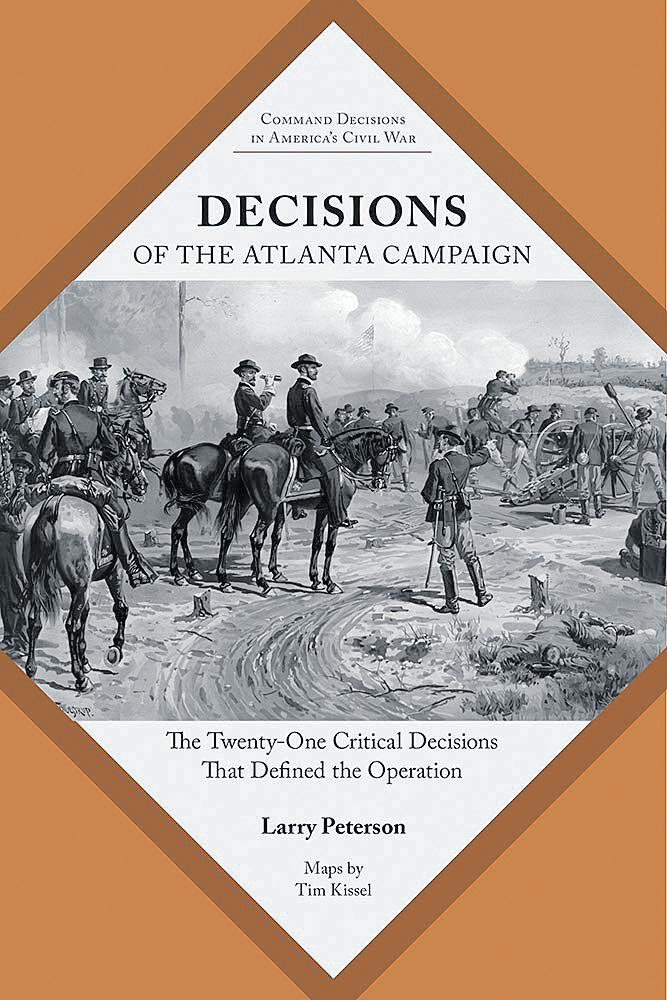
paper.
$29.95
Reviewed by Gary Ecelbarger
McPherson’s “ninth critical decision of the campaign to retreat all the way to Snake Creek Gap” (page 48) was actually not his decision to make at all; it was part of his mission. General Sherman’s orders to McPherson stresse, “It [the railroad at Resaca] once broken to an extent that would take them days to repair, you can withdraw to Snake [Creek] Gap and come to us or await the development. . .”
The pivotal, four-month-long 1864 Atlanta Campaign is in the midst of an 11-year renaissance in Civil War book literature. Author Lawrence Peterson has chosen this campaign for the seventh installment of UT Press’s series exploring major decisions made by key commanders on both sides. He presents each case by summarizing the situation, exploring possible options facing the decision-maker, identifying the decision made, evaluating the results and the impact rendered by the decision, and then considering alternate decisions and subsequent scenarios. Although this template repeats 21 times in six chapters for the Atlanta edition, it succeeds as a stimulating read rather than a stale one as it uniquely interprets the campaign. The author’s work is well complemented by period art, photographs, and excellent explanatory maps by cartographer Tim Kissel.
The presentation of each decision appears designed to foster debate and discussion among Civil War enthusiasts and military historians. Peterson succeeds for most of his Atlanta Campaign cases, and in some of them—particularly regarding Sherman’s deliberate decision to wreck railroads instead of chasing elusive armies—the author shines at his brightest.
Where the book hits its darkest spots is in mischaracterized decisions. This includes two of the three decisions surrounding the Snake Creek Gap and Resaca portion of the campaign. In one particular case, General James B.
Additionally, McPherson was never ordered to seize or hold Resaca, as the author claims in his eighth decision, but rather to make a quick and thorough strike before pulling back to the gap. Despite Peterson’s claim that McPherson worried that Johnston would move rapidly to Resaca once he sensed the threat to his flank and rear, Sherman had expected it and specifically ordered McPherson to be as aggressive as possible that day. On May 5, Sherman instructed McPherson that if he met infantry resistance to his railroad mission at Resaca, he was to strike them hard in the flank: “Do not fail in that event to make the most of the opportunity by the most vigorous attack possible,” in an effort (as Sherman later explained) to induce Johnston to quickly abandon the railroad and his supplies altogether and retreat eastward.
Peterson’s 19th decision states that “Hood made the critical decision to attack the left flank and rear of . . . McPherson’s army as it marched west from Decatur to Atlanta.” Only the decision to attack is factual. Hood did not expect the Union army to be “on the march and unentrenched” as the author claims. Already aware that McPherson’s Army of the Tennessee was halted and digging in in front, he intended to surprise attack it from behind. Hood’s initial order was to attack it directly in the center rear from Decatur, but it was Hardee who modified and improved the plan to a simultaneous left flank and rear attack.
Nearly two-thirds of the author’s chosen decisions cover the pre-campaign months and the first four weeks of the campaign. It seems unbalanced in that the remaining three months of the campaign are not approached with nearly the same vigor, especially when noting that the final and bloodiest six weeks of the campaign are covered with only three decisions. The author would have enhanced his work had he included other important decisions confronting the commanders from June onward, some
more impactful than the ones he chose prior to this. A primary example to include was General Johnston’s controversial decision to abandon the Hell Hole line on June 4 without offering any resistance to Sherman’s reclaiming of the W&A Railroad, and thus sparing Sherman from making a desperate and likely costly attack as the rations for his men were only a week from total consumption. Not to be overlooked is McPherson’s decision not to attack Atlanta from the east on July 20 (arguably more important than the Resaca controversy), Sherman’s endorsement of Stoneman’s desired Macon and Andersonville prison liberations as a distraction from the Stoneman-McCook raid (how would these 30,000 debilitated men make their way to freedom?), and Hood’s endorsement of the impotent Wheeler raid in August (would he have been as surprised as he was about Sherman’s movement to Jonesboro with 5,000 more sets of eyes roaming the region?). These, in my opinion, are but a few examples of decisions that admittedly did not define the operation of the campaign, but would have balanced the campaign study.
The author includes a “Driving Tour of the Critical Decisions of the Atlanta Campaign” as one appendix and a Union and Confederate orders of battle for two others. The two campaign orders of battle are inherently problematic due to brigade and regimental reassignments during the latter half of the campaign and successions of regimental and brigade commanders that go unnamed in the appendix, leaving the impression that the officers named are the ones in charge throughout the campaign. The concept of the driving tour to explain the decisions onsite is a sound one, with several good and inspired choices made throughout. However, it must be noted that Hood’s decision to attack McPherson was not at all associated with the Dexter Niles House site and the historic depot at Jonesboro (the author’s final tour stop) was not the site of the Civil War depot—it actually stood half a mile north of it, adjacent to the Patrick Cleburne Cemetery.

While I applaud the publisher’s thought-provoking concept, I am disheartened that Decisions of the Atlanta Campaign is the same author’s third campaign-decisions book released in just ten months. How many more campaigns with the same template has he already written but are yet to be
published? I endorse the author’s general approach to his chosen campaigns but would prefer that he take much more time to research and test his decision topics with campaign historians to produce books subject to fewer points of criticism while still maintaining enlightening and entertaining points of debate.
Gary Ecelbarger is the author and co-author of ten books and two dozen articles about Civil War topics. He is currently writing his fourth book dedicated to the Atlanta Campaign and its personalities, this one about the May 28, 1864 Battle of Dallas (Ga.)
Titles By Stephen Davis
100 Significant Civil War Photographs: Atlanta Campaign


George N. Barnard’s photographs of the Atlanta Campaign
While Mathew Brady, Timothy O’Sullivan and a few others won fame as photographers of the American Civil War’s eastern theater, George N. Barnard earned a reputation as the key cameraman of the war’s western area. Evidence of this is Barnard’s hundreds of photographs taken of Atlanta Campaign scenes. Some were published in 1866, but many more have appeared in the countless pictorial histories of the Civil War.
Paperback, 128 pages. $19.95 + $3.50 shipping
A Long and Bloody Task
The Atlanta Campaign from Dalton through Kennesaw Mountain to the Chattahoochee River May 5–July 18, 1864
Davis’ narrative history of the Atlanta Campaign is divided into two paperbacks from Savas Beatie’s Emerging Civil War Series. Volume One, A Long and Bloody Task, carries Sherman’s forces from Dalton in northwest Georgia to the Chattahoochee River. There the Confederate government was forced to relieve its army commander, Joseph E. Johnston, and replace him with Gen. John B. Hood.
Paperback, 192 pages. $14.95 + $3.55 shipping
All the Fighting They Want
The Atlanta Campaign from Peachtree Creek to the City’s Surrender July 18–September 2, 1864

With the Yankee army five miles outside of Atlanta, Hood promised not to give up with city without a fight— which is all President Jefferson Davis asked. Davis’ companion volume, All the Fighting They Want, describes Hood’s efforts to defend Atlanta. Its fall in early September 1864 was a mortal blow to Confederate hopes for independence and a big boost to Lincoln’s hopes for presidential reelection.
Paperback, 192 pages. $14.95 + $3.55 shipping
To order a signed copy from author Stephen Davis call 404.735.8447 or email SteveATL1861@yahoo.com
39 September 2019 Civil War News
The American Civil War was the first war in which both sides widely used entrenchments, repeating rifles, ironclad warships, and telegraphed communications. It was also the first American War to be extensively photographed. Mathew Brady, Alexander Gardner and Timothy O’Sullivan are famous for having made iconic photographs in the Civil War’s eastern theater. George N. Barnard deserves to be ranked in this top tier for his photographic work in the war’s western theater. A civilian photographer hired by Gen. William T. Sherman’s chief engineer to take pictures of fortifications around Atlanta, Barnard took several hundred of them in and around the city in the fall of 1864. His most famous is the site of Union Maj. Gen. James B. McPherson’s death in the battle of Atlanta, July 22, 1864. Thus far, no comprehensive, definitive listing has been made of the photographer’s work. The Library of Congress has 130 images; the U. S. Military Academy at West Point, New York, has at least 98 photographs, donated by Captain Poe’s widow. Other repositories, such as the Gilder Lehrman Institute of American History in New York City, have smaller collections. For this book we have chosen hundred images we deem “significant,” though other students may wonder at some of our selections. We hope that this work will stimulate further interest in Barnardiana, and that other scholarly volumes are yet to come. The Atlanta Campaign STEPHEN DAVIS 100 SIGNIFICANT CIVIL WAR PHOTOGRAPHS ATLANTA CAMPAIGN
orders, are hereby expelled from the department within twenty-four hours from the receipt of this order.
Post commanders will see that all of this class of people be furnished passes and required to leave, and any one returning after such notification will be arrested and held in confinement until an opportunity occurs of sending them out as prisoners, unless furnished with permit from headquarters.
Jonathan D. Sarna, When General Grant Expelled the Jews (New York: Schocken Books, 2012)


No. 11 proved to be tricky. Did it apply to Jewish soldiers among Grant’s troops? What about Jewish sutlers serving at army posts? Because of officers’ uncertainty over these questions, Sarna explains, enforcement of Grant’s expulsion order was haphazard and spotty. At least one Union general refused to execute Grant’s order—until he was forced to after four days.
So they’re talking about removing the seventh U.S. president from the twenty-dollar-bill because he was a slaveowner. What about taking the face of the eighteenth president off the fifty because he was an anti-Semite?
In late 1862 Maj. Gen. Ulysses S. Grant commanded the Department of the Tennessee, a long territorial band stretching from Cairo and Paducah southward down the Mississippi, embracing west Tennessee and all of Mississippi to the Gulf.
On December 17 he issued the following order:
GENERAL ORDERS
HDQRS. 13TH A.C. DEPT. OF THE TENN., NO. 11 Holly Springs, December 17, 1862.
The Jews, as a class violating every regulation of trade established by the Treasury Department and also department
No passes will be given these people to visit headquarters for the purpose of making personal application for trade permits.
By order of Maj. Gen. U. S. Grant: JNO. A. RAWLINS, Assistant Adjutant-General.
I bet you haven’t seen that lately in the Official Records—but yep, there it is in volume 17, pt. 2, 424.
This remarkable order is the subject of Jonathan D. Sarna’s book, When General Grant Expelled the Jews (2012).
Professor Sarna, who teaches at Brandeis, explains that perhaps only a hundred people were forced from their homes. Nonetheless some received cruel treatment. A young Jewish trader and his fiancée were verbally abused, had their pockets picked, and were robbed of their horse and buggy. Union Brig. Gen. James Tuttle, commanding at Cairo, told the couple, “You are Jews, and…neither a benefit to the Union or Confederacy.”

Across the country, Jews voiced their outrage. A Paducah businessman, forced to leave his home, wrote directly to President Lincoln. A Cincinnati rabbi appealed to Secretary Stanton. Not lost upon many was the irony of Grant’s timing. On January 6, 1863, the Memphis Daily Bulletin published Grant’s order next to the text of Lincoln’s Emancipation Proclamation. Negroes would be freed, but Jews had to go.
Carrying out General Orders
The Paducah businessman, Cesar Kashel, who had written Lincoln, followed up by securing a presidential interview on January 3. Lincoln did not know of Grant‘s order. After Kashel asked for presidential protection of Jews, Lincoln told him that “this protection they shall have at once.” The very next day Lincoln had General Halleck direct Grant to revoke his order. Grant complied on January 6. The day after that, a group of Jewish leaders personally thanked Lincoln. The president assured them that he knew “of no distinction between Jew and Gentile.”
Though he had revoked his edict within a month of its issue, Grant was haunted by General Orders No. 11 throughout his life. As he prepared to launch his campaign for president in the summer of 1868, many Jews were reportedly planning to vote against him. After Grant disavowed the measure, the leader of B‘nai Brith declared he would support Grant after all; the New York Times published his letter. Then, during his presidency Grant appointed more Jews to office than any previous U.S. president. He apologized for the order both publicly and privately, Needless to say, he mentioned nothing about General Orders No. 11 in his Memoirs, which he completed just before his death in 1885.
Historian Mark Neely points out that “Grant’s personal anti-Semitism” was reflective of “the deep anti-Semitism of the officer class” in the U.S. Army. He adds, though, that “anti-Semitism in the U.S. Army was a trait shared with other armies in the Western world in the second half of the nineteenth century,” as if that were some form of exculpation.

Professor Sarna points out that while wartime tensions in the North “anathematized Jews,” there was no similar anathematization in the Confederate South.
Indeed, he points out that Judah P. Benjamin served throughout the war in Jefferson Davis’ cabinet. Not until Theodore Roosevelt would a Jew be appointed to a U.S. presidential cabinet. Robert Rosen adds more. “The Northern states were not as hospitable as the South to the Jews prior to the Civil War….Southern Jewry [were] more secure in their place in Southern society than their coreligionists in the North.”
It may be worth noting that the first two Jewish United States senators represented states in the antebellum slaveholding South: David Yulee of Florida and Judah Benjamin of Louisiana. Election to Congress, though, did not immunize a member from anti-Semitic slurs. Robert Rosen relates that in the early 1840s John Quincy Adams of Massachusetts, the former U.S. president, referred to Yulee, who was representing Florida as a territorial delegate, as the “squeaking Jew delegate from Florida.”
Jonathan Sarna states that “no fewer than five distinguished public figures, including three U.S. senators (one of whom, Andrew Johnson, later became president of the United States), are likewise known to have pilloried Benjamin specifically as a Jew.”
Decades ago, Burton Hendrick related one such incident (admittedly apocryphal). On the floor of the Senate, Benjamin was reviled by a “colleague” as “that Jew from Louisiana.”
The floor was stunned; the gallery hushed. All watched as the perpetually slightly smiling Benjamin rose and raised his hand
for a point of personal privilege. “Yes,” he declared, ...it is true that I am a Jew, and when my ancestors were receiving their ten commandments from the immediate hand of Deity, amidst the thunderings and lightnings of Mount Sinai, the ancestors of the distinguished gentleman who is opposed to me were herding swine in the forests of Scandinavia.
Additional sources consulted
• Eli N. Evans, Judah P. Benjamin: The Jewish Confederate (New York, 1988)
• Burton J. Hendrick, Statesmen of the Lost Cause: Jefferson Davis and His Cabinet (Boston, 1939)
• Mark E. Neely, Jr., The Fate of Liberty and Civil Liberties (New York, 1991)
• Robert N. Rosen, The Jewish Confederates (Columbia SC, 2000)
Stephen Davis’ most recent article for America’s Civil War Magazine is “’Give Us Hood!’” (September 2019 issue). It tells of the time when Maj. Gen. John B. Hood was placed under arrest after Second Manassas for not giving over ambulances that his troops had captured. Two weeks later, at South Mountain, Md., General Lee pleaded with Hood to apologize so he could be released from arrest and sent in to lead his troops. Hood repeatedly refused. The officer who wrote about the incident after the war, Maj. Richard York, recalled that Lee was so desperate that he actually began crying, when Hood relented (Our Living and Our Dead, June 1875).
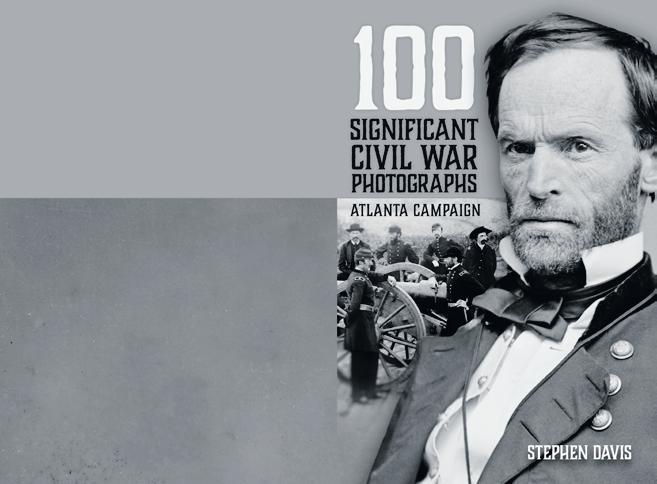
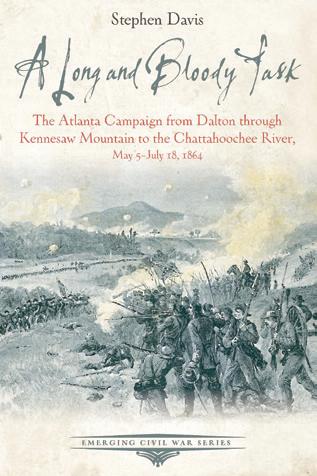
40 Civil War News September 2019
Send your book(s) for review to: CWN Book Review Editor, Stephen Davis 3670 Falling Leaf Lane, Cumming, GA 30041-2087
404.735.8447 • SteveATL1861@yahoo.com Programs for Civil War Round Tables and Historical Societies The American Civil War was the first war which both sides widely used entrenchments, repeating rifles, ironclad warships, and telegraphed communications. wasalsothefirstAmericanWartobeextensivelyphotographed. Mathew Brady, Alexander Gardner and Timothy O’Sullivan are famous havingmadeiconicphotographsintheCivilWar’seasterntheater. George N. Barnard deserves to be ranked in this top tier his photographic work the western theater. A civilian photographer hired by Gen. William T. Sherman’s chief engineer to take pictures of fortifications around Atlanta, Barnard took several hundred of them in and around the city in the fall of 1864. His most famous is the site of Union Maj. Gen. James B. McPherson’s death in the battle of Atlanta, July 22, 1864.Thusfar,nocomprehensive,definitivelistinghasbeenmadeofthephotographer’s The Library of Congress has 130 images; the U. Military Academy at West Point, New York, has at least 98 photographs, donated by Captain Poe’s widow. Otherrepositories,suchastheGilderLehrmanInstituteofAmericanHistoryin NewYorkCity,havesmallercollections. For this book we have chosen hundred images we deem “significant,” though otherstudentsmaywonderatsomeofourselections. We hope that this work will stimulate further interest in Barnardiana,andthatotherscholarlyvolumesareyettocome. The Atlanta Campaign STEPHEN DAVIS 100 SIGNIFICANT CIVIL WAR PHOTOGRAPHS ATLANTA CAMPAIGN Stephen Davis Cumming, Ga. • Lecturer • Author • Course Instructor “Ask anyone who’s heard me.” For speaking engagements call or email:
A Giant of a Book
Mobile, Alabama
1. Mobile was founded in 1711 by settlers from what European country?
2. This fort, at the tip of a peninsula on the eastern side of the entrance to Mobile Bay, was named for an American Revolutionary hero, Daniel ______.
3. In the battle of Mobile Bay, Aug. 5, 1864, ranking Confederate naval officer was this admiral, who had commanded the C.S.S. Virginia at Hampton Roads on March 8, 1862, until wounded in the leg. Who?
4. “Damn the _____! Four bells! Captain Drayton, go ahead!” was the Union commander’s famous order during the battle of August 5. What did he damn?
5. Guarding the entrance to Mobile Bay was this large, brick-casemated fort on the tip of Dauphin Island on the west side of the bay. It was named after this career U.S. army officer who is buried in Mobile.
6. Against eighteen Federal
warships, the Confederates at Mobile Bay had four: the Gaines, Morgan, Selma, and this huge ironclad, named for which state?
7. “Naval history records few contests between forces so unequal in ships, guns and men, and but few in which the weaker party displayed equal heroism.” This was written about the naval battle in Mobile Bay by the Confederate Secretary of the Navy. What was his name?
8. Termed the last major battle of the Civil War was the Union assault, Apr. 9, 1865, against this Confederate fort east of Mobile. Which?
9. Who was the Union naval commander in the naval battle of Mobile Bay?
10. ….and what was the name of his flagship in the battle?
Answers found on page 46.
Steve Davis is the Civil War News Book Review Editor. He can be contacted by email at: SteveATL1861@yahoo.com.
Military Images magazine
A Campaign of Giants: The Battle for Petersburg, Vol. 1—From the Crossing of the James to the Crater. By A. Wilson Greene. Maps, notes, bibliography, index, 720 pp., 2018. University of North Carolina Press, www.uncpress.org. $45 cloth.
Reviewed by Chris Mackowski
“[E]ven the most dedicated students of the American Civil War had an imperfect understanding of those 292 days during which the war’s best-known armies grappled over possession of Virginia’s second-largest city,” he writes.
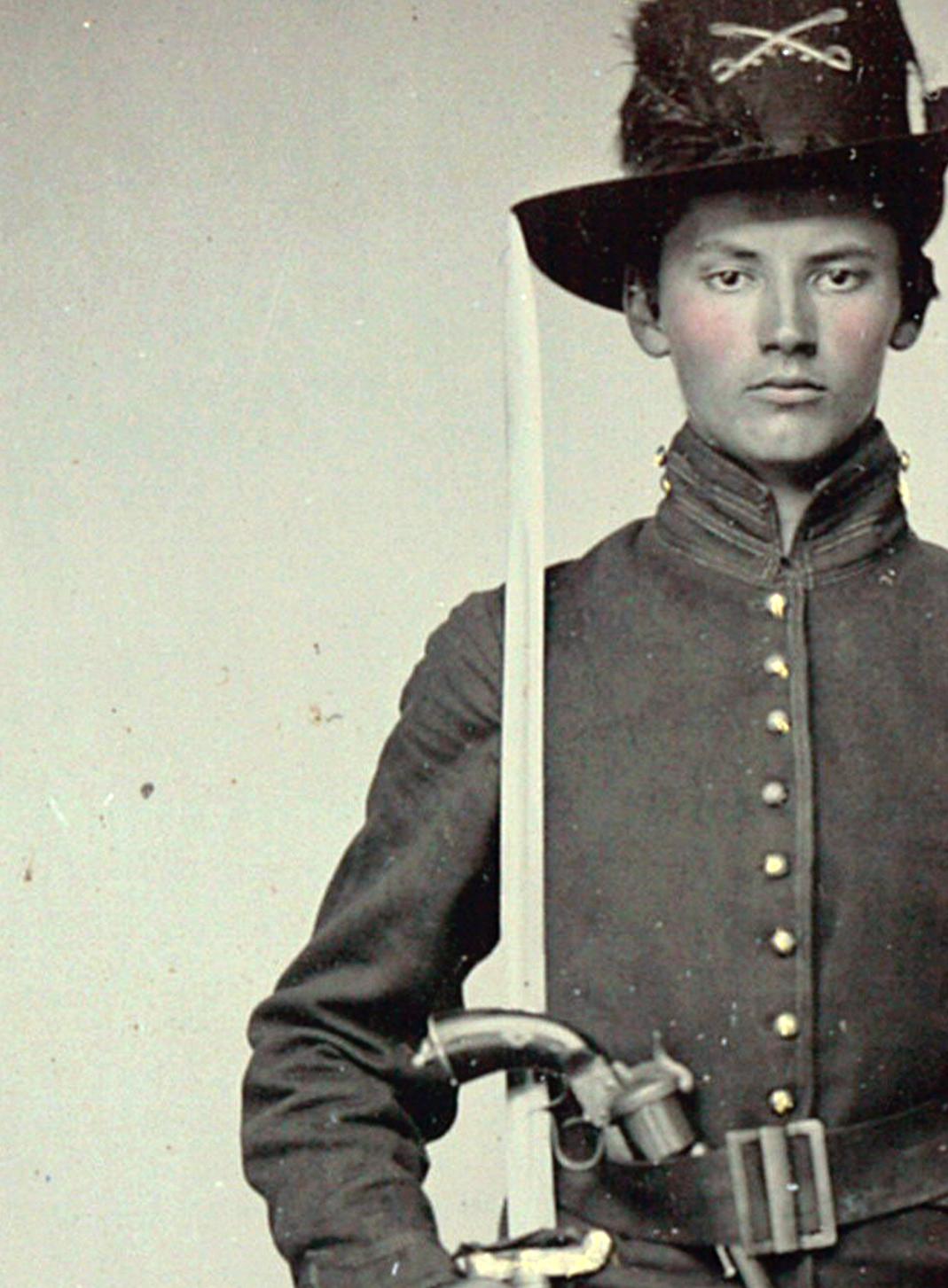
Greene’s book successfully balances the wide strategic context and narrower operational aspects of the campaign with the in-thetrenches perspective of common soldiers on both sides. We spend time with the “giants,” Ulysses S. Grant and Robert E. Lee, but we spend as much time seeing the soldiers’-eye view, usually far more limited but much more illustrative.
at Harris Farm in Spotsylvania on May 18. At Petersburg, the Heavies had the unfortunate distinction of being the regiment with the highest single-loss of any unit on any battlefield during the entire war: 632 of the 900 men fell as casualties during their June 18 assault. “You aught to have seen us kill them,” one Alabamian boasted.
The Federal and Confederate armies hunkered down in the trenches around Petersburg for 292 days in 1864, locked in a siege that would lead to final victory for the North and defeat for the South.
It has taken me nearly that long to get this review written of A. Wilson Greene’s A Campaign of Giants: The Battle for Petersburg, Vol. 1—From the Crossing of the James to the Crater.
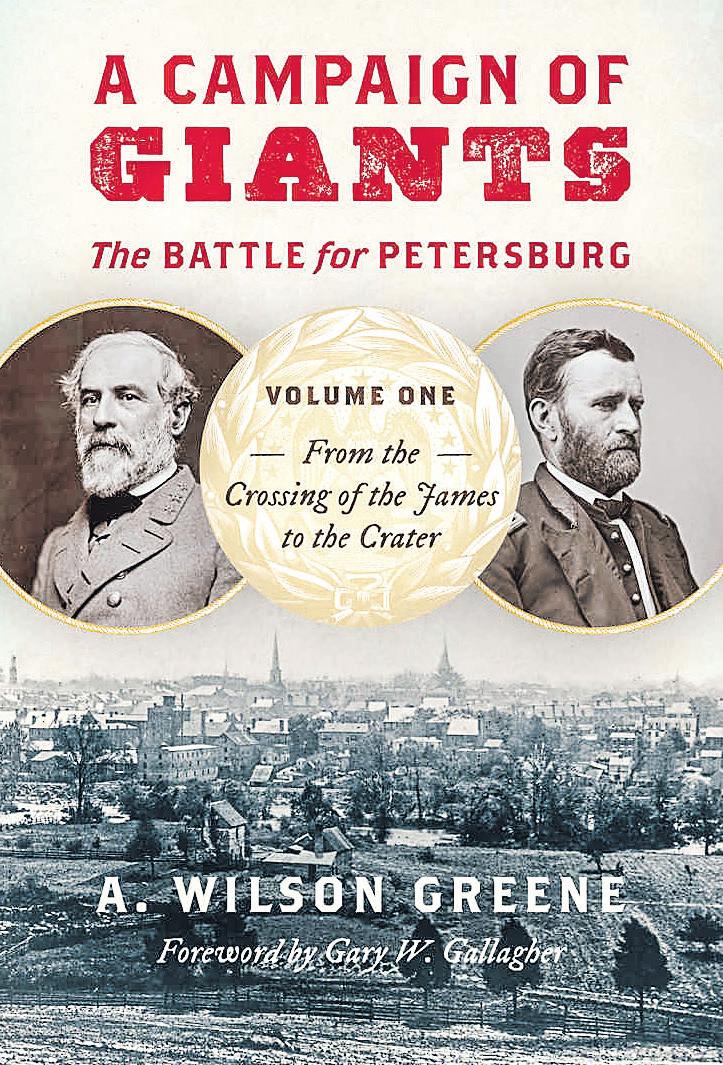
The fault rests not with Mr. Greene but with myself—unless one were to blame Greene for writing an epic so extraordinary in its scope, depth, and analysis. This was a book to be pored over, studied, savored, and best of all, enjoyed—military history as it’s meant to be written. I took my time with A Campaign of Giants because the book deserves—demands—it, and I am much richer for it.
And this is only part one! A Campaign of Giants is the first of three planned volumes, although Greene says in his introduction that he’s “under no illusion that my work is definitive.”
I, for one, think he’s being modest. Greene worked and lived on the Petersburg battlefields for more than twenty-five years. That hands-on, intimate perspective and lived experience have made him the foremost authority on the battle. Admittedly, he says, the company is small because Petersburg gets the short shrift from most students of the war.
“The first six weeks of the Petersburg Campaign feature a number of controversies that have intrigued scholars and readers for generations,” Greene adds, specifically laying out “[i]ssues such as Robert E. Lee’s measured response to the Union army’s crossing of the James River, the failure of the Federals to exploit their success on June 15, 1864, the futility of Grant’s First Offensive despite the Federals’ overwhelming numerical superiority, and the preparation for and conduct of the Battle of the Crater....”
He tackles each of these in turn, balancing a wealth of information and evidence against his crisp narrative. He never loses the action even as he makes his case, providing readers with a through-thread that brings both the action and the analysis into sharper focus. Adding additional clarity are Edward Alexander’s excellent maps. Alexander formerly worked for Greene at Pamplin Historical Park, allowing them to communicate often about their shared knowledge of the ground—a partnership that resulted in excellent cartography.
Like so many others, I’m woefully undereducated about Petersburg beyond the highlights offered in the National Battlefield’s driving tour and the excellent interpretation offered by Pamplin. If I know anything about the battle beyond that, it’s the experience of the 1st Maine Heavy Artillery. The men of the regiment came from areas back in Maine I know well, and the regiment had its baptism of fire
Greene’s account of the attack lets us do just that, or as nearly so as a book can. In this one spot where I knew a little bit about the action, I could see Greene’s experienced hand conveying the action deftly, deeply, and in detail. He knew his stuff, and here, in this one spot at least, I knew he knew his stuff. I figured Greene would bring his A-game to this book but, wow, did he bring his A-game. A Campaign of Giants has that same eye for detail, storytelling, and accuracy in its entirety. It is a marvel.
Greene has not only helped me better understand events at Petersburg but, more important, better appreciate their importance. It’s a mistake to think of Petersburg as a big, monolithic one-size-fits all thing but, rather, an evolving series of events that leads to the slow unwinding of the Confederacy.
Not that we’d know that without the benefit of historical hindsight. At the end of A Campaign of Giants, Grant is vexed by his loss at the Crater, which he called “the saddest affair I have witnessed in the war.” “[T]he question in my mind,” writes a Massachusetts soldier, “is Grant going to raise the siege and fall back a whipped man.”
It is a fitting closing thought for Greene to end his book with—because, after all, this is only the end of volume one. In the historical moment, the end of the Petersburg Campaign looks anything but inevitable, and it is a credit to Greene’s storytelling that he leaves us wanting more.
Chris Mackowski is the editor in chief of Emerging Civil War (www. emergingcivilwar.com).
41 September 2019
News
Civil War
Deadlines for Advertising or Editorial Submissions is the 20th of each month. Email to ads@civilwarnews.com
MI
MilitaryImagesMagazine.com | Facebook.com/MilitaryImages Since 1979, MI has been America’s only publication dedicated to historic photographs of soldiers and sailors. By check payable to: Military Images PO Box 50171 Arlington, VA 22205 Online: MilitaryImagesMagazine.com SUBSCRIBE NOW 4 quarterly issues, $24.95 Want to try before you subscribe? Visit MI’s website to sign up for a 2 issue trial. TRIAL ISSUES Subscribe at CivilWarNews.com
A Southerner in the Union Army Pays a Price
The War Criminal’s Son: The Civil War Saga of William A. Winder. By Jane Singer. Illustrations, notes, bibliography, index, 275 pages, 2019. Potomac Books, potomacbooksinc.com. $29.95 hardcover.
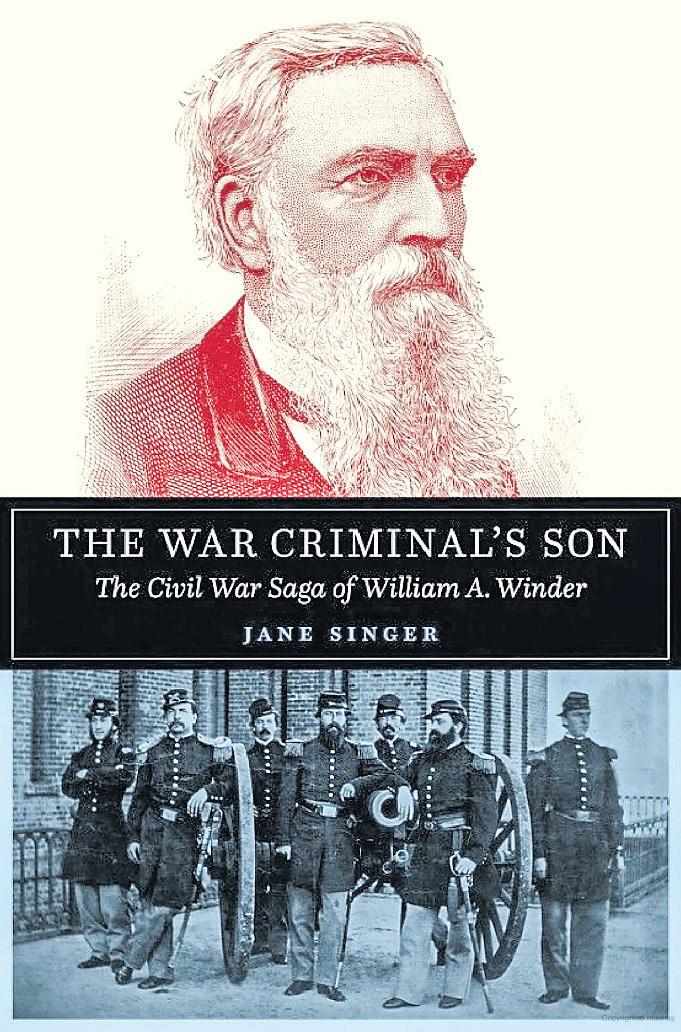
Reviewed by Robert S. Davis
presence of the younger Winder. Singer writes in a complex way that draws the reader along, while avoiding trying to say too much when too little information survives.
Some Southerners did remain in the Union, such as John Meck Cuyler, James Moore Wayne, and General George H. Thomas, but that topic does not find a place here. Robert E. Lee had to make that decision and a study of the inclusion of the influence of wives would make interesting reading. (Winder’s wife was the daughter of the Republican governor of New Hampshire.)
Statistical Look at a Union Army
American forces at Bladensburg in 1814, leading to the subsequent British capture of Washington.
Lincoln’s Secretary of War Edwin Stanton posed the question of how could the Federal government trust a Southerner who would fight against his home and family. Then Allan Pinkerton’s spy network, searching out Southern sympathizers, caught Winder allegedly voicing support for the South’s cause.
The Army of the Cumberland: Organization, Strength, Casualties, 1862–1865. By Darrell L. Collins. Notes, appendices, bibliography, index, 193 pp., 2019. McFarland, www.mcfarlandpub.com. $49.95 softcover.

Reviewed by Christopher
L. Kolakowski
Brigadier General John H. Winder, commander of the Confederate prisons east of the Mississippi River and commandant of Camp Sumter (the notorious Andersonville prison), died by natural causes on February 6, 1865. Consequently, Captain Henry Wirz, a mid-level bureaucrat, went to the gallows instead of Winder as a scapegoat for the horrors of Andersonville. According to historian Jane Singer, however, Winder’s death “was only the beginning of the descent of the Winder name into perpetual infamy and irretrievable darkness.”
In The War Criminal’s Son, Singer tells the story of Captain William Andrew Winder, John’s son who remained in the Federal army despite his family’s support for the Confederate States of America. Questions about his political sympathies followed him for the rest of his life. The book includes background on such topics as Andersonville, Civil War California, and Allan Pinkerton’s spies.
As with Singer’s Confederate Dirty War and Lincoln’s Secret Spy, the author writes in a humanistic style that allows the reader to feel both the times and the
William A. Winder lived an improbable life. Failing six times to get an appointment to the United States Military Academy, he received a commission of second lieutenant for bravery as a civilian at the battle of Buena Vista in the war with Mexico. In 1853, on the ill-fated San Francisco, he became a hero, saving lives while contending with a hurricane and cholera victims.
Winder eventually served across the continent from Maine to Florida and west to Missouri and California. He also became an artist and a physician, as well as having a major role in the classic California novel Ramona. Winder long pleaded for help for the Indians and, despite advanced age and ailments, spent his last years as agent for the Rosebud Reservation in South Dakota.
Winder found himself a victim of circumstance. Aside from his father and other close relatives in the Southern army, William’s grandfather William Henry Winder gained notoriety as the scapegoat for the defeat of the
Other Winders found themselves in custody on charges of conspiracy and treason against the United States, including even William’s eighty-four-year-old grandmother.
William A. Winder returned to California after failing to obtain a position in the war in the east. He found that the fears for state security also followed him back to the military prison at Alcatraz, where he served. Most of the book follows Winder in Civil War California, including his involvement in the C. J. Chapman and the Sutlej affairs. Whatever Winder did, however, always drew suspicions because of his family ties to the Confederacy. After he retired from the army, he struggled financially, tried to salvage his reputation in spite of being a Winder, and promoted San Diego.
The War Criminal’s Son thus serves as a history of this prominent Maryland border state family in the Civil War.
Professor Davis manages, at Wallace State College, Hanceville, AL, a center for Civil War research. He has authored several books including Ghosts and Shadows of Andersonville.
New Civil War Artillery Book
Civil War News publisher, Jack W. Melton Jr., is proud to announce his new 392 page, full-color book, Civil War Artillery Projectiles – The Half Shell Book. For more information and how to order visit the website www.ArtillerymanMagazine.com or call 800-777-1862.

$89.95 + $8 media mail for the standard edition shown here. The limited edition deluxe edition is $125 + $8 media mail. Order online at www. ArtillerymanMagazine.com
The Army of the Cumberland (and its predecessor, the Army of the Ohio) was the second-largest Federal field army in the Civil War, exceeded in size only by the Army of the Potomac. It participated in some of the war’s most crucial battles at Shiloh, Perryville, Stones River, Chickamauga, Chattanooga, the Atlanta Campaign, Franklin and Nashville. It was incubator for leaders such as Don Carlos Buell, William S. Rosecrans, George H. Thomas, John M. Schofield, Philip H. Sheridan and Arthur MacArthur, among many others.
Many fine histories have been written about the Army of the Cumberland’s battles, and more are on the way. Darrell Collins
takes a different approach, looking at the army from a statistical and organizational standpoint. After a short introduction he starts on the data. The first section charts the army’s evolving order of battle, starting September 30, 1861, and tracking units until the summer of 1865. A second section covers strengths over the same period, while a third and final section outlines casualties for all the major engagements of the army.
Readers will also find information on the Department/Army of the Ohio, which the force was called before late 1862. The organization section also demonstrates something often overlooked in histories, namely that the army had garrison responsibilities over wide parts of Tennessee throughout its existence. Collins also follows the Army of the Cumberland units (XIV and XX Corps) that formed the Army of Georgia, which with the Army of the Tennessee participated in the March to the Sea and the Carolinas Campaign— something not usually included in discussions of the Army of the Cumberland after September 1864.
That said, the book does have some flaws. First, despite the title 1862–1865, there are entries for 1861, which may cause confusion. The author’s coverage of the Army of the Cumberland’s Tennessee-based units in 1865 is quite limited. He appears not to have consulted sources beyond the Official Records. Typographical errors sometimes appear, and the formatting makes the data seem crunched together. But these limitations ultimately do not cancel out the book’s overall usefulness.
Collins’ work shines additional light on an army that needs more attention. He has done what he set out to do, which was compile a handy one-volume statistical reference of this army and its organization. It is not recommended as anything more.
Chris Kolakowski works as a historian in Norfolk, Virginia. He is the author of four books on the American Civil War and World War II, and is a contributor to the Emerging Civil War blog.
42 Civil War News September 2019 Subscribe online at CivilWarNews.com
Civil War Artillery Projectiles –The Half Shell Book cover.
Subscribe at CivilWarNews.com
“This Infernal War”: The Civil War Letters of William and Jane Standard. Edited by Timothy Mason Roberts. Endnotes, bibliography, index, photos, 376 pp., 2018. Kent State University Press, www. KentStateUniversityPress.com, $34.95 cloth.

Reviewed by Gould Hagler
letters between the farm and the front, right? Maybe in an ideal world, but the letters we read in “This Infernal War” contain no lofty words of encouragement, no noble expressions of patriotism, no reticence to voice complaints or to dwell on the hardships of war. Jane and Will did not live in an ideal world; they were not ideal people; and Pap was not an ideal father-in-law. This large collection of letters, capably edited by Western Illinois University’s Timothy Mason Roberts, pulls back a curtain on a very real world, at times a vulgar and grubby one, a world inhabited by an unenthusiastic middle-aged soldier and his weary and troubled wife, a man and a woman who have a little interest in saving the Union but none whatsoever in freeing the slaves.
The letters also paint a portrait of their community in the Little Egypt section of southern Illinois. Will was not the only reluctant soldier. At one point Jane writes of armed resistance to efforts to capture deserters sheltering in Fulton County. In another letter she tells of a vehement argument between her father (a Republican) and another local man, a Democrat whose views are aligned with the Standards’. Pap and his one-time friend nearly came to blows.
Letters by 17-Year-Old Officer Give New Insight into Experiences of Civil War Soldiers
This Will Make a Man of Me: The Life and Letters of a Teenage Officer in the Civil War. Edited by James M. Scythes. Photos, notes, bibliography, index, 2016, 181 pp. Lehigh University Press, www.rowman. com. $90 hardcover, $42.99 paperback.
 Reviewed
Reviewed
by
Noah F. Crawford
essay on chivalry and the noble nature of death on a battlefield before the Civil War began. Scythes argues that Howell joined the Union army both from a desire to financially support his family and to pass from boyhood into manhood. Through his family’s political connections, Howell received a commission in February 1862, just four months after his seventeenth birthday.
My dearest Will, Without you life is difficult and we miss you terribly, but we are managing with the help of our family, our neighbors, and our merciful and powerful God. Your fine young sons have cheerfully taken on the duties of men; your daughter too is a constant help; I am now a farmer rather than a farmer’s wife and have managed to harvest the crop, tend to the livestock, and make sure the family is fed, clothed, shod and sheltered. We are proud of you and will continue to get by until you return in victory. I am forever your loving and faithful wife, Jane
Dearest Jane, Your letters are a constant source of comfort in this trying time. I look forward to better days when I am with you and the children, but for now I have an even higher duty. Soldiering is not pleasant but my brave comrades and I endure the hardships willingly. Our country has called us in her hour of need; we have answered and will be steadfast til our work is done. Your loving husband, Will
P.S. Please thank your dear father for his kind and generous help. I know Pap does not want or expect re-payment, but I intend to do so as soon as I am able.
Just what you expect to see in
William and Jane Standard were Illinois farmers, both with roots in the South. They were Democrats and Copperheads to boot. They loathed Lincoln and they loathed Lincoln’s war. Why did Will volunteer? At his age, 40, he surely could have avoided service with no dishonor. He was “sensitive to his reputation in the community,” the editor speculates, plus he was in debt and sought to postpone the day of reckoning. From the tone of the letters I judge the second motive to be the stronger one.
Will signed up in August 1862, served as a sergeant in the 103rd Illinois Infantry, and at the end of the war was promoted to lieutenant. The regiment saw relatively little action until Missionary Ridge in November 1863, then campaigned with Sherman to Atlanta, on to the sea, and through the Carolinas. Will’s letters are mostly about camp life, foraging, hopes for furloughs, complaints about delinquent pay and constant plans to get out of the army, by one means or another. Will is often ambivalent about his service. Should he try for a promotion and get better pay? Should he seek a commission in a black regiment, and get even better pay? Or should he desert, sell out, and leave Illinois for California?
Jane writes in detail about the crops, the livestock, tenants, boarders, high prices and creditors. We learn of her dismay when she discovers that Will left behind some serious debts. He hadn’t told her before he went a-soldiering, and was less than forthcoming when she confronted him via the post.
Jane and Will were not highly educated people, but neither were they unschooled. Will, in fact, had once been a schoolteacher. Both were facile with pen and ink, and were able to write clearly and expressively. The numerous letters are a rich source of information about a soldier’s life, the civilian community he left, the army community he joined, and the attitudes he and others held about the war, politics, Lincoln, blacks, Black Republicans, secessionists and much else besides. The letters are also a very good read.
One final item, if the book review editor will permit after this already over-long review. Your English teacher would have been apoplectic had you turned in a paper with the grammar and spelling employed by the Standards. However, for anyone interested in linguistics, their writing provides insights about how people of their class and region used the American language in the middle of the 19th century. In her first letter to Will, the month after he signed up, Jane wrote:
I wish you was here to eat supper with us. I am in the parlr a-writing at the big table. Almira is over to the Worley’s. George and Perry is off a-playing somewhere, I do not know where. Freeman is upstairs as usual a-squealing and thumping around.
What they had to say makes
“This Infernal War” worth reading. So does the way they said it.
Gould Hagler is a retired lobbyist living in Dunwoody, Ga. He is a past president of the Civil War Round Table of Atlanta and the author Georgia’s Confederate Monuments: In Honor of a Fallen Nation, published by Mercer University Press in 2014. Hagler speaks frequently on this topic and others related to different aspects of the Civil War and has been a regular contributor to CWN since 2016. He can be reached at gould.hagler@gmail.com.
Although estimates of the number of boys who enlisted in Civil War armies before their eighteenth birthday vary widely, most agree that tens of thousands of these young men filled Union and Confederate regiments. Such youths most frequently fought as enlisted men. Herein lies the value of 2nd Lieutenant Thomas James Howell’s wartime letters. This Will Make a Man of Me presents the sixty-five letters of a seventeen-year-old lieutenant in the 3rd New Jersey Infantry from February through June 1862. Howell’s correspondence, capably edited and annotated by James M. Scythes, provides readers with unique insight into the experiences and motivations of a teenage officer in the Union army.
In the book’s introduction, Scythes cites Benjamin Gould’s 1869 study of soldiers’ ages to show that Howell represents one of only perhaps a dozen commissioned officers under the age of eighteen. Howell was born in Camden, N.J., in 1844, into a large and prominent family. His father—an outspoken abolitionist and devout Christian—died in 1859. He was classically educated at a local school, where he achieved proficiency in the French language and on the piano. Forebodingly, he wrote an
After joining the 3rd New Jersey in Virginia, he began a frequent correspondence with several members of his family. The majority of these letters reveal that Howell fought primarily to prove himself a man to both his family and his comrades.
In his effort to live up to the ideals of a “Christian gentleman,” Howell repeatedly expressed disgust with the officers of his regiment who swore, smoked, and drank freely. Such vices, Scythes notes, “were to be avoided by an honorable gentleman.” Howell’s letters reveal a young man’s yearning for approval from both his men and his superiors—but never at the expense of his own morality and honor. Alcohol, he wrote, “is a bad thing. And which prove the ruin of a great number.”
Howell described the voyage from northern Virginia down the Chesapeake Bay to the Union lines outside of Yorktown, where he first encountered the brutal realities of combat in the form of wounded men being brought back to hospitals. There he heard rumors of Confederates’ slaves murdering a helpless Federal soldier as he begged for quarter. The “black Rebels called y’all the d—n Northerners, and they shot the Zouave dead on the spot,” he wrote. Howell opined that the only punishment for such an enemy was to “shoot them like dogs.”
The 3rd New Jersey participated in the Army of the Potomac’s plodding campaign towards Richmond in the spring of 1862, and Howell’s letters belie the confidence of his youth. He predicted that the Confederates would evacuate Richmond as they had done at Yorktown and optimistically hoped that he would be home for the Fourth of July. General George B. McClellan reviewed Howell’s brigade in May “amid the most tremendous cheering I ever heard. . . . I could
43 September 2019 Civil War News H Man of Me . . . . . . . . . . . see page 44
“I am almost out of heart. Everything goes wrong. I want you to come home.”
have touched his horse with my hand.” As the campaign dragged on, Howell’s letters began to reflect a yearning for his home and family: “if I am spared through the coming battle,” he wrote, “I shall resign.” Howell penned what would be his final letter on the night of June 26. The following day, he was killed in his very first battle at Gaines’ Mill.


Howell is an atypical and fascinating study for his age, rank, beliefs, motivations and education. While his fervency to prove his worth as a man was common among young soldiers during the war, his affluence and eloquence separate his letters from other Northern narratives. This Will Make a Man of Me is a valuable source for any student of the war seeking a new and unique perspective from one of the Union’s youngest commissioned officers.
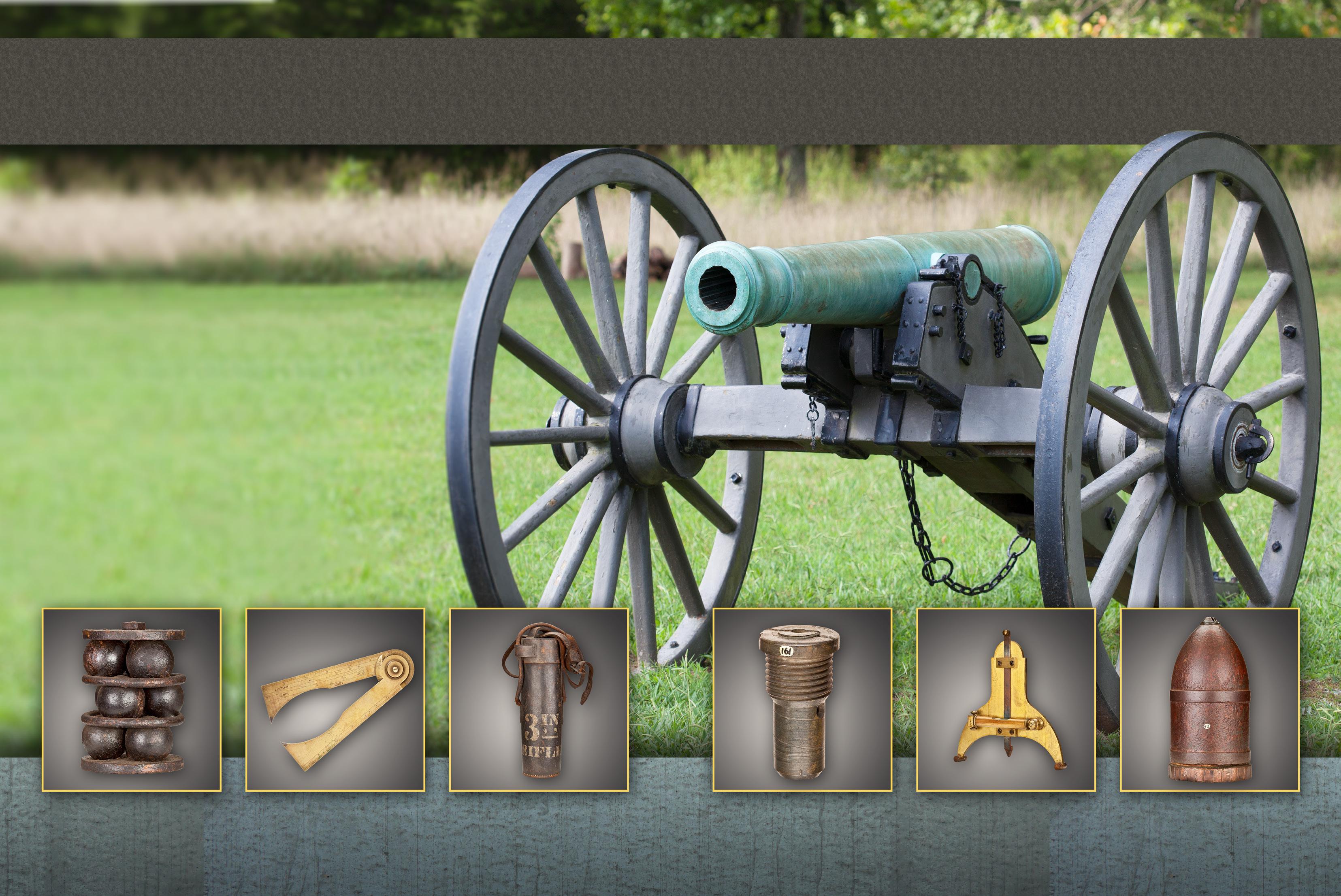
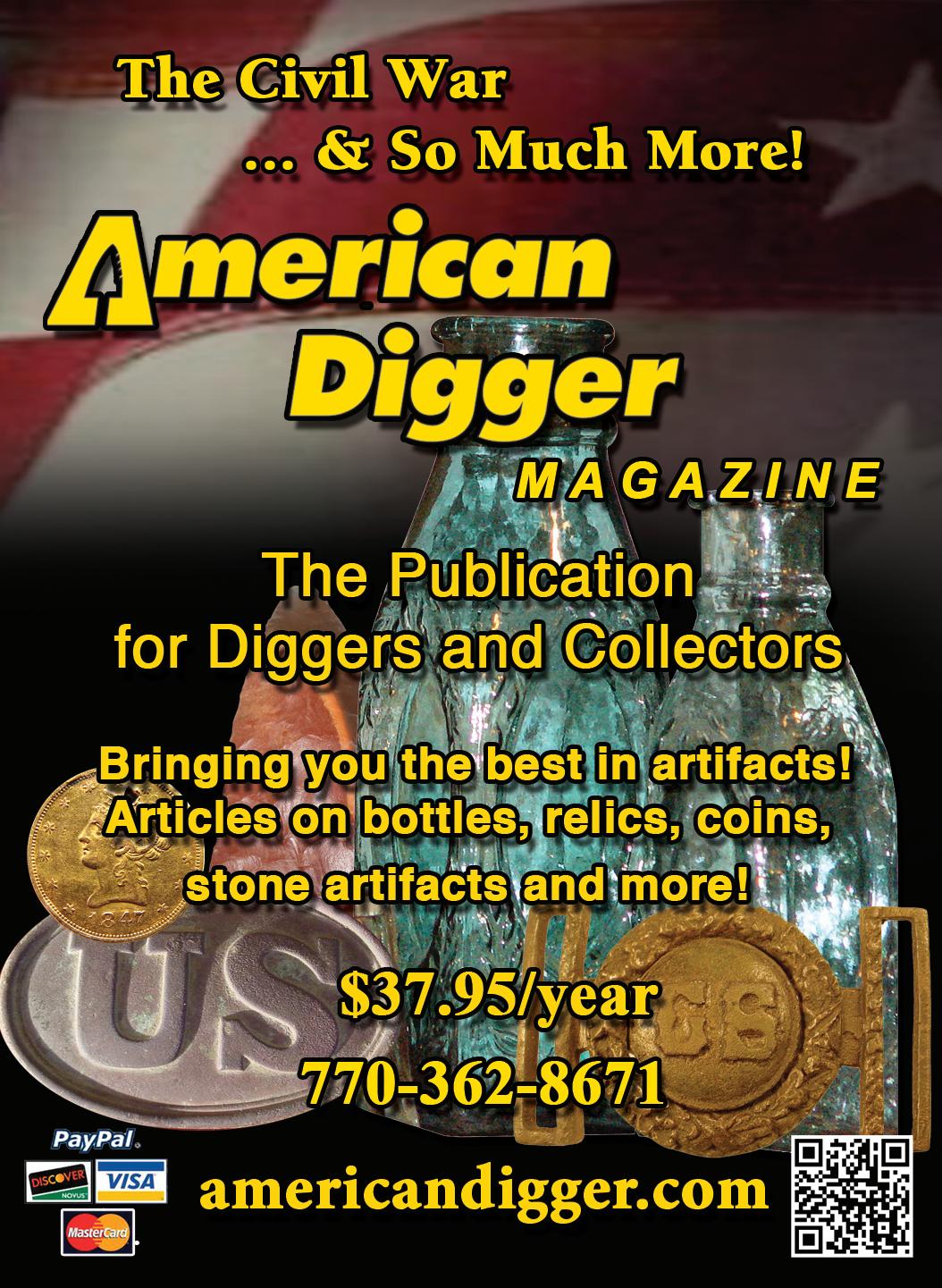



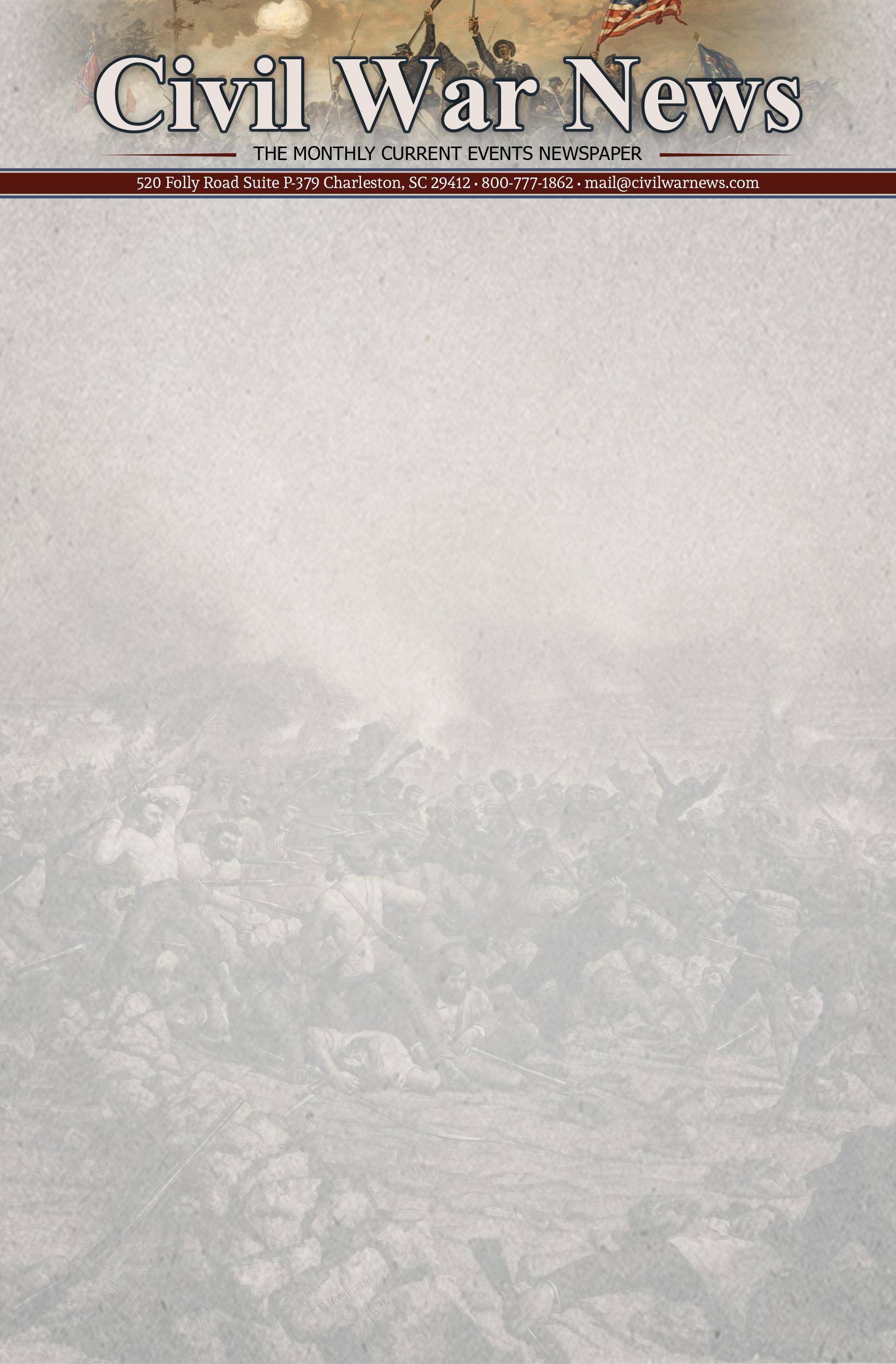
Noah F. Crawford graduated from Christopher Newport University in 2019 with degrees in American Studies and History. He is currently pursuing an M.A. in history at Virginia Tech.
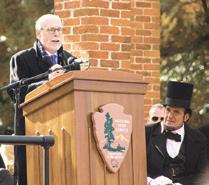
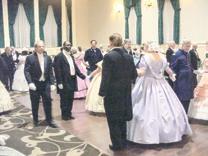



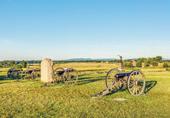

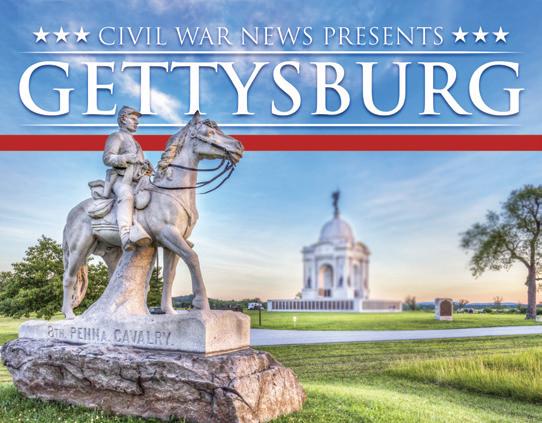
44 Civil War News September 2019 H Man of Me . . . . . . . . . . from page 43 Historical Publications, LLC Civil War News • 800-777-1862 520 Folly Road, Suite 25 PMB 379 Charleston, SC 29412 www.CIVILWARNEWS.com UP-TO-DATE COVERAGE • PRESERVATION NEWS • BOOK REVIEWS SHOWS, LIVING HISTORY AND REENACTMENTS • HISTORICAL ARTICLES MONTHLY COLUMNS • CALENDAR OF EVENTS STAY INFORMED! Only $38.50/One Year • $66.00/ Two Years THE MONTHLY CURRENT EVENTS NEWSPAPER -FORCIVIL WAR ENTHUSIASTS SINCE 1974 12 ISSUES PER YEAR PRINT & DIGITAL EDITIONS AVAILABLE CALL OR SUBSCRIBE ONLINE TODAY! 2018 CW N 44, $3.50 America’s Monthly Newspaper For War Enthusiasts Wa acres states! Culpeper Virginia. Friend Civil War Trust’s Path to Preservation CW N No. Pages, Civil War News America’s Newspaper Enthusiasts Holzer Dancingsee Inside this issue: GETTYSBURG, town industryaround spirits. might placesmore where then departedplace McClellan’s now nursed woundedwoman ballroom. believe these banquet eraroomRemembrance andPenn., Karen beenDay, photographs themeantime, please dancers ball. Dancing the Night Away at the Gettysburg Hotel Poretsky guides Lincoln Scholar Harold Holzer’s Oration at the 154th Anniversary of the Gettysburg Address Gettysburg spot—in Washington—standsclutchingbecauseAmerican “unvemen something great oday, politically the kneeling theDespite endure, suchwithoutcontroversy—the roiling remember Gettysburg who mightgallery,uments:and secessionwhenequal—remained coming—in asspeech own, other statues Lincoln
INSIDE EVERY ISSUE
Buying, Selling and Brokering Jack Melton 520 Folly Rd, Suite 25 PMB 379 Charleston, SC 29412 jack@jackmelton.com 843-696-6385 Let me help connect you with a buyer or seller. I specialize in cannon, projectiles, fuses and wrenches, implements, sights, gunner’s equipment, tools, and other artillery related equipment. From single items to collections. Finders Fees Paid. Purveyor of Original Artillery Items
Before making plans to attend any event contact the event host.
Deadlines for Advertising, Editorial or Events
Submissions is the 20th of each month.
We strive to add all events submitted to us but do not guarantee that your event will be published. There is a 100 word maximum for each event. Email events to: ads@civilwarnews.com
Aug. 31 & Sept. 1, New York. Reenactment
Civil War Reenactment at Museum Village, 1010 State Route 17M, Monroe, NY 10950. Looking for reenactors. Application is available at www. museumvillage.org. For information; Contact Christine Egan, 845-782-8248, ext. 5.
Sept. 10, New Jersey. Lecture
The history of “The Pennsylvania Reserves” is recounted in a free PowerPoint presentation titled, “Following the Ghost of Corporal George Garman.” Garman’s great-great-grandson, Joseph F. Wilson, will offer the program at 7 p.m. on the Blackwood campus of Camden County College in the Civic Hall. Garman was a member of the 7th Pa. Reserves. Free parking. For information; joef21@aol.com.
Sept. 14-15, Virginia. Reenactment
Waynesboro At War: A Civil War Weekend will be held at Coyer Springs Park: 2091 Lyndhurst Rd, Waynesboro, Va. Experience living history along with battle scenarios at 2 p.m. each day. A Civil War dance social will be held Sat. 7-9 p.m. For information; 540-949-5259, email: waynesboroatwar@ gmail.com or www.waynesboroatwar.com.
Civil War News
Sept. 21-22, Pennsylvania. Fall Farm Skirmish
Historic Daniel Lady Farm, 1008 Hanover St. Gettysburg, Pa. Saturday, 10 a.m. – 4 p.m., Sunday, 10 a.m. – 4 p.m. In honor of its 60th Anniversary, the Gettysburg Battlefield Preservation Association will host a live action and living history program that will include Confederate and Union encampments and skirmishing on the hallowed ground of the Historic Daniel Lady Farm in Gettysburg. Over 500 reenactors will present the Battle of Antietam’s “Bloody Lane” along with a cavalry reenactment and other clashes during the two-day program. Adults: $15 for a one-day pass and $25 for a two-day pass. Children 15 and under free. Includes tours of the historic Daniel Lady farmhouse and barn. For information, www.gbpa.org. Email: events@gbpa.org.
Sept. 28, Pennsylvania. Ride for Monument Preservation
Soldier’s Grove, Pennsylvania Capitol Building East Wing. The 19th Annual Ride for the Monuments from Harrisburg to Gettysburg is sponsored by the Alliance of Bikers Aimed Toward Education (A.B.A.T.E.). It supports the Pennsylvania Gettysburg Monuments Trust for maintenance and upkeep of more than 140 monuments and markers on the battlefield that memorialize the actions of Pennsylvania troops. A portion also benefits upkeep of the Gettysburg Battlefield Preservation Association’s Historic Daniel Lady Farm. Registration begins at 11 a.m. outside the State Capitol Building’s East Wing. Welcoming ceremony: 12:15 p.m. Ride departure: 1 p.m. Open to all interested riders. Rain or shine. Registration $10. For information, www.gbpa.org and www.abatepa.org.
Sept. 29, Illinois. Civil War Show and Sale
Zurko Promotions presents The National Civil War Collectors Fall Show and Sale which will be held at the DuPage County Fairgrounds in Wheaton. Hours: 9 a.m. to 4 p.m. Admission is $9 – includes admission to the CADA Collector Arms Dealers Assoc. Show. For information; www.chicagocivilwarshow.com.
Oct. 4-6, Virginia. Period Firearms Competition
The North-South Skirmish Association 140th National Competition near Winchester. Over 3,000 uniformed competitors in 200-member units compete in live-fire matches with muskets, carbines, revolvers, mortars and cannon plus costume competitions and historical lectures. The largest Civil War live-fire event in the country. Free admission, large sutler area, and food service. For information; www.n-ssa.org.
Oct. 12-14, Pennsylvania. Annual Meade Society Fall Trip
“The Civil War in Western Pa.” Highlights include narrated river cruise; tour of Soldiers & Sailors Hall; Allegheny Cemetery; Pa. Trolley Museum, G.A.R. post and library in Carnegie and more. $375 per person, dbl. occupancy; includes motor coach, 2 nights lodging w/breakfast, river cruise, one lunch, two dinners, snacks and beverages. For information; 215-848-7753 or gedwinmc@msn.com.
Oct. 17, Massachusetts. CWRT Annual Jubilee Dinner
Olde Colony Civil War Round Table’s annual Jubilee Dinner at “Four Points by Sheraton Norwood, 1125 Boston Providence Turnpike, Norwood, MA.” Featuring the Hon. Frank J. Williams speaking on “U.S. Grant as a Hero.” Info/tickets: call Bob Hearsey at 781-828-3183.
Oct. 23-27, Pennsylvania. Guerillas, Partisans and Raiders
Featuring Martin West, Kevin Pawlak, Michael Hardy, Ted Alexander, Steve French and others based in Chambersburg, Pa. Special guest, award-winning author and historian Brian Steele Wills will also join us. We will examine irregular warfare through the ages from the Romans to present. Tours will include McCausland’s Raid, the Johnston/Gilmore Baltimore Raid, Mosby’s Confederacy and McNeil’s raids against the B&O Railroad. Talks also given by the historians listed above. The full itinerary & pricing available on www.CivilWarSeminars.org.
Oct. 26-17, Alabama. Skirmish
Alabama’s oldest active working farm, Old Baker Farm is located approximately 25 minutes south on Hwy. 280 from Birmingham in Harpersville. All branches invited. Firewood, hay, water and powder for Artillery provided. Sutlers welcome. For information; Jimmy White, alabamabattery@yahoo.com, 1174 Curt Jarrett Rd., Ashville, AL 35953.
Nov. 8-9, Pennsylvania. Licensed Battlefield Guides of Gettysburg Fall Seminar

“Gone, But Not Forgotten,” a visit to locations, landmarks, and areas that used to be on the Battlefield, but are no longer there. Join us Fri. at 6:30 p.m. at The Gettysburg Heritage Center, 297 Steinwehr Ave. for welcome reception with snacks & beverages. At 7 p.m., LBG Dave Weaver will conduct a presentation of WWI at Gettysburg. On Sat. we meet at 8 A.M. at the Hilton Garden Inn, 1061 York Road, for a light breakfast before tours beginning at 8:30 a.m., 10:30 a.m., 1 p.m. and 3 p.m. Lunch will be held at HGI’s Garden Grill at noon. Final wrap-up will be held at 4:30 p.m. at The General’s Ballroom at HGI. The cost for this seminar will be $125 per person which includes the five programs, snacks, light breakfast, lunch, and transportation. For more information and reservations: https:// gettysburgtourguides.org/2019-fall-seminar/.
Nov. 23, Pennsylvania. Remembrance Day in Gettysburg
General Meade & his Generals and the veterans of the Battle of Gettysburg Honor/Dedication Ceremonies during the Remembrance Day Observance. Honoring all commanders and veterans of the Battle. Meet at the General Meade Equestrian Monument at 10:30 a.m. For information; Jerry McCormick, 215-848-7753 or gedwinmc@msn.com for info.
Nov. 16-17, Virginia. Civil War Show and Sale
MK Shows presents the “Original Richmond” Capital of the Confederacy Civil War Show for collectors and history enthusiasts. There are hundreds of dealers with tables filled with books, authentic artifacts, guns, swords, uniform gear, images, artillery, belt buckles, buttons, and other accoutrements. Located at the Richmond International Raceway, 600 E. Laburnum Ave. Free parking. Over 350 tables. Adults $10, Children under 12 are free. Sat. 9-5 and Sun. 9-3. For information; www.MKShows.com or mike@mkshows.com.
Dec. 7-8, Tennessee. Civil War Show and Sale
MK Shows presents the 32nd Annual Middle Tennessee Civil War Show and Sale at the Williamson County Ag Expo Park, 4215 Long Lane in Franklin. The nation’s largest Civil War show, featuring 1,000 tables of antique
45
September 2019
e Artilleryman is a quarterly magazine founded in 1979 for enthusiasts who collect and shoot cannons and mortars primarily from the Revolutionary War, Civil War to World War II. Now expanded and fully illustrated in rich color throughout the entire magazine. 520 Folly Road, Suite 25 PMB 379, Charleston, SC 29412 • 800-777-1862 • mail@artillerymanmagazine.com www.ArtillerymanMagazine.com The Artilleryman Magazine FOUR INCREDIBLE ISSUES A YEAR
weapons, artifacts and memorabilia from top dealers and collectors around the country and encompassing all eras of military history from the Revolutionary War through World War II. Appraisers are always on hand to help you identify and value your military collectibles at no cost. Hours are 9-5 on Saturday, 9-3 on Sunday, parking is free and admission is only $10/adults and children 12 and under are free. For more information; www.MKShows.com or Mike@MKShows.com.

Dec. 31, Pennsylvania. Annual General Meade Birthday Celebration
Mark the annual anniversary of the birth of General George G. Meade, heroic commander of the victorious Union army at the Battle of Gettysburg. The General Meade Society of Philadelphia will celebrate at Historic Laurel Hill Cemetery, 3822 Ridge Ave. at 12 p.m. Champagne toast and reception will follow. For information; 215-228-8200 Laurel Hill Cemetery.
Small Talk Trivia
Answers
1. France, under Pierre LeMoyne, Sieur d’Iberville (Arthur W. Bergeron, Jr., Confederate Mobile [Jackson, MS, 1991], 3).
2. Daniel Morgan (1736–1802), Virginia Continental officer and victor at the battle of Cowpens, S.C., January 1781 (Chester G. Hearn, Mobile Bay and the Mobile Campaign: The Last Great Battles of the Civil War [Jefferson, NC, 1993], 41).
3. Franklin Buchanan (1800–1874) (Craig L. Symonds, Confederate Admiral: The Life and Wars of Franklin Buchanan [Annapolis, MD, 1999], xv-xvi, 168).
4. “…torpedoes!” (Hearn, Mobile Bay, 91). Civil War torpedoes were floating powder containers attached to a chain and anchor. During the war 43 Union vessels were sunk or damaged by Confederate torpedoes. Among these are counted the Housatonic, victim of the C.S.S. H. L. Hunley, at Charleston Harbor, Feb. 17, 1864. In the battle of Mobile Bay, the monitor Tecumseh was sunk by a torpedo (Milton F. Perry, Infernal Machines: The Story of Confederate Submarines and Mine Warfare [Baton Rouge, LA, 1965], 199-201).
5. Fort Gaines, named for Virginia-born Edmund P. Gaines (1777–1844) (Zed H. Burns, Confederate Forts [Natchez, MS, 1977], 96).
6. The C.S.S. Tennessee. In mid-1863 she began to be built at the Selma navy yard, with iron plate cast at Atlanta and cannon cast at the Selma Naval Gun Foundry and Ordnance Works. Carrying six 6.4-inch and two 7-inch rifles, the huge ship was propelled by engines that could only move her slowly (Maurice Melton, The Confederate Ironclads [New York, 1968], 205, 209). Map of the naval battle, naming the eighteen U.S. and four C.S. vessels is in Jack Friend, West Wind, Flood Tide: The Battle of Mobile Bay [Annapolis, MD, 2004], 220).
7. Stephen Russell Mallory (ca. 1811–1873). Mallory was born in Trinidad before birth records began to be made. Biographer Joseph T. Durkin guesses 1810 or 1811 (Confederate Navy Chief: Stephen R. Mallory [Columbia, SC, 1987 (1954)], 10n.). Another suggests 1813 (Rodman L. Underwood, Stephen Russell Mallory: A Biography of the Confederate Navy Secretary and United States Senator [Jefferson, NC, 2005], 5). The quote comes from Emory Thomas’ article on Mobile Bay in Civil War Times Illustrated, April 1977, p. 45.
8. Fort Blakeley. Around the fort Confederates planted a large number of sub-terra shells (land mines). “We had quite a number killed by torpedoes,” wrote a Connecticut artillerist (Paul Brueske, The Last Siege: The Mobile Campaign [Philadelphia, PA, 2018], 124). The fort is sometimes spelled Blakely, but Brueske includes photographs taken at Historic Blakeley State Park.
l9. David Glasgow Farragut (1801-1870), who in July 1866 became “the first full admiral in the United States Navy” (Chester G. Hearn, Admiral David Glasgow Farragut: The Civil War Years [Annapolis, MD, 1998], 309).
November
Chickamauga
GA 30655
10. The U.S.S. Hartford. The 2900-ton screw sloop was launched in November 1858. She sank at berth in Norfolk Navy Yard in 1956 (Tony Gibbons, Warships and Naval Battles of the Civil War [New York, 1989], 163).

46 Civil War News September 2019 Digital Issues of CWN are available by subscription alone or with print plus CWN archives at CivilWarNews.com Digital Issues of CWN are available by subscription alone or with print plus CWN archives at CivilWarNews.com
SEPT.
1,000’s of Civil War Treasures! Plus! Revolutionary War • Spanish-American War Indian Wars • Mountain Men • Bowie Knife Antique Arms • Fur Traders • World Wars I & II Promoters of Quality Shows for Shooters, Collectors, Civil War and Militaria Enthusiasts Military Collectible & Gun & Knife Shows Mike Kent and Associates, LLC • PO Box 685 • Monroe,
(770) 630-7296 • Mike@MKShows.com • www.MKShows.com
1 & 2, 2020
28, 2019
February
(Dalton) Civil War Show
l16 & 17, 2019 Capital of the Confederacy Civil War Show (original dates)
7 & 8, 2019
TN (Franklin) Civil War Show
December
Middle
- 2 year USA Print & Digital
- 1 year Digital only
Terms and Conditions
The following terms and conditions shall be incorporated by reference into all placement and order for placement of any advertisements in Civil War News by Advertiser and any Agency acting on Advertiser’s behalf. By submitting an order for placement of an advertisement and/or by placing an advertisement, Advertiser and Agency, and each of them, agree to be bound by all of the following terms and conditions:
1. All advertisements are subject to acceptance by Publisher who has the right to refuse any ad submitted for any reason.
2. The advertiser and/or their agency warrant that they have permission and rights to anything contained within the advertisement as to copyrights, trademarks or registrations. Any infringement will be the responsibility of the advertiser or their agency and the advertiser will hold harmless the Publisher for any claims or damages from publishing their advertisement. This includes all attorney fees and judgments.
3. The Publisher will not be held responsible for incorrect placement of the advertisement and will not be responsible for any loss of income or potential profit lost.
4. All orders to place advertisements in the publication are subject to the rate card charges, space units and specifications then in effect, all of which are subject to change and shall be made a part of these terms and conditions.
5. Photographs or images sent for publication must be high resolution, unedited and full size. Phone photographs are discouraged.
6. At the discretion of Civil War News any and all articles will be edited for accuracy, clarity, grammar and punctuation per our style guide.
7. Articles can be emailed as a Word Doc attachment or emailed in the body of the message. Microsoft Word format is preferred. Email articles and photographs: mail@civilwarnews.com

47 September 2019 Civil War News Publishers: Please send your book(s) for review to: CWN Book Review Editor, Stephen Davis 3670 Falling Leaf Lane • Cumming, GA 30041-2087 Email cover image to bookreviews@civilwarnews.com Civil War News cannot assure that unsolicited books will be assigned for review. We donate unsolicited, unreviewed books to libraries, historical societies and other suitable repositories Advertisers In This Issue: 100 Significant Civil War Photographs – Atlanta 29 Ace Pyro LLC 24 American Digger Magazine 44 Artilleryman Magazine 45 Brian & Maria Green 2 C.S. Acquisitions 19 Civil War Artillery – The Half Shell Book 21 CWMedals.com, Civil War Recreations 36 Civil War Navy Magazine 35 Civil War Shop – Will Gorges 5 College Hill Arsenal – Tim Prince 22 Dell’s Leather Works 10 Dixie Gun Works Inc. 19 Fugawee.com 4 Georgia’s Confederate Monuments – Book 26 Gettysburg Foundation 5 Greg Ton Currency 29 Gunsight Antiques 19 Harpers Ferry Civil War Guns 5 Historic Surratt House Museum 15 The Horse Soldier 11 Jack Melton 44 James Country Mercantile 5 Jeweler’s Daughter 11 Jessica Hack Textile Restoration 11 Le Juneau Gallery 9 Mike Brackin 14 Military Images Magazine 41 National Museum of Civil War Medicine 27 N-SSA 4 Old South Antiques 16 Panther Lodges 4 The Regimental Quartermaster 5 Richard LaPosta Civil War Books 37 Stephen Davis – Author 39, 40 Suppliers to the Confederacy – Book, Craig Barry 10 Ulysses S. Grant impersonator – Curt Fields 25 University of Oklahoma Press 2 University of Tennessee Press 16 Vin Caponi Historic Antiques 8 Events: MKShows, Mike Kent 3, 46 Poulin Auctions 48 Rock Island Auction Company 6 Battle of Bristoe Station 24 Chicagoland’s National Civil War Show 46
c c c c c c Charge my: Discover MasterCard Visa NAME ADDRESS ADDRESS CITY STATE ZIP CODE EMAIL $38.50
year USA Print $48.50
Digital $66
$86
$29.95
Payment Enclosed Check # Card # Exp. Date Security Code Name on Card New Renewal c Make checks payable to Historical Publications LLC. c c c c Civil War News – 12 Issues Per Year Subscription/Renewal Form PHONE Email (required for digital subscription) USA Subscriptions Only No Canada or International Mail to: Historical Publications LLC 520 Folly Road, Suite 25 PMB 379, Charleston, SC 29412 Deadlines for Advertising or Editorial Submissions is the 20th of each month. Email to ads@civilwarnews.com Subscribe online www.CivilWarNews.com Mike@MKShows.com • www.MKShows.com Admission Coupon To Any MKShows Event $1 Off 770-630-7296
- 1
- 1 year USA Print &
- 2 year USA Print
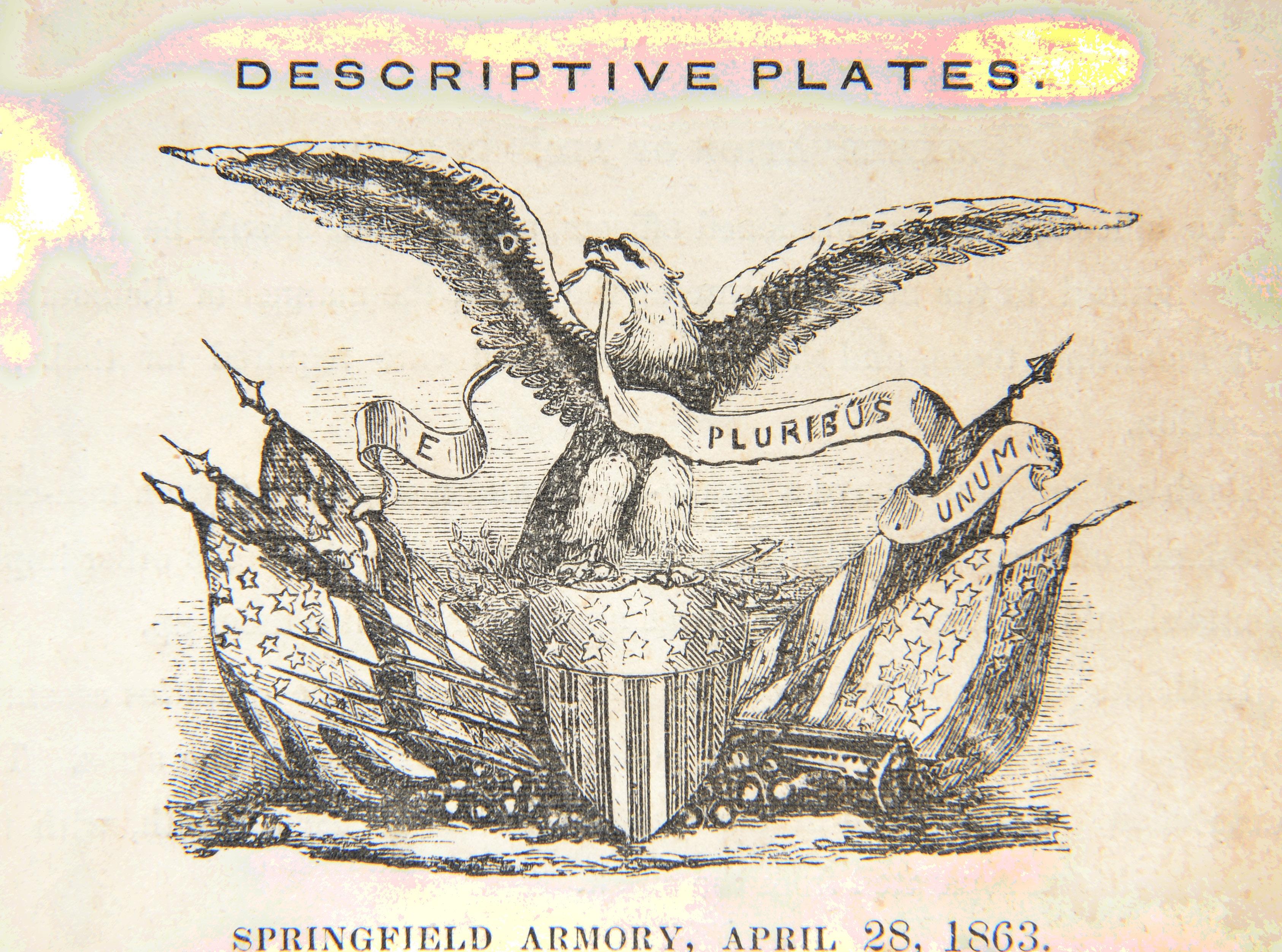



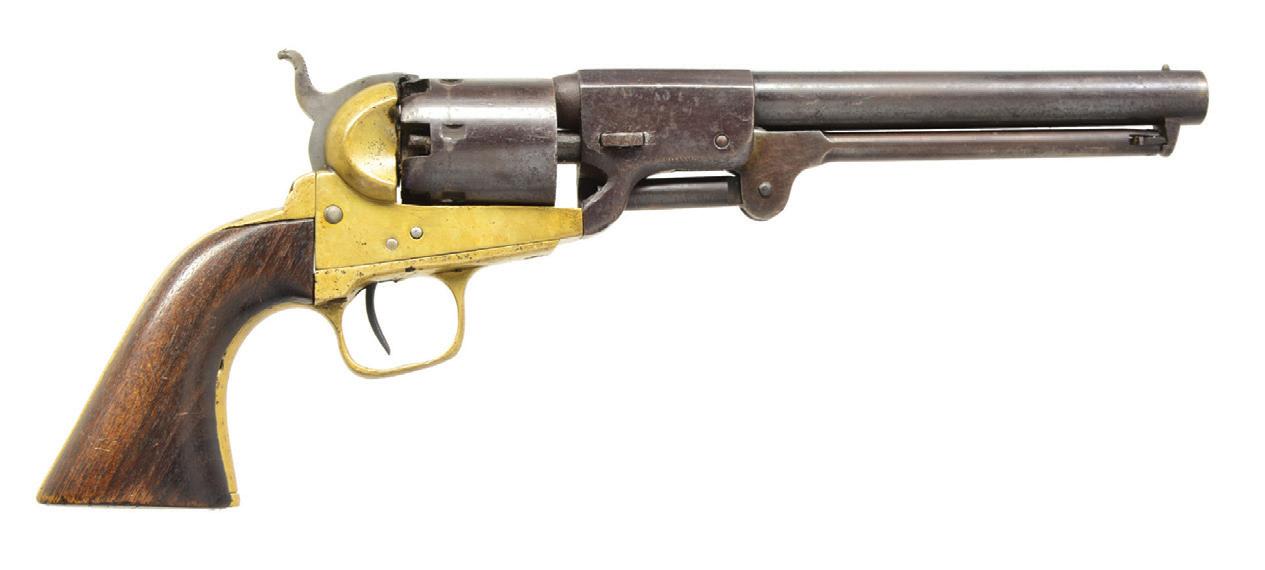


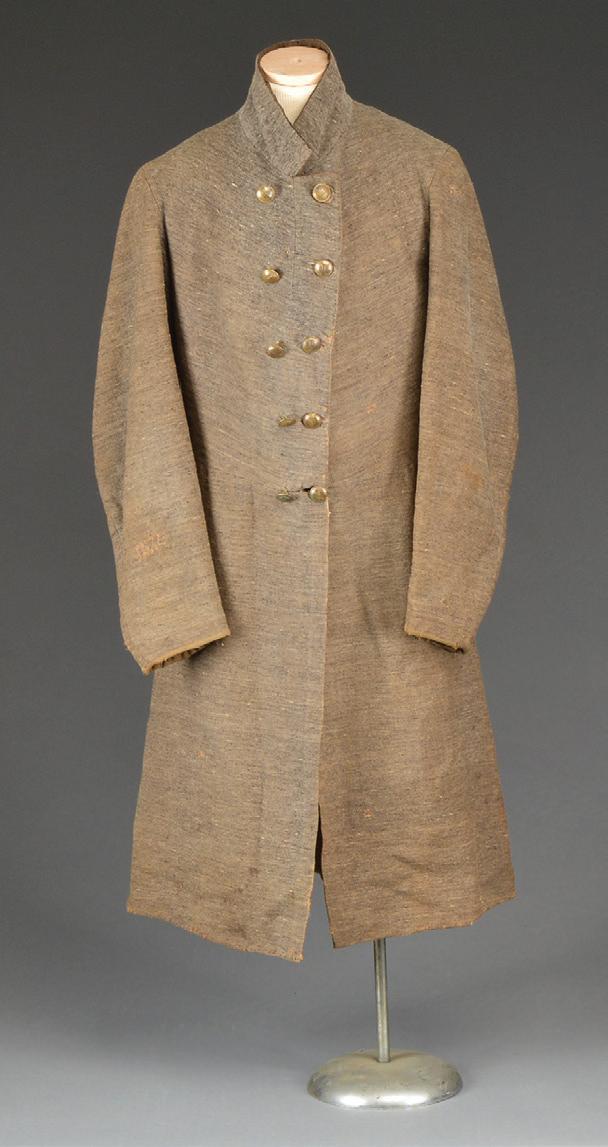
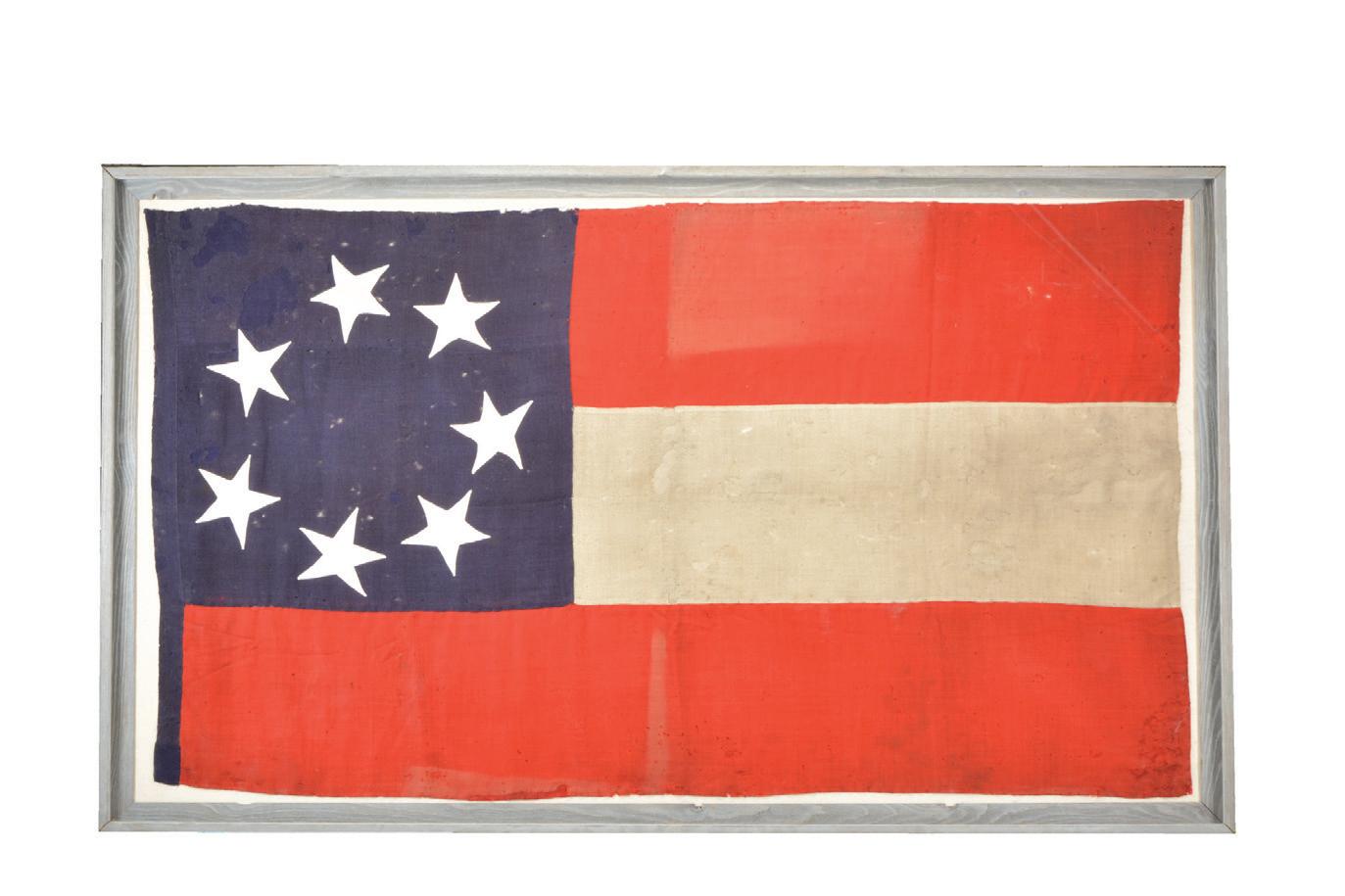







Firearms & Militaria Auctioneers Premier Firearms & Militaria Auction civilwar@poulinauctions.com | poulinauctions.com | 199 Skowhegan Rd | Fairfield, ME 04937 | 207-453-2114 October 18, 19 & 20, 2019 | Fairfield, Maine Preview: October 16 & 17 & Mornings of Auction Here is a small sample of items already consigned to our Fall Auction. Entire catalog will be available on our website www.poulinauctions.com; Bid In-House, Online, Absentee or Phone John Sexton Civil War Sales Coordinator and Civil War Cataloger
Confederate 7-Star First National Flag Rare Confederate KG&K, Columbia, SC “Wade Hampton Style” Cavalry Officer’s Saber Very Fine Confederate Keen-Walker Breechloading Brass Frame Percussion Carbine Very Fine Rare 2nd Model Brass Frame Confederate Morse Breech Loading Carbine Made In Greenville, SC Rare J. P. Murray, Columbus Georgia Percussion Carbine Fine Confederate Government Model “Sharps” Breechloading Percussion Carbine Fine Confederate S. C. Robinson Breechloading “Sharps” Percussion Carbine Fine Cook & Brother Athens Georgia Confederate Percussion Carbine Among the Very Finest of All Griswold Revolvers Confederate Non-Regulation Homespun Officer’s Infantry Frock Coat Captured at Wildcat Gap Stephen Poulin, ME Lic # 1115
Magnificent
Cased Presentation Sword of Gettysburg Hero General Alpheus
Williams
















































































































































































































 — Chris Mackowski, Ph.D. Editor-in-Chief, Emerging Civil War
— Chris Mackowski, Ph.D. Editor-in-Chief, Emerging Civil War











 Reviewed
Reviewed


















 Reviewed
Reviewed

































